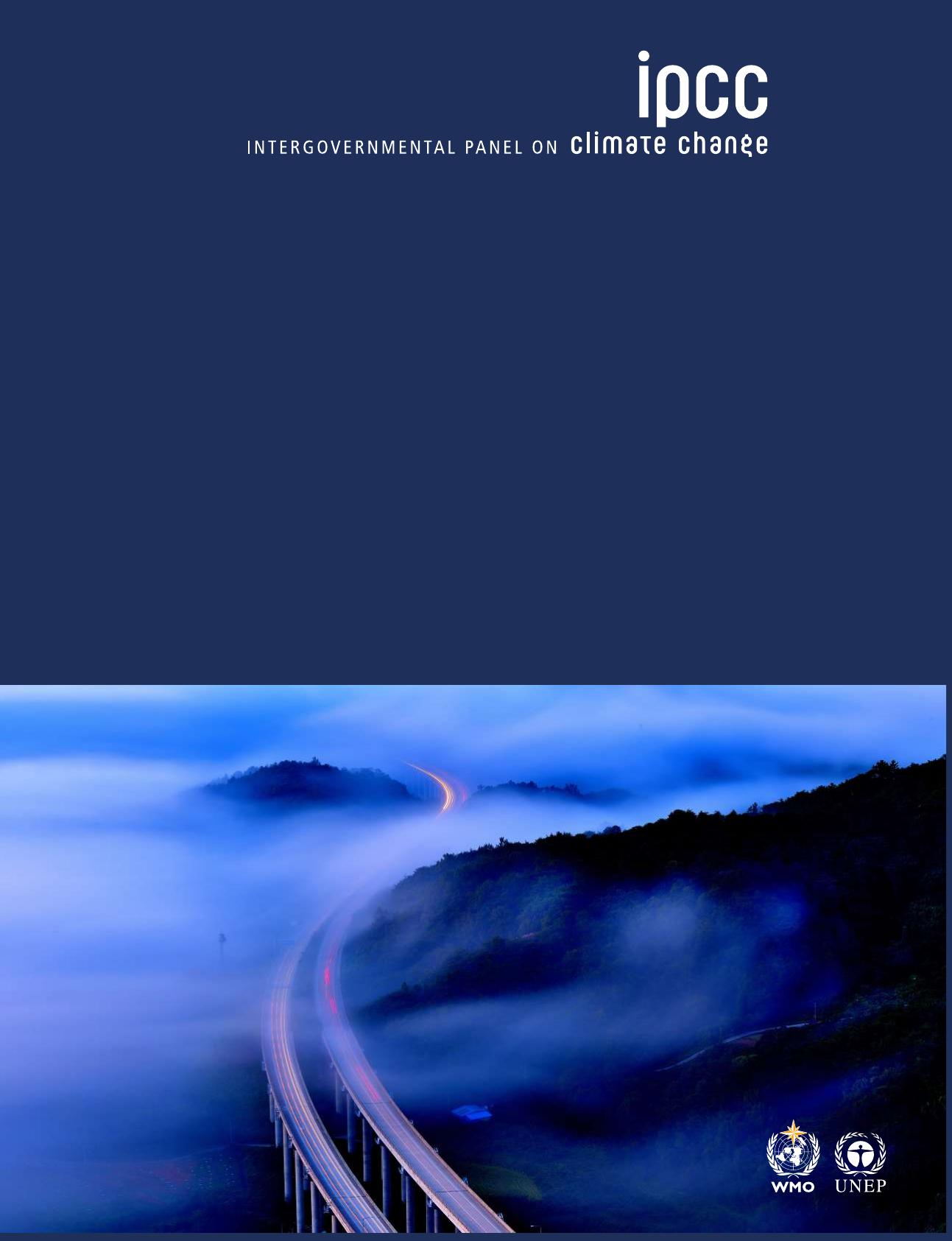1CLIMATECHANGE2023SynthesisReportAReportoftheIntergovernmentalPanelonClimateChangeCLIMATECHANGE2023SynthesisReportHoesungLee(Chair),KatherineCalvin(USA),DipakDasgupta(India/USA),GerhardKrinner(France/Germany),AditiMukherji(India),PeterThorne(Ireland/UnitedKingdom),ChristopherTrisos(SouthAfrica),JoséRomero(Switzerland),PaulinaAldunce(Chile),KoBarrett(USA),GabrielBlanco(Argentina),WilliamW.L.Cheung(Canada),SarahL.Connors(France/UnitedKingdom),FatimaDenton(TheGambia),AïdaDiongue-Niang(Senegal),DavidDodman(Jamaica/UnitedKingdom/Netherlands),MatthiasGarschagen(Germany),OliverGeden(Germany),BronwynHayward(NewZealand),ChristopherJones(UnitedKingdom),FrankJotzo(Australia),ThelmaKrug(Brazil),RodelLasco(Philippines),June-YiLee(RepublicofKorea),ValérieMasson-Delmotte(France),MalteMeinshausen(Australia/Germany),KatjaMintenbeck(Germany),AbdalahMokssit(Morocco),FriederikeE.L.Otto(UnitedKingdom/Germany),MinalPathak(India),AnnaPirani(Italy),ElviraPoloczanska(UnitedKingdom/Australia),Hans-OttoPörtner(Germany),AromarRevi(India),DebraC.Roberts(SouthAfrica),JoyashreeRoy(India/Thailand),AlexC.Ruane(USA),JimSkea(UnitedKingdom),PriyadarshiR.Shukla(India),RaphaelSlade(UnitedKingdom),AiméeSlangen(TheNetherlands),YoubaSokona(Mali),AnnaA.Sörensson(Argentina),MelindaTignor(USA/Germany),DetlefvanVuuren(TheNetherlands),Yi-MingWei(China),HaraldWinkler(SouthAfrica),PanmaoZhai(China),ZintaZommers(Latvia)Referencingthisreport:IPCC,2023:ClimateChange2023:SynthesisReport.ContributionofWorkingGroupsI,IIandIIItotheSixthAssessmentReportoftheIntergovernmentalPanelonClimateChange[CoreWritingTeam,H.LeeandJ.Romero(eds.)].IPCC,Geneva,Switzerland,184pp.,doi:10.59327/IPCC/AR6-9789291691647.CoreWritingTeamEditedbyHoesungLeeChairmanIPCCJoséRomeroHead,TechnicalSupportUnitIPCCTheCoreWritingTeamSynthesisReportIPCCJoséRomero(Switzerland),JinmiKim(RepublicofKorea),ErikF.Haites(Canada),YonghunJung(RepublicofKorea),RobertStavins(USA),ArleneBirt(USA),MeeyoungHa(RepublicofKorea),DanJezreelA.Orendain(Philippines),LanceIgnon(USA),SeminPark(RepublicofKorea),YounginPark(RepublicofKorea)TechnicalSupportUnitfortheSynthesisReportiiTHEINTERGOVERNMENTALPANELONCLIMATECHANGE©IntergovernmentalPanelonClimateChange,2023ISBN978-92-9169-164-7Thispublicationisidenticaltothereportthatwasapproved(SummaryforPolicymakers)andadopted(longerreport)atthe58thsessionoftheIntergovernmentalPanelonClimateChange(IPCC)on19March2023inInterlaken,Switzerland,butwiththeinclusionofcopy-edits.ThedesignationsemployedandthepresentationofmaterialonmapsdonotimplytheexpressionofanyopinionwhatsoeveronthepartoftheIntergovernmentalPanelonClimateChangeconcerningthelegalstatusofanycountry,territory,cityorareaorofitsauthorities,orconcerningthedelimitationofitsfrontiersorboundaries.ThementionofspecificcompaniesorproductsdoesnotimplythattheyareendorsedorrecommendedbyIPCCinpreferencetoothersofasimilarnature,whicharenotmentionedoradvertised.Therightofpublicationinprint,electronicandanyotherformandinanylanguageisreservedbytheIPCC.Shortextractsfromthispublicationmaybereproducedwithoutauthorizationprovidedthatcompletesourceisclearlyindicated.Editorialcorrespondenceandrequeststopublish,reproduceortranslatearticlesinpartorinwholeshouldbeaddressedto:IPCCc/oWorldMeteorologicalOrganization(WMO)7bis,avenuedelaPaixTel.:+41227308208P.O.Box2300Fax:+41227308025CH1211Geneva2,SwitzerlandE-mail:IPCC-Sec@wmo.intwww.ipcc.chPaolaArias(Colombia),MercedesBustamante(Brazil),IsmailElgizouli(Sudan),GregoryFlato(Canada),MarkHowden(Australia),CarlosMéndez(Venezuela),JoyJacquelinePereira(Malaysia),RamónPichs-Madruga(Cuba),StevenKRose(USA),YaminaSaheb(Algeria/France),RobertoSánchezRodríguez(Mexico),DianaÜrge-Vorsatz(Hungary),CundeXiao(China),NoureddineYassaa(Algeria)AndrésAlegría(Germany/Honduras),KyleArmour(USA),BirgitBednar-Friedl(Austria),KornelisBlok(TheNetherlands),GuéladioCissé(Switzerland/Mauritania/France),FrankDentener(EU/Netherlands),SiriEriksen(Norway),ErichFischer(Switzerland),GregoryGarner(USA),CélineGuivarch(France),MarjolijnHaasnoot(TheNetherlands),GerritHansen(Germany),MathiasHauser(Switzerland),EdHawkins(UK),TimHermans(TheNetherlands),RobertKopp(USA),NoëmieLeprince-Ringuet(France),JaredLewis(Australia/NewZealand),DeboraLey(Mexico/Guatemala),ChloéLudden(Germany/France),LeilaNiamir(Iran/TheNetherlands/Austria),ZebedeeNicholls(Australia),ShreyaSome(India/Thailand),SophieSzopa(France),BlairTrewin(Australia),Kaj-IvarvanderWijst(TheNetherlands),GundulaWinter(TheNetherlands/Germany),MaximilianWitting(Germany)HoesungLee(Chair,IPCC),AmjadAbdulla(Maldives),EdvinAldrian(Indonesia),KoBarrett(UnitedStatesofAmerica),EduardoCalvo(Peru),CarloCarraro(Italy),DiribaKorechaDadi(Ethiopia),FatimaDriouech(Morocco),AndreasFischlin(Switzerland),JanFuglestvedt(Norway),ThelmaKrug(Brazil),NagmeldinG.E.Mahmoud(Sudan),ValérieMasson-Delmotte(France),CarlosMéndez(Venezuela),JoyJacquelinePereira(Malaysia),RamónPichs-Madruga(Cuba),Hans-OttoPörtner(Germany),AndyReisinger(NewZealand),DebraC.Roberts(SouthAfrica),SergeySemenov(RussianFederation),PriyadarshiShukla(India),JimSkea(UnitedKingdom),YoubaSokona(Mali),KiyotoTanabe(Japan),MuhammadIrfanTariq(Pakistan),DianaÜrge-Vorsatz(Hungary),CarolinaVera(Argentina),PiusYanda(UnitedRepublicofTanzania),NoureddineYassaa(Algeria),TahaM.Zatari(SaudiArabia),PanmaoZhai(China)ReviewEditorsContributingAuthorsScientificSteeringCommitteeArleneBirt(USA),MeeyoungHa(RepublicofKorea)VisualConceptionandInformationDesign“Fogopeningthedawn”byChungJinSilTheWeatherandClimatePhotography&VideoContest2021,KoreaMeteorologicalAdministrationhttp://www.kma.go.kr/kma©KMAPhotoReferenceCover:DesignedbyMeeyoungHa,IPCCSYRTSUJean-CharlesHourcade(France),FrancisX.Johnson(Thailand/Sweden),ShonaliPachauri(Austria/India),NicholasP.Simpson(SouthAfrica/Zimbabwe),ChandniSingh(India),AdelleThomas(Bahamas),EdmondTotin(Benin)ExtendedWritingTeamiiiForewordandPrefacevForewordForewordThisSynthesisReport(SYR)concludestheSixthAssessmentReport(AR6)oftheIntergovernmentalPanelonClimateChange(IPCC).TheSYRsynthesizesandintegratesmaterialscontainedwithinthethreeWorkingGroupsAssessmentReportsandtheSpecialReportscontributingtotheAR6.Itaddressesabroadrangeofpolicy-relevantbutpolicy-neutralquestionsapprovedbythePanel.TheSYRisthesynthesisofthemostcomprehensiveassessmentofclimatechangeundertakenthusfarbytheIPCC:ClimateChange2021:ThePhysicalScienceBasis;ClimateChange2022:Impacts,AdaptationandVulnerability;andClimateChange2022:MitigationofClimateChange.TheSYRalsodrawsonthefindingsofthreeSpecialReportscompletedaspartoftheSixthAssessment–GlobalWarmingof1.5°C(2018):anIPCCSpecialReportontheimpactsofglobalwarmingof1.5°Cabovepre-industriallevelsandrelatedglobalgreenhousegasemissionpathways,inthecontextofstrengtheningtheglobalresponsetothethreatofclimatechange,sustainabledevelopment,andeffortstoeradicatepoverty(SR1.5);ClimateChangeandLand(2019):anIPCCSpecialReportonclimatechange,desertification,landdegradation,sustainablelandmanagement,foodsecurity,andgreenhousegasfluxesinterrestrialecosystems(SRCCL);andTheOceanandCryosphereinaChangingClimate(2019)(SROCC).TheAR6SYRconfirmsthatunsustainableandunequalenergyandlanduseaswellasmorethanacenturyofburningfossilfuelshaveunequivocallycausedglobalwarming,withglobalsurfacetemperaturereaching1.1°Cabove1850–1900in2011–2020.Thishasledtowidespreadadverseimpactsandrelatedlossesanddamagestonatureandpeople.Thenationallydeterminedcontributions(NDCs)committedby2030showthetemperaturewillincreaseby1.5°Cinthefirsthalfofthe2030s,andwillmakeitverydifficulttocontroltemperatureincreaseby2.0°Ctowardstheendof21stcentury.Everyincrementofglobalwarmingwillintensifymultipleandconcurrenthazardsinallregionsoftheworld.Thereportpointsoutthatlimitinghuman-causedglobalwarmingrequiresnetzeroCO2emissions.Deep,rapid,andsustainedmitigationandacceleratedimplementationofadaptationactionsinthisdecadewouldreduceprojectedlossesanddamagesforhumansandecosystemsanddelivermanyco-benefits,especiallyforairqualityandhealth.Delayedmitigationandadaptationactionwouldlock-inhigh-emissionsinfrastructure,raiserisksofstrandedassetsandcost-escalation,reducefeasibility,andincreaselossesanddamages.Near-termactionsinvolvehighup-frontinvestmentsandpotentiallydisruptivechangesthatcanbelessenedbyarangeofenablingpolicies.Asanintergovernmentalbodyjointlyestablishedin1988bytheWorldMeteorologicalOrganization(WMO)andtheUnitedNationsEnvironmentProgramme(UNEP),theIPCChasprovidedpolicymakerswiththemostauthoritativeandobjectivescientificandtechnicalassessmentsinthisfield.Beginningin1990,thisseriesofIPCCAssessmentReports,SpecialReports,TechnicalPapers,MethodologyReports,andotherproductshavebecomestandardworksofreference.TheSYRwasmadepossiblethankstothevoluntarywork,dedicationandcommitmentofthousandsofexpertsandscientistsfromaroundtheglobe,representingarangeofviewsanddisciplines.WewouldliketoexpressourdeepgratitudetoallthemembersoftheCoreWritingTeamoftheSYR,membersoftheExtendedWritingTeam,ContributingAuthors,andtheReviewEditors,allofwhomenthusiasticallytookonthehugechallengeofproducinganoutstandingSYRontopoftheothertaskstheyhadalreadycommittedtoduringtheAR6cycle.WewouldalsoliketothankthestaffoftheTechnicalSupportUnitoftheSYRandtheIPCCSecretariatfortheirdedicationinorganizingtheproductionofthisIPCCreport.WealsowishtoacknowledgeandthankthegovernmentsoftheIPCCmembercountriesfortheirsupportofscientistsindevelopingthisreport,andfortheircontributionstotheIPCCTrustFundtoprovidetheessentialsforparticipationofexpertsfromdevelopingcountriesandcountrieswitheconomiesintransition.WewouldliketoexpressourappreciationtothegovernmentofSingaporeforhostingtheScopingMeetingoftheSYR,tothegovernmentofIrelandforhostingthethirdCoreWritingTeammeetingoftheSYR,andtothegovernmentofSwitzerlandforhostingthe58thSessionoftheIPCCwheretheSYRwasapproved.ThegenerousfinancialsupportfromthegovernmentoftheRepublicofKoreaenabledthesmoothoperationoftheTechnicalSupportUnitoftheSYR.Thisisgratefullyacknowledged.WewouldparticularlyliketoexpressourthankstotheIPCCChair,theIPCCVice-ChairsandtheCo-Chairsfortheirdedicatedworkthroughouttheproductionofthisreport.PetteriTaalasSecretary-GeneraloftheWorldMeteorologicalOrganizationIngerAndersenUnder-Secretary-GeneraloftheUnitedNationsandExecutiveDirectoroftheUNEnvironmentProgrammeForwardviiThisSynthesisReport(SYR)constitutesthefinalproductoftheSixthAssessmentReport(AR6)oftheIntergovernmentalPanelonClimateChange(IPCC).Itsummarizesthestateofknowledgeofclimatechange,itswidespreadimpactsandrisks,andclimatechangemitigationandadaptation,basedonthepeer-reviewedscientific,technical,andsocio-economicliteraturesincethepublicationoftheIPCC’sFifthAssessmentReport(AR5)in2014.ThisSYRdistills,synthesizes,andintegratesthekeyfindingsofthethreeWorkingGroupcontributions–ClimateChange2021:ThePhysicalScienceBasis;ClimateChange2022:Impacts,AdaptationandVulnerability;andClimateChange2022:MitigationofClimateChange.TheSYRalsodrawsonthefindingsofthreeSpecialReportscompletedaspartoftheSixthAssessment–GlobalWarmingof1.5°C(2018):anIPCCSpecialReportontheimpactsofglobalwarmingof1.5°Cabovepre-industriallevelsandrelatedglobalgreenhousegasemissionpathways,inthecontextofstrengtheningtheglobalresponsetothethreatofclimatechange,sustainabledevelopment,andeffortstoeradicatepoverty(SR1.5);ClimateChangeandLand(2019):anIPCCSpecialReportonclimatechange,desertification,landdegradation,sustainablelandmanagement,foodsecurity,andgreenhousegasfluxesinterrestrialecosystems(SRCCL);andTheOceanandCryosphereinaChangingClimate(2019)(SROCC).TheSYR,therefore,isacomprehensive,timelycompilationofassessmentsofthemostrecentscientific,technical,andsocio-economicliteraturedealingwithclimatechange.ScopeofthereportTheSYRisaself-containedsynthesisofthemostpolicy-relevantmaterialdrawnfromthescientific,technical,andsocio-economicliteratureassessedduringtheSixthAssessment.ThisreportintegratesthemainfindingsoftheAR6WorkingGroupreportsandthethreeAR6SpecialReports.Itrecognizestheinterdependenceofclimate,ecosystemsandbiodiversity,andhumansocieties;thevalueofdiverseformsofknowledge;andthecloselinkagesbetweenclimateadaptation,mitigation,ecosystemhealth,humanwell-being,andsustainabledevelopment.Buildingonmultipleanalyticalframeworks,includingthosefromthephysicalandsocialsciences,thisreportidentifiesopportunitiesfortransformativeactionwhichareeffective,feasible,justandequitablesystemstransitions,andclimateresilientdevelopmentpathways.Differentregionalclassificationschemesareusedforphysical,socialandeconomicaspects,reflectingtheunderlyingliterature.TheSynthesisReportemphasizesnear-termrisksandoptionsforaddressingthemtogivepolicymakersasenseoftheurgencyrequiredtoaddressglobalclimatechange.Thereportalsoprovidesimportantinsightsabouthowclimaterisksinteractwithnotonlyoneanotherbutnon-climate-relatedrisks.Itdescribestheinteractionbetweenmitigationandadaptationandhowthiscombinationcanbetterconfronttheclimatechallengeaswellasproducevaluableco-benefits.Ithighlightsthestrongconnectionbetweenequityandclimateactionandwhymoreequitablesolutionsarevitaltoaddressingclimatechange.Italsoemphasizeshowgrowingurbanizationprovidesanopportunityforambitiousclimateactiontoadvanceclimateresilientdevelopmentandsustainabledevelopmentforall.Anditunderscoreshowrestoringandprotectinglandandoceanecosystemscanbringmultiplebenefitstobiodiversityandothersocietalgoals,justasafailuretodosopresentsamajorrisktoensuringahealthyplanet.StructureTheSYRcomprisesaSummaryforPolicymakers(SPM)andalongerreportfromwhichtheSPMisderived,aswellasannexes.TofacilitateaccesstothefindingsoftheSYRforawidereadership,eachpartoftheSPMcarrieshighlightedheadlinestatements.Takentogether,these18headlinestatementsprovideanoverarchingsummaryinsimple,non-technicallanguageforeasyassimilationbyreadersfromdifferentwalksoflife.TheSPMfollowsastructureandsequencelikethatinthelongerreport,butsomeissuescoveredinmorethanonesectionofthelongerreportaresummarizedinasinglelocationintheSPM.EachparagraphoftheSPMcontainsreferencestothesupportingtextinthelongerreport.Inturn,thelongerreportcontainsextensivereferencestorelevantportionsoftheWorkingGroupReportsorSpecialReportsmentionedabove.ThelongerreportisstructuredaroundthreetopicheadingsasmandatedbythePanel.AbriefIntroduction(Section1)isfollowedbythreesections.Section2,‘CurrentStatusandTrends’,openswiththeassessmentofobservationalevidenceforourchangingclimate,historicalandcurrentdriversofhuman-inducedclimatechange,anditsimpacts.Itassessesthecurrentimplementationofadaptationandmitigationresponseoptions.Section3,‘Long-TermClimateandDevelopmentFutures’,providesanassessmentofclimatechangeto2100andbeyondinabroadrangeofsocio-economicfutures.Itconsiderslong-termimpacts,risksandcostsinadaptationandmitigationpathwaysinthecontextofsustainabledevelopment.Section4,‘Near-TermResponsesinaChangingClimate’,assessesopportunitiesforscalingupeffectiveactionintheperiodto2040,inthecontextofclimatepledges,andcommitments,andthepursuitofsustainabledevelopment.Annexescontainingaglossaryoftermsused,listofacronyms,authors,ReviewEditors,theSYRScientificSteeringCommittee,andExpertReviewerscompletethereport.PrefacePrefaceviiiProcessTheSYRwaspreparedinaccordancewiththeproceduresoftheIPCC.AscopingmeetingtodevelopadetailedoutlineoftheAR6SynthesisReportwasheldinSingaporefrom21to23October2019andtheoutlineproducedinthatmeetingwasapprovedbythePanelatthe52ndIPCCSessionfrom24to28February2020inParis,France.InaccordancewithIPCCprocedures,theIPCCChair,inconsultationwiththeCo-ChairsoftheWorkingGroups,nominatedauthorsfortheCoreWritingTeam(CWT)oftheSYR.Atotalof30CWTmembersand9ReviewEditorswereselectedandacceptedbytheIPCCBureauatits58thSessionon19May2020.IntheprocessofdevelopingtheSYR,7ExtendedWritingTeam(EWT)authorswereselectedbytheCWTandapprovedbytheChairandtheIPCCBureau,and28ContributingAuthorswereselectedbytheCWTwiththeapprovaloftheChair.TheseadditionalauthorsweretoenhanceanddeepentheexpertiserequiredforthepreparationoftheReport.TheChairestablishedatthe58thSessionoftheBureauanSYRScientificSteeringCommittee(SSC)withamandatetoadvisethedevelopmentoftheSYR.TheSYRSSCcomprisedthemembersoftheIPCCBureau,excludingthosememberswhoservedasReviewEditorsfortheSYR.Duetothecovidpandemic,thefirsttwomeetingsoftheCWTwereheldvirtuallyfrom25to29January2021andfrom16to20August2021.TheFirstOrderDraft(FOD)wasreleasedtoexpertsandgovernmentsforreviewon10January2022withcommentsdueon20March2022.TheCWTmetinDublinfrom25to28March2022todiscusshowbesttorevisetheFODtoaddressthemorethan10,000commentsreceived.TheReviewEditorsmonitoredthereviewprocesstoensurethatallcommentsreceivedappropriateconsideration.TheIPCCcirculatedafinaldraftoftheSummaryforPolicymakersandalongerreportoftheSYRtogovernmentsforreviewfrom21November2022to15January2023whichresultedinover6,000comments.AfinalSYRdraftforapprovalincorporatingthecommentsfromthefinalgovernmentdistributionwassubmittedtotheIPCCmembergovernmentson8March2023.ThePanelatits58thSession,heldfrom13to17March2023inInterlaken,Switzerland,approvedtheSPMlinebylineandadoptedthelongerreportsectionbysection.AcknowledgementsTheSYRwasmadepossiblethankstothehardworkandcommitmenttoexcellenceshownbytheSectionFacilitators,membersofCWTandEWT,andContributingAuthors.SpecificthanksareduetoSectionFacilitatorsKateCalvin,DipakDasgupta,GerhardKrinner,AditiMukherji,PeterThorne,andChristopherTrisoswhoseworkwasessentialinensuringahighstandardofthelongerreportsectionsandtheSPM.WewouldliketoexpressourappreciationtotheIPCCmembergovernments,observerorganizations,andexpertreviewersforprovidingconstructivecommentsonthedraftreports.WewouldliketothanktheReviewEditorsPaolaArias,MercedesBustamante,IsmailElgizouli,GregoryFlato,MarkHowden,StevenRose,YaminaSaheb,RobertoSánchez,andCundeXiaofortheirworkonthetreatmentofFODcomments,andGregoryFlato,CarlosMéndez,JoyJacquelinePereira,RamónPichs-Madruga,DianaÜrge-Vorsatz,andNoureddineYassaafortheirworkduringtheapprovalsession,collaboratingwithauthorteamstoensureconsistencybetweentheSPMandtheunderlyingreports.WearegratefultothemembersoftheSSCfortheirthoughtfuladviceandsupportfortheSYRthroughouttheprocess:IPCCVice-ChairsKoBarret,ThelmaKrug,andYoubaSokona;Co-ChairsofWorkingGroups(WG)andTaskForceonNationalGreenhouseGasInventories(TFI)ValérieMasson-Delmotte,PanmaoZhai,Hans-OttoPörtner,DebraRoberts,PriyadarshiR.Shukla,JimSkea,EduardoCalvoBuendía,andKiyotoTanabe;WGVice-ChairsEdvinAldrian,FatimaDriouech,JanFuglestvedt,MuhammadTariq,CarolinaVera,NoureddineYassaa,AndreasFischlin,JoyJacquelinePereira,SergeySemenov,PiusYanda,TahaM,Zatari,AmjadAbdulla,CarloCarraro,DiribaKorechaDadi,NagmeldinG.E.Mahmoud,RamónPichs-Madruga,AndyReisinger,andDianaÜrge-Vorsatz.TheIPCCVice-ChairsandWGCo-ChairsservedalsoasmembersoftheCWTandwearegratefulfortheircontributions.WewishtothanktheIPCCSecretariatfortheirguidanceandsupportfortheSYRinpreparation,releaseandpublicationoftheReport:DeputySecretaryEmiraFida,MudathirAbdallah,JesbinBaidya,LauraBiagioni,OksanaEkzarkho,JudithEwa,JoëlleFernandez,EmelieLarrode,JenniferLewSchneider,AndrejMahecic,NinaPeeva,MxolisiShongwe,MelissaWalsh,andWeraniZabula.TheirsupportforthesuccessfulSYRwastrulyoutstandingthroughouttheentireprocess.OurthanksgotoJoséRomero,HeadoftheSYRTechnicalSupportUnit(SYRTSU)andJinmiKim,DirectorofAdministration,andthemembersoftheSYRTSU,ArleneBirt,MeeyoungHa,ErikHaites,LanceIgnon,YonghunJung,DanJezreelOrendain,RobertStavins,SeminPark,andYounginParkfortheirhardworktofacilitatethedevelopmentandproductionoftheSYRwithdeepcommitmentanddedicationtoensureanoutstandingSYR.OurthanksalsogotoWoochongUmandhisteamattheAsianDevelopmentBankforfacilitationoftheSYRTSUoperation.Weextendourappreciationoftheenthusiasm,dedication,andprofessionalcontributionsofWGTSUmembersSarahConnors,ClotildePéan,andAnnaPiranifromWGI,MarliesCraig,KatjaMintenbeck,ElviraPoloczanska,MelindaTignorfromWGIIandRogerFradera,MinalPathak,RaphaelSlade,ShreyaSome,andGeninhaGabaoLisboafromWGIII,workingasateamwiththeSYRTSU,whichcontributedtothesuccessfuloutcomeoftheSession.WeareappreciativeofthemembergovernmentsoftheIPCCwhograciouslyhostedtheSYRscopingmeeting,aCWTMeetingandthe58thSessionoftheIPCC:Singapore,Ireland,andSwitzerland,respectively.WeexpressourthankstotheIPCCmembergovernments,WMO,UNEPandtheUNFCCCfortheircontributionstotheTrustFundwhichsupportedvariouselementsofexpenditure.WewishtoparticularlyPrefacePrefaceixthanktheKoreaMeteorologicalAdministration,RepublicofKoreaforitsgenerousfinancialsupportoftheSYRTSU.WeacknowledgethesupportofIPCC’sparentorganizations,UNEPandWMO,andparticularlyWMOforhostingtheIPCCSecretariat.Finally,mayweconveyourdeepgratitudetotheUNFCCCfortheircooperationatvariousstagesofthisenterpriseandfortheprominencetheygivetoourworkinseveralfora.HoesungLeeChairmanoftheIPCCAbdalahMokssitSecretaryoftheIPCCPrefacePrefacexiForeword--------------------------------------------------------------------------------------------------------------------------vPreface----------------------------------------------------------------------------------------------------------------------------viiSummaryforPolicymakers-------------------------------------------------------------------------------------------1Introduction--------------------------------------------------------------------------------------------------------------3A.CurrentStatusandTrends-----------------------------------------------------------------------------------------4BoxSPM.1Scenariosandpathways-------------------------------------------------------------------------------9B.FutureClimateChange,Risks,andLong-TermResponses-------------------------------------------------12C.ResponsesintheNearTerm-------------------------------------------------------------------------------------24ClimateChange2023-------------------------------------------------------------------------------------------------35Section1:Introduction-----------------------------------------------------------------------------------------------38Section2:CurrentStatusandTrends-----------------------------------------------------------------------------412.1ObservedChanges,ImpactsandAttribution----------------------------------------------------------------422.1.1ObservedWarminganditsCauses----------------------------------------------------------------------422.1.2ObservedClimateSystemChangesandImpactstoDate------------------------------------------462.2ResponsesUndertakentoDate--------------------------------------------------------------------------------522.2.1GlobalPolicySetting---------------------------------------------------------------------------------------522.2.2MitigationActionstoDate--------------------------------------------------------------------------------532.2.3AdaptationActionstoDate-------------------------------------------------------------------------------552.3CurrentMitigationandAdaptationActionsandPoliciesarenotSufficient-------------------------572.3.1TheGapBetweenMitigationPolicies,PledgesandPathwaysthatLimitWarmingto1.5°CorBelow2°C----------------------------------------------------------------------------------------57Cross-SectionBox.1UnderstandingNetZeroCO2andNetZeroGHGEmissions----------------------802.3.2AdaptationGapsandBarriers----------------------------------------------------------------------------612.3.3LackofFinanceasaBarriertoClimateAction-------------------------------------------------------63Cross-SectionBox.2Scenarios,GlobalWarmingLevels,andRisks-----------------------------------------63ContentsFrontmatterSPMSectionsxiiSection3:Long-TermClimateandDevelopmentFutures----------------------------------------------------673.1Long-TermClimateChange,ImpactsandRelatedRisks-------------------------------------------------683.1.1Long-termClimateChange-------------------------------------------------------------------------------683.1.2ImpactsandRelatedRisks--------------------------------------------------------------------------------713.1.3TheLikelihoodandRisksofAbruptandIrreversibleChange--------------------------------------773.2Long-termAdaptationOptionsandLimits------------------------------------------------------------------783.3MitigationPathways---------------------------------------------------------------------------------------------823.3.1RemainingCarbonBudgets-------------------------------------------------------------------------------823.3.2NetZeroEmissions:TimingandImplications---------------------------------------------------------853.3.3SectoralContributionstoMitigation--------------------------------------------------------------------863.3.4OvershootPathways:IncreasedRisksandOtherImplications-------------------------------------873.4Long-TermInteractionsBetweenAdaptation,MitigationandSustainableDevelopment-----------------883.4.1Synergiesandtrade-offs,costsandbenefits----------------------------------------------------------883.4.2AdvancingIntegratedClimateActionforSustainableDevelopment-----------------------------89Section4:Near-TermResponsesinaChangingClimate-----------------------------------------------------914.1TheTimingandUrgencyofClimateAction------------------------------------------------------------------924.2BenefitsofStrengtheningNear-TermAction---------------------------------------------------------------954.3Near-TermRisks--------------------------------------------------------------------------------------------------974.4EquityandInclusioninClimateChangeAction----------------------------------------------------------1014.5Near-TermMitigationandAdaptationActions----------------------------------------------------------1024.5.1EnergySystems--------------------------------------------------------------------------------------------1044.5.2Industry-----------------------------------------------------------------------------------------------------1044.5.3Cities,SettlementsandInfrastructure-----------------------------------------------------------------1054.5.4Land,Ocean,Food,andWater--------------------------------------------------------------------------1064.5.5HealthandNutrition--------------------------------------------------------------------------------------1064.5.6Society,Livelihoods,andEconomies------------------------------------------------------------------1074.6Co-BenefitsofAdaptationandMitigationforSustainableDevelopmentGoals------------------1084.7GovernanceandPolicyforNear-TermClimateChangeAction----------------------------------------1104.8StrengtheningtheResponse:Finance,InternationalCooperationandTechnology---------------1114.8.1FinanceforMitigationandAdaptationActions-----------------------------------------------------1114.8.2InternationalCooperationandCoordination--------------------------------------------------------1124.8.3TechnologyInnovation,Adoption,DiffusionandTransfer-----------------------------------------1134.9IntegrationofNear-TermActionsAcrossSectorsandSystems----------------------------------------114xiiiAnnexes----------------------------------------------------------------------------------------------------------------117I.Glossary--------------------------------------------------------------------------------------------------------------------119II.Acronyms,ChemicalSymbolsandScientificUnits-----------------------------------------------------------------131III.Contributors---------------------------------------------------------------------------------------------------------------135IV.ExpertReviewers---------------------------------------------------------------------------------------------------------143V.PublicationsbytheIntergovernmentalPanelonClimateChange----------------------------------------------161Index--------------------------------------------------------------------------------------------------------------------163AnnexesxivSourcescitedinthisSynthesisReportReferencesformaterialcontainedinthisreportaregivenincurlybrackets{}attheendofeachparagraph.IntheSummaryforPolicymakers,thereferencesrefertothenumbersofthesections,figures,tablesandboxesintheunderlyingIntroductionandTopicsofthisSynthesisReport.IntheIntroductionandSectionsofthelongerreport,thereferencesrefertothecontributionsoftheWorkingGroupsI,IIandIII(WGI,WGII,WGIII)totheSixthAssessmentReportandotherIPCCReports(initalicizedcurlybrackets),ortoothersectionsoftheSynthesisReportitself(inroundbrackets).Thefollowingabbreviationshavebeenused:SPM:SummaryforPolicymakersTS:TechnicalSummaryES:ExecutiveSummaryofachapterNumbersdenotespecificchaptersandsectionsofareport.OtherIPCCreportscitedinthisSynthesisReport:SR1.5:GlobalWarmingof1.5°CSRCCL:ClimateChangeandLandSROCC:TheOceanandCryosphereinaChangingClimateClimateChange2023SynthesisReportSummaryforPolicymakersIPCC,2023:SummaryforPolicymakers.In:ClimateChange2023:SynthesisReport.ContributionofWorkingGroupsI,IIandIIItotheSixthAssessmentReportoftheIntergovernmentalPanelonClimateChange[CoreWritingTeam,H.LeeandJ.Romero(eds.)].IPCC,Geneva,Switzerland,pp.1-34,doi:10.59327/IPCC/AR6-9789291691647.001ThisSummaryforPolicymakersshouldbecitedas:3SummaryforPolicymakersSummaryforPolicymakersIntroductionThisSynthesisReport(SYR)oftheIPCCSixthAssessmentReport(AR6)summarisesthestateofknowledgeofclimatechange,itswidespreadimpactsandrisks,andclimatechangemitigationandadaptation.ItintegratesthemainfindingsoftheSixthAssessmentReport(AR6)basedoncontributionsfromthethreeWorkingGroups1,andthethreeSpecialReports2.ThesummaryforPolicymakers(SPM)isstructuredinthreeparts:SPM.ACurrentStatusandTrends,SPM.BFutureClimateChange,Risks,andLong-TermResponses,andSPM.CResponsesintheNearTerm3.Thisreportrecognizestheinterdependenceofclimate,ecosystemsandbiodiversity,andhumansocieties;thevalueofdiverseformsofknowledge;andthecloselinkagesbetweenclimatechangeadaptation,mitigation,ecosystemhealth,humanwell-beingandsustainabledevelopment,andreflectstheincreasingdiversityofactorsinvolvedinclimateaction.Basedonscientificunderstanding,keyfindingscanbeformulatedasstatementsoffactorassociatedwithanassessedlevelofconfidenceusingtheIPCCcalibratedlanguage4.1ThethreeWorkingGroupcontributionstoAR6are:AR6ClimateChange2021:ThePhysicalScienceBasis;AR6ClimateChange2022:Impacts,AdaptationandVulnerability;andAR6ClimateChange2022:MitigationofClimateChange.Theirassessmentscoverscientificliteratureacceptedforpublicationrespectivelyby31January2021,1September2021and11October2021.2ThethreeSpecialReportsare:GlobalWarmingof1.5°C(2018):anIPCCSpecialReportontheimpactsofglobalwarmingof1.5°Cabovepre-industriallevelsandrelatedglobalgreenhousegasemissionpathways,inthecontextofstrengtheningtheglobalresponsetothethreatofclimatechange,sustainabledevelopment,andeffortstoeradicatepoverty(SR1.5);ClimateChangeandLand(2019):anIPCCSpecialReportonclimatechange,desertification,landdegradation,sustainablelandmanagement,foodsecurity,andgreenhousegasfluxesinterrestrialecosystems(SRCCL);andTheOceanandCryosphereinaChangingClimate(2019)(SROCC).TheSpecialReportscoverscientificliteratureacceptedforpublicationrespectivelyby15May2018,7April2019and15May2019.3Inthisreport,theneartermisdefinedastheperioduntil2040.Thelongtermisdefinedastheperiodbeyond2040.4Eachfindingisgroundedinanevaluationofunderlyingevidenceandagreement.TheIPCCcalibratedlanguageusesfivequalifierstoexpressalevelofconfidence:verylow,low,medium,highandveryhigh,andtypesetinitalics,forexample,mediumconfidence.Thefollowingtermsareusedtoindicatetheassessedlikelihoodofanoutcomeoraresult:virtuallycertain99–100%probability,verylikely90–100%,likely66–100%,morelikelythannot>50–100%,aboutaslikelyasnot33–66%,unlikely0–33%,veryunlikely0–10%,exceptionallyunlikely0–1%.Additionalterms(extremelylikely95–100%;andextremelyunlikely0–5%)arealsousedwhenappropriate.Assessedlikelihoodistypesetinitalics,e.g.,verylikely.ThisisconsistentwithAR5andtheotherAR6Reports.4SummaryforPolicymakersSummaryforPolicymakersA.CurrentStatusandTrendsObservedWarminganditsCausesA.1Humanactivities,principallythroughemissionsofgreenhousegases,haveunequivocallycausedglobalwarming,withglobalsurfacetemperaturereaching1.1°Cabove1850–1900in2011–2020.Globalgreenhousegasemissionshavecontinuedtoincrease,withunequalhistoricalandongoingcontributionsarisingfromunsustainableenergyuse,landuseandland-usechange,lifestylesandpatternsofconsumptionandproductionacrossregions,betweenandwithincountries,andamongindividuals(highconfidence).{2.1,Figure2.1,Figure2.2}A.1.1Globalsurfacetemperaturewas1.09[0.95to1.20]°C5higherin2011–2020than1850–19006,withlargerincreasesoverland(1.59[1.34to1.83]°C)thanovertheocean(0.88[0.68to1.01]°C).Globalsurfacetemperatureinthefirsttwodecadesofthe21stcentury(2001–2020)was0.99[0.84to1.10]°Chigherthan1850–1900.Globalsurfacetemperaturehasincreasedfastersince1970thaninanyother50-yearperiodoveratleastthelast2000years(highconfidence).{2.1.1,Figure2.1}A.1.2Thelikelyrangeoftotalhuman-causedglobalsurfacetemperatureincreasefrom1850–1900to2010–20197is0.8°Cto1.3°C,withabestestimateof1.07°C.Overthisperiod,itislikelythatwell-mixedgreenhousegases(GHGs)contributedawarmingof1.0°Cto2.0°C8,andotherhumandrivers(principallyaerosols)contributedacoolingof0.0°Cto0.8°C,natural(solarandvolcanic)driverschangedglobalsurfacetemperatureby–0.1°Cto+0.1°C,andinternalvariabilitychangeditby–0.2°Cto+0.2°C.{2.1.1,Figure2.1}A.1.3Observedincreasesinwell-mixedGHGconcentrationssincearound1750areunequivocallycausedbyGHGemissionsfromhumanactivitiesoverthisperiod.HistoricalcumulativenetCO2emissionsfrom1850to2019were2400±240GtCO2ofwhichmorethanhalf(58%)occurredbetween1850and1989,andabout42%occurredbetween1990and2019(highconfidence).In2019,atmosphericCO2concentrations(410partspermillion)werehigherthanatanytimeinatleast2millionyears(highconfidence),andconcentrationsofmethane(1866partsperbillion)andnitrousoxide(332partsperbillion)werehigherthanatanytimeinatleast800,000years(veryhighconfidence).{2.1.1,Figure2.1}A.1.4GlobalnetanthropogenicGHGemissionshavebeenestimatedtobe59±6.6GtCO2-eq9in2019,about12%(6.5GtCO2-eq)higherthanin2010and54%(21GtCO2-eq)higherthanin1990,withthelargestshareandgrowthingrossGHGemissionsoccurringinCO2fromfossilfuelscombustionandindustrialprocesses(CO2-FFI)followedbymethane,whereasthehighestrelativegrowthoccurredinfluorinatedgases(F-gases),startingfromlowlevelsin1990.AverageannualGHGemissionsduring2010–2019werehigherthaninanypreviousdecadeonrecord,whiletherateofgrowthbetween2010and2019(1.3%yr-1)waslowerthanthatbetween2000and2009(2.1%yr-1).In2019,approximately79%ofglobalGHG5RangesgiventhroughouttheSPMrepresentverylikelyranges(5–95%range)unlessotherwisestated.6TheestimatedincreaseinglobalsurfacetemperaturesinceAR5isprincipallyduetofurtherwarmingsince2003–2012(0.19[0.16to0.22]°C).Additionally,methodologicaladvancesandnewdatasetshaveprovidedamorecompletespatialrepresentationofchangesinsurfacetemperature,includingintheArctic.Theseandotherimprovementshavealsoincreasedtheestimateofglobalsurfacetemperaturechangebyapproximately0.1°C,butthisincreasedoesnotrepresentadditionalphysicalwarmingsinceAR5.7TheperioddistinctionwithA.1.1arisesbecausetheattributionstudiesconsiderthisslightlyearlierperiod.Theobservedwarmingto2010–2019is1.06[0.88to1.21]°C.8Contributionsfromemissionstothe2010–2019warmingrelativeto1850–1900assessedfromradiativeforcingstudiesare:CO20.8[0.5to1.2]°C;methane0.5[0.3to0.8]°C;nitrousoxide0.1[0.0to0.2]°Candfluorinatedgases0.1[0.0to0.2]°C.{2.1.1}9GHGemissionmetricsareusedtoexpressemissionsofdifferentgreenhousegasesinacommonunit.AggregatedGHGemissionsinthisreportarestatedinCO2-equivalents(CO2-eq)usingtheGlobalWarmingPotentialwithatimehorizonof100years(GWP100)withvaluesbasedonthecontributionofWorkingGroupItotheAR6.TheAR6WGIandWGIIIreportscontainupdatedemissionmetricvalues,evaluationsofdifferentmetricswithregardtomitigationobjectives,andassessnewapproachestoaggregatinggases.ThechoiceofmetricdependsonthepurposeoftheanalysisandallGHGemissionmetricshavelimitationsanduncertainties,giventhattheysimplifythecomplexityofthephysicalclimatesystemanditsresponsetopastandfutureGHGemissions.{2.1.1}5SummaryforPolicymakersSummaryforPolicymakersemissionscamefromthesectorsofenergy,industry,transport,andbuildingstogetherand22%10fromagriculture,forestryandotherlanduse(AFOLU).EmissionsreductionsinCO2-FFIduetoimprovementsinenergyintensityofGDPandcarbonintensityofenergy,havebeenlessthanemissionsincreasesfromrisingglobalactivitylevelsinindustry,energysupply,transport,agricultureandbuildings.(highconfidence){2.1.1}A.1.5HistoricalcontributionsofCO2emissionsvarysubstantiallyacrossregionsintermsoftotalmagnitude,butalsointermsofcontributionstoCO2-FFIandnetCO2emissionsfromlanduse,land-usechangeandforestry(CO2-LULUCF).In2019,around35%oftheglobalpopulationliveincountriesemittingmorethan9tCO2-eqpercapita11(excludingCO2-LULUCF)while41%liveincountriesemittinglessthan3tCO2-eqpercapita;ofthelatterasubstantialsharelacksaccesstomodernenergyservices.LeastDevelopedCountries(LDCs)andSmallIslandDevelopingStates(SIDS)havemuchlowerpercapitaemissions(1.7tCO2-eqand4.6tCO2-eq,respectively)thantheglobalaverage(6.9tCO2-eq),excludingCO2-LULUCF.The10%ofhouseholdswiththehighestpercapitaemissionscontribute34–45%ofglobalconsumption-basedhouseholdGHGemissions,whilethebottom50%contribute13–15%.(highconfidence){2.1.1,Figure2.2}ObservedChangesandImpactsA.2Widespreadandrapidchangesintheatmosphere,ocean,cryosphereandbiospherehaveoccurred.Human-causedclimatechangeisalreadyaffectingmanyweatherandclimateextremesineveryregionacrosstheglobe.Thishasledtowidespreadadverseimpactsandrelatedlossesanddamagestonatureandpeople(highconfidence).Vulnerablecommunitieswhohavehistoricallycontributedtheleasttocurrentclimatechangearedisproportionatelyaffected(highconfidence).{2.1,Table2.1,Figure2.2,Figure2.3}(FigureSPM.1)A.2.1Itisunequivocalthathumaninfluencehaswarmedtheatmosphere,oceanandland.Globalmeansealevelincreasedby0.20[0.15to0.25]mbetween1901and2018.Theaveragerateofsealevelrisewas1.3[0.6to2.1]mmyr-1between1901and1971,increasingto1.9[0.8to2.9]mmyr-1between1971and2006,andfurtherincreasingto3.7[3.2to4.2]mmyr-1between2006and2018(highconfidence).Humaninfluencewasverylikelythemaindriveroftheseincreasessinceatleast1971.Evidenceofobservedchangesinextremessuchasheatwaves,heavyprecipitation,droughts,andtropicalcyclones,and,inparticular,theirattributiontohumaninfluence,hasfurtherstrengthenedsinceAR5.Humaninfluencehaslikelyincreasedthechanceofcompoundextremeeventssincethe1950s,includingincreasesinthefrequencyofconcurrentheatwavesanddroughts(highconfidence).{2.1.2,Table2.1,Figure2.3,Figure3.4}(FigureSPM.1)A.2.2Approximately3.3to3.6billionpeopleliveincontextsthatarehighlyvulnerabletoclimatechange.Humanandecosystemvulnerabilityareinterdependent.Regionsandpeoplewithconsiderabledevelopmentconstraintshavehighvulnerabilitytoclimatichazards.Increasingweatherandclimateextremeeventshaveexposedmillionsofpeopletoacutefoodinsecurity12andreducedwatersecurity,withthelargestadverseimpactsobservedinmanylocationsand/orcommunitiesinAfrica,Asia,CentralandSouthAmerica,LDCs,SmallIslandsandtheArctic,andgloballyforIndigenousPeoples,small-scalefoodproducersandlow-incomehouseholds.Between2010and2020,humanmortalityfromfloods,droughtsandstormswas15timeshigherinhighlyvulnerableregions,comparedtoregionswithverylowvulnerability.(highconfidence){2.1.2,4.4}(FigureSPM.1)A.2.3Climatechangehascausedsubstantialdamages,andincreasinglyirreversiblelosses,interrestrial,freshwater,cryospheric,andcoastalandopenoceanecosystems(highconfidence).Hundredsoflocallossesofspecieshavebeendrivenbyincreasesinthemagnitudeofheatextremes(highconfidence)withmassmortalityeventsrecordedonlandandintheocean(veryhighconfidence).Impactsonsomeecosystemsareapproachingirreversibilitysuchastheimpactsofhydrologicalchangesresultingfromtheretreatofglaciers,orthechangesinsomemountain(mediumconfidence)andArcticecosystemsdrivenbypermafrostthaw(highconfidence).{2.1.2,Figure2.3}(FigureSPM.1)10GHGemissionlevelsareroundedtotwosignificantdigits;asaconsequence,smalldifferencesinsumsduetoroundingmayoccur.{2.1.1}11Territorialemissions.12Acutefoodinsecuritycanoccuratanytimewithaseveritythatthreatenslives,livelihoodsorboth,regardlessofthecauses,contextorduration,asaresultofshocksriskingdeterminantsoffoodsecurityandnutrition,andisusedtoassesstheneedforhumanitarianaction.{2.1}6SummaryforPolicymakersSummaryforPolicymakersA.2.4Climatechangehasreducedfoodsecurityandaffectedwatersecurity,hinderingeffortstomeetSustainableDevelopmentGoals(highconfidence).Althoughoverallagriculturalproductivityhasincreased,climatechangehasslowedthisgrowthoverthepast50yearsglobally(mediumconfidence),withrelatednegativeimpactsmainlyinmid-andlowlatituderegionsbutpositiveimpactsinsomehighlatituderegions(highconfidence).Oceanwarmingandoceanacidificationhaveadverselyaffectedfoodproductionfromfisheriesandshellfishaquacultureinsomeoceanicregions(highconfidence).Roughlyhalfoftheworld’spopulationcurrentlyexperienceseverewaterscarcityforatleastpartoftheyearduetoacombinationofclimaticandnon-climaticdrivers(mediumconfidence).{2.1.2,Figure2.3}(FigureSPM.1)A.2.5Inallregionsincreasesinextremeheateventshaveresultedinhumanmortalityandmorbidity(veryhighconfidence).Theoccurrenceofclimate-relatedfood-borneandwater-bornediseases(veryhighconfidence)andtheincidenceofvector-bornediseases(highconfidence)haveincreased.Inassessedregions,somementalhealthchallengesareassociatedwithincreasingtemperatures(highconfidence),traumafromextremeevents(veryhighconfidence),andlossoflivelihoodsandculture(highconfidence).ClimateandweatherextremesareincreasinglydrivingdisplacementinAfrica,Asia,NorthAmerica(highconfidence),andCentralandSouthAmerica(mediumconfidence),withsmallislandstatesintheCaribbeanandSouthPacificbeingdisproportionatelyaffectedrelativetotheirsmallpopulationsize(highconfidence).{2.1.2,Figure2.3}(FigureSPM.1)A.2.6Climatechangehascausedwidespreadadverseimpactsandrelatedlossesanddamages13tonatureandpeoplethatareunequallydistributedacrosssystems,regionsandsectors.Economicdamagesfromclimatechangehavebeendetectedinclimate-exposedsectors,suchasagriculture,forestry,fishery,energy,andtourism.Individuallivelihoodshavebeenaffectedthrough,forexample,destructionofhomesandinfrastructure,andlossofpropertyandincome,humanhealthandfoodsecurity,withadverseeffectsongenderandsocialequity.(highconfidence){2.1.2}(FigureSPM.1)A.2.7Inurbanareas,observedclimatechangehascausedadverseimpactsonhumanhealth,livelihoodsandkeyinfrastructure.Hotextremeshaveintensifiedincities.Urbaninfrastructure,includingtransportation,water,sanitationandenergysystemshavebeencompromisedbyextremeandslow-onsetevents14,withresultingeconomiclosses,disruptionsofservicesandnegativeimpactstowell-being.Observedadverseimpactsareconcentratedamongsteconomicallyandsociallymarginalisedurbanresidents.(highconfidence){2.1.2}13Inthisreport,theterm‘lossesanddamages’referstoadverseobservedimpactsand/orprojectedrisksandcanbeeconomicand/ornon-economic(seeAnnexI:Glossary).14Slow-onseteventsaredescribedamongtheclimatic-impactdriversoftheAR6WGIandrefertotherisksandimpactsassociatedwithe.g.,increasingtemperaturemeans,desertification,decreasingprecipitation,lossofbiodiversity,landandforestdegradation,glacialretreatandrelatedimpacts,oceanacidification,sealevelriseandsalinization.{2.1.2}7SummaryforPolicymakersSummaryforPolicymakersFigureSPM.1:(a)Climatechangehasalreadycausedwidespreadimpactsandrelatedlossesanddamagesonhumansystemsandalteredterrestrial,freshwaterandoceanecosystemsworldwide.Physicalwateravailabilityincludesbalanceofwateravailablefromvarioussourcesincludinggroundwater,waterqualityanddemandforwater.Globalmentalhealthanddisplacementassessmentsreflectonlyassessedregions.Confidencelevelsreflecttheassessmentofattributionoftheobservedimpacttoclimatechange.(b)Observedimpactsareconnectedtophysicalclimatechangesincludingmanythathavebeenattributedtohumaninfluencesuchastheselectedclimaticimpact-driversshown.Confidenceandlikelihoodlevelsreflecttheassessmentofattributionoftheobservedclimaticimpact-drivertohumaninfluence.(c)Observed(1900–2020)andprojected(2021–2100)changesinglobalsurfacetemperature(relativeto1850-1900),whicharelinkedtochangesinclimateconditionsandimpacts,illustratehowtheclimatehasalreadychangedandwillchangealongthelifespanofthreeAdverseimpactsfromhuman-causedclimatechangewillcontinuetointensifyTerrestrialecosystemsFreshwaterecosystemsOceanecosystemsa)ObservedwidespreadandsubstantialimpactsandrelatedlossesanddamagesattributedtoclimatechangeConfidenceinattributiontoclimatechangeHighorveryhighconfidenceMediumconfidenceLowconfidenceIncludeschangesinecosystemstructure,speciesrangesandseasonaltimingBiodiversityandecosystemsWateravailabilityandfoodproductionHealthandwell-beingCities,settlementsandinfrastructureInlandfloodingandassociateddamagesFlood/storminduceddamagesincoastalareasDamagestokeyeconomicsectorsDamagestoinfra-structurePhysicalwateravailabilityAgriculture/cropproductionFisheriesyieldsandaquacultureproductionAnimalandlivestockhealthandproductivityInfectiousdiseasesDisplacementMentalhealthHeat,malnutritionandharmfromwildfireObservedincreaseinclimateimpactstohumansystemsandecosystemsassessedatgloballevelAdverseimpactsAdverseandpositiveimpactsClimate-drivenchangesobserved,noglobalassessmentofimpactdirectionKey19001940198020602100veryhighhighverylowlowintermediate2020futureexperiencesdependonhowweaddressclimatechange2011-2020wasaround1.1°Cwarmerthan1850-1900warmingcontinuesbeyond210070yearsoldin2050bornin1980bornin2020bornin195070yearsoldin209070yearsoldin2020Globaltemperaturechangeabove1850-1900levels°C00.511.522.5343.5c)TheextenttowhichcurrentandfuturegenerationswillexperienceahotteranddifferentworlddependsonchoicesnowandintheneartermFutureemissionsscenarios:b)Impactsaredrivenbychangesinmultiplephysicalclimateconditions,whichareincreasinglyattributedtohumaninfluenceAttributionofobservedphysicalclimatechangestohumaninfluence:VirtuallycertainIncreaseinhotextremesUpperoceanacidificationpHLikelyIncreaseinheavyprecipitationVerylikelyGlobalsealevelriseGlacierretreatMediumconfidenceIncreaseincompoundfloodingIncreaseinagricultural&ecologicaldroughtIncreaseinfireweather8SummaryforPolicymakersSummaryforPolicymakersrepresentativegenerations(bornin1950,1980and2020).Futureprojections(2021–2100)ofchangesinglobalsurfacetemperatureareshownforverylow(SSP1-1.9),low(SSP1-2.6),intermediate(SSP2-4.5),high(SSP3-7.0)andveryhigh(SSP5-8.5)GHGemissionsscenarios.Changesinannualglobalsurfacetemperaturesarepresentedas‘climatestripes’,withfutureprojectionsshowingthehuman-causedlong-termtrendsandcontinuingmodulationbynaturalvariability(representedhereusingobservedlevelsofpastnaturalvariability).Coloursonthegenerationaliconscorrespondtotheglobalsurfacetemperaturestripesforeachyear,withsegmentsonfutureiconsdifferentiatingpossiblefutureexperiences.{2.1,2.1.2,Figure2.1,Table2.1,Figure2.3,Cross-SectionBox.2,3.1,Figure3.3,4.1,4.3}(BoxSPM.1)CurrentProgressinAdaptationandGapsandChallengesA.3Adaptationplanningandimplementationhasprogressedacrossallsectorsandregions,withdocumentedbenefitsandvaryingeffectiveness.Despiteprogress,adaptationgapsexist,andwillcontinuetogrowatcurrentratesofimplementation.Hardandsoftlimitstoadaptationhavebeenreachedinsomeecosystemsandregions.Maladaptationishappeninginsomesectorsandregions.Currentglobalfinancialflowsforadaptationareinsufficientfor,andconstrainimplementationof,adaptationoptions,especiallyindevelopingcountries(highconfidence).{2.2,2.3}A.3.1Progressinadaptationplanningandimplementationhasbeenobservedacrossallsectorsandregions,generatingmultiplebenefits(veryhighconfidence).Growingpublicandpoliticalawarenessofclimateimpactsandriskshasresultedinatleast170countriesandmanycitiesincludingadaptationintheirclimatepoliciesandplanningprocesses(highconfidence).{2.2.3}A.3.2Effectiveness15ofadaptationinreducingclimaterisks16isdocumentedforspecificcontexts,sectorsandregions(highconfidence).Examplesofeffectiveadaptationoptionsinclude:cultivarimprovements,on-farmwatermanagementandstorage,soilmoistureconservation,irrigation,agroforestry,community-basedadaptation,farmandlandscapeleveldiversificationinagriculture,sustainablelandmanagementapproaches,useofagroecologicalprinciplesandpracticesandotherapproachesthatworkwithnaturalprocesses(highconfidence).Ecosystem-basedadaptation17approachessuchasurbangreening,restorationofwetlandsandupstreamforestecosystemshavebeeneffectiveinreducingfloodrisksandurbanheat(highconfidence).Combinationsofnon-structuralmeasureslikeearlywarningsystemsandstructuralmeasureslikeleveeshavereducedlossoflivesincaseofinlandflooding(mediumconfidence).Adaptationoptionssuchasdisasterriskmanagement,earlywarningsystems,climateservicesandsocialsafetynetshavebroadapplicabilityacrossmultiplesectors(highconfidence).{2.2.3}A.3.3Mostobservedadaptationresponsesarefragmented,incremental18,sector-specificandunequallydistributedacrossregions.Despiteprogress,adaptationgapsexistacrosssectorsandregions,andwillcontinuetogrowundercurrentlevelsofimplementation,withthelargestadaptationgapsamonglowerincomegroups.(highconfidence){2.3.2}A.3.4Thereisincreasedevidenceofmaladaptationinvarioussectorsandregions.Maladaptationespeciallyaffectsmarginalisedandvulnerablegroupsadversely.(highconfidence){2.3.2}A.3.5Softlimitstoadaptationarecurrentlybeingexperiencedbysmall-scalefarmersandhouseholdsalongsomelow-lyingcoastalareas(mediumconfidence)resultingfromfinancial,governance,institutionalandpolicyconstraints(highconfidence).Sometropical,coastal,polarandmountainecosystemshavereachedhardadaptationlimits(highconfidence).Adaptationdoesnotpreventalllossesanddamages,evenwitheffectiveadaptationandbeforereachingsoftandhardlimits(highconfidence).{2.3.2}15Effectivenessrefersheretotheextenttowhichanadaptationoptionisanticipatedorobservedtoreduceclimate-relatedrisk.{2.2.3}16SeeAnnexI:Glossary.{2.2.3}17Ecosystem-basedAdaptation(EbA)isrecognizedinternationallyundertheConventiononBiologicalDiversity(CBD14/5).ArelatedconceptisNature-basedSolutions(NbS),seeAnnexI:Glossary.18Incrementaladaptationstochangeinclimateareunderstoodasextensionsofactionsandbehavioursthatalreadyreducethelossesorenhancethebenefitsofnaturalvariationsinextremeweather/climateevents.{2.3.2}9SummaryforPolicymakersSummaryforPolicymakersA.3.6Keybarrierstoadaptationarelimitedresources,lackofprivatesectorandcitizenengagement,insufficientmobilizationoffinance(includingforresearch),lowclimateliteracy,lackofpoliticalcommitment,limitedresearchand/orslowandlowuptakeofadaptationscience,andlowsenseofurgency.Therearewideningdisparitiesbetweentheestimatedcostsofadaptationandthefinanceallocatedtoadaptation(highconfidence).Adaptationfinancehascomepredominantlyfrompublicsources,andasmallproportionofglobaltrackedclimatefinancewastargetedtoadaptationandanoverwhelmingmajoritytomitigation(veryhighconfidence).AlthoughglobaltrackedclimatefinancehasshownanupwardtrendsinceAR5,currentglobalfinancialflowsforadaptation,includingfrompublicandprivatefinancesources,areinsufficientandconstrainimplementationofadaptationoptions,especiallyindevelopingcountries(highconfidence).Adverseclimateimpactscanreducetheavailabilityoffinancialresourcesbyincurringlossesanddamagesandthroughimpedingnationaleconomicgrowth,therebyfurtherincreasingfinancialconstraintsforadaptation,particularlyfordevelopingandleastdevelopedcountries(mediumconfidence).{2.3.2,2.3.3}BoxSPM.1TheuseofscenariosandmodelledpathwaysintheAR6SynthesisReportModelledscenariosandpathways19areusedtoexplorefutureemissions,climatechange,relatedimpactsandrisks,andpossiblemitigationandadaptationstrategiesandarebasedonarangeofassumptions,includingsocio-economicvariablesandmitigationoptions.Thesearequantitativeprojectionsandareneitherpredictionsnorforecasts.Globalmodelledemissionpathways,includingthosebasedoncosteffectiveapproachescontainregionallydifferentiatedassumptionsandoutcomes,andhavetobeassessedwiththecarefulrecognitionoftheseassumptions.Mostdonotmakeexplicitassumptionsaboutglobalequity,environmentaljusticeorintra-regionalincomedistribution.IPCCisneutralwithregardtotheassumptionsunderlyingthescenariosintheliteratureassessedinthisreport,whichdonotcoverallpossiblefutures.20{Cross-SectionBox.2}WGIassessedtheclimateresponsetofiveillustrativescenariosbasedonSharedSocio-economicPathways(SSPs)21thatcovertherangeofpossiblefuturedevelopmentofanthropogenicdriversofclimatechangefoundintheliterature.HighandveryhighGHGemissionsscenarios(SSP3-7.0andSSP5-8.522)haveCO2emissionsthatroughlydoublefromcurrentlevelsby2100and2050,respectively.TheintermediateGHGemissionsscenario(SSP2-4.5)hasCO2emissionsremainingaroundcurrentlevelsuntilthemiddleofthecentury.TheverylowandlowGHGemissionsscenarios(SSP1-1.9andSSP1-2.6)haveCO2emissionsdecliningtonetzeroaround2050and2070,respectively,followedbyvaryinglevelsofnetnegativeCO2emissions.Inaddition,RepresentativeConcentrationPathways(RCPs)23wereusedbyWGIandWGIItoassessregionalclimatechanges,impactsandrisks.InWGIII,alargenumberofglobalmodelledemissionspathwayswereassessed,ofwhich1202pathwayswerecategorisedbasedontheirassessedglobalwarmingoverthe21stcentury;categoriesrangefrompathwaysthatlimitwarmingto1.5°Cwithmorethan50%likelihood(noted>50%inthisreport)withnoorlimitedovershoot(C1)topathwaysthatexceed4°C(C8).{Cross-SectionBox.2}(BoxSPM.1,Table1)Globalwarminglevels(GWLs)relativeto1850–1900areusedtointegratetheassessmentofclimatechangeandrelatedimpactsandriskssincepatternsofchangesformanyvariablesatagivenGWLarecommontoallscenariosconsideredandindependentoftimingwhenthatlevelisreached.{Cross-SectionBox.2}19Intheliterature,thetermspathwaysandscenariosareusedinterchangeably,withtheformermorefrequentlyusedinrelationtoclimategoals.WGIprimarilyusedthetermscenariosandWGIIImostlyusedthetermmodelledemissionandmitigationpathways.TheSYRprimarilyusesscenarioswhenreferringtoWGIandmodelledemissionandmitigationpathwayswhenreferringtoWGIII.20Aroundhalfofallmodelledglobalemissionpathwaysassumecost-effectiveapproachesthatrelyonleast-costmitigation/abatementoptionsglobally.Theotherhalflooksatexistingpoliciesandregionallyandsectorallydifferentiatedactions.21SSP-basedscenariosarereferredtoasSSPx-y,where‘SSPx’referstotheSharedSocioeconomicPathwaydescribingthesocioeconomictrendsunderlyingthescenarios,and‘y’referstothelevelofradiativeforcing(inwattspersquaremetre,orWm-2)resultingfromthescenariointheyear2100.{Cross-SectionBox.2}22Veryhighemissionsscenarioshavebecomelesslikelybutcannotberuledout.Warminglevels>4°Cmayresultfromveryhighemissionsscenarios,butcanalsooccurfromloweremissionscenariosifclimatesensitivityorcarboncyclefeedbacksarehigherthanthebestestimate.{3.1.1}23RCP-basedscenariosarereferredtoasRCPy,where‘y’referstothelevelofradiativeforcing(inwattspersquaremetre,orWm-2)resultingfromthescenariointheyear2100.TheSSPscenarioscoverabroaderrangeofgreenhousegasandairpollutantfuturesthantheRCPs.Theyaresimilarbutnotidentical,withdifferencesinconcentrationtrajectories.TheoveralleffectiveradiativeforcingtendstobehigherfortheSSPscomparedtotheRCPswiththesamelabel(mediumconfidence).{Cross-SectionBox.2}10SummaryforPolicymakersSummaryforPolicymakersCategoryinWGIIICategorydescriptionGHGemissionsscenarios(SSPx-y)inWGI&WGIIRCPyinWGI&WGIIC1limitwarmingto1.5°C(>50%)withnoorlimitedovershootVerylow(SSP1-1.9)Low(SSP1-2.6)RCP2.6C2returnwarmingto1.5°C(>50%)afterahighovershootC3limitwarmingto2°C(>67%)C4limitwarmingto2°C(>50%)C5limitwarmingto2.5°C(>50%)C6limitwarmingto3°C(>50%)Intermediate(SSP2-4.5)RCP4.5RCP8.5C7limitwarmingto4°C(>50%)High(SSP3-7.0)C8exceedwarmingof4°C(>50%)Veryhigh(SSP5-8.5)BoxSPM.1,Table1:DescriptionandrelationshipofscenariosandmodelledpathwaysconsideredacrossAR6WorkingGroupreports.{Cross-SectionBox.2Figure1}Seefootnote21fortheSSPx-yterminology.Seefootnote23fortheRCPyterminology.Limitedovershootreferstoexceeding1.5°Cglobalwarmingbyuptoabout0.1°C,highovershootby0.1°C-0.3°C,inbothcasesforuptoseveraldecades.CurrentMitigationProgress,GapsandChallengesA.4PoliciesandlawsaddressingmitigationhaveconsistentlyexpandedsinceAR5.GlobalGHGemissionsin2030impliedbynationallydeterminedcontributions(NDCs)announcedbyOctober2021makeitlikelythatwarmingwillexceed1.5°Cduringthe21stcenturyandmakeithardertolimitwarmingbelow2°C.TherearegapsbetweenprojectedemissionsfromimplementedpoliciesandthosefromNDCsandfinanceflowsfallshortofthelevelsneededtomeetclimategoalsacrossallsectorsandregions.(highconfidence){2.2,2.3,Figure2.5,Table2.2}A.4.1TheUNFCCC,KyotoProtocol,andtheParisAgreementaresupportingrisinglevelsofnationalambition.TheParisAgreement,adoptedundertheUNFCCC,withnearuniversalparticipation,hasledtopolicydevelopmentandtarget-settingatnationalandsub-nationallevels,inparticularinrelationtomitigation,aswellasenhancedtransparencyofclimateactionandsupport(mediumconfidence).Manyregulatoryandeconomicinstrumentshavealreadybeendeployedsuccessfully(highconfidence).Inmanycountries,policieshaveenhancedenergyefficiency,reducedratesofdeforestationandacceleratedtechnologydeployment,leadingtoavoidedandinsomecasesreducedorremovedemissions(highconfidence).Multiplelinesofevidencesuggestthatmitigationpolicieshaveledtoseveral24GtCO2-eqyr-1ofavoidedglobalemissions(mediumconfidence).Atleast18countrieshavesustainedabsoluteproduction-basedGHGandconsumption-basedCO2reductions25forlongerthan10years.Thesereductionshaveonlypartlyoffsetglobalemissionsgrowth(highconfidence).{2.2.1,2.2.2}A.4.2Severalmitigationoptions,notablysolarenergy,windenergy,electrificationofurbansystems,urbangreeninfrastructure,energyefficiency,demand-sidemanagement,improvedforestandcrop/grasslandmanagement,andreducedfoodwasteandloss,aretechnicallyviable,arebecomingincreasinglycosteffectiveandaregenerallysupportedbythe24Atleast1.8GtCO2-eqyr–1canbeaccountedforbyaggregatingseparateestimatesfortheeffectsofeconomicandregulatoryinstruments.Growingnumbersoflawsandexecutiveordershaveimpactedglobalemissionsandwereestimatedtoresultin5.9GtCO2-eqyr–1lessemissionsin2016thantheyotherwisewouldhavebeen.(mediumconfidence){2.2.2}25Reductionswerelinkedtoenergysupplydecarbonisation,energyefficiencygains,andenergydemandreduction,whichresultedfrombothpoliciesandchangesineconomicstructure(highconfidence).{2.2.2}11SummaryforPolicymakersSummaryforPolicymakerspublic.From2010to2019therehavebeensustaineddecreasesintheunitcostsofsolarenergy(85%),windenergy(55%),andlithium-ionbatteries(85%),andlargeincreasesintheirdeployment,e.g.,>10×forsolarand>100×forelectricvehicles(EVs),varyingwidelyacrossregions.ThemixofpolicyinstrumentsthatreducedcostsandstimulatedadoptionincludespublicR&D,fundingfordemonstrationandpilotprojects,anddemand-pullinstrumentssuchasdeploymentsubsidiestoattainscale.Maintainingemission-intensivesystemsmay,insomeregionsandsectors,bemoreexpensivethantransitioningtolowemissionsystems.(highconfidence){2.2.2,Figure2.4}A.4.3Asubstantial‘emissionsgap’existsbetweenglobalGHGemissionsin2030associatedwiththeimplementationofNDCsannouncedpriortoCOP2626andthoseassociatedwithmodelledmitigationpathwaysthatlimitwarmingto1.5°C(>50%)withnoorlimitedovershootorlimitwarmingto2°C(>67%)assumingimmediateaction(highconfidence).Thiswouldmakeitlikelythatwarmingwillexceed1.5°Cduringthe21stcentury(highconfidence).Globalmodelledmitigationpathwaysthatlimitwarmingto1.5°C(>50%)withnoorlimitedovershootorlimitwarmingto2°C(>67%)assumingimmediateactionimplydeepglobalGHGemissionsreductionsthisdecade(highconfidence)(seeSPMBox1,Table1,B.6)27.ModelledpathwaysthatareconsistentwithNDCsannouncedpriortoCOP26until2030andassumenoincreaseinambitionthereafterhavehigheremissions,leadingtoamedianglobalwarmingof2.8[2.1to3.4]°Cby2100(mediumconfidence).ManycountrieshavesignalledanintentiontoachievenetzeroGHGornetzeroCO2byaroundmid-centurybutpledgesdifferacrosscountriesintermsofscopeandspecificity,andlimitedpoliciesaretodateinplacetodeliveronthem.{2.3.1,Table2.2,Figure2.5,Table3.1,4.1}A.4.4Policycoverageisunevenacrosssectors(highconfidence).Policiesimplementedbytheendof2020areprojectedtoresultinhigherglobalGHGemissionsin2030thanemissionsimpliedbyNDCs,indicatingan‘implementationgap’(highconfidence).Withoutastrengtheningofpolicies,globalwarmingof3.2[2.2to3.5]°Cisprojectedby2100(mediumconfidence).{2.2.2,2.3.1,3.1.1,Figure2.5}(BoxSPM.1,FigureSPM.5)A.4.5Theadoptionoflow-emissiontechnologieslagsinmostdevelopingcountries,particularlyleastdevelopedones,dueinparttolimitedfinance,technologydevelopmentandtransfer,andcapacity(mediumconfidence).Themagnitudeofclimatefinanceflowshasincreasedoverthelastdecadeandfinancingchannelshavebroadenedbutgrowthhasslowedsince2018(highconfidence).Financialflowshavedevelopedheterogeneouslyacrossregionsandsectors(highconfidence).Publicandprivatefinanceflowsforfossilfuelsarestillgreaterthanthoseforclimateadaptationandmitigation(highconfidence).Theoverwhelmingmajorityoftrackedclimatefinanceisdirectedtowardsmitigation,butneverthelessfallsshortofthelevelsneededtolimitwarmingtobelow2°Corto1.5°Cacrossallsectorsandregions(seeC7.2)(veryhighconfidence).In2018,publicandpubliclymobilisedprivateclimatefinanceflowsfromdevelopedtodevelopingcountrieswerebelowthecollectivegoalundertheUNFCCCandParisAgreementtomobiliseUSD100billionperyearby2020inthecontextofmeaningfulmitigationactionandtransparencyonimplementation(mediumconfidence).{2.2.2,2.3.1,2.3.3}26DuetotheliteraturecutoffdateofWGIII,theadditionalNDCssubmittedafter11October2021arenotassessedhere.{Footnote32intheLongerReport}27Projected2030GHGemissionsare50(47–55)GtCO2-eqifallconditionalNDCelementsaretakenintoaccount.Withoutconditionalelements,theglobalemissionsareprojectedtobeapproximatelysimilartomodelled2019levelsat53(50–57)GtCO2-eq.{2.3.1,Table2.2}12SummaryforPolicymakersSummaryforPolicymakersB.FutureClimateChange,Risks,andLong-TermResponsesFutureClimateChangeB.1Continuedgreenhousegasemissionswillleadtoincreasingglobalwarming,withthebestestimateofreaching1.5°Cinthenearterminconsideredscenariosandmodelledpathways.Everyincrementofglobalwarmingwillintensifymultipleandconcurrenthazards(highconfidence).Deep,rapid,andsustainedreductionsingreenhousegasemissionswouldleadtoadiscernibleslowdowninglobalwarmingwithinaroundtwodecades,andalsotodiscerniblechangesinatmosphericcompositionwithinafewyears(highconfidence).{Cross-SectionBoxes1and2,3.1,3.3,Table3.1,Figure3.1,4.3}(FigureSPM.2,BoxSPM.1)B.1.1Globalwarming28willcontinuetoincreaseinthenearterm(2021–2040)mainlyduetoincreasedcumulativeCO2emissionsinnearlyallconsideredscenariosandmodelledpathways.Inthenearterm,globalwarmingismorelikelythannottoreach1.5°CevenundertheverylowGHGemissionscenario(SSP1-1.9)andlikelyorverylikelytoexceed1.5°Cunderhigheremissionsscenarios.Intheconsideredscenariosandmodelledpathways,thebestestimatesofthetimewhenthelevelofglobalwarmingof1.5°Cisreachedlieinthenearterm29.Globalwarmingdeclinesbacktobelow1.5°Cbytheendofthe21stcenturyinsomescenariosandmodelledpathways(seeB.7).TheassessedclimateresponsetoGHGemissionsscenariosresultsinabestestimateofwarmingfor2081–2100thatspansarangefrom1.4°CforaverylowGHGemissionsscenario(SSP1-1.9)to2.7°CforanintermediateGHGemissionsscenario(SSP2-4.5)and4.4°CforaveryhighGHGemissionsscenario(SSP5-8.5)30,withnarroweruncertaintyranges31thanforcorrespondingscenariosinAR5.{Cross-SectionBoxes1and2,3.1.1,3.3.4,Table3.1,4.3}(BoxSPM.1)B.1.2DiscernibledifferencesintrendsofglobalsurfacetemperaturebetweencontrastingGHGemissionsscenarios(SSP1-1.9andSSP1-2.6vs.SSP3-7.0andSSP5-8.5)wouldbegintoemergefromnaturalvariability32withinaround20years.Underthesecontrastingscenarios,discernibleeffectswouldemergewithinyearsforGHGconcentrations,andsoonerforairqualityimprovements,duetothecombinedtargetedairpollutioncontrolsandstrongandsustainedmethaneemissionsreductions.TargetedreductionsofairpollutantemissionsleadtomorerapidimprovementsinairqualitywithinyearscomparedtoreductionsinGHGemissionsonly,butinthelongterm,furtherimprovementsareprojectedinscenariosthatcombineeffortstoreduceairpollutantsaswellasGHGemissions33.(highconfidence){3.1.1}(BoxSPM.1)B.1.3Continuedemissionswillfurtheraffectallmajorclimatesystemcomponents.Witheveryadditionalincrementofglobalwarming,changesinextremescontinuetobecomelarger.Continuedglobalwarmingisprojectedtofurtherintensifytheglobalwatercycle,includingitsvariability,globalmonsoonprecipitation,andverywetandverydryweatherand28Globalwarming(seeAnnexI:Glossary)isherereportedasrunning20-yearaverages,unlessstatedotherwise,relativeto1850–1900.Globalsurfacetemperatureinanysingleyearcanvaryaboveorbelowthelong-termhuman-causedtrend,duetonaturalvariability.Theinternalvariabilityofglobalsurfacetemperatureinasingleyearisestimatedtobeabout±0.25°C(5–95%range,highconfidence).Theoccurrenceofindividualyearswithglobalsurfacetemperaturechangeaboveacertainleveldoesnotimplythatthisglobalwarminglevelhasbeenreached.{4.3,Cross-SectionBox.2}29Medianfive-yearintervalatwhicha1.5°Cglobalwarminglevelisreached(50%probability)incategoriesofmodelledpathwaysconsideredinWGIIIis2030–2035.By2030,globalsurfacetemperatureinanyindividualyearcouldexceed1.5°Crelativeto1850–1900withaprobabilitybetween40%and60%,acrossthefivescenariosassessedinWGI(mediumconfidence).InallscenariosconsideredinWGIexcepttheveryhighemissionsscenario(SSP5-8.5),themidpointofthefirst20-yearrunningaverageperiodduringwhichtheassessedaverageglobalsurfacetemperaturechangereaches1.5°Cliesinthefirsthalfofthe2030s.IntheveryhighGHGemissionsscenario,themidpointisinthelate2020s.{3.1.1,3.3.1,4.3}(BoxSPM.1)30Thebestestimates[andverylikelyranges]forthedifferentscenariosare:1.4[1.0to1.8]°C(SSP1-1.9);1.8[1.3to2.4]°C(SSP1-2.6);2.7[2.1to3.5]°C(SSP2-4.5);3.6[2.8to4.6]°C(SSP3-7.0);and4.4[3.3to5.7]°C(SSP5-8.5).{3.1.1}(BoxSPM.1)31Assessedfuturechangesinglobalsurfacetemperaturehavebeenconstructed,forthefirsttime,bycombiningmulti-modelprojectionswithobservationalconstraintsandtheassessedequilibriumclimatesensitivityandtransientclimateresponse.TheuncertaintyrangeisnarrowerthanintheAR5thankstoimprovedknowledgeofclimateprocesses,paleoclimateevidenceandmodel-basedemergentconstraints.{3.1.1}32SeeAnnexI:Glossary.Naturalvariabilityincludesnaturaldriversandinternalvariability.ThemaininternalvariabilityphenomenaincludeElNiño-SouthernOscillation,PacificDecadalVariabilityandAtlanticMulti-decadalVariability.{4.3}33Basedonadditionalscenarios.13SummaryforPolicymakersSummaryforPolicymakersclimateeventsandseasons(highconfidence).InscenarioswithincreasingCO2emissions,naturallandandoceancarbonsinksareprojectedtotakeupadecreasingproportionoftheseemissions(highconfidence).Otherprojectedchangesincludefurtherreducedextentsand/orvolumesofalmostallcryosphericelements34(highconfidence),furtherglobalmeansealevelrise(virtuallycertain),andincreasedoceanacidification(virtuallycertain)anddeoxygenation(highconfidence).{3.1.1,3.3.1,Figure3.4}(FigureSPM.2)B.1.4Withfurtherwarming,everyregionisprojectedtoincreasinglyexperienceconcurrentandmultiplechangesinclimaticimpact-drivers.Compoundheatwavesanddroughtsareprojectedtobecomemorefrequent,includingconcurrenteventsacrossmultiplelocations(highconfidence).Duetorelativesealevelrise,current1-in-100yearextremesealeveleventsareprojectedtooccuratleastannuallyinmorethanhalfofalltidegaugelocationsby2100underallconsideredscenarios(highconfidence).Otherprojectedregionalchangesincludeintensificationoftropicalcyclonesand/orextratropicalstorms(mediumconfidence),andincreasesinaridityandfireweather(mediumtohighconfidence).{3.1.1,3.1.3}B.1.5Naturalvariabilitywillcontinuetomodulatehuman-causedclimatechanges,eitherattenuatingoramplifyingprojectedchanges,withlittleeffectoncentennial-scaleglobalwarming(highconfidence).Thesemodulationsareimportanttoconsiderinadaptationplanning,especiallyattheregionalscaleandinthenearterm.Ifalargeexplosivevolcaniceruptionweretooccur35,itwouldtemporarilyandpartiallymaskhuman-causedclimatechangebyreducingglobalsurfacetemperatureandprecipitationforonetothreeyears(mediumconfidence).{4.3}34Permafrost,seasonalsnowcover,glaciers,theGreenlandandAntarcticIceSheets,andArcticseaice.35Basedon2500-yearreconstructions,eruptionswitharadiativeforcingmorenegativethan–1Wm-2,relatedtotheradiativeeffectofvolcanicstratosphericaerosolsintheliteratureassessedinthisreport,occuronaveragetwicepercentury.{4.3}14SummaryforPolicymakersSummaryforPolicymakers2011-2020wasaround1.1°Cwarmerthan1850-1900thelasttimeglobalsurfacetemperaturewassustainedatorabove2.5°Cwasover3millionyearsago4°CTheworldat2°CTheworldat1.5°C++10Theworldat3°CTheworldatsmallabsolutechangesmayappearlargeas%orσchangesindryregionsurbanisationfurtherintensifiesheatextremesc)Annualwettest-dayprecipitationchangeGlobalwarminglevel(GWL)above1850-1900a)Annualhottest-daytemperaturechangeb)Annualmeantotalcolumnsoilmoisturechange°CAnnualwettestdayprecipitationisprojectedtoincreaseinalmostallcontinentalregions,eveninregionswhereprojectedannualmeansoilmoisturedeclines.Annualhottestdaytemperatureisprojectedtoincreasemost(1.5-2timestheGWL)insomemid-latitudeandsemi-aridregions,andintheSouthAmericanMonsoonregion.Projectionsofannualmeansoilmoisturelargelyfollowprojectionsinannualmeanprecipitationbutalsoshowsomedifferencesduetotheinfluenceofevapotranspiration.change(%)-40-30-20-10010203040++change(°C)01234567-1.5-1.0-0.500.51.01.5change(σ)Witheveryincrementofglobalwarming,regionalchangesinmeanclimateandextremesbecomemorewidespreadandpronouncedFigureSPM.2:Projectedchangesofannualmaximumdailymaximumtemperature,annualmeantotalcolumnsoilmoistureandannualmaximum1-dayprecipitationatglobalwarminglevelsof1.5°C,2°C,3°C,and4°Crelativeto1850–1900.Projected(a)annualmaximumdailytemperaturechange(°C),(b)annualmeantotalcolumnsoilmoisturechange(standarddeviation),(c)annualmaximum1-dayprecipitationchange(%).ThepanelsshowCMIP6multi-modelmedianchanges.Inpanels(b)and(c),largepositiverelativechangesindryregionsmaycorrespondtosmallabsolutechanges.Inpanel(b),theunitisthestandarddeviationofinterannualvariabilityinsoilmoistureduring1850–1900.Standarddeviationisawidelyusedmetricincharacterisingdroughtseverity.Aprojectedreductioninmeansoilmoisturebyonestandarddeviationcorrespondstosoilmoistureconditionstypicalofdroughtsthatoccurredaboutonceeverysixyearsduring1850–1900.TheWGIInteractiveAtlas(https://interactive-atlas.ipcc.ch/)canbeusedtoexploreadditionalchangesintheclimatesystemacrosstherangeofglobalwarminglevelspresentedinthisfigure.{Figure3.1,Cross-SectionBox.2}ClimateChangeImpactsandClimate-RelatedRisksB.2Foranygivenfuturewarminglevel,manyclimate-relatedrisksarehigherthanassessedinAR5,andprojectedlong-termimpactsareuptomultipletimeshigherthancurrentlyobserved(highconfidence).Risksandprojectedadverseimpactsandrelatedlossesanddamagesfromclimatechangeescalatewitheveryincrementofglobalwarming(veryhighconfidence).Climaticandnon-climaticriskswillincreasinglyinteract,creatingcompoundandcascadingrisksthataremorecomplexanddifficulttomanage(highconfidence).{Cross-SectionBox.2,3.1,4.3,Figure3.3,Figure4.3}(FigureSPM.3,FigureSPM.4)15SummaryforPolicymakersSummaryforPolicymakersB.2.1Inthenearterm,everyregionintheworldisprojectedtofacefurtherincreasesinclimatehazards(mediumtohighconfidence,dependingonregionandhazard),increasingmultipleriskstoecosystemsandhumans(veryhighconfidence).Hazardsandassociatedrisksexpectedintheneartermincludeanincreaseinheat-relatedhumanmortalityandmorbidity(highconfidence),food-borne,water-borne,andvector-bornediseases(highconfidence),andmentalhealthchallenges36(veryhighconfidence),floodingincoastalandotherlow-lyingcitiesandregions(highconfidence),biodiversitylossinland,freshwaterandoceanecosystems(mediumtoveryhighconfidence,dependingonecosystem),andadecreaseinfoodproductioninsomeregions(highconfidence).Cryosphere-relatedchangesinfloods,landslides,andwateravailabilityhavethepotentialtoleadtosevereconsequencesforpeople,infrastructureandtheeconomyinmostmountainregions(highconfidence).Theprojectedincreaseinfrequencyandintensityofheavyprecipitation(highconfidence)willincreaserain-generatedlocalflooding(mediumconfidence).{Figure3.2,Figure3.3,4.3,Figure4.3}(FigureSPM.3,FigureSPM.4)B.2.2Risksandprojectedadverseimpactsandrelatedlossesanddamagesfromclimatechangewillescalatewitheveryincrementofglobalwarming(veryhighconfidence).Theyarehigherforglobalwarmingof1.5°Cthanatpresent,andevenhigherat2°C(highconfidence).ComparedtotheAR5,globalaggregatedrisklevels37(ReasonsforConcern38)areassessedtobecomehightoveryhighatlowerlevelsofglobalwarmingduetorecentevidenceofobservedimpacts,improvedprocessunderstanding,andnewknowledgeonexposureandvulnerabilityofhumanandnaturalsystems,includinglimitstoadaptation(highconfidence).Duetounavoidablesealevelrise(seealsoB.3),risksforcoastalecosystems,peopleandinfrastructurewillcontinuetoincreasebeyond2100(highconfidence).{3.1.2,3.1.3,Figure3.4,Figure4.3}(FigureSPM.3,FigureSPM.4)B.2.3Withfurtherwarming,climatechangeriskswillbecomeincreasinglycomplexandmoredifficulttomanage.Multipleclimaticandnon-climaticriskdriverswillinteract,resultingincompoundingoverallriskandriskscascadingacrosssectorsandregions.Climate-drivenfoodinsecurityandsupplyinstability,forexample,areprojectedtoincreasewithincreasingglobalwarming,interactingwithnon-climaticriskdriverssuchascompetitionforlandbetweenurbanexpansionandfoodproduction,pandemicsandconflict.(highconfidence){3.1.2,4.3,Figure4.3}B.2.4Foranygivenwarminglevel,thelevelofriskwillalsodependontrendsinvulnerabilityandexposureofhumansandecosystems.Futureexposuretoclimatichazardsisincreasinggloballyduetosocio-economicdevelopmenttrendsincludingmigration,growinginequalityandurbanisation.Humanvulnerabilitywillconcentrateininformalsettlementsandrapidlygrowingsmallersettlements.Inruralareasvulnerabilitywillbeheightenedbyhighrelianceonclimate-sensitivelivelihoods.Vulnerabilityofecosystemswillbestronglyinfluencedbypast,present,andfuturepatternsofunsustainableconsumptionandproduction,increasingdemographicpressures,andpersistentunsustainableuseandmanagementofland,ocean,andwater.Lossofecosystemsandtheirserviceshascascadingandlong-termimpactsonpeopleglobally,especiallyforIndigenousPeoplesandlocalcommunitieswhoaredirectlydependentonecosystemstomeetbasicneeds.(highconfidence){Cross-SectionBox.2Figure1c,3.1.2,4.3}36Inallassessedregions.37Undetectablerisklevelindicatesnoassociatedimpactsaredetectableandattributabletoclimatechange;moderateriskindicatesassociatedimpactsarebothdetectableandattributabletoclimatechangewithatleastmediumconfidence,alsoaccountingfortheotherspecificcriteriaforkeyrisks;highriskindicatessevereandwidespreadimpactsthatarejudgedtobehighononeormorecriteriaforassessingkeyrisks;andveryhighrisklevelindicatesveryhighriskofsevereimpactsandthepresenceofsignificantirreversibilityorthepersistenceofclimate-relatedhazards,combinedwithlimitedabilitytoadaptduetothenatureofthehazardorimpacts/risks.{3.1.2}38TheReasonsforConcern(RFC)frameworkcommunicatesscientificunderstandingaboutaccrualofriskforfivebroadcategories.RFC1:Uniqueandthreatenedsystems:ecologicalandhumansystemsthathaverestrictedgeographicrangesconstrainedbyclimate-relatedconditionsandhavehighendemismorotherdistinctiveproperties.RFC2:Extremeweatherevents:risks/impactstohumanhealth,livelihoods,assetsandecosystemsfromextremeweatherevents.RFC3:Distributionofimpacts:risks/impactsthatdisproportionatelyaffectparticulargroupsduetounevendistributionofphysicalclimatechangehazards,exposureorvulnerability.RFC4:Globalaggregateimpacts:impactstosocio-ecologicalsystemsthatcanbeaggregatedgloballyintoasinglemetric.RFC5:Large-scalesingularevents:relativelylarge,abruptandsometimesirreversiblechangesinsystemscausedbyglobalwarming.SeealsoAnnexI:Glossary.{3.1.2,Cross-SectionBox.2}16SummaryforPolicymakersSummaryforPolicymakersc1)Maizeyield4c2)Fisheriesyield5Changes(%)inmaximumcatchpotentialChanges(%)inyield-20-10-3-30-25-15-35%+20+30+35%+10+3+25+1510days3001002001015025050365days0.10%801040120605100%AreaswithmodeldisagreementExamplesofimpactswithoutadditionaladaptation2.4–3.1°C4.2–5.4°C1.5°C3.0°C1.7–2.3°C0.9–2.0°C3.4–5.2°C1.6–2.4°C3.3–4.8°C3.9–6.0°C2.0°C4.0°CPercentageofanimalspeciesandseagrassesexposedtopotentiallydangeroustemperatureconditions1,2Daysperyearwherecombinedtemperatureandhumidityconditionsposeariskofmortalitytoindividuals35Projectedregionalimpactsreflectfisheriesandmarineecosystemresponsestooceanphysicalandbiogeochemicalconditionssuchastemperature,oxygenlevelandnetprimaryproduction.Modelsdonotrepresentchangesinfishingactivitiesandsomeextremeclimaticconditions.ProjectedchangesintheArcticregionshavelowconfidenceduetouncertaintiesassociatedwithmodellingmultipleinteractingdriversandecosystemresponses.4Projectedregionalimpactsreflectbiophysicalresponsestochangingtemperature,precipitation,solarradiation,humidity,wind,andCO2enhancementofgrowthandwaterretentionincurrentlycultivatedareas.Modelsassumethatirrigatedareasarenotwater-limited.Modelsdonotrepresentpests,diseases,futureagro-technologicalchangesandsomeextremeclimateresponses.FutureclimatechangeisprojectedtoincreasetheseverityofimpactsacrossnaturalandhumansystemsandwillincreaseregionaldifferencesAreaswithlittleornoproduction,ornotassessed1Projectedtemperatureconditionsabovetheestimatedhistorical(1850-2005)maximummeanannualtemperatureexperiencedbyeachspecies,assumingnospeciesrelocation.2Includes30,652speciesofbirds,mammals,reptiles,amphibians,marinefish,benthicmarineinvertebrates,krill,cephalopods,corals,andseagrasses.a)Riskofspecieslossesb)Heat-humidityriskstohumanhealthc)Foodproductionimpacts3Projectedregionalimpactsutilizeaglobalthresholdbeyondwhichdailymeansurfaceairtemperatureandrelativehumiditymayinducehyperthermiathatposesariskofmortality.Thedurationandintensityofheatwavesarenotpresentedhere.Heat-relatedhealthoutcomesvarybylocationandarehighlymoderatedbysocio-economic,occupationalandothernon-climaticdeterminantsofindividualhealthandsocio-economicvulnerability.Thethresholdusedinthesemapsisbasedonasinglestudythatsynthesizeddatafrom783casestodeterminetherelationshipbetweenheat-humidityconditionsandmortalitydrawnlargelyfromobservationsintemperateclimates.Historical1991–2005FigureSPM.3:Projectedrisksandimpactsofclimatechangeonnaturalandhumansystemsatdifferentglobalwarminglevels(GWLs)relativeto1850–1900levels.ProjectedrisksandimpactsshownonthemapsarebasedonoutputsfromdifferentsubsetsofEarthsystemandimpactmodelsthatwereusedtoprojecteachimpactindicatorwithoutadditionaladaptation.WGIIprovidesfurtherassessmentoftheimpactsonhumanandnaturalsystemsusingtheseprojectionsandadditionallinesofevidence.(a)Risksofspecieslossesasindicatedbythepercentageofassessedspeciesexposedtopotentiallydangeroustemperatureconditions,asdefinedbyconditionsbeyondtheestimatedhistorical(1850–2005)maximummeanannualtemperatureexperiencedbyeachspecies,atGWLsof1.5°C,2°C,3°Cand4°C.Underpinningprojectionsoftemperaturearefrom21EarthsystemmodelsanddonotconsiderextremeeventsimpactingecosystemssuchastheArctic.(b)Riskstohumanhealthasindicatedbythedaysperyearofpopulationexposuretohyperthermicconditionsthatposeariskofmortalityfromsurfaceairtemperatureandhumidityconditionsforhistoricalperiod(1991–2005)andatGWLsof1.7°C–2.3°C(mean=1.9°C;13climatemodels),2.4°C–3.1°C(2.7°C;16climatemodels)and4.2°C–5.4°C(4.7°C;15climatemodels).InterquartilerangesofGWLsby2081–2100underRCP2.6,RCP4.5andRCP8.5.ThepresentedindexisconsistentwithcommonfeaturesfoundinmanyindicesincludedwithinWGIandWGIIassessments.(c)Impactsonfoodproduction:(c1)Changesinmaizeyieldby2080–2099relativeto1986–2005atprojectedGWLsof1.6°C–2.4°C(2.0°C),3.3°C–4.8°C(4.1°C)and3.9°C–6.0°C(4.9°C).Medianyieldchangesfromanensembleof12cropmodels,eachdrivenbybias-adjustedoutputsfrom5Earthsystemmodels,fromtheAgriculturalModelIntercomparisonandImprovementProject(AgMIP)andtheInter-SectoralImpactModelIntercomparisonProject(ISIMIP).Mapsdepict17SummaryforPolicymakersSummaryforPolicymakers2080–2099comparedto1986–2005forcurrentgrowingregions(>10ha),withthecorrespondingrangeoffutureglobalwarminglevelsshownunderSSP1-2.6,SSP3-7.0andSSP5-8.5,respectively.Hatchingindicatesareaswhere<70%oftheclimate-cropmodelcombinationsagreeonthesignofimpact.(c2)Changeinmaximumfisheriescatchpotentialby2081–2099relativeto1986–2005atprojectedGWLsof0.9°C–2.0°C(1.5°C)and3.4°C–5.2°C(4.3°C).GWLsby2081–2100underRCP2.6andRCP8.5.Hatchingindicateswherethetwoclimate-fisheriesmodelsdisagreeinthedirectionofchange.Largerelativechangesinlowyieldingregionsmaycorrespondtosmallabsolutechanges.BiodiversityandfisheriesinAntarcticawerenotanalysedduetodatalimitations.Foodsecurityisalsoaffectedbycropandfisheryfailuresnotpresentedhere.{3.1.2,Figure3.2,Cross-SectionBox.2}(BoxSPM.1)SaltmarshesRockyshoresSeagrassmeadowsEpipelagicWarm-watercoralsKelpforestsAR5AR6AR5AR6AR5AR6AR5AR6AR5AR6Globalsurfacetemperaturechangerelativeto1850–1900GlobalReasonsforConcern(RFCs)inAR5(2014)vs.AR6(2022)°C011.52345011.52345°C0–1200020152050210012345verylowlowintermediatehighveryhigh•••••••••••••••••••••••••••••••••••••••damageWildfire•••••••Drylandwaterscarcity•••••••02341.51IncompleteadaptationProactiveadaptationLimitedadaptation••••••••••Heat-relatedmorbidityandmortalityhighChallengestoAdaptationlow•••••••••••••••••••••••••••••••••••••••••••••••••ConfidencelevelassignedtotransitionrangemidpointoftransitionRisk/impactLowVeryhighVeryhighHighModerateUndetectable••••••••••Transitionrange°C°CPermafrostdegradation••••••••e.g.increaseinthelengthoffireseasone.g.over100millionadditionalpeopleexposed0–1195020002015205012345010007525Resource-richcoastalcitiesLargetropicalagriculturaldeltasArcticcommunitiesUrbanatollislandsrRMaximumpotentialresponseNo-to-moderateresponserRrRrRrRGlobalmeansealevelriserelativeto190050100019502000205021007525cmcmveryhighhighintermediatelowverylowc)Riskstocoastalgeographiesincreasewithsealevelriseanddependonresponses1986-2005baselinelow-likelihood,highimpactstoryline,includingice-sheetinstabilityprocesses••••••••••••••••••••d)Adaptationandsocio-economicpathwaysaffectlevelsofclimaterelatedrisksb)RisksdifferbysystemSSP1SSP3RisksareincreasingwitheveryincrementofwarmingGlobalaggregateimpactsUnique&threatenedsystemsExtremeweathereventsDistributionofimpactsLargescalesingulareventsriskisthepotentialforadverseconsequences•••••••Treemortalitye.g.coralreefsdecline>99%e.g.coralreefsdeclineby70–90%Land-basedsystemsOcean/coastalecosystemsFoodinsecurity(availability,access)a)HighrisksarenowassessedtooccuratlowerglobalwarminglevelsTheSSP1pathwayillustratesaworldwithlowpopulationgrowth,highincome,andreducedinequalities,foodproducedinlowGHGemissionsystems,effectivelanduseregulationandhighadaptivecapacity(i.e.,lowchallengestoadaptation).TheSSP3pathwayhastheoppositetrends.shadingrepresentstheuncertaintyrangesforthelowandhighemissionsscenarios2011-2020wasaround1.1°Cwarmerthan1850-1900Carbonloss••••••••••••BiodiversitylossRisksareassessedwithmediumconfidenceLimitedadaptation(failuretoproactivelyadapt;lowinvestmentinhealthsystems);incompleteadaptation(incompleteadaptationplanning;moderateinvestmentinhealthsystems);proactiveadaptation(proactiveadaptationmanagement;higherinvestmentinhealthsystems)18SummaryforPolicymakersSummaryforPolicymakersFigureSPM.4:Subsetofassessedclimateoutcomesandassociatedglobalandregionalclimaterisks.Theburningembersresultfromaliteraturebasedexpertelicitation.Panel(a):Left–Globalsurfacetemperaturechangesin°Crelativeto1850–1900.ThesechangeswereobtainedbycombiningCMIP6modelsimulationswithobservationalconstraintsbasedonpastsimulatedwarming,aswellasanupdatedassessmentofequilibriumclimatesensitivity.VerylikelyrangesareshownforthelowandhighGHGemissionsscenarios(SSP1-2.6andSSP3-7.0)(Cross-SectionBox.2).Right–GlobalReasonsforConcern(RFC),comparingAR6(thickembers)andAR5(thinembers)assessments.Risktransitionshavegenerallyshiftedtowardslowertemperatureswithupdatedscientificunderstanding.DiagramsareshownforeachRFC,assuminglowtonoadaptation.LinesconnectthemidpointsofthetransitionsfrommoderatetohighriskacrossAR5andAR6.Panel(b):Selectedglobalrisksforlandandoceanecosystems,illustratinggeneralincreaseofriskwithglobalwarminglevelswithlowtonoadaptation.Panel(c):Left-Globalmeansealevelchangeincentimetres,relativeto1900.Thehistoricalchanges(black)areobservedbytidegaugesbefore1992andaltimetersafterwards.Thefuturechangesto2100(colouredlinesandshading)areassessedconsistentlywithobservationalconstraintsbasedonemulationofCMIP,ice-sheet,andglaciermodels,andlikelyrangesareshownforSSP1-2.6andSSP3-7.0.Right-Assessmentofthecombinedriskofcoastalflooding,erosionandsalinizationforfourillustrativecoastalgeographiesin2100,duetochangingmeanandextremesealevels,undertworesponsescenarios,withrespecttotheSROCCbaselineperiod(1986–2005).Theassessmentdoesnotaccountforchangesinextremesealevelbeyondthosedirectlyinducedbymeansealevelrise;risklevelscouldincreaseifotherchangesinextremesealevelswereconsidered(e.g.,duetochangesincycloneintensity).“No-to-moderateresponse”describeseffortsasoftoday(i.e.,nofurthersignificantactionornewtypesofactions).“Maximumpotentialresponse”representacombinationofresponsesimplementedtotheirfullextentandthussignificantadditionaleffortscomparedtotoday,assumingminimalfinancial,socialandpoliticalbarriers.(Inthiscontext,‘today’refersto2019.)Theassessmentcriteriaincludeexposureandvulnerability,coastalhazards,in-situresponsesandplannedrelocation.Plannedrelocationreferstomanagedretreatorresettlements.Thetermresponseisusedhereinsteadofadaptationbecausesomeresponses,suchasretreat,mayormaynotbeconsideredtobeadaptation.Panel(d):Selectedrisksunderdifferentsocio-economicpathways,illustratinghowdevelopmentstrategiesandchallengestoadaptationinfluencerisk.Left-Heat-sensitivehumanhealthoutcomesunderthreescenariosofadaptationeffectiveness.ThediagramsaretruncatedatthenearestwholeºCwithintherangeoftemperaturechangein2100underthreeSSPscenarios.Right-Risksassociatedwithfoodsecurityduetoclimatechangeandpatternsofsocio-economicdevelopment.Riskstofoodsecurityincludeavailabilityandaccesstofood,includingpopulationatriskofhunger,foodpriceincreasesandincreasesindisabilityadjustedlifeyearsattributabletochildhoodunderweight.Risksareassessedfortwocontrastedsocio-economicpathways(SSP1andSSP3)excludingtheeffectsoftargetedmitigationandadaptationpolicies.{Figure3.3}(BoxSPM.1)LikelihoodandRisksofUnavoidable,IrreversibleorAbruptChangesB.3Somefuturechangesareunavoidableand/orirreversiblebutcanbelimitedbydeep,rapid,andsustainedglobalgreenhousegasemissionsreductions.Thelikelihoodofabruptand/orirreversiblechangesincreaseswithhigherglobalwarminglevels.Similarly,theprobabilityoflow-likelihoodoutcomesassociatedwithpotentiallyverylargeadverseimpactsincreaseswithhigherglobalwarminglevels.(highconfidence){3.1}B.3.1Limitingglobalsurfacetemperaturedoesnotpreventcontinuedchangesinclimatesystemcomponentsthathavemulti-decadalorlongertimescalesofresponse(highconfidence).Sealevelriseisunavoidableforcenturiestomillenniaduetocontinuingdeepoceanwarmingandicesheetmelt,andsealevelswillremainelevatedforthousandsofyears(highconfidence).However,deep,rapid,andsustainedGHGemissionsreductionswouldlimitfurthersealevelriseaccelerationandprojectedlong-termsealevelrisecommitment.Relativeto1995–2014,thelikelyglobalmeansealevelriseundertheSSP1-1.9GHGemissionsscenariois0.15–0.23mby2050and0.28–0.55mby2100;whilefortheSSP5-8.5GHGemissionsscenarioitis0.20–0.29mby2050and0.63–1.01mby2100(mediumconfidence).Overthenext2000years,globalmeansealevelwillrisebyabout2–3mifwarmingislimitedto1.5°Cand2–6miflimitedto2°C(lowconfidence).{3.1.3,Figure3.4}(BoxSPM.1)B.3.2Thelikelihoodandimpactsofabruptand/orirreversiblechangesintheclimatesystem,includingchangestriggeredwhentippingpointsarereached,increasewithfurtherglobalwarming(highconfidence).Aswarminglevelsincrease,sodotherisksofspeciesextinctionorirreversiblelossofbiodiversityinecosystemsincludingforests(mediumconfidence),coralreefs(veryhighconfidence)andinArcticregions(highconfidence).Atsustainedwarminglevelsbetween2°Cand3°C,theGreenlandandWestAntarcticicesheetswillbelostalmostcompletelyandirreversiblyovermultiplemillennia,causingseveralmetresofsealevelrise(limitedevidence).Theprobabilityandrateoficemasslossincreasewithhigherglobalsurfacetemperatures(highconfidence).{3.1.2,3.1.3}B.3.3Theprobabilityoflow-likelihoodoutcomesassociatedwithpotentiallyverylargeimpactsincreaseswithhigherglobalwarminglevels(highconfidence).Duetodeepuncertaintylinkedtoice-sheetprocesses,globalmeansealevelriseabovethelikelyrange–approaching2mby2100andinexcessof15mby2300undertheveryhighGHGemissionsscenario(SSP5-8.5)(lowconfidence)–cannotbeexcluded.ThereismediumconfidencethattheAtlanticMeridionalOverturningCirculationwillnotcollapseabruptlybefore2100,butifitweretooccur,itwouldverylikelycauseabruptshiftsinregionalweatherpatterns,andlargeimpactsonecosystemsandhumanactivities.{3.1.3}(BoxSPM.1)19SummaryforPolicymakersSummaryforPolicymakersAdaptationOptionsandtheirLimitsinaWarmerWorldB.4Adaptationoptionsthatarefeasibleandeffectivetodaywillbecomeconstrainedandlesseffectivewithincreasingglobalwarming.Withincreasingglobalwarming,lossesanddamageswillincreaseandadditionalhumanandnaturalsystemswillreachadaptationlimits.Maladaptationcanbeavoidedbyflexible,multi-sectoral,inclusive,long-termplanningandimplementationofadaptationactions,withco-benefitstomanysectorsandsystems.(highconfidence){3.2,4.1,4.2,4.3}B.4.1Theeffectivenessofadaptation,includingecosystem-basedandmostwater-relatedoptions,willdecreasewithincreasingwarming.Thefeasibilityandeffectivenessofoptionsincreasewithintegrated,multi-sectoralsolutionsthatdifferentiateresponsesbasedonclimaterisk,cutacrosssystemsandaddresssocialinequities.Asadaptationoptionsoftenhavelongimplementationtimes,long-termplanningincreasestheirefficiency.(highconfidence){3.2,Figure3.4,4.1,4.2}B.4.2Withadditionalglobalwarming,limitstoadaptationandlossesanddamages,stronglyconcentratedamongvulnerablepopulations,willbecomeincreasinglydifficulttoavoid(highconfidence).Above1.5°Cofglobalwarming,limitedfreshwaterresourcesposepotentialhardadaptationlimitsforsmallislandsandforregionsdependentonglacierandsnowmelt(mediumconfidence).Abovethatlevel,ecosystemssuchassomewarm-watercoralreefs,coastalwetlands,rainforests,andpolarandmountainecosystemswillhavereachedorsurpassedhardadaptationlimitsandasaconsequence,someEcosystem-basedAdaptationmeasureswillalsolosetheireffectiveness(highconfidence).{2.3.2,3.2,4.3}B.4.3Actionsthatfocusonsectorsandrisksinisolationandonshort-termgainsoftenleadtomaladaptationoverthelongterm,creatinglock-insofvulnerability,exposureandrisksthataredifficulttochange.Forexample,seawallseffectivelyreduceimpactstopeopleandassetsintheshorttermbutcanalsoresultinlock-insandincreaseexposuretoclimaterisksinthelongtermunlesstheyareintegratedintoalong-termadaptiveplan.MaladaptiveresponsescanworsenexistinginequitiesespeciallyforIndigenousPeoplesandmarginalisedgroupsanddecreaseecosystemandbiodiversityresilience.Maladaptationcanbeavoidedbyflexible,multi-sectoral,inclusive,long-termplanningandimplementationofadaptationactions,withco-benefitstomanysectorsandsystems.(highconfidence){2.3.2,3.2}CarbonBudgetsandNetZeroEmissionsB.5Limitinghuman-causedglobalwarmingrequiresnetzeroCO2emissions.CumulativecarbonemissionsuntilthetimeofreachingnetzeroCO2emissionsandthelevelofgreenhousegasemissionreductionsthisdecadelargelydeterminewhetherwarmingcanbelimitedto1.5°Cor2°C(highconfidence).ProjectedCO2emissionsfromexistingfossilfuelinfrastructurewithoutadditionalabatementwouldexceedtheremainingcarbonbudgetfor1.5°C(50%)(highconfidence).{2.3,3.1,3.3,Table3.1}B.5.1Fromaphysicalscienceperspective,limitinghuman-causedglobalwarmingtoaspecificlevelrequireslimitingcumulativeCO2emissions,reachingatleastnetzeroCO2emissions,alongwithstrongreductionsinothergreenhousegasemissions.ReachingnetzeroGHGemissionsprimarilyrequiresdeepreductionsinCO2,methane,andotherGHGemissions,andimpliesnetnegativeCO2emissions39.Carbondioxideremoval(CDR)willbenecessarytoachievenetnegativeCO2emissions(seeB.6).NetzeroGHGemissions,ifsustained,areprojectedtoresultinagradualdeclineinglobalsurfacetemperaturesafteranearlierpeak.(highconfidence){3.1.1,3.3.1,3.3.2,3.3.3,Table3.1,Cross-SectionBox.1}B.5.2Forevery1000GtCO2emittedbyhumanactivity,globalsurfacetemperaturerisesby0.45°C(bestestimate,withalikelyrangefrom0.27°Cto0.63°C).Thebestestimatesoftheremainingcarbonbudgetsfromthebeginningof2020are500GtCO2fora50%likelihoodoflimitingglobalwarmingto1.5°Cand1150GtCO2fora67%likelihoodoflimitingwarmingto2°C40.Thestrongerthereductionsinnon-CO2emissions,thelowertheresultingtemperaturesareforagivenremainingcarbonbudgetorthelargerremainingcarbonbudgetforthesameleveloftemperaturechange41.{3.3.1}39NetzeroGHGemissionsdefinedbythe100-yearglobalwarmingpotential.Seefootnote9.40Globaldatabasesmakedifferentchoicesaboutwhichemissionsandremovalsoccurringonlandareconsideredanthropogenic.MostcountriesreporttheiranthropogeniclandCO2fluxesincludingfluxesduetohuman-causedenvironmentalchange(e.g.,CO2fertilisation)on‘managed’landintheirnationalGHGinventories.Usingemissionsestimatesbasedontheseinventories,theremainingcarbonbudgetsmustbecorrespondinglyreduced.{3.3.1}41Forexample,remainingcarbonbudgetscouldbe300or600GtCO2for1.5°C(50%),respectivelyforhighandlownon-CO2emissions,comparedto500GtCO2inthecentralcase.{3.3.1}20SummaryforPolicymakersSummaryforPolicymakersB.5.3IftheannualCO2emissionsbetween2020–2030stayed,onaverage,atthesamelevelas2019,theresultingcumulativeemissionswouldalmostexhausttheremainingcarbonbudgetfor1.5°C(50%),anddepletemorethanathirdoftheremainingcarbonbudgetfor2°C(67%).EstimatesoffutureCO2emissionsfromexistingfossilfuelinfrastructureswithoutadditionalabatement42alreadyexceedtheremainingcarbonbudgetforlimitingwarmingto1.5°C(50%)(highconfidence).ProjectedcumulativefutureCO2emissionsoverthelifetimeofexistingandplannedfossilfuelinfrastructure,ifhistoricaloperatingpatternsaremaintainedandwithoutadditionalabatement43,areapproximatelyequaltotheremainingcarbonbudgetforlimitingwarmingto2°Cwithalikelihoodof83%44(highconfidence).{2.3.1,3.3.1,Figure3.5}B.5.4Basedoncentralestimatesonly,historicalcumulativenetCO2emissionsbetween1850and2019amounttoaboutfourfifths45ofthetotalcarbonbudgetfora50%probabilityoflimitingglobalwarmingto1.5°C(centralestimateabout2900GtCO2),andtoabouttwothirds46ofthetotalcarbonbudgetfora67%probabilitytolimitglobalwarmingto2°C(centralestimateabout3550GtCO2).{3.3.1,Figure3.5}MitigationPathwaysB.6Allglobalmodelledpathwaysthatlimitwarmingto1.5°C(>50%)withnoorlimitedovershoot,andthosethatlimitwarmingto2°C(>67%),involverapidanddeepand,inmostcases,immediategreenhousegasemissionsreductionsinallsectorsthisdecade.GlobalnetzeroCO2emissionsarereachedforthesepathwaycategories,intheearly2050sandaroundtheearly2070s,respectively.(highconfidence){3.3,3.4,4.1,4.5,Table3.1}(FigureSPM.5,BoxSPM.1)B.6.1Globalmodelledpathwaysprovideinformationonlimitingwarmingtodifferentlevels;thesepathways,particularlytheirsectoralandregionalaspects,dependontheassumptionsdescribedinBoxSPM.1.Globalmodelledpathwaysthatlimitwarmingto1.5°C(>50%)withnoorlimitedovershootorlimitwarmingto2°C(>67%)arecharacterizedbydeep,rapid,and,inmostcases,immediateGHGemissionsreductions.Pathwaysthatlimitwarmingto1.5°C(>50%)withnoorlimitedovershootreachnetzeroCO2intheearly2050s,followedbynetnegativeCO2emissions.ThosepathwaysthatreachnetzeroGHGemissionsdosoaroundthe2070s.Pathwaysthatlimitwarmingto2°C(>67%)reachnetzeroCO2emissionsintheearly2070s.GlobalGHGemissionsareprojectedtopeakbetween2020andatthelatestbefore2025inglobalmodelledpathwaysthatlimitwarmingto1.5°C(>50%)withnoorlimitedovershootandinthosethatlimitwarmingto2°C(>67%)andassumeimmediateaction.(highconfidence){3.3.2,3.3.4,4.1,Table3.1,Figure3.6}(TableSPM.1)42Abatementherereferstohumaninterventionsthatreducetheamountofgreenhousegasesthatarereleasedfromfossilfuelinfrastructuretotheatmosphere.43Ibid.44WGIprovidescarbonbudgetsthatareinlinewithlimitingglobalwarmingtotemperaturelimitswithdifferentlikelihoods,suchas50%,67%or83%.{3.3.1}45Uncertaintiesfortotalcarbonbudgetshavenotbeenassessedandcouldaffectthespecificcalculatedfractions.46Ibid.21SummaryforPolicymakersSummaryforPolicymakersTableSPM.1:GreenhousegasandCO2emissionreductionsfrom2019,medianand5-95percentiles.{3.3.1,4.1,Table3.1,Figure2.5,BoxSPM.1}Reductionsfrom2019emissionlevels(%)2030203520402050Limitwarmingto1.5°C(>50%)withnoorlimitedovershootGHG43[34-60]60[49-77]69[58-90]84[73-98]CO248[36-69]65[50-96]80[61-109]99[79-119]Limitwarmingto2°C(>67%)GHG21[1-42]35[22-55]46[34-63]64[53-77]CO222[1-44]37[21-59]51[36-70]73[55-90]B.6.2ReachingnetzeroCO2orGHGemissionsprimarilyrequiresdeepandrapidreductionsingrossemissionsofCO2,aswellassubstantialreductionsofnon-CO2GHGemissions(highconfidence).Forexample,inmodelledpathwaysthatlimitwarmingto1.5°C(>50%)withnoorlimitedovershoot,globalmethaneemissionsarereducedby34[21–57]%by2030relativeto2019.However,somehard-to-abateresidualGHGemissions(e.g.,someemissionsfromagriculture,aviation,shipping,andindustrialprocesses)remainandwouldneedtobecounterbalancedbydeploymentofCDRmethodstoachievenetzeroCO2orGHGemissions(highconfidence).Asaresult,netzeroCO2isreachedearlierthannetzeroGHGs(highconfidence).{3.3.2,3.3.3,Table3.1,Figure3.5}(FigureSPM.5)B.6.3GlobalmodelledmitigationpathwaysreachingnetzeroCO2andGHGemissionsincludetransitioningfromfossilfuelswithoutcarboncaptureandstorage(CCS)toverylow-orzero-carbonenergysources,suchasrenewablesorfossilfuelswithCCS,demand-sidemeasuresandimprovingefficiency,reducingnon-CO2GHGemissions,andCDR47.Inmostglobalmodelledpathways,land-usechangeandforestry(viareforestationandreduceddeforestation)andtheenergysupplysectorreachnetzeroCO2emissionsearlierthanthebuildings,industryandtransportsectors.(highconfidence){3.3.3,4.1,4.5,Figure4.1}(FigureSPM.5,BoxSPM.1)B.6.4Mitigationoptionsoftenhavesynergieswithotheraspectsofsustainabledevelopment,butsomeoptionscanalsohavetrade-offs.Therearepotentialsynergiesbetweensustainabledevelopmentand,forinstance,energyefficiencyandrenewableenergy.Similarly,dependingonthecontext48,biologicalCDRmethodslikereforestation,improvedforestmanagement,soilcarbonsequestration,peatlandrestorationandcoastalbluecarbonmanagementcanenhancebiodiversityandecosystemfunctions,employmentandlocallivelihoods.However,afforestationorproductionofbiomasscropscanhaveadversesocio-economicandenvironmentalimpacts,includingonbiodiversity,foodandwatersecurity,locallivelihoodsandtherightsofIndigenousPeoples,especiallyifimplementedatlargescalesandwherelandtenureisinsecure.Modelledpathwaysthatassumeusingresourcesmoreefficientlyorthatshiftglobaldevelopmenttowardssustainabilityincludefewerchallenges,suchaslessdependenceonCDRandpressureonlandandbiodiversity.(highconfidence){3.4.1}47CCSisanoptiontoreduceemissionsfromlarge-scalefossil-basedenergyandindustrysourcesprovidedgeologicalstorageisavailable.WhenCO2iscaptureddirectlyfromtheatmosphere(DACCS),orfrombiomass(BECCS),CCSprovidesthestoragecomponentoftheseCDRmethods.CO2captureandsubsurfaceinjectionisamaturetechnologyforgasprocessingandenhancedoilrecovery.Incontrasttotheoilandgassector,CCSislessmatureinthepowersector,aswellasincementandchemicalsproduction,whereitisacriticalmitigationoption.Thetechnicalgeologicalstoragecapacityisestimatedtobeontheorderof1000GtCO2,whichismorethantheCO2storagerequirementsthrough2100tolimitglobalwarmingto1.5°C,althoughtheregionalavailabilityofgeologicalstoragecouldbealimitingfactor.Ifthegeologicalstoragesiteisappropriatelyselectedandmanaged,itisestimatedthattheCO2canbepermanentlyisolatedfromtheatmosphere.ImplementationofCCScurrentlyfacestechnological,economic,institutional,ecological-environmentalandsocio-culturalbarriers.Currently,globalratesofCCSdeploymentarefarbelowthoseinmodelledpathwayslimitingglobalwarmingto1.5°Cto2°C.Enablingconditionssuchaspolicyinstruments,greaterpublicsupportandtechnologicalinnovationcouldreducethesebarriers.(highconfidence){3.3.3}48Theimpacts,risks,andco-benefitsofCDRdeploymentforecosystems,biodiversityandpeoplewillbehighlyvariabledependingonthemethod,site-specificcontext,implementationandscale(highconfidence).22SummaryforPolicymakersSummaryforPolicymakers04020-2060802000202020402060208021000200400MtCH4/yrGtCO2/yr200020202040206020802100−202040602019comparisonIMP-NegIMP-GSIMP-RenIMP-LDIMP-SPSourcesSinks0netzero200020202040206020802100a)Netglobalgreenhousegas(GHG)emissionsLimitwarmingto2°CImplementedpoliciesLimitwarmingto1.5°CGigatonsofCO2-equivalentemissions(GtCO2-eq/yr)GtCO2-eq/yr−20020406080200020202040206020802100GHGCO2CO2GHGYearofnetzeroemissionsd)NetzeroCO2willbereachedbeforenetzeroGHGemissions1.5°C2°CLimitwarmingto2°CImplementedpoliciesLimitwarmingto1.5°Cc)Globalmethane(CH4)emissionsnetzeronetzeroNationallyDeterminedContributions(NDCs)rangein2030netzeroa)Netglobalgreenhousegas(GHG)emissionsKeyPastemissions(2000–2015)Modelrangefor2015emissionsPastGHGemissionsanduncertaintyfor2015and2019(dotindicatesthemedian)Implementedpolicies(median,withpercentiles25-75%and5-95%)Limitwarmingto2°C(>67%)Limitwarmingto1.5°C(>50%)withnoorlimitedovershootKeyTransport,industryandbuildingsNon-CO2emissionsLand-usechangeandforestryEnergysupply(includingelectricity)thesearedierentwaystoachievenet-zeroCO2b)NetglobalCO2emissionse)GreenhousegasemissionsbysectoratthetimeofnetzeroCO2,comparedto2019Limitingwarmingto1.5°Cand2°Cinvolvesrapid,deepandinmostcasesimmediategreenhousegasemissionreductionsNetzeroCO2andnetzeroGHGemissionscanbeachievedthroughstrongreductionsacrossallsectorsImplementedpoliciesresultinprojectedemissionsthatleadtowarmingof3.2°C,witharangeof2.2°Cto3.5°C(mediumconfidence)2019emissionswere12%higherthan2010IllustrativeMitigationPathways(IMPs)23SummaryforPolicymakersSummaryforPolicymakersFigureSPM.5:Globalemissionspathwaysconsistentwithimplementedpoliciesandmitigationstrategies.Panels(a),(b)and(c)showthedevelopmentofglobalGHG,CO2andmethaneemissionsinmodelledpathways,whilepanel(d)showstheassociatedtimingofwhenGHGandCO2emissionsreachnetzero.Colouredrangesdenotethe5thto95thpercentileacrosstheglobalmodelledpathwaysfallingwithinagivencategoryasdescribedinBoxSPM.1.Theredrangesdepictemissionspathwaysassumingpoliciesthatwereimplementedbytheendof2020.Rangesofmodelledpathwaysthatlimitwarmingto1.5°C(>50%)withnoorlimitedovershootareshowninlightblue(categoryC1)andpathwaysthatlimitwarmingto2°C(>67%)areshowningreen(categoryC3).Globalemissionpathwaysthatwouldlimitwarmingto1.5°C(>50%)withnoorlimitedovershootandalsoreachnetzeroGHGinthesecondhalfofthecenturydosobetween2070–2075.Panel(e)showsthesectoralcontributionsofCO2andnon-CO2emissionssourcesandsinksatthetimewhennetzeroCO2emissionsarereachedinillustrativemitigationpathways(IMPs)consistentwithlimitingwarmingto1.5°Cwithahighrelianceonnetnegativeemissions(IMP-Neg)(“highovershoot”),highresourceefficiency(IMP-LD),afocusonsustainabledevelopment(IMP-SP),renewables(IMP-Ren)andlimitingwarmingto2°Cwithlessrapidmitigationinitiallyfollowedbyagradualstrengthening(IMP-GS).PositiveandnegativeemissionsfordifferentIMPsarecomparedtoGHGemissionsfromtheyear2019.Energysupply(includingelectricity)includesbioenergywithcarbondioxidecaptureandstorageanddirectaircarbondioxidecaptureandstorage.CO2emissionsfromland-usechangeandforestrycanonlybeshownasanetnumberasmanymodelsdonotreportemissionsandsinksofthiscategoryseparately.{Figure3.6,4.1}(BoxSPM.1)Overshoot:ExceedingaWarmingLevelandReturningB.7Ifwarmingexceedsaspecifiedlevelsuchas1.5°C,itcouldgraduallybereducedagainbyachievingandsustainingnetnegativeglobalCO2emissions.Thiswouldrequireadditionaldeploymentofcarbondioxideremoval,comparedtopathwayswithoutovershoot,leadingtogreaterfeasibilityandsustainabilityconcerns.Overshootentailsadverseimpacts,someirreversible,andadditionalrisksforhumanandnaturalsystems,allgrowingwiththemagnitudeanddurationofovershoot.(highconfidence){3.1,3.3,3.4,Table3.1,Figure3.6}B.7.1Onlyasmallnumberofthemostambitiousglobalmodelledpathwayslimitglobalwarmingto1.5°C(>50%)by2100withoutexceedingthisleveltemporarily.AchievingandsustainingnetnegativeglobalCO2emissions,withannualratesofCDRgreaterthanresidualCO2emissions,wouldgraduallyreducethewarminglevelagain(highconfidence).Adverseimpactsthatoccurduringthisperiodofovershootandcauseadditionalwarmingviafeedbackmechanisms,suchasincreasedwildfires,massmortalityoftrees,dryingofpeatlands,andpermafrostthawing,weakeningnaturallandcarbonsinksandincreasingreleasesofGHGswouldmakethereturnmorechallenging(mediumconfidence).{3.3.2,3.3.4,Table3.1,Figure3.6}(BoxSPM.1)B.7.2Thehigherthemagnitudeandthelongerthedurationofovershoot,themoreecosystemsandsocietiesareexposedtogreaterandmorewidespreadchangesinclimaticimpact-drivers,increasingrisksformanynaturalandhumansystems.Comparedtopathwayswithoutovershoot,societieswouldfacehigherriskstoinfrastructure,low-lyingcoastalsettlements,andassociatedlivelihoods.Overshooting1.5°Cwillresultinirreversibleadverseimpactsoncertainecosystemswithlowresilience,suchaspolar,mountain,andcoastalecosystems,impactedbyice-sheetmelt,glaciermelt,orbyacceleratingandhighercommittedsealevelrise.(highconfidence){3.1.2,3.3.4}B.7.3Thelargertheovershoot,themorenetnegativeCO2emissionswouldbeneededtoreturnto1.5°Cby2100.TransitioningtowardsnetzeroCO2emissionsfasterandreducingnon-CO2emissionssuchasmethanemorerapidlywouldlimitpeakwarminglevelsandreducetherequirementfornetnegativeCO2emissions,therebyreducingfeasibilityandsustainabilityconcerns,andsocialandenvironmentalrisksassociatedwithCDRdeploymentatlargescales.(highconfidence){3.3.3,3.3.4,3.4.1,Table3.1}24SummaryforPolicymakersSummaryforPolicymakersC.ResponsesintheNearTermUrgencyofNear-TermIntegratedClimateActionC.1Climatechangeisathreattohumanwell-beingandplanetaryhealth(veryhighconfidence).Thereisarapidlyclosingwindowofopportunitytosecurealiveableandsustainablefutureforall(veryhighconfidence).Climateresilientdevelopmentintegratesadaptationandmitigationtoadvancesustainabledevelopmentforall,andisenabledbyincreasedinternationalcooperationincludingimprovedaccesstoadequatefinancialresources,particularlyforvulnerableregions,sectorsandgroups,andinclusivegovernanceandcoordinatedpolicies(highconfidence).Thechoicesandactionsimplementedinthisdecadewillhaveimpactsnowandforthousandsofyears(highconfidence).{3.1,3.3,4.1,4.2,4.3,4.4,4.7,4.8,4.9,Figure3.1,Figure3.3,Figure4.2}(FigureSPM.1,FigureSPM.6)C.1.1Evidenceofobservedadverseimpactsandrelatedlossesanddamages,projectedrisks,levelsandtrendsinvulnerabilityandadaptationlimits,demonstratethatworldwideclimateresilientdevelopmentactionismoreurgentthanpreviouslyassessedinAR5.ClimateresilientdevelopmentintegratesadaptationandGHGmitigationtoadvancesustainabledevelopmentforall.Climateresilientdevelopmentpathwayshavebeenconstrainedbypastdevelopment,emissionsandclimatechangeandareprogressivelyconstrainedbyeveryincrementofwarming,inparticularbeyond1.5°C.(veryhighconfidence){3.4,3.4.2,4.1}C.1.2Governmentactionsatsub-national,nationalandinternationallevels,withcivilsocietyandtheprivatesector,playacrucialroleinenablingandacceleratingshiftsindevelopmentpathwaystowardssustainabilityandclimateresilientdevelopment(veryhighconfidence).Climateresilientdevelopmentisenabledwhengovernments,civilsocietyandtheprivatesectormakeinclusivedevelopmentchoicesthatprioritizeriskreduction,equityandjustice,andwhendecision-makingprocesses,financeandactionsareintegratedacrossgovernancelevels,sectors,andtimeframes(veryhighconfidence).Enablingconditionsaredifferentiatedbynational,regionalandlocalcircumstancesandgeographies,accordingtocapabilities,andinclude:politicalcommitmentandfollow-through,coordinatedpolicies,socialandinternationalcooperation,ecosystemstewardship,inclusivegovernance,knowledgediversity,technologicalinnovation,monitoringandevaluation,andimprovedaccesstoadequatefinancialresources,especiallyforvulnerableregions,sectorsandcommunities(highconfidence).{3.4,4.2,4.4,4.5,4.7,4.8}(FigureSPM.6)C.1.3Continuedemissionswillfurtheraffectallmajorclimatesystemcomponents,andmanychangeswillbeirreversibleoncentennialtomillennialtimescalesandbecomelargerwithincreasingglobalwarming.Withouturgent,effective,andequitablemitigationandadaptationactions,climatechangeincreasinglythreatensecosystems,biodiversity,andthelivelihoods,healthandwell-beingofcurrentandfuturegenerations.(highconfidence){3.1.3,3.3.3,3.4.1,Figure3.4,4.1,4.2,4.3,4.4}(FigureSPM.1,FigureSPM.6)25SummaryforPolicymakersSummaryforPolicymakersFigureSPM.6:Theillustrativedevelopmentpathways(redtogreen)andassociatedoutcomes(rightpanel)showthatthereisarapidlynarrowingwindowofopportunitytosecurealiveableandsustainablefutureforall.Climateresilientdevelopmentistheprocessofimplementinggreenhousegasmitigationandadaptationmeasurestosupportsustainabledevelopment.Divergingpathwaysillustratethatinteractingchoicesandactionsmadebydiversegovernment,privatesectorandcivilsocietyactorscanadvanceclimateresilientdevelopment,shiftpathwaystowardssustainability,andenableloweremissionsandadaptation.Diverseknowledgeandvaluesincludeculturalvalues,IndigenousKnowledge,localknowledge,andscientificknowledge.Climaticandnon-climaticevents,suchasdroughts,floodsorpandemics,posemoresevereshockstopathwayswithlowerclimateresilientdevelopment(redtoyellow)thantopathwayswithhigherclimateresilientdevelopment(green).Therearelimitstoadaptationandadaptivecapacityforsomehumanandnaturalsystemsatglobalwarmingof1.5°C,andwitheveryincrementofwarming,lossesanddamageswillincrease.ThedevelopmentpathwaystakenbycountriesatallstagesofeconomicdevelopmentimpactGHGemissionsandmitigationchallengesandopportunities,whichvaryacrosscountriesandregions.Pathwaysandopportunitiesforactionareshapedbypreviousactions(orinactionsandopportunitiesmissed;dashedpathway)andenablingandconstrainingconditions(leftpanel),andtakeplaceinthecontextofclimaterisks,adaptationlimitsanddevelopmentgaps.Thelongeremissionsreductionsaredelayed,thefewereffectiveadaptationoptions.{Figure4.2,3.1,3.2,3.4,4.2,4.4,4.5,4.6,4.9}TheBenefitsofNear-TermActionC.2Deep,rapid,andsustainedmitigationandacceleratedimplementationofadaptationactionsinthisdecadewouldreduceprojectedlossesanddamagesforhumansandecosystems(veryhighconfidence),anddelivermanyco-benefits,especiallyforairqualityandhealth(highconfidence).Delayedmitigationandadaptationactionwouldlockinhigh-emissionsinfrastructure,raiserisksofstrandedassetsandcost-escalation,reducefeasibility,andincreaselossesanddamages(highconfidence).Near-termactionsinvolvehighup-frontinvestmentsandpotentiallydisruptivechangesthatcanbelessenedbyarangeofenablingpolicies(highconfidence).{2.1,2.2,3.1,3.2,3.3,3.4,4.1,4.2,4.3,4.4,4.5,4.6,4.7,4.8}C.2.1Deep,rapid,andsustainedmitigationandacceleratedimplementationofadaptationactionsinthisdecadewouldreducefuturelossesanddamagesrelatedtoclimatechangeforhumansandecosystems(veryhighconfidence).Asadaptationoptionsoftenhavelongimplementationtimes,acceleratedimplementationofadaptationinthisdecadeisimportanttocloseadaptationgaps(highconfidence).Comprehensive,effective,andinnovativeresponsesintegratingadaptationandmitigationcanharnesssynergiesandreducetrade-offsbetweenadaptationandmitigation(highconfidence).{4.1,4.2,4.3}ClimateResilientDevelopmentEmissionsreductionsAdaptationSustainableDevelopmentMultipleinteractingchoicesandactionscanshiftdevelopmentpathwaystowardssustainabilitySustainableDevelopmentGoal(SDG)achievementIPCCAR62030PresentworldPastconditionsThereisarapidlynarrowingwindowofopportunitytoenableclimateresilientdevelopmentProspectsforclimateresilientdevelopmentwillbefurtherlimitedifglobalwarmingexceeds1.5°CandifprogresstowardstheSDGsisinadequateEarlyactionandenablingconditionscreatefutureopportunitiesforclimateresilientdevelopmentPastconditions(emissions,climatechange,development)haveincreasedwarminganddevelopmentgapspersistopportunitiesmissedIllustrative‘shock’thatdisruptsdevelopmentwarminglimitedtobelow1.5°CLowemissionsSystemtransitionsTransformationLowclimateriskEquityandjusticeSDGachievementHighemissionsEntrenchedsystemsAdaptationlimitsMaladaptationIncreasingclimateriskReducedoptionsfordevelopmentEcosystemdegradationOutcomescharacterisingdevelopmentpathwaysCivilsocietyGovernmentsPrivatesectorConditionsthatenableindividualandcollectiveactions•Inclusivegovernance•Diverseknowledgesandvalues•Financeandinnovation•Integrationacrosssectorsandtimescales•Ecosystemstewardship•Synergiesbetweenclimateanddevelopmentactions•Behaviouralchangesupportedbypolicy,infrastructureandsocio-culturalfactorsConditionsthatconstrainindividualandcollectiveactions•Poverty,inequityandinjustice•Economic,institutional,socialandcapacitybarriers•Siloedresponses•Lackoffinance,andbarrierstofinanceandtechnology•TradeoffswithSDGs2100&beyond26SummaryforPolicymakersSummaryforPolicymakersC.2.2Delayedmitigationactionwillfurtherincreaseglobalwarmingandlossesanddamageswillriseandadditionalhumanandnaturalsystemswillreachadaptationlimits.Challengesfromdelayedadaptationandmitigationactionsincludetheriskofcostescalation,lock-inofinfrastructure,strandedassets,andreducedfeasibilityandeffectivenessofadaptationandmitigationoptions.Withoutrapid,deepandsustainedmitigationandacceleratedadaptationactions,lossesanddamageswillcontinuetoincrease,includingprojectedadverseimpactsinAfrica,LDCs,SIDS,CentralandSouthAmerica49,AsiaandtheArctic,andwilldisproportionatelyaffectthemostvulnerablepopulations.(highconfidence){2.1.2,3.1.2,3.2,3.3.1,3.3.3,4.1,4.2,4.3}(FigureSPM.3,FigureSPM.4)C.2.3Acceleratedclimateactioncanalsoprovideco-benefits(seealsoC.4)(highconfidence).Manymitigationactionswouldhavebenefitsforhealththroughlowerairpollution,activemobility(e.g.,walking,cycling),andshiftstosustainablehealthydiets(highconfidence).Strong,rapidandsustainedreductionsinmethaneemissionscanlimitnear-termwarmingandimproveairqualitybyreducingglobalsurfaceozone(highconfidence).Adaptationcangeneratemultipleadditionalbenefitssuchasimprovingagriculturalproductivity,innovation,healthandwell-being,foodsecurity,livelihood,andbiodiversityconservation(veryhighconfidence).{4.2,4.5.4,4.5.5,4.6}C.2.4Cost-benefitanalysisremainslimitedinitsabilitytorepresentallavoideddamagesfromclimatechange(highconfidence).Theeconomicbenefitsforhumanhealthfromairqualityimprovementarisingfrommitigationactioncanbeofthesameorderofmagnitudeasmitigationcosts,andpotentiallyevenlarger(mediumconfidence).Evenwithoutaccountingforallthebenefitsofavoidingpotentialdamages,theglobaleconomicandsocialbenefitoflimitingglobalwarmingto2°Cexceedsthecostofmitigationinmostoftheassessedliterature(mediumconfidence)50.Morerapidclimatechangemitigation,withemissionspeakingearlier,increasesco-benefitsandreducesfeasibilityrisksandcostsinthelong-term,butrequireshigherup-frontinvestments(highconfidence).{3.4.1,4.2}C.2.5Ambitiousmitigationpathwaysimplylargeandsometimesdisruptivechangesinexistingeconomicstructures,withsignificantdistributionalconsequenceswithinandbetweencountries.Toaccelerateclimateaction,theadverseconsequencesofthesechangescanbemoderatedbyfiscal,financial,institutionalandregulatoryreformsandbyintegratingclimateactionswithmacroeconomicpoliciesthrough(i)economy-widepackages,consistentwithnationalcircumstances,supportingsustainablelow-emissiongrowthpaths;(ii)climateresilientsafetynetsandsocialprotection;and(iii)improvedaccesstofinanceforlow-emissionsinfrastructureandtechnologies,especiallyindevelopingcountries.(highconfidence){4.2,4.4,4.7,4.8.1}49ThesouthernpartofMexicoisincludedintheclimaticsubregionSouthCentralAmerica(SCA)forWGI.MexicoisassessedaspartofNorthAmericaforWGII.TheclimatechangeliteraturefortheSCAregionoccasionallyincludesMexico,andinthosecasesWGIIassessmentmakesreferencetoLatinAmerica.MexicoisconsideredpartofLatinAmericaandtheCaribbeanforWGIII.50Theevidenceistoolimitedtomakeasimilarrobustconclusionforlimitingwarmingto1.5°C.Limitingglobalwarmingto1.5°Cinsteadof2°Cwouldincreasethecostsofmitigation,butalsoincreasethebenefitsintermsofreducedimpactsandrelatedrisks,andreducedadaptationneeds(highconfidence).27SummaryforPolicymakersSummaryforPolicymakersFigureSPM.7:MultipleOpportunitiesforscalingupclimateaction.Panel(a)presentsselectedmitigationandadaptationoptionsacrossdifferentsystems.Theleft-handsideofpanelashowsclimateresponsesandadaptationoptionsassessedfortheirmultidimensionalfeasibilityatglobalscale,intheneartermandupto1.5°Cglobalwarming.Asliteratureabove1.5°Cislimited,feasibilityathigherlevelsofwarmingmaychange,whichiscurrentlynotpossibletoassessrobustly.Thetermresponseisusedhereinadditiontoadaptationbecausesomeresponses,suchasmigration,relocationandresettlementmayormaynotbeconsideredtobeadaptation.Forestbasedadaptationincludessustainableforestmanagement,forestconservationandrestoration,reforestationTherearemultipleopportunitiesforscalingupclimateactionCostsarelowerthanthereference0–20(USDpertCO2-eq)20–50(USDpertCO2-eq)50–100(USDpertCO2-eq)100–200(USDpertCO2-eq)CostnotallocatedduetohighvariabilityorlackofdataNetlifetimecostofoptions:FeasibilitylevelandsynergieswithmitigationInsufficientevidenceConfidencelevelinpotentialfeasibilityandinsynergieswithmitigationMediumHighLowa)Feasibilityofclimateresponsesandadaptation,andpotentialofmitigationoptionsintheneartermHighMediumLowSynergieswithmitigationnotassessed012345Potentialcontributiontonetemissionreduction,2030Carboncapturewithutilisation(CCU)andCCSMaterialefficiencyEnhancedrecyclingConstructionmaterialssubstitutionEnergyefficiencyWindSolarReducemethaneandN2OinagricultureReducefoodlossandfoodwasteGeothermalandhydropowerCarbonsequestrationinagricultureReduceconversionofnaturalecosystemsNuclearReducemethanefromcoal,oilandgasBioelectricity(includesBECCS)FossilCarbonCaptureandStorage(CCS)Ecosystemrestoration,afforestation,reforestationFuelswitchingReduceemissionoffluorinatedgasReducemethanefromwaste/wastewaterImprovedsustainableforestmanagementClimateresponsesandadaptationoptionsMitigationoptionsGtCO2-eq/yrEnhancedhealthservices(e.g.WASH,nutritionanddiets)GreeninfrastructureandecosystemservicesSustainablelanduseandurbanplanningSustainableurbanwatermanagementClimateservices,includingEarlyWarningSystemsLivelihooddiversificationDisasterriskmanagementSocialsafetynetsRiskspreadingandsharingPlannedrelocationandresettlementHumanmigrationAgroforestrySustainableaquacultureandfisheriesEfficientlivestocksystemsBiodiversitymanagementandecosystemconnectivityIntegratedcoastalzonemanagementWateruseefficiencyandwaterresourcemanagementImprovedcroplandmanagementCoastaldefenceandhardeningForest-basedadaptationResilientpowersystemsEnergyreliability(e.g.diversification,access,stability)ImprovewateruseefficiencyPotentialfeasibilityupto1.5°CENERGYSUPPLYLAND,WATER,FOODHEALTHSETTLEMENTSANDINFRASTRUCTURESOCIETY,LIVELIHOODANDECONOMYINDUSTRYANDWASTE2010020100ElectricityLandtransportBuildingsIndustryFood67%66%29%44%73%reduction(beforeadditionalelectrification)Additionalelectrification(+60%)GtCO2-eq/yrGtCO2/yrKeyTotalemissions(2050)PercentageofpossiblereductionDemand-sidemitigationpotentialPotentialrange%Efficientlighting,appliancesandequipmentEfficientshippingandaviationAvoiddemandforenergyservicesEfficientbuildingsElectricvehiclesPublictransportandbicyclingBiofuelsfortransportOnsiterenewablesFuelefficientvehiclesShifttosustainablehealthydietsoptionscosting100USDtCO2-eq-1orlesscouldreduceglobalemissionsbyatleasthalfofthe2019levelby2030b)Potentialofdemand-sidemitigationoptionsby2050therangeofGHGemissionsreductionpotentialis40-70%intheseend-usesectors28SummaryforPolicymakersSummaryforPolicymakersandafforestation.WASHreferstowater,sanitationandhygiene.Sixfeasibilitydimensions(economic,technological,institutional,social,environmentalandgeophysical)wereusedtocalculatethepotentialfeasibilityofclimateresponsesandadaptationoptions,alongwiththeirsynergieswithmitigation.Forpotentialfeasibilityandfeasibilitydimensions,thefigureshowshigh,medium,orlowfeasibility.Synergieswithmitigationareidentifiedashigh,medium,andlow.Theright-handsideofPanelaprovidesanoverviewofselectedmitigationoptionsandtheirestimatedcostsandpotentialsin2030.CostsarenetlifetimediscountedmonetarycostsofavoidedGHGemissionscalculatedrelativetoareferencetechnology.Relativepotentialsandcostswillvarybyplace,contextandtimeandinthelongertermcomparedto2030.Thepotential(horizontalaxis)isthenetGHGemissionreduction(sumofreducedemissionsand/orenhancedsinks)brokendownintocostcategories(colouredbarsegments)relativetoanemissionbaselineconsistingofcurrentpolicy(around2019)referencescenariosfromtheAR6scenariosdatabase.Thepotentialsareassessedindependentlyforeachoptionandarenotadditive.Healthsystemmitigationoptionsareincludedmostlyinsettlementandinfrastructure(e.g.,efficienthealthcarebuildings)andcannotbeidentifiedseparately.Fuelswitchinginindustryreferstoswitchingtoelectricity,hydrogen,bioenergyandnaturalgas.Gradualcolourtransitionsindicateuncertainbreakdownintocostcategoriesduetouncertaintyorheavycontextdependency.Theuncertaintyinthetotalpotentialistypically25–50%.Panel(b)displaystheindicativepotentialofdemand-sidemitigationoptionsfor2050.Potentialsareestimatedbasedonapproximately500bottom-upstudiesrepresentingallglobalregions.Thebaseline(whitebar)isprovidedbythesectoralmeanGHGemissionsin2050ofthetwoscenarios(IEA-STEPSandIP_ModAct)consistentwithpoliciesannouncedbynationalgovernmentsuntil2020.Thegreenarrowrepresentsthedemand-sideemissionsreductionspotentials.Therangeinpotentialisshownbyalineconnectingdotsdisplayingthehighestandthelowestpotentialsreportedintheliterature.Foodshowsdemand-sidepotentialofsocio-culturalfactorsandinfrastructureuse,andchangesinland-usepatternsenabledbychangeinfooddemand.Demand-sidemeasuresandnewwaysofend-useserviceprovisioncanreduceglobalGHGemissionsinend-usesectors(buildings,landtransport,food)by40–70%by2050comparedtobaselinescenarios,whilesomeregionsandsocioeconomicgroupsrequireadditionalenergyandresources.Thelastrowshowshowdemand-sidemitigationoptionsinothersectorscaninfluenceoverallelectricitydemand.Thedarkgreybarshowstheprojectedincreaseinelectricitydemandabovethe2050baselineduetoincreasingelectrificationintheothersectors.Basedonabottom-upassessment,thisprojectedincreaseinelectricitydemandcanbeavoidedthroughdemand-sidemitigationoptionsinthedomainsofinfrastructureuseandsocio-culturalfactorsthatinfluenceelectricityusageinindustry,landtransport,andbuildings(greenarrow).{Figure4.4}MitigationandAdaptationOptionsacrossSystemsC.3Rapidandfar-reachingtransitionsacrossallsectorsandsystemsarenecessarytoachievedeepandsustainedemissionsreductionsandsecurealiveableandsustainablefutureforall.Thesesystemtransitionsinvolveasignificantupscalingofawideportfolioofmitigationandadaptationoptions.Feasible,effective,andlow-costoptionsformitigationandadaptationarealreadyavailable,withdifferencesacrosssystemsandregions.(highconfidence){4.1,4.5,4.6}(FigureSPM.7)C.3.1Thesystemicchangerequiredtoachieverapidanddeepemissionsreductionsandtransformativeadaptationtoclimatechangeisunprecedentedintermsofscale,butnotnecessarilyintermsofspeed(mediumconfidence).Systemstransitionsinclude:deploymentoflow-orzero-emissiontechnologies;reducingandchangingdemandthroughinfrastructuredesignandaccess,socio-culturalandbehaviouralchanges,andincreasedtechnologicalefficiencyandadoption;socialprotection,climateservicesorotherservices;andprotectingandrestoringecosystems(highconfidence).Feasible,effective,andlow-costoptionsformitigationandadaptationarealreadyavailable(highconfidence).Theavailability,feasibilityandpotentialofmitigationandadaptationoptionsintheneartermdiffersacrosssystemsandregions(veryhighconfidence).{4.1,4.5.1to4.5.6}(FigureSPM.7)EnergySystemsC.3.2NetzeroCO2energysystemsentail:asubstantialreductioninoverallfossilfueluse,minimaluseofunabatedfossilfuels51,anduseofcarboncaptureandstorageintheremainingfossilfuelsystems;electricitysystemsthatemitnonetCO2;widespreadelectrification;alternativeenergycarriersinapplicationslessamenabletoelectrification;energyconservationandefficiency;andgreaterintegrationacrosstheenergysystem(highconfidence).LargecontributionstoemissionsreductionswithcostslessthanUSD20tCO2-eq-1comefromsolarandwindenergy,energyefficiencyimprovements,andmethaneemissionsreductions(coalmining,oilandgas,waste)(mediumconfidence).Therearefeasibleadaptationoptionsthatsupportinfrastructureresilience,reliablepowersystemsandefficientwateruseforexistingandnewenergygenerationsystems(veryhighconfidence).Energygenerationdiversification(e.g.,viawind,solar,smallscalehydropower)anddemand-sidemanagement(e.g.,storageandenergyefficiencyimprovements)canincreaseenergyreliabilityandreducevulnerabilitiestoclimatechange(highconfidence).Climateresponsiveenergymarkets,updateddesignstandardsonenergyassetsaccordingtocurrentandprojectedclimatechange,smart-gridtechnologies,robusttransmissionsystemsandimprovedcapacitytorespondtosupplydeficitshavehighfeasibilityinthemediumtolongterm,withmitigationco-benefits(veryhighconfidence).{4.5.1}(FigureSPM.7)51Inthiscontext,‘unabatedfossilfuels’referstofossilfuelsproducedandusedwithoutinterventionsthatsubstantiallyreducetheamountofGHGemittedthroughoutthelifecycle;forexample,capturing90%ormoreCO2frompowerplants,or50–80%offugitivemethaneemissionsfromenergysupply.29SummaryforPolicymakersSummaryforPolicymakersIndustryandTransportC.3.3ReducingindustryGHGemissionsentailscoordinatedactionthroughoutvaluechainstopromoteallmitigationoptions,includingdemandmanagement,energyandmaterialsefficiency,circularmaterialflows,aswellasabatementtechnologiesandtransformationalchangesinproductionprocesses(highconfidence).Intransport,sustainablebiofuels,low-emissionshydrogen,andderivatives(includingammoniaandsyntheticfuels)cansupportmitigationofCO2emissionsfromshipping,aviation,andheavy-dutylandtransportbutrequireproductionprocessimprovementsandcostreductions(mediumconfidence).Sustainablebiofuelscanofferadditionalmitigationbenefitsinland-basedtransportintheshortandmediumterm(mediumconfidence).Electricvehiclespoweredbylow-GHGemissionselectricityhavelargepotentialtoreduceland-basedtransportGHGemissions,onalifecyclebasis(highconfidence).Advancesinbatterytechnologiescouldfacilitatetheelectrificationofheavy-dutytrucksandcomplimentconventionalelectricrailsystems(mediumconfidence).Theenvironmentalfootprintofbatteryproductionandgrowingconcernsaboutcriticalmineralscanbeaddressedbymaterialandsupplydiversificationstrategies,energyandmaterialefficiencyimprovements,andcircularmaterialflows(mediumconfidence).{4.5.2,4.5.3}(FigureSPM.7)Cities,SettlementsandInfrastructureC.3.4Urbansystemsarecriticalforachievingdeepemissionsreductionsandadvancingclimateresilientdevelopment(highconfidence).Keyadaptationandmitigationelementsincitiesincludeconsideringclimatechangeimpactsandrisks(e.g.,throughclimateservices)inthedesignandplanningofsettlementsandinfrastructure;landuseplanningtoachievecompacturbanform,co-locationofjobsandhousing;supportingpublictransportandactivemobility(e.g.,walkingandcycling);theefficientdesign,construction,retrofit,anduseofbuildings;reducingandchangingenergyandmaterialconsumption;sufficiency52;materialsubstitution;andelectrificationincombinationwithlowemissionssources(highconfidence).Urbantransitionsthatofferbenefitsformitigation,adaptation,humanhealthandwell-being,ecosystemservices,andvulnerabilityreductionforlow-incomecommunitiesarefosteredbyinclusivelong-termplanningthattakesanintegratedapproachtophysical,naturalandsocialinfrastructure(highconfidence).Green/naturalandblueinfrastructuresupportscarbonuptakeandstorageandeithersinglyorwhencombinedwithgreyinfrastructurecanreduceenergyuseandriskfromextremeeventssuchasheatwaves,flooding,heavyprecipitationanddroughts,whilegeneratingco-benefitsforhealth,well-beingandlivelihoods(mediumconfidence).{4.5.3}Land,Ocean,Food,andWaterC.3.5Manyagriculture,forestry,andotherlanduse(AFOLU)optionsprovideadaptationandmitigationbenefitsthatcouldbeupscaledintheneartermacrossmostregions.Conservation,improvedmanagement,andrestorationofforestsandotherecosystemsofferthelargestshareofeconomicmitigationpotential,withreduceddeforestationintropicalregionshavingthehighesttotalmitigationpotential.Ecosystemrestoration,reforestation,andafforestationcanleadtotrade-offsduetocompetingdemandsonland.Minimizingtrade-offsrequiresintegratedapproachestomeetmultipleobjectivesincludingfoodsecurity.Demand-sidemeasures(shiftingtosustainablehealthydiets53andreducingfoodloss/waste)andsustainableagriculturalintensificationcanreduceecosystemconversion,andmethaneandnitrousoxideemissions,andfreeuplandforreforestationandecosystemrestoration.Sustainablysourcedagriculturalandforestproducts,includinglong-livedwoodproducts,canbeusedinsteadofmoreGHG-intensiveproductsinothersectors.Effectiveadaptationoptionsincludecultivarimprovements,agroforestry,community-basedadaptation,farmandlandscapediversification,andurbanagriculture.TheseAFOLUresponseoptionsrequireintegrationofbiophysical,socioeconomicandotherenablingfactors.Someoptions,suchasconservationofhigh-carbonecosystems(e.g.,peatlands,wetlands,rangelands,mangrovesandforests),deliverimmediatebenefits,whileothers,suchasrestorationofhigh-carbonecosystems,takedecadestodelivermeasurableresults.(highconfidence){4.5.4}(FigureSPM.7)C.3.6Maintainingtheresilienceofbiodiversityandecosystemservicesataglobalscaledependsoneffectiveandequitableconservationofapproximately30%to50%ofEarth’sland,freshwaterandoceanareas,includingcurrentlynear-naturalecosystems(highconfidence).Conservation,protectionandrestorationofterrestrial,freshwater,coastaland52Asetofmeasuresanddailypracticesthatavoiddemandforenergy,materials,land,andwaterwhiledeliveringhumanwell-beingforallwithinplanetaryboundaries.{4.5.3}53‘Sustainablehealthydiets’promotealldimensionsofindividuals’healthandwell-being;havelowenvironmentalpressureandimpact;areaccessible,affordable,safeandequitable;andareculturallyacceptable,asdescribedinFAOandWHO.Therelatedconceptof‘balanceddiets’referstodietsthatfeatureplant-basedfoods,suchasthosebasedoncoarsegrains,legumes,fruitsandvegetables,nutsandseeds,andanimal-sourcedfoodproducedinresilient,sustainableandlow-GHGemissionsystems,asdescribedinSRCCL.30SummaryforPolicymakersSummaryforPolicymakersoceanecosystems,togetherwithtargetedmanagementtoadapttounavoidableimpactsofclimatechangereducesthevulnerabilityofbiodiversityandecosystemservicestoclimatechange(highconfidence),reducescoastalerosionandflooding(highconfidence),andcouldincreasecarbonuptakeandstorageifglobalwarmingislimited(mediumconfidence).Rebuildingoverexploitedordepletedfisheriesreducesnegativeclimatechangeimpactsonfisheries(mediumconfidence)andsupportsfoodsecurity,biodiversity,humanhealthandwell-being(highconfidence).Landrestorationcontributestoclimatechangemitigationandadaptationwithsynergiesviaenhancedecosystemservicesandwitheconomicallypositivereturnsandco-benefitsforpovertyreductionandimprovedlivelihoods(highconfidence).Cooperation,andinclusivedecisionmaking,withIndigenousPeoplesandlocalcommunities,aswellasrecognitionofinherentrightsofIndigenousPeoples,isintegraltosuccessfuladaptationandmitigationacrossforestsandotherecosystems(highconfidence).{4.5.4,4.6}(FigureSPM.7)HealthandNutritionC.3.7Humanhealthwillbenefitfromintegratedmitigationandadaptationoptionsthatmainstreamhealthintofood,infrastructure,socialprotection,andwaterpolicies(veryhighconfidence).Effectiveadaptationoptionsexisttohelpprotecthumanhealthandwell-being,including:strengtheningpublichealthprogramsrelatedtoclimate-sensitivediseases,increasinghealthsystemsresilience,improvingecosystemhealth,improvingaccesstopotablewater,reducingexposureofwaterandsanitationsystemstoflooding,improvingsurveillanceandearlywarningsystems,vaccinedevelopment(veryhighconfidence),improvingaccesstomentalhealthcare,andHeatHealthActionPlansthatincludeearlywarningandresponsesystems(highconfidence).Adaptationstrategieswhichreducefoodlossandwasteorsupportbalanced,sustainablehealthydietscontributetonutrition,health,biodiversityandotherenvironmentalbenefits(highconfidence).{4.5.5}(FigureSPM.7)Society,Livelihoods,andEconomiesC.3.8Policymixesthatincludeweatherandhealthinsurance,socialprotectionandadaptivesocialsafetynets,contingentfinanceandreservefunds,anduniversalaccesstoearlywarningsystemscombinedwitheffectivecontingencyplans,canreducevulnerabilityandexposureofhumansystems.Disasterriskmanagement,earlywarningsystems,climateservicesandriskspreadingandsharingapproacheshavebroadapplicabilityacrosssectors.Increasingeducationincludingcapacitybuilding,climateliteracy,andinformationprovidedthroughclimateservicesandcommunityapproachescanfacilitateheightenedriskperceptionandacceleratebehaviouralchangesandplanning.(highconfidence){4.5.6}SynergiesandTrade-OffswithSustainableDevelopmentC.4Acceleratedandequitableactioninmitigatingandadaptingtoclimatechangeimpactsiscriticaltosustainabledevelopment.Mitigationandadaptationactionshavemoresynergiesthantrade-offswithSustainableDevelopmentGoals.Synergiesandtrade-offsdependoncontextandscaleofimplementation.(highconfidence){3.4,4.2,4.4,4.5,4.6,4.9,Figure4.5}C.4.1Mitigationeffortsembeddedwithinthewiderdevelopmentcontextcanincreasethepace,depthandbreadthofemissionreductions(mediumconfidence).Countriesatallstagesofeconomicdevelopmentseektoimprovethewell-beingofpeople,andtheirdevelopmentprioritiesreflectdifferentstartingpointsandcontexts.Differentcontextsincludebutarenotlimitedtosocial,economic,environmental,cultural,politicalcircumstances,resourceendowment,capabilities,internationalenvironment,andpriordevelopment(highconfidence).Inregionswithhighdependencyonfossilfuelsfor,amongotherthings,revenueandemploymentgeneration,mitigatingriskforsustainabledevelopmentrequirespoliciesthatpromoteeconomicandenergysectordiversificationandconsiderationsofjusttransitionsprinciples,processesandpractices(highconfidence).Eradicatingextremepoverty,energypoverty,andprovidingdecentlivingstandardsinlow-emittingcountries/regionsinthecontextofachievingsustainabledevelopmentobjectives,inthenearterm,canbeachievedwithoutsignificantglobalemissionsgrowth(highconfidence).{4.4,4.6,AnnexI:Glossary}C.4.2ManymitigationandadaptationactionshavemultiplesynergieswithSustainableDevelopmentGoals(SDGs)andsustainabledevelopmentgenerally,butsomeactionscanalsohavetrade-offs.PotentialsynergieswithSDGsexceedpotentialtrade-offs;synergiesandtrade-offsdependonthepaceandmagnitudeofchangeandthedevelopmentcontextincludinginequalitieswithconsiderationofclimatejustice.Trade-offscanbeevaluatedandminimisedbygivingemphasistocapacitybuilding,finance,governance,technologytransfer,investments,development,contextspecificgender-basedandothersocialequityconsiderationswithmeaningfulparticipationofIndigenousPeoples,localcommunitiesandvulnerablepopulations.(highconfidence){3.4.1,4.6,Figure4.5,4.9}31SummaryforPolicymakersSummaryforPolicymakersC.4.3Implementingbothmitigationandadaptationactionstogetherandtakingtrade-offsintoaccountsupportsco-benefitsandsynergiesforhumanhealthandwell-being.Forexample,improvedaccesstocleanenergysourcesandtechnologiesgenerateshealthbenefitsespeciallyforwomenandchildren;electrificationcombinedwithlow-GHGenergy,andshiftstoactivemobilityandpublictransportcanenhanceairquality,health,employment,andcanelicitenergysecurityanddeliverequity.(highconfidence){4.2,4.5.3,4.5.5,4.6,4.9}EquityandInclusionC.5Prioritisingequity,climatejustice,socialjustice,inclusionandjusttransitionprocessescanenableadaptationandambitiousmitigationactionsandclimateresilientdevelopment.Adaptationoutcomesareenhancedbyincreasedsupporttoregionsandpeoplewiththehighestvulnerabilitytoclimatichazards.Integratingclimateadaptationintosocialprotectionprogramsimprovesresilience.Manyoptionsareavailableforreducingemission-intensiveconsumption,includingthroughbehaviouralandlifestylechanges,withco-benefitsforsocietalwell-being.(highconfidence){4.4,4.5}C.5.1EquityremainsacentralelementintheUNclimateregime,notwithstandingshiftsindifferentiationbetweenstatesovertimeandchallengesinassessingfairshares.Ambitiousmitigationpathwaysimplylargeandsometimesdisruptivechangesineconomicstructure,withsignificantdistributionalconsequences,withinandbetweencountries.Distributionalconsequenceswithinandbetweencountriesincludeshiftingofincomeandemploymentduringthetransitionfromhigh-tolow-emissionsactivities.(highconfidence){4.4}C.5.2Adaptationandmitigationactionsthatprioritiseequity,socialjustice,climatejustice,rights-basedapproaches,andinclusivity,leadtomoresustainableoutcomes,reducetrade-offs,supporttransformativechangeandadvanceclimateresilientdevelopment.Redistributivepoliciesacrosssectorsandregionsthatshieldthepoorandvulnerable,socialsafetynets,equity,inclusionandjusttransitions,atallscalescanenabledeepersocietalambitionsandresolvetrade-offswithsustainabledevelopmentgoals.Attentiontoequityandbroadandmeaningfulparticipationofallrelevantactorsindecisionmakingatallscalescanbuildsocialtrustwhichbuildsonequitablesharingofbenefitsandburdensofmitigationthatdeepenandwidensupportfortransformativechanges.(highconfidence){4.4}C.5.3Regionsandpeople(3.3to3.6billioninnumber)withconsiderabledevelopmentconstraintshavehighvulnerabilitytoclimatichazards(seeA.2.2).Adaptationoutcomesforthemostvulnerablewithinandacrosscountriesandregionsareenhancedthroughapproachesfocusingonequity,inclusivityandrights-basedapproaches.Vulnerabilityisexacerbatedbyinequityandmarginalisationlinkedtoe.g.,gender,ethnicity,lowincomes,informalsettlements,disability,age,andhistoricalandongoingpatternsofinequitysuchascolonialism,especiallyformanyIndigenousPeoplesandlocalcommunities.Integratingclimateadaptationintosocialprotectionprograms,includingcashtransfersandpublicworksprograms,ishighlyfeasibleandincreasesresiliencetoclimatechange,especiallywhensupportedbybasicservicesandinfrastructure.Thegreatestgainsinwell-beinginurbanareascanbeachievedbyprioritisingaccesstofinancetoreduceclimateriskforlow-incomeandmarginalisedcommunitiesincludingpeoplelivingininformalsettlements.(highconfidence){4.4,4.5.3,4.5.5,4.5.6}C.5.4Thedesignofregulatoryinstrumentsandeconomicinstrumentsandconsumption-basedapproaches,canadvanceequity.Individualswithhighsocio-economicstatuscontributedisproportionatelytoemissions,andhavethehighestpotentialforemissionsreductions.Manyoptionsareavailableforreducingemission-intensiveconsumptionwhileimprovingsocietalwell-being.Socio-culturaloptions,behaviourandlifestylechangessupportedbypolicies,infrastructure,andtechnologycanhelpend-usersshifttolow-emissions-intensiveconsumption,withmultipleco-benefits.Asubstantialshareofthepopulationinlow-emittingcountrieslackaccesstomodernenergyservices.Technologydevelopment,transfer,capacitybuildingandfinancingcansupportdevelopingcountries/regionsleapfroggingortransitioningtolow-emissionstransportsystemstherebyprovidingmultipleco-benefits.Climateresilientdevelopmentisadvancedwhenactorsworkinequitable,justandinclusivewaystoreconciledivergentinterests,valuesandworldviews,towardequitableandjustoutcomes.(highconfidence){2.1,4.4}32SummaryforPolicymakersSummaryforPolicymakersGovernanceandPoliciesC.6Effectiveclimateactionisenabledbypoliticalcommitment,well-alignedmultilevelgovernance,institutionalframeworks,laws,policiesandstrategiesandenhancedaccesstofinanceandtechnology.Cleargoals,coordinationacrossmultiplepolicydomains,andinclusivegovernanceprocessesfacilitateeffectiveclimateaction.Regulatoryandeconomicinstrumentscansupportdeepemissionsreductionsandclimateresilienceifscaledupandappliedwidely.Climateresilientdevelopmentbenefitsfromdrawingondiverseknowledge.(highconfidence){2.2,4.4,4.5,4.7}C.6.1Effectiveclimategovernanceenablesmitigationandadaptation.Effectivegovernanceprovidesoveralldirectiononsettingtargetsandprioritiesandmainstreamingclimateactionacrosspolicydomainsandlevels,basedonnationalcircumstancesandinthecontextofinternationalcooperation.Itenhancesmonitoringandevaluationandregulatorycertainty,prioritisinginclusive,transparentandequitabledecision-making,andimprovesaccesstofinanceandtechnology(seeC.7).(highconfidence){2.2.2,4.7}C.6.2Effectivelocal,municipal,nationalandsubnationalinstitutionsbuildconsensusforclimateactionamongdiverseinterests,enablecoordinationandinformstrategysettingbutrequireadequateinstitutionalcapacity.Policysupportisinfluencedbyactorsincivilsociety,includingbusinesses,youth,women,labour,media,IndigenousPeoples,andlocalcommunities.Effectivenessisenhancedbypoliticalcommitmentandpartnershipsbetweendifferentgroupsinsociety.(highconfidence){2.2,4.7}C.6.3Effectivemultilevelgovernanceformitigation,adaptation,riskmanagement,andclimateresilientdevelopmentisenabledbyinclusivedecisionprocessesthatprioritiseequityandjusticeinplanningandimplementation,allocationofappropriateresources,institutionalreview,andmonitoringandevaluation.Vulnerabilitiesandclimaterisksareoftenreducedthroughcarefullydesignedandimplementedlaws,policies,participatoryprocesses,andinterventionsthataddresscontextspecificinequitiessuchasthosebasedongender,ethnicity,disability,age,locationandincome.(highconfidence){4.4,4.7}C.6.4Regulatoryandeconomicinstrumentscouldsupportdeepemissionsreductionsifscaledupandappliedmorewidely(highconfidence).Scalingupandenhancingtheuseofregulatoryinstrumentscanimprovemitigationoutcomesinsectoralapplications,consistentwithnationalcircumstances(highconfidence).Whereimplemented,carbonpricinginstrumentshaveincentivizedlow-costemissionsreductionmeasuresbuthavebeenlesseffective,ontheirownandatprevailingpricesduringtheassessmentperiod,topromotehigher-costmeasuresnecessaryforfurtherreductions(mediumconfidence).Equityanddistributionalimpactsofsuchcarbonpricinginstruments,e.g.,carbontaxesandemissionstrading,canbeaddressedbyusingrevenuetosupportlow-incomehouseholds,amongotherapproaches.Removingfossilfuelsubsidieswouldreduceemissions54andyieldbenefitssuchasimprovedpublicrevenue,macroeconomicandsustainabilityperformance;subsidyremovalcanhaveadversedistributionalimpacts,especiallyonthemosteconomicallyvulnerablegroupswhich,insomecasescanbemitigatedbymeasuressuchasredistributingrevenuesaved,allofwhichdependonnationalcircumstances(highconfidence).Economy-widepolicypackages,suchaspublicspendingcommitmentsandpricingreforms,canmeetshort-termeconomicgoalswhilereducingemissionsandshiftingdevelopmentpathwaystowardssustainability(mediumconfidence).Effectivepolicypackageswouldbecomprehensive,consistent,balancedacrossobjectives,andtailoredtonationalcircumstances(highconfidence).{2.2.2,4.7}C.6.5Drawingondiverseknowledgesandculturalvalues,meaningfulparticipationandinclusiveengagementprocesses—includingIndigenousKnowledge,localknowledge,andscientificknowledge—facilitatesclimateresilientdevelopment,buildscapacityandallowslocallyappropriateandsociallyacceptablesolutions.(highconfidence){4.4,4.5.6,4.7}54FossilfuelsubsidyremovalisprojectedbyvariousstudiestoreduceglobalCO2emissionby1to4%,andGHGemissionsbyupto10%by2030,varyingacrossregions(mediumconfidence).33SummaryforPolicymakersSummaryforPolicymakersFinance,TechnologyandInternationalCooperationC.7Finance,technologyandinternationalcooperationarecriticalenablersforacceleratedclimateaction.Ifclimategoalsaretobeachieved,bothadaptationandmitigationfinancingwouldneedtoincreasemany-fold.Thereissufficientglobalcapitaltoclosetheglobalinvestmentgapsbuttherearebarrierstoredirectcapitaltoclimateaction.Enhancingtechnologyinnovationsystemsiskeytoacceleratethewidespreadadoptionoftechnologiesandpractices.Enhancinginternationalcooperationispossiblethroughmultiplechannels.(highconfidence){2.3,4.8}C.7.1Improvedavailabilityofandaccesstofinance55wouldenableacceleratedclimateaction(veryhighconfidence).Addressingneedsandgapsandbroadeningequitableaccesstodomesticandinternationalfinance,whencombinedwithothersupportiveactions,canactasacatalystforacceleratingadaptationandmitigation,andenablingclimateresilientdevelopment(highconfidence).Ifclimategoalsaretobeachieved,andtoaddressrisingrisksandaccelerateinvestmentsinemissionsreductions,bothadaptationandmitigationfinancewouldneedtoincreasemany-fold(highconfidence).{4.8.1}C.7.2Increasedaccesstofinancecanbuildcapacityandaddresssoftlimitstoadaptationandavertrisingrisks,especiallyfordevelopingcountries,vulnerablegroups,regionsandsectors(highconfidence).Publicfinanceisanimportantenablerofadaptationandmitigation,andcanalsoleverageprivatefinance(highconfidence).Averageannualmodelledmitigationinvestmentrequirementsfor2020to2030inscenariosthatlimitwarmingto2°Cor1.5°Careafactorofthreetosixgreaterthancurrentlevels56,andtotalmitigationinvestments(public,private,domesticandinternational)wouldneedtoincreaseacrossallsectorsandregions(mediumconfidence).Evenifextensiveglobalmitigationeffortsareimplemented,therewillbeaneedforfinancial,technical,andhumanresourcesforadaptation(highconfidence).{4.3,4.8.1}C.7.3Thereissufficientglobalcapitalandliquiditytocloseglobalinvestmentgaps,giventhesizeoftheglobalfinancialsystem,buttherearebarrierstoredirectcapitaltoclimateactionbothwithinandoutsidetheglobalfinancialsectorandinthecontextofeconomicvulnerabilitiesandindebtednessfacingdevelopingcountries.Reducingfinancingbarriersforscalingupfinancialflowswouldrequireclearsignallingandsupportbygovernments,includingastrongeralignmentofpublicfinancesinordertolowerrealandperceivedregulatory,costandmarketbarriersandrisksandimprovingtherisk-returnprofileofinvestments.Atthesametime,dependingonnationalcontexts,financialactors,includinginvestors,financialintermediaries,centralbanksandfinancialregulatorscanshiftthesystemicunderpricingofclimate-relatedrisks,andreducesectoralandregionalmismatchesbetweenavailablecapitalandinvestmentneeds.(highconfidence){4.8.1}C.7.4Trackedfinancialflowsfallshortofthelevelsneededforadaptationandtoachievemitigationgoalsacrossallsectorsandregions.Thesegapscreatemanyopportunitiesandthechallengeofclosinggapsislargestindevelopingcountries.Acceleratedfinancialsupportfordevelopingcountriesfromdevelopedcountriesandothersourcesisacriticalenablertoenhanceadaptationandmitigationactionsandaddressinequitiesinaccesstofinance,includingitscosts,termsandconditions,andeconomicvulnerabilitytoclimatechangefordevelopingcountries.Scaled-uppublicgrantsformitigationandadaptationfundingforvulnerableregions,especiallyinSub-SaharanAfrica,wouldbecost-effectiveandhavehighsocialreturnsintermsofaccesstobasicenergy.Optionsforscalingupmitigationindevelopingcountriesinclude:increasedlevelsofpublicfinanceandpubliclymobilisedprivatefinanceflowsfromdevelopedtodevelopingcountriesinthecontextoftheUSD100billion-a-yeargoal;increaseduseofpublicguaranteestoreducerisksandleverageprivateflowsatlowercost;localcapitalmarketsdevelopment;andbuildinggreatertrustininternationalcooperationprocesses.Acoordinatedefforttomakethepost-pandemicrecoverysustainableoverthelonger-termcanaccelerateclimateaction,includingindevelopingregionsandcountriesfacinghighdebtcosts,debtdistressandmacroeconomicuncertainty.(highconfidence){4.8.1}C.7.5Enhancingtechnologyinnovationsystemscanprovideopportunitiestoloweremissionsgrowth,createsocialandenvironmentalco-benefits,andachieveotherSDGs.Policypackagestailoredtonationalcontextsandtechnologicalcharacteristicshavebeeneffectiveinsupportinglow-emissioninnovationandtechnologydiffusion.Publicpoliciescan55Financeoriginatesfromdiversesources:publicorprivate,local,nationalorinternational,bilateralormultilateral,andalternativesources.Itcantaketheformofgrants,technicalassistance,loans(concessionalandnon-concessional),bonds,equity,riskinsuranceandfinancialguarantees(ofdifferenttypes).56Theseestimatesrelyonscenarioassumptions.34SummaryforPolicymakersSummaryforPolicymakerssupporttrainingandR&D,complementedbybothregulatoryandmarket-basedinstrumentsthatcreateincentivesandmarketopportunities.Technologicalinnovationcanhavetrade-offssuchasnewandgreaterenvironmentalimpacts,socialinequalities,overdependenceonforeignknowledgeandproviders,distributionalimpactsandreboundeffects57,requiringappropriategovernanceandpoliciestoenhancepotentialandreducetrade-offs.Innovationandadoptionoflow-emissiontechnologieslagsinmostdevelopingcountries,particularlyleastdevelopedones,dueinparttoweakerenablingconditions,includinglimitedfinance,technologydevelopmentandtransfer,andcapacitybuilding.(highconfidence){4.8.3}C.7.6Internationalcooperationisacriticalenablerforachievingambitiousclimatechangemitigation,adaptation,andclimateresilientdevelopment(highconfidence).Climateresilientdevelopmentisenabledbyincreasedinternationalcooperationincludingmobilisingandenhancingaccesstofinance,particularlyfordevelopingcountries,vulnerableregions,sectorsandgroupsandaligningfinanceflowsforclimateactiontobeconsistentwithambitionlevelsandfundingneeds(highconfidence).Enhancinginternationalcooperationonfinance,technologyandcapacitybuildingcanenablegreaterambitionandcanactasacatalystforacceleratingmitigationandadaptation,andshiftingdevelopmentpathwaystowardssustainability(highconfidence).ThisincludessupporttoNDCsandacceleratingtechnologydevelopmentanddeployment(highconfidence).Transnationalpartnershipscanstimulatepolicydevelopment,technologydiffusion,adaptationandmitigation,thoughuncertaintiesremainovertheircosts,feasibilityandeffectiveness(mediumconfidence).Internationalenvironmentalandsectoralagreements,institutionsandinitiativesarehelping,andinsomecasesmayhelp,tostimulatelowGHGemissionsinvestmentsandreduceemissions(mediumconfidence).{2.2.2,4.8.2}57Leadingtolowernetemissionreductionsorevenemissionincreases.35ClimateChange2023SynthesisReportIPCC,2023:Sections.In:ClimateChange2023:SynthesisReport.ContributionofWorkingGroupsI,IIandIIItotheSixthAssessmentReportoftheIntergovernmentalPanelonClimateChange[CoreWritingTeam,H.LeeandJ.Romero(eds.)].IPCC,Geneva,Switzerland,pp.35-115,doi:10.59327/IPCC/AR6-9789291691647TheseSectionsshouldbecitedas:37Section1Introduction38Section1Section1ThisSynthesisReport(SYR)oftheIPCCSixthAssessmentReport(AR6)summarisesthestateofknowledgeofclimatechange,itswidespreadimpactsandrisks,andclimatechangemitigationandadaptation,basedonthepeer-reviewedscientific,technicalandsocio-economicliteraturesincethepublicationoftheIPCC’sFifthAssessmentReport(AR5)in2014.Theassessmentisundertakenwithinthecontextoftheevolvinginternationallandscape,inparticular,developmentsintheUNFrameworkConventiononClimateChange(UNFCCC)process,includingtheoutcomesoftheKyotoProtocolandtheadoptionoftheParisAgreement.Itreflectstheincreasingdiversityofthoseinvolvedinclimateaction.ThisreportintegratesthemainfindingsoftheAR6WorkingGroupreports58andthethreeAR6SpecialReports59.Itrecognizestheinterdependenceofclimate,ecosystemsandbiodiversity,andhumansocieties;thevalueofdiverseformsofknowledge;andthecloselinkagesbetweenclimatechangeadaptation,mitigation,ecosystemhealth,humanwell-beingandsustainabledevelopment.Buildingonmultipleanalyticalframeworks,includingthosefromthephysicalandsocialsciences,thisreportidentifiesopportunitiesfortransformativeactionwhichareeffective,feasible,justandequitableusingconceptsofsystemstransitionsandresilientdevelopmentpathways60.Differentregionalclassificationschemes61areusedforphysical,socialandeconomicaspects,reflectingtheunderlyingliterature.Afterthisintroduction,Section2,‘CurrentStatusandTrends’,openswiththeassessmentofobservationalevidenceforourchangingclimate,historicalandcurrentdriversofhuman-inducedclimatechange,anditsimpacts.Itassessesthecurrentimplementationofadaptationandmitigationresponseoptions.Section3,‘Long-TermClimateandDevelopmentFutures’,providesalong-termassessmentofclimatechangeto2100andbeyondinabroadrangeofsocio-economic58ThethreeWorkingGroupcontributionstoAR6are:ClimateChange2021:ThePhysicalScienceBasis;ClimateChange2022:Impacts,AdaptationandVulnerability;andClimateChange2022:MitigationofClimateChange,respectively.Theirassessmentscoverscientificliteratureacceptedforpublicationrespectivelyby31January2021,1September2021and11October2021.59ThethreeSpecialReportsare:GlobalWarmingof1.5°C(2018):anIPCCSpecialReportontheimpactsofglobalwarmingof1.5°Cabovepre-industriallevelsandrelatedglobalgreenhousegasemissionpathways,inthecontextofstrengtheningtheglobalresponsetothethreatofclimatechange,sustainabledevelopment,andeffortstoeradicatepoverty(SR1.5);ClimateChangeandLand(2019):anIPCCSpecialReportonclimatechange,desertification,landdegradation,sustainablelandmanagement,foodsecurity,andgreenhousegasfluxesinterrestrialecosystems(SRCCL);andTheOceanandCryosphereinaChangingClimate(2019)(SROCC).TheSpecialReportscoverscientificliteratureacceptedforpublicationrespectivelyby15May2018,7April2019and15May2019.60TheGlossary(AnnexI)includesdefinitionsofthese,andothertermsandconceptsusedinthisreportdrawnfromtheAR6jointWorkingGroupGlossary.61Dependingontheclimateinformationcontext,geographicalregionsinAR6mayrefertolargerareas,suchassub-continentsandoceanicregions,ortotypologicalregions,suchasmonsoonregions,coastlines,mountainrangesorcities.AnewsetofstandardAR6WGIreferencelandandoceanregionshavebeendefined.WGIIIallocatescountriestogeographicalregions,basedontheUNStatisticsDivisionClassification{WGI1.4.5,WGI10.1,WGI11.9,WGI12.1–12.4,WGIAtlas.1.3.3–1.3.4}.62Eachfindingisgroundedinanevaluationofunderlyingevidenceandagreement.Alevelofconfidenceisexpressedusingfivequalifiers:verylow,low,medium,highandveryhigh,andtypesetinitalics,forexample,mediumconfidence.Thefollowingtermshavebeenusedtoindicatetheassessedlikelihoodofanoutcomeorresult:virtuallycertain99–100%probability;verylikely90–100%;likely66–100%;morelikelythannot>50-100%;aboutaslikelyasnot33–66%;unlikely0–33%;veryunlikely0–10%;andexceptionallyunlikely0–1%.Additionalterms(extremelylikely95–100%andextremelyunlikely0–5%)arealsousedwhenappropriate.Assessedlikelihoodalsoistypesetinitalics:forexample,verylikely.ThisisconsistentwithAR5.InthisReport,unlessstatedotherwise,squarebrackets[xtoy]areusedtoprovidetheassessedverylikelyrange,or90%interval.futures.Itconsiderslong-termcharacteristics,impacts,risksandcostsinadaptationandmitigationpathwaysinthecontextofsustainabledevelopment.Section4,‘Near-TermResponsesinaChangingClimate’,assessesopportunitiesforscalingupeffectiveactionintheperiodupto2040,inthecontextofclimatepledges,andcommitments,andthepursuitofsustainabledevelopment.Basedonscientificunderstanding,keyfindingscanbeformulatedasstatementsoffactorassociatedwithanassessedlevelofconfidenceusingtheIPCCcalibratedlanguage62.ThescientificfindingsaredrawnfromtheunderlyingreportsandarisefromtheirSummaryforPolicymakers(hereafterSPM),TechnicalSummary(hereafterTS),andunderlyingchaptersandareindicatedby{}brackets.Figure1.1showstheSynthesisReportFiguresKey,aguidetovisualiconsthatareusedacrossmultiplefigureswithinthisreport.1.Introduction39IntroductionSection1Figure1.1:TheSynthesisReportfigureskey.Italicized‘annotations’Simpleexplanationswritteninnon-technicallanguageAxislabelsSynthesisReportfigureskeythesehelpnon-expertsnavigatecomplexcontentGHGemissionsTemperatureCostorbudgetNetzero°Cnetzero4041Section2CurrentStatusandTrends42Section2Section1Section22.1ObservedChanges,ImpactsandAttributionHumanactivities,principallythroughemissionsofgreenhousegases,haveunequivocallycausedglobalwarming,withglobalsurfacetemperaturereaching1.1°Cabove1850–1900in2011–2020.Globalgreenhousegasemissionshavecontinuedtoincreaseover2010–2019,withunequalhistoricalandongoingcontributionsarisingfromunsustainableenergyuse,landuseandland-usechange,lifestylesandpatternsofconsumptionandproductionacrossregions,betweenandwithincountries,andbetweenindividuals(highconfidence).Human-causedclimatechangeisalreadyaffectingmanyweatherandclimateextremesineveryregionacrosstheglobe.Thishasledtowidespreadadverseimpactsonfoodandwatersecurity,humanhealthandoneconomiesandsocietyandrelatedlossesanddamages63tonatureandpeople(highconfidence).Vulnerablecommunitieswhohavehistoricallycontributedtheleasttocurrentclimatechangearedisproportionatelyaffected(highconfidence).63Inthisreport,theterm‘lossesanddamages’referstoadverseobservedimpactsand/orprojectedrisksandcanbeeconomicand/ornon-economic.(SeeAnnexI:Glossary)Section2:CurrentStatusandTrends2.1.1.ObservedWarminganditsCausesGlobalsurfacetemperaturewasaround1.1°Cabove1850–1900in2011–2020(1.09[0.95to1.20]°C)64,withlargerincreasesoverland(1.59[1.34to1.83]°C)thanovertheocean(0.88[0.68to1.01]°C)65.Observedwarmingishuman-caused,withwarmingfromgreenhousegases(GHG),dominatedbyCO2andmethane(CH4),partlymaskedbyaerosolcooling(Figure2.1).Globalsurfacetemperatureinthefirsttwodecadesofthe21stcentury(2001–2020)was0.99[0.84to1.10]°Chigherthan1850–1900.Globalsurfacetemperaturehasincreasedfastersince1970thaninanyother50-yearperiodoveratleastthelast2000years(highconfidence).Thelikelyrangeoftotalhuman-causedglobalsurfacetemperatureincreasefrom1850–1900to2010–201966is0.8°Cto1.3°C,withabestestimateof1.07°C.Itislikelythatwell-mixedGHGs67contributedawarmingof1.0°Cto2.0°C,andotherhumandrivers(principallyaerosols)contributedacoolingof0.0°Cto0.8°C,natural(solarandvolcanic)driverschangedglobalsurfacetemperatureby±0.1°Candinternalvariabilitychangeditby±0.2°C.{WGISPMA.1,WGISPMA.1.2,WGISPMA.1.3,WGISPMA.2.2,WGIFigureSPM.2;SRCCLTS.2}Observedincreasesinwell-mixedGHGconcentrationssincearound1750areunequivocallycausedbyGHGemissionsfromhumanactivities.Landandoceansinkshavetakenupanear-constantproportion(globallyabout56%peryear)ofCO2emissionsfromhumanactivitiesover63Inthisreport,theterm‘lossesanddamages’referstoadverseobservedimpactsand/orprojectedrisksandcanbeeconomicand/ornon-economic.(SeeAnnexI:Glossary)64TheestimatedincreaseinglobalsurfacetemperaturesinceAR5isprincipallyduetofurtherwarmingsince2003–2012(+0.19[0.16to0.22]°C).Additionally,methodologicaladvancesandnewdatasetshaveprovidedamorecompletespatialrepresentationofchangesinsurfacetemperature,includingintheArctic.Theseandotherimprovementshavealsoincreasedtheestimateofglobalsurfacetemperaturechangebyapproximately0.1°C,butthisincreasedoesnotrepresentadditionalphysicalwarmingsinceAR5{WGISPMA1.2andfootnote10}65For1850–1900to2013–2022theupdatedcalculationsare1.15[1.00to1.25]°Cforglobalsurfacetemperature,1.65[1.36to1.90]°Cforlandtemperaturesand0.93[0.73to1.04]°Cforoceantemperaturesabove1850–1900usingtheexactsamedatasets(updatedby2years)andmethodsasemployedinWGI.66Theperioddistinctionwiththeobservedassessmentarisesbecausetheattributionstudiesconsiderthisslightlyearlierperiod.Theobservedwarmingto2010–2019is1.06[0.88to1.21]°C.{WGISPMfootnote11}67Contributionsfromemissionstothe2010–2019warmingrelativeto1850–1900assessedfromradiativeforcingstudiesare:CO20.8[0.5to1.2]°C;methane0.5[0.3to0.8]°C;nitrousoxide0.1[0.0to0.2]°Candfluorinatedgases0.1[0.0to0.2]°C.68For2021(themostrecentyearforwhichfinalnumbersareavailable)concentrationsusingthesameobservationalproductsandmethodsasinAR6WGIare:415ppmCO2;1896ppbCH4;and335ppbN2O.NotethattheCO2isreportedhereusingtheWMO-CO2-X2007scaletobeconsistentwithWGI.OperationalCO2reportinghassincebeenupdatedtousetheWMO-CO2-X2019scale.thepastsixdecades,withregionaldifferences(highconfidence).In2019,atmosphericCO2concentrationsreached410partspermillion(ppm),CH4reached1866partsperbillion(ppb)andnitrousoxide(N2O)reached332ppb68.Othermajorcontributorstowarmingaretroposphericozone(O3)andhalogenatedgases.ConcentrationsofCH4andN2Ohaveincreasedtolevelsunprecedentedinatleast800,000years(veryhighconfidence),andthereishighconfidencethatcurrentCO2concentrationsarehigherthanatanytimeoveratleastthepasttwomillionyears.Since1750,increasesinCO2(47%)andCH4(156%)concentrationsfarexceed–andincreasesinN2O(23%)aresimilarto–thenaturalmulti-millennialchangesbetweenglacialandinterglacialperiodsoveratleastthepast800,000years(veryhighconfidence).Thenetcoolingeffectwhicharisesfromanthropogenicaerosolspeakedinthelate20thcentury(highconfidence).{WGISPMA1.1,WGISPMA1.3,WGISPMA.2.1,WGIFigureSPM.2,WGITS2.2,WGI2ES,WGIFigure6.1}43CurrentStatusandTrendsSection2IncreasedconcentrationsofGHGsintheatmosphereIncreasedemissionsofgreenhousegases(GHGs)b)a)c)ChangesinglobalsurfacetemperatureCarbondioxideMethaned)Humansareresponsible01530456040035030010001500500–0.5–1.00.00.51.01.52.0Observed–0.5–1.00.00.51.01.52.0TotalhumaninfluenceObservedwarmingWell-mixedGHGOtherhumandriversSolarandvolcanicdriversInternalvariabilityObservedwarmingisdrivenbyemissionsfromhumanactivitieswithGHGwarmingpartlymaskedbyaerosolcooling2010–2019(changefrom1850–1900)1.00.2Globalsurfacetemperaturehasincreasedby1.1°Cby2011-2020comparedto1850-1900ConcentrationsofGHGshaveincreasedrapidlysince1850(scaledtomatchtheirassessedcontributionstowarmingover1850–1900to2010–2019)Greenhousegas(GHG)emissionsresultingfromhumanactivitiescontinuetoincreaseHumanactivitiesareresponsibleforglobalwarming1850190019502000202018501900195020002019Non-CO2emissionsCO2fromfossilfuelsandindustryPartspermillion(ppm)GHGEmissions(GtCO2-eq/yr)Partsperbillion(ppb)°C18501900195020002019°CCO2fromLandUse,Land-UseChangeandForestry(LULUCF)warmestmulti-centuryperiodinmorethan100,000years410ppmCO21866ppbCH4332ppbN2O200400Partsperbillion(ppb)Nitrousoxide°C00.511.5KeyOtherhumandriversarepredominantlycoolingaerosols,butalsowarmingaerosols,land-usechange(land-usereflectance)andozone.Figure2.1:Thecausalchainfromemissionstoresultingwarmingoftheclimatesystem.EmissionsofGHGhaveincreasedrapidlyoverrecentdecades(panel(a)).GlobalnetanthropogenicGHGemissionsincludeCO2fromfossilfuelcombustionandindustrialprocesses(CO2-FFI)(darkgreen);netCO2fromlanduse,land-usechangeandforestry(CO2-LULUCF)(green);CH4;N2O;andfluorinatedgases(HFCs,PFCs,SF6,NF3)(lightblue).TheseemissionshaveledtoincreasesintheatmosphericconcentrationsofseveralGHGsincludingthethreemajorwell-mixedGHGsCO2,CH4andN2O(panel(b),annualvalues).Toindicatetheirrelativeimportanceeachsubpanel’sverticalextentforCO2,CH4andN2Oisscaledtomatchtheassessedindividualdirecteffect(and,inthecaseofCH4indirecteffectviaatmosphericchemistryimpactsontroposphericozone)ofhistoricalemissionsontemperaturechangefrom1850–1900to2010–2019.Thisestimatearisesfromanassessmentofeffectiveradiativeforcingandclimatesensitivity.Theglobalsurfacetemperature(shownasannualanomaliesfroma1850–1900baseline)hasincreasedbyaround1.1°Csince1850–1900(panel(c)).Theverticalbarontherightshowstheestimatedtemperature(verylikelyrange)duringthewarmestmulti-centuryperiodinatleastthelast100,000years,whichoccurredaround6500yearsagoduringthecurrentinterglacialperiod(Holocene).Priortothat,thenextmostrecentwarmperiodwasabout125,000yearsago,whentheassessedmulti-centurytemperaturerange[0.5°Cto1.5°C]overlapstheobservationsofthemostrecentdecade.Thesepastwarmperiodswerecausedbyslow(multi-millennial)orbitalvariations.Formaldetectionandattributionstudiessynthesiseinformationfromclimatemodelsandobservationsandshowthatthebestestimateisthatallthewarmingobservedbetween1850–1900and2010–2019iscausedbyhumans(panel(d)).Thepanelshowstemperaturechangeattributedto:totalhumaninfluence;itsdecompositionintochangesinGHGconcentrationsandotherhumandrivers(aerosols,ozoneandland-usechange(land-usereflectance));solarandvolcanicdrivers;andinternalclimatevariability.Whiskersshowlikelyranges.{WGISPMA.2.2,WGIFigureSPM.1,WGIFigureSPM.2,WGITS2.2,WGI2.1;WGIIIFigureSPM.1,WGIIIA.III.II.2.5.1}44Section2Section1Section2AverageannualGHGemissionsduring2010–2019werehigherthaninanypreviousdecade,buttherateofgrowthbetween2010and2019(1.3%yr-1)waslowerthanthatbetween2000and2009(2.1%yr-1)69.HistoricalcumulativenetCO2emissionsfrom1850to2019were2400±240GtCO2.Ofthese,morethanhalf(58%)occurredbetween1850and1989[1400±195GtCO2],andabout42%between1990and2019[1000±90GtCO2].GlobalnetanthropogenicGHGemissionshavebeenestimatedtobe59±6.6GtCO2-eqin2019,about12%(6.5GtCO2-eq)higherthanin2010and54%(21GtCO2-eq)higherthanin1990.By2019,thelargestgrowthingrossemissionsoccurredinCO2fromfossilfuelsandindustry(CO2-FFI)followedbyCH4,whereasthehighestrelativegrowthoccurredinfluorinatedgases(F-gases),startingfromlowlevelsin1990.(highconfidence){WGIIISPMB1.1,WGIIISPMB.1.2,WGIIISPMB.1.3,WGIIIFigureSPM.1,WGIIIFigureSPM.2}Regionalcontributionstoglobalhuman-causedGHGemissionscontinuetodifferwidely.HistoricalcontributionsofCO2emissionsvarysubstantiallyacrossregionsintermsoftotalmagnitude,butalsointermsofcontributionstoCO2-FFI(1650±73GtCO2-eq)andnetCO2-LULUCF(760±220GtCO2-eq)emissions(Figure2.2).Variationsinregionalandnationalpercapitaemissionspartlyreflectdifferentdevelopmentstages,buttheyalsovarywidelyatsimilarincomelevels.AveragepercapitanetanthropogenicGHGemissionsin2019rangedfrom2.6tCO2-eqto19tCO2-eqacrossregions(Figure2.2).LeastDevelopedCountries(LDCs)andSmallIslandDevelopingStates(SIDS)havemuchlowerpercapitaemissions(1.7tCO2-eqand4.6tCO2-eq,respectively)thantheglobalaverage(6.9tCO2-eq),excludingCO2-LULUCF.Around48%oftheglobalpopulationin2019livesincountriesemittingonaveragemorethan6tCO2-eqpercapita,35%oftheglobalpopulationliveincountriesemittingmorethan9tCO2-eqpercapita70(excludingCO2-LULUCF)whileanother41%liveincountriesemittinglessthan3tCO2-eqpercapita.Asubstantialshareofthepopulationintheselow-emittingcountrieslackaccesstomodernenergyservices.(highconfidence){WGIIISPMB.3,WGIIISPMB3.1,WGIIISPMB.3.2,WGIIISPMB.3.3}NetGHGemissionshaveincreasedsince2010acrossallmajorsectors(highconfidence).In2019,approximately34%(20GtCO2-eq)ofnetglobalGHGemissionscamefromtheenergysector,24%(14GtCO2-eq)fromindustry,22%(13GtCO2-eq)fromAFOLU,15%(8.7GtCO2-eq)fromtransportand6%(3.3GtCO2-eq)frombuildings71(highconfidence).AverageannualGHGemissionsgrowthbetween69GHGemissionmetricsareusedtoexpressemissionsofdifferentGHGsinacommonunit.AggregatedGHGemissionsinthisreportarestatedinCO2-equivalents(CO2-eq)usingtheGlobalWarmingPotentialwithatimehorizonof100years(GWP100)withvaluesbasedonthecontributionofWorkingGroupItotheAR6.TheAR6WGIandWGIIIreportscontainupdatedemissionmetricvalues,evaluationsofdifferentmetricswithregardtomitigationobjectives,andassessnewapproachestoaggregatinggases.ThechoiceofmetricdependsonthepurposeoftheanalysisandallGHGemissionmetricshavelimitationsanduncertainties,giventhattheysimplifythecomplexityofthephysicalclimatesystemanditsresponsetopastandfutureGHGemissions.{WGISPMD.1.8,WGI7.6;WGIIISPMB.1,WGIIICross-ChapterBox2.2}(AnnexI:Glossary)70Territorialemissions71GHGemissionlevelsareroundedtotwosignificantdigits;asaconsequence,smalldifferencesinsumsduetoroundingmayoccur.{WGIIISPMfootnote8}72Comprisingagrosssinkof-12.5(±3.2)GtCO2yr-1resultingfromresponsesofalllandtobothanthropogenicenvironmentalchangeandnaturalclimatevariability,andnetanthropogenicCO2-LULUCFemissions+5.9(±4.1)GtCO2yr-1basedonbook-keepingmodels.{WGIIISPMFootnote14}73Thisestimateisbasedonconsumption-basedaccounting,includingbothdirectemissionsfromwithinurbanareas,andindirectemissionsfromoutsideurbanareasrelatedtotheproductionofelectricity,goodsandservicesconsumedincities.TheseestimatesincludeallCO2andCH4emissioncategoriesexceptforaviationandmarinebunkerfuels,land-usechange,forestryandagriculture.{WGIIISPMfootnote15}2010and2019slowedcomparedtothepreviousdecadeinenergysupply(from2.3%to1.0%)andindustry(from3.4%to1.4%)butremainedroughlyconstantatabout2%yr–1inthetransportsector(highconfidence).AbouthalfoftotalnetAFOLUemissionsarefromCO2LULUCF,predominantlyfromdeforestation(mediumconfidence).Landoverallconstitutedanetsinkof–6.6(±4.6)GtCO2yr–1fortheperiod2010–201972(mediumconfidence).{WGIIISPMB.2,WGIIISPMB.2.1,WGIIISPMB.2.2,WGIIITS5.6.1}Human-causedclimatechangeisaconsequenceofmorethanacenturyofnetGHGemissionsfromenergyuse,land-useandlandusechange,lifestyleandpatternsofconsumption,andproduction.EmissionsreductionsinCO2fromfossilfuelsandindustrialprocesses(CO2-FFI),duetoimprovementsinenergyintensityofGDPandcarbonintensityofenergy,havebeenlessthanemissionsincreasesfromrisingglobalactivitylevelsinindustry,energysupply,transport,agricultureandbuildings.The10%ofhouseholdswiththehighestpercapitaemissionscontribute34–45%ofglobalconsumption-basedhouseholdGHGemissions,whilethemiddle40%contribute40–53%,andthebottom50%contribute13–15%.Anincreasingshareofemissionscanbeattributedtourbanareas(arisefromabout62%to67–72%oftheglobalsharebetween2015and2020).ThedriversofurbanGHGemissions73arecomplexandincludepopulationsize,income,stateofurbanisationandurbanform.(highconfidence){WGIIISPMB.2,WGIIISPMB.2.3,WGIIISPMB.3.4,WGIIISPMD.1.1}45CurrentStatusandTrendsSection2KeyPopulation(millions)0200040006000800005101520MiddleEastAfricaEasternAsiaSouth-EastAsiaandPacificLatinAmericaandCaribbeanEuropeSouthernAsiaNorthAmericaAustralia,JapanandNewZealandEasternEuropeandWest-CentralAsiaAfricaAustralia,JapanandNewZealandEasternAsiaEasternEuropeandWest-CentralAsiaEuropeInternationalshippingandaviationLatinAmericaandCaribbeanMiddleEastNorthAmericaSouth-EastAsiaandPacificSouthernAsia0200400600506030201004%16%4%2%8%12%11%10%7%2%23%CO2GHGGHG201919901850Timeframesrepresentedinthesegraphsd)Regionalindicators(2019)andregionalproductionvsconsumptionaccounting(2018)Production-basedemissions(tCO2FFIperperson,basedon2018data)1.2108.49.26.52.88.7162.61.6Consumption-basedemissions(tCO2FFIperperson,basedon2018data)0.84116.76.27.82.87.6172.51.5Population(millionpersons,2019)129215714712916206462523666741836GHGpercapita(tCO2-eqperperson)3.91311137.89.213197.92.6GDPpercapita(USD1000PPP2017perperson)15.043172043152061126.2NetGHG20192(productionbasis)CO2FFI,2018,perpersonGHGemissionsintensity(tCO2-eq/USD1000PPP2017)0.780.300.620.640.180.610.640.310.650.42AfricaAustralia,Japan,NewZealandEasternAsiaEasternEurope,West-CentralAsiaEuropeLatinAmericaandCaribbeanMiddleEastNorthAmericaSouth-EastAsiaandPacicSouthernAsia1GDPpercapitain2019inUSD2017currencypurchasingpowerbasis.2IncludesCO2FFI,CO2LULUCFandOtherGHGs,excludinginternationalaviationandshipping.TheregionalgroupingsusedinthisfigureareforstatisticalpurposesonlyandaredescribedinWGIIIAnnexII,PartI.c)GlobalnetanthropogenicGHGemissionsbyregion(1990–2019)2000199020102019EasternAsiaNorthAmericaLatinAmericaandCaribbeanSouth-EastAsiaandPacificAfricaSouthernAsiaEuropeEasternEuropeandWest-CentralAsiaMiddleEastAustralia,JapanandNewZealandInternationalshippingandaviation13%18%10%7%7%7%16%14%3%5%2%16%19%11%7%8%8%2%5%8%4%13%27%24%12%14%10%11%9%7%9%8%8%8%2%2%7%5%4%5%3%6%10%8%Total:38GtCO2-eq42GtCO2-eq53GtCO2-eq59GtCO2-eqEmissionshavegrowninmostregionsbutaredistributedunevenly,bothinthepresentdayandcumulativelysince1850b)NetanthropogenicGHGemissionspercapitaandfortotalpopulation,perregion(2019)a)HistoricalcumulativenetanthropogenicCO2emissionsperregion(1850–2019)GHGemissions(tCO2-eqpercapita)/CO2emissions(GtCO2)NetCO2fromlanduse,landusechange,forestry(CO2LULUCF)OtherGHGemissionsFossilfuelandindustry(CO2FFI)AllGHGemissionsGHGemissionsperyear(GtCO2-eq/yr)46Section2Section1Section2Figure2.2:RegionalGHGemissions,andtheregionalproportionoftotalcumulativeproduction-basedCO2emissionsfrom1850to2019.Panel(a)showstheshareofhistoricalcumulativenetanthropogenicCO2emissionsperregionfrom1850to2019inGtCO2.ThisincludesCO2-FFIandCO2-LULUCF.OtherGHGemissionsarenotincluded.CO2-LULUCFemissionsaresubjecttohighuncertainties,reflectedbyaglobaluncertaintyestimateof±70%(90%confidenceinterval).Panel(b)showsthedistributionofregionalGHGemissionsintonnesCO2-eqpercapitabyregionin2019.GHGemissionsarecategorisedinto:CO2-FFI;netCO2-LULUCF;andotherGHGemissions(CH4,N2O,fluorinatedgases,expressedinCO2-equsingGWP100-AR6).Theheightofeachrectangleshowspercapitaemissions,thewidthshowsthepopulationoftheregion,sothattheareaoftherectanglesreferstothetotalemissionsforeachregion.Emissionsfrominternationalaviationandshippingarenotincluded.Inthecaseoftworegions,theareaforCO2-LULUCFisbelowtheaxis,indicatingnetCO2removalsratherthanemissions.Panel(c)showsglobalnetanthropogenicGHGemissionsbyregion(inGtCO2-eqyr–1(GWP100-AR6))forthetimeperiod1990–2019.PercentagevaluesrefertothecontributionofeachregiontototalGHGemissionsineachrespectivetimeperiod.Thesingle-yearpeakofemissionsin1997wasduetohigherCO2-LULUCFemissionsfromaforestandpeatfireeventinSouthEastAsia.RegionsareasgroupedinAnnexIIofWGIII.Panel(d)showspopulation,grossdomesticproduct(GDP)perperson,emissionindicatorsbyregionin2019fortotalGHGperperson,andtotalGHGemissionsintensity,togetherwithproduction-basedandconsumption-basedCO2-FFIdata,whichisassessedinthisreportupto2018.Consumption-basedemissionsareemissionsreleasedtotheatmosphereinordertogeneratethegoodsandservicesconsumedbyacertainentity(e.g.,region).Emissionsfrominternationalaviationandshippingarenotincluded.{WGIIIFigureSPM.2}2.1.2.ObservedClimateSystemChangesandImpactstoDateItisunequivocalthathumaninfluencehaswarmedtheatmosphere,oceanandland.Widespreadandrapidchangesintheatmosphere,ocean,cryosphereandbiospherehaveoccurred(Table2.1).Thescaleofrecentchangesacrosstheclimatesystemasawholeandthepresentstateofmanyaspectsoftheclimatesystemareunprecedentedovermanycenturiestomanythousandsofyears.ItisverylikelythatGHGemissionswerethemaindriver74oftroposphericwarmingandextremelylikelythathuman-causedstratosphericozonedepletionwasthemaindriverofstratosphericcoolingbetween1979andthemid-1990s.Itisvirtuallycertainthattheglobalupperocean(0-700m)haswarmedsincethe1970sandextremelylikelythathumaninfluenceisthemaindriver.Oceanwarmingaccountedfor91%oftheheatingintheclimatesystem,withlandwarming,icelossandatmosphericwarmingaccountingforabout5%,3%and1%,respectively(highconfidence).Globalmeansealevelincreasedby0.20[0.15to0.25]mbetween1901and2018.Theaveragerateofsealevelrisewas1.3[0.6to2.1]mmyr-1between1901and1971,increasingto1.9[0.8to2.9]mmyr-1between1971and2006,andfurtherincreasingto3.7[3.2to–4.2]mmyr-1between2006and2018(highconfidence).Humaninfluencewasverylikelythemaindriveroftheseincreasessinceatleast1971(Figure3.4).Humaninfluenceisverylikelythemaindriveroftheglobalretreatofglacierssincethe1990sandthedecreaseinArcticseaiceareabetween1979–1988and2010–2019.HumaninfluencehasalsoverylikelycontributedtodecreasedNorthernHemispherespringsnowcoverandsurfacemeltingoftheGreenlandicesheet.Itisvirtuallycertainthathuman-causedCO2emissionsarethemaindriverofcurrentglobalacidificationofthesurfaceopenocean.{WGISPMA.1,WGISPMA.1.3,WGISPMA.1.5,WGISPMA.1.6,WG1SPMA1.7,WGISPMA.2,WG1.SPMA.4.2;SROCCSPM.A.1,SROCCSPMA.2}Human-causedclimatechangeisalreadyaffectingmanyweatherandclimateextremesineveryregionacrosstheglobe.Evidenceofobservedchangesinextremessuchasheatwaves,heavyprecipitation,droughts,andtropicalcyclones,and,inparticular,theirattributiontohumaninfluence,hasstrengthenedsinceAR5(Figure2.3).Itisvirtuallycertainthathotextremes(includingheatwaves)havebecomemorefrequentandmoreintenseacrossmostlandregionssincethe1950s(Figure2.3),whilecoldextremes(includingcoldwaves)havebecomelessfrequentandlesssevere,withhighconfidencethathuman-causedclimatechangeisthemaindriverofthesechanges.Marineheatwaveshaveapproximatelydoubled74‘Maindriver’meansresponsibleformorethan50%ofthechange.{WGISPMfootnote12}75SeeAnnexI:Glossary.infrequencysincethe1980s(highconfidence),andhumaninfluencehasverylikelycontributedtomostofthemsinceatleast2006.Thefrequencyandintensityofheavyprecipitationeventshaveincreasedsincethe1950sovermostlandareasforwhichobservationaldataaresufficientfortrendanalysis(highconfidence),andhuman-causedclimatechangeislikelythemaindriver(Figure2.3).Human-causedclimatechangehascontributedtoincreasesinagriculturalandecologicaldroughtsinsomeregionsduetoincreasedlandevapotranspiration(mediumconfidence)(Figure2.3).Itislikelythattheglobalproportionofmajor(Category3–5)tropicalcycloneoccurrencehasincreasedoverthelastfourdecades.{WGISPMA.3,WGISPMA3.1,WGISPMA3.2;WGISPMA3.4;SRCCLSPM.A.2.2;SROCCSPM.A.2}Climatechangehascausedsubstantialdamages,andincreasinglyirreversible75losses,interrestrial,freshwater,cryosphericandcoastalandopenoceanecosystems(highconfidence).Theextentandmagnitudeofclimatechangeimpactsarelargerthanestimatedinpreviousassessments(highconfidence).Approximatelyhalfofthespeciesassessedgloballyhaveshiftedpolewardsor,onland,alsotohigherelevations(veryhighconfidence).Biologicalresponsesincludingchangesingeographicplacementandshiftingseasonaltimingareoftennotsufficienttocopewithrecentclimatechange(veryhighconfidence).Hundredsoflocallossesofspecieshavebeendrivenbyincreasesinthemagnitudeofheatextremes(highconfidence)andmassmortalityeventsonlandandintheocean(veryhighconfidence).Impactsonsomeecosystemsareapproachingirreversibilitysuchastheimpactsofhydrologicalchangesresultingfromtheretreatofglaciers,orthechangesinsomemountain(mediumconfidence)andArcticecosystemsdrivenbypermafrostthaw(highconfidence).Impactsinecosystemsfromslow-onsetprocessessuchasoceanacidification,sealevelriseorregionaldecreasesinprecipitationhavealsobeenattributedtohuman-causedclimatechange(highconfidence).Climatechangehascontributedtodesertificationandexacerbatedlanddegradation,particularlyinlowlyingcoastalareas,riverdeltas,drylandsandinpermafrostareas(highconfidence).Nearly50%ofcoastalwetlandshavebeenlostoverthelast100years,asaresultofthecombinedeffectsoflocalisedhumanpressures,sealevelrise,warmingandextremeclimateevents(highconfidence).{WGIISPMB.1.1,WGIISPMB.1.2,WGIIFigureSPM.2.A,WGIITS.B.1;SRCCLSPMA.1.5,SRCCLSPMA.2,SRCCLSPMA.2.6,SRCCLFigureSPM.1;SROCCSPMA.6.1,SROCCSPM,A.6.4,SROCCSPMA.7}47CurrentStatusandTrendsSection2Table2.1:Assessmentofobservedchangesinlarge-scaleindicatorsofmeanclimateacrossclimatesystemcomponents,andtheirattributiontohumaninfluence.Thecolourcodingindicatestheassessedconfidencein/likelihood76oftheobservedchangeandthehumancontributionasadriverormaindriver(specifiedinthatcase)whereavailable(seecolourkey).Otherwise,explanatorytextisprovided.{WGITableTS.1}76Basedonscientificunderstanding,keyfindingscanbeformulatedasstatementsoffactorassociatedwithanassessedlevelofconfidenceindicatedusingtheIPCCcalibratedlanguage.likelyrangeofhumancontribution([0.8-1.3°C])encompassestheverylikelyrangeofobservedwarming([0.9-1.2°C])ObservedchangeassessmentHumancontributionassessmentMaindriverMaindriver1979-mid-1990sSouthernHemisphereMaindriverMaindriverMaindriverLimitedevidence&mediumagreementMaindriverMaindriverMaindriverMaindriverChangeinindicatorWarmingofglobalmeansurfaceairtemperaturesince1850-1900Warmingofthetropospheresince1979Coolingofthelowerstratospheresincethemid-20thcenturyLarge-scaleprecipitationanduppertropospherehumiditychangessince1979ExpansionofthezonalmeanHadleyCirculationsincethe1980sOceanheatcontentincreasesincethe1970sSalinitychangessincethemid-20thcenturyGlobalmeansealevelrisesince1970Arcticseaicelosssince1979ReductioninNorthernHemispherespringtimesnowcoversince1950Greenlandicesheetmasslosssince1990sAntarcticicesheetmasslosssince1990sRetreatofglaciersIncreasedamplitudeoftheseasonalcycleofatmosphericCO2sincetheearly1960sAcidificationoftheglobalsurfaceoceanMeansurfaceairtemperatureoverland(about40%largerthanglobalmeanwarming)Warmingoftheglobalclimatesystemsincepreindustrialtimesmediumconfidencelikely/highconfidenceverylikelyextremelylikelyvirtuallycertainfactAtmosphereandwatercycleOceanCryosphereCarboncycleLandclimateSynthesisKey48Section2Section1Section2Climatechangehasimpactedhumanandnaturalsystemsacrosstheworldwiththosewhohavegenerallyleastcontributedtoclimatechangebeingmostvulnerablea)Synthesisofassessmentofobservedchangeinhotextremes,heavyprecipitationanddrought,andconfidenceinhumancontributiontotheobservedchangesintheworld’sregionsIncreaseDecreaseLimiteddataand/orliteratureLowagreementinthetypeofchangeKeyTypeofobservedchangesincethe1950sHighMediumLowduetolimitedagreementLowduetolimitedevidenceConfidenceinhumancontributiontotheobservedchangeNWNEachhexagoncorrespondstoaregionNorth-WesternNorthAmericaIPCCAR6WGIreferenceregions:NorthAmerica:NWN(North-WesternNorthAmerica,NEN(North-EasternNorthAmerica),WNA(WesternNorthAmerica),CNA(CentralNorthAmerica),ENA(EasternNorthAmerica),CentralAmerica:NCA(NorthernCentralAmerica),SCA(SouthernCentralAmerica),CAR(Caribbean),SouthAmerica:NWS(North-WesternSouthAmerica),NSA(NorthernSouthAmerica),NES(North-EasternSouthAmerica),SAM(SouthAmericanMonsoon),SWS(South-WesternSouthAmerica),SES(South-EasternSouthAmerica),SSA(SouthernSouthAmerica),Europe:GIC(Greenland/Iceland),NEU(NorthernEurope),WCE(WesternandCentralEurope),EEU(EasternEurope),MED(Mediterranean),Africa:MED(Mediterranean),SAH(Sahara),WAF(WesternAfrica),CAF(CentralAfrica),NEAF(NorthEasternAfrica),SEAF(SouthEasternAfrica),WSAF(WestSouthernAfrica),ESAF(EastSouthernAfrica),MDG(Madagascar),Asia:RAR(RussianArctic),WSB(WestSiberia),ESB(EastSiberia),RFE(RussianFarEast),WCA(WestCentralAsia),ECA(EastCentralAsia),TIB(TibetanPlateau),EAS(EastAsia),ARP(ArabianPeninsula),SAS(SouthAsia),SEA(SouthEastAsia),Australasia:NAU(NorthernAustralia),CAU(CentralAustralia),EAU(EasternAustralia),SAU(SouthernAustralia),NZ(NewZealand),SmallIslands:CAR(Caribbean),PAC(PacificSmallIslands)NWNNENGICNEURARWNACNAENAWCEEEUWSBESBRFENCAMEDWCAECATIBEASSCACARSAHARPSASSEANWSNSAWAFCAFNEAFNAUSAMNESWSAFSEAFCAUEAUSWSSESESAFSAUNZSSAMDGPACAfricaAsiaAustralasiaNorthAmericaCentralAmericaSouthAmericaEuropeSmallIslandsSmallIslandsNWNNENGICNEURARWNACNAENAWCEEEUWSBESBRFENCAMEDWCAECATIBEASSCACARSAHARPSASSEANWSNSAWAFCAFNEAFNAUSAMNESWSAFSEAFCAUEAUSWSSESESAFSAUNZSSAMDGPACAfricaAsiaAustralasiaNorthAmericaCentralAmericaSouthAmericaEuropeSmallIslandsSmallIslandsNWNNENGICNEURARWNACNAENAWCEEEUWSBESBRFENCAMEDWCAECATIBEASSCACARSAHARPSASSEANWSNSAWAFCAFNEAFNAUSAMNESWSAFSEAFCAUEAUSWSSESESAFSAUNZSSAMDGPACAfricaAsiaAustralasiaNorthAmericaCentralAmericaSouthAmericaEuropeSmallIslandsSmallIslandsHotextremesHeavyprecipitationAgriculturalandecologicaldroughtincludingheatwavesHazardDimensionofRisk:49CurrentStatusandTrendsSection2TerrestrialFreshwaterOceanChangesinecosystemstructureTerrestrialFreshwaterOceanSpeciesrangeshiftsTerrestrialFreshwaterOceanChangesinseasonaltiming(phenology)WateravailabilityandfoodproductionHealthandwellbeingCities,settlementsandinfrastructureAsiaAfricaGlobalAustralasiaEuropeCentral&SouthAmericaNorthAmericaSmallIslandsPhysicalwateravailabilityAgriculture/cropproductionFisheriesyieldsandaquacultureproductionAnimalandlivestockhealthandproductivityInfectiousdiseasesDisplacementMentalhealthHeat,malnutritionandharmfromwildfireInlandfloodingandassociateddamagesFlood/storminduceddamagesincoastalareasDamagestokeyeconomicsectorsDamagestoinfrastructurec)Observedimpactsandrelatedlossesanddamagesofclimatechange2019emissionspercapitaof180nationsintonsofCO2b)Vulnerabilityofpopulation&percapitaemissionspercountryin2019morevulnerablecountriesgenerallyhaveloweremissionspercapitaIncreasedclimateimpactsHUMANSYSTEMSECOSYSTEMSAdverseimpactsAdverseandpositiveimpactsClimate-drivenchangesobserved,noassessmentofimpactdirection/10200304050607080901001003020407080highlowECOSYSTEMSHUMANSYSTEMSKeyConfidenceinattributiontoclimatechangeHighorveryhighMediumLowEvidencelimited,insufficientNotassessedVulnerabilityDimensionofRisk:ImpactDimensionofRisk:Vulnerabilityassessedonnationaldata.Vulnerabilitydiffersbetweenandwithincountriesandisexacerbatedbyinequityandmarginalisation.RelativeaveragenationalvulnerabilitypercapitabyglobalindicesINFORMandWRI(2019)50Section2Section1Section2Climatechangehasreducedfoodsecurityandaffectedwatersecurityduetowarming,changingprecipitationpatterns,reductionandlossofcryosphericelements,andgreaterfrequencyandintensityofclimaticextremes,therebyhinderingeffortstomeetSustainableDevelopmentGoals(highconfidence).Althoughoverallagriculturalproductivityhasincreased,climatechangehasslowedthisgrowthinagriculturalproductivityoverthepast50yearsglobally(mediumconfidence),withrelatednegativecropyieldimpactsmainlyrecordedinmid-andlowlatituderegions,andsomepositiveimpactsinsomehighlatituderegions(highconfidence).Oceanwarminginthe20thcenturyandbeyondhascontributedtoanoveralldecreaseinmaximumcatchpotential(mediumconfidence),compoundingtheimpactsfromoverfishingforsomefishstocks(highconfidence).Oceanwarmingandoceanacidificationhaveadverselyaffectedfoodproductionfromshellfishaquacultureandfisheriesinsomeoceanicregions(highconfidence).Currentlevelsofglobalwarmingareassociatedwithmoderaterisksfromincreaseddrylandwaterscarcity(highconfidence).Roughlyhalfoftheworld’spopulationcurrentlyexperiencesseverewaterscarcityforatleastsomepartoftheyearduetoacombinationofclimaticandnon-climaticdrivers(mediumconfidence)(Figure2.3).Unsustainableagriculturalexpansion,driveninpartbyunbalanceddiets77,increasesecosystemandhumanvulnerabilityandleadstocompetitionforlandand/orwaterresources(highconfidence).Increasingweatherandclimateextremeeventshaveexposedmillionsofpeopletoacutefoodinsecurity78andreducedwatersecurity,withthelargestimpactsobservedinmanylocationsand/orcommunitiesinAfrica,Asia,CentralandSouthAmerica,LDCs,SmallIslandsandtheArctic,andforsmall-scalefoodproducers,low-incomehouseholdsandIndigenousPeoplesglobally(highconfidence).{WGIISPMB.1.3,WGIISPM.B.2.3,WGIIFigureSPM.2,WGIITSB.2.3,WGIITSFigureTS.6;SRCCLSPMA.2.8,SRCCLSPMA.5.3;SROCCSPMA.5.4.,SROCCSPMA.7.1,SROCCSPMA.8.1,SROCCFigureSPM.2}77Balanceddietsfeatureplant-basedfoods,suchasthosebasedoncoarsegrains,legumesfruitsandvegetables,nutsandseeds,andanimal-sourcefoodsproducedinresilient,sustainableandlow-GHGemissionssystems,asdescribedinSRCCL.{WGIISPMFootnote32}78Acutefoodinsecuritycanoccuratanytimewithaseveritythatthreatenslives,livelihoodsorboth,regardlessofthecauses,contextorduration,asaresultofshocksriskingdeterminantsoffoodsecurityandnutrition,andisusedtoassesstheneedforhumanitarianaction.{WGIISPM,footnote30}79Slow-onseteventsaredescribedamongtheclimatic-impactdriversoftheAR6WGIandrefertotherisksandimpactsassociatedwithe.g.,increasingtemperaturemeans,desertification,decreasingprecipitation,lossofbiodiversity,landandforestdegradation,glacialretreatandrelatedimpacts,oceanacidification,sealevelriseandsalinization.{WGIISPMfootnote29}Inurbansettings,climatechangehascausedadverseimpactsonhumanhealth,livelihoodsandkeyinfrastructure(highconfidence).Hotextremesincludingheatwaveshaveintensifiedincities(highconfidence),wheretheyhavealsoworsenedairpollutionevents(mediumconfidence)andlimitedfunctioningofkeyinfrastructure(highconfidence).Urbaninfrastructure,includingtransportation,water,sanitationandenergysystemshavebeencompromisedbyextremeandslow-onsetevents79,withresultingeconomiclosses,disruptionsofservicesandimpactstowell-being(highconfidence).Observedimpactsareconcentratedamongsteconomicallyandsociallymarginalisedurbanresidents,e.g.,thoselivingininformalsettlements(highconfidence).Citiesintensifyhuman-causedwarminglocally(veryhighconfidence),whileurbanisationalsoincreasesmeanandheavyprecipitationoverand/ordownwindofcities(mediumconfidence)andresultingrunoffintensity(highconfidence).{WGISPMC.2.6;WGIISPMB.1.5,WGIIFigureTS.9,WGII6ES}Climatechangehasadverselyaffectedhumanphysicalhealthgloballyandmentalhealthinassessedregions(veryhighconfidence),andiscontributingtohumanitariancriseswhereclimatehazardsinteractwithhighvulnerability(highconfidence).Inallregionsincreasesinextremeheateventshaveresultedinhumanmortalityandmorbidity(veryhighconfidence).Theoccurrenceofclimate-relatedfood-borneandwater-bornediseaseshasincreased(veryhighconfidence).Theincidenceofvector-bornediseaseshasincreasedfromrangeexpansionand/orincreasedreproductionofdiseasevectors(highconfidence).Animalandhumandiseases,includingzoonoses,areemerginginnewareas(highconfidence).Inassessedregions,somementalhealthchallengesareassociatedwithincreasingtemperatures(highconfidence),traumafromextremeevents(veryhighconfidence),andlossoflivelihoodsandcultureFigure2.3:Bothvulnerabilitytocurrentclimateextremesandhistoricalcontributiontoclimatechangearehighlyheterogeneouswithmanyofthosewhohaveleastcontributedtoclimatechangetodatebeingmostvulnerabletoitsimpacts.Panel(a)TheIPCCAR6WGIinhabitedregionsaredisplayedashexagonswithidenticalsizeintheirapproximategeographicallocation(seelegendforregionalacronyms).Allassessmentsaremadeforeachregionasawholeandforthe1950stothepresent.Assessmentsmadeondifferenttimescalesormorelocalspatialscalesmightdifferfromwhatisshowninthefigure.Thecoloursineachpanelrepresentthefouroutcomesoftheassessmentonobservedchanges.Stripedhexagons(whiteandlight-grey)areusedwherethereislowagreementinthetypeofchangefortheregionasawhole,andgreyhexagonsareusedwhenthereislimiteddataand/orliteraturethatpreventsanassessmentoftheregionasawhole.Othercoloursindicateatleastmediumconfidenceintheobservedchange.Theconfidencelevelforthehumaninfluenceontheseobservedchangesisbasedonassessingtrenddetectionandattributionandeventattributionliterature,anditisindicatedbythenumberofdots:threedotsforhighconfidence,twodotsformediumconfidenceandonedotforlowconfidence(single,filleddot:limitedagreement;single,emptydot:limitedevidence).Forhotextremes,theevidenceismostlydrawnfromchangesinmetricsbasedondailymaximumtemperatures;regionalstudiesusingotherindices(heatwaveduration,frequencyandintensity)areusedinaddition.Forheavyprecipitation,theevidenceismostlydrawnfromchangesinindicesbasedonone-dayorfive-dayprecipitationamountsusingglobalandregionalstudies.Agriculturalandecologicaldroughtsareassessedbasedonobservedandsimulatedchangesintotalcolumnsoilmoisture,complementedbyevidenceonchangesinsurfacesoilmoisture,waterbalance(precipitationminusevapotranspiration)andindicesdrivenbyprecipitationandatmosphericevaporativedemand.Panel(b)showstheaveragelevelofvulnerabilityamongstacountry’spopulationagainst2019CO2-FFIemissionsper-capitapercountryforthe180countriesforwhichbothsetsofmetricsareavailable.Vulnerabilityinformationisbasedontwoglobalindicatorsystems,namelyINFORMandWorldRiskIndex.Countrieswitharelativelylowaveragevulnerabilityoftenhavegroupswithhighvulnerabilitywithintheirpopulationandviceversa.Theunderlyingdataincludes,forexample,informationonpoverty,inequality,healthcareinfrastructureorinsurancecoverage.Panel(c)Observedimpactsonecosystemsandhumansystemsattributedtoclimatechangeatglobalandregionalscales.Globalassessmentsfocusonlargestudies,multi-species,meta-analysesandlargereviews.Regionalassessmentsconsiderevidenceonimpactsacrossanentireregionanddonotfocusonanycountryinparticular.Forhumansystems,thedirectionofimpactsisassessedandbothadverseandpositiveimpactshavebeenobservede.g.,adverseimpactsinoneareaorfooditemmayoccurwithpositiveimpactsinanotherareaorfooditem(formoredetailsandmethodologyseeWGIISMTS.1).Physicalwateravailabilityincludesbalanceofwateravailablefromvarioussourcesincludinggroundwater,waterqualityanddemandforwater.Globalmentalhealthanddisplacementassessmentsreflectonlyassessedregions.Confidencelevelsreflecttheassessmentofattributionoftheobservedimpacttoclimatechange.{WGIFigureSPM.3,TableTS.5,InteractiveAtlas;WGIIFigureSPM.2,WGIISMTS.1,WGII8.3.1,Figure8.5;;WGIII2.2.3}51CurrentStatusandTrendsSection2(highconfidence)(Figure2.3).Climatechangeimpactsonhealtharemediatedthroughnaturalandhumansystems,includingeconomicandsocialconditionsanddisruptions(highconfidence).ClimateandweatherextremesareincreasinglydrivingdisplacementinAfrica,Asia,NorthAmerica(highconfidence),andCentralandSouthAmerica(mediumconfidence)(Figure2.3),withsmallislandstatesintheCaribbeanandSouthPacificbeingdisproportionatelyaffectedrelativetotheirsmallpopulationsize(highconfidence).Throughdisplacementandinvoluntarymigrationfromextremeweatherandclimateevents,climatechangehasgeneratedandperpetuatedvulnerability(mediumconfidence).{WGIISPMB.1.4,WGIISPMB.1.7}Humaninfluencehaslikelyincreasedthechanceofcompoundextremeevents80sincethe1950s.Concurrentandrepeatedclimatehazardshaveoccurredinallregions,increasingimpactsandriskstohealth,ecosystems,infrastructure,livelihoodsandfood(highconfidence).Compoundextremeeventsincludeincreasesinthefrequencyofconcurrentheatwavesanddroughts(highconfidence);fireweatherinsomeregions(mediumconfidence);andcompoundfloodinginsomelocations(mediumconfidence).Multiplerisksinteract,generatingnewsourcesofvulnerabilitytoclimatehazards,andcompoundingoverallrisk(highconfidence).Compoundclimatehazardscanoverwhelmadaptivecapacityandsubstantiallyincreasedamage(highconfidence)).{WGISPMA.3.5;WGIISPM.B.5.1,WGIITS.C.11.3}Economicimpactsattributabletoclimatechangeareincreasinglyaffectingpeoples’livelihoodsandarecausingeconomicandsocietalimpactsacrossnationalboundaries(highconfidence).Economicdamagesfromclimatechangehavebeendetectedinclimate-exposedsectors,withregionaleffectstoagriculture,forestry,fishery,energy,andtourism,andthroughoutdoorlabourproductivity(highconfidence)withsomeexceptionsofpositiveimpactsinregionswithlowenergydemandandcomparativeadvantagesinagriculturalmarketsandtourism(highconfidence).Individuallivelihoodshavebeenaffectedthroughchangesinagriculturalproductivity,impactsonhumanhealthandfoodsecurity,destructionofhomesandinfrastructure,andlossofpropertyandincome,withadverseeffectsongenderandsocialequity(highconfidence).Tropicalcycloneshavereducedeconomicgrowthintheshort-term(highconfidence).Eventattributionstudiesandphysicalunderstandingindicatethathuman-causedclimatechangeincreasesheavyprecipitationassociatedwithtropicalcyclones(highconfidence).Wildfiresinmanyregionshaveaffectedbuiltassets,economicactivity,andhealth(mediumtohighconfidence).Incitiesandsettlements,climateimpactstokeyinfrastructureareleadingtolossesanddamagesacrosswaterandfoodsystems,andaffecteconomicactivity,withimpactsextendingbeyondtheareadirectlyimpactedbytheclimatehazard(highconfidence).{WGISPMA.3.4;WGIISPMB.1.6,WGIISPMB.5.2,WGIISPMB.5.3}Climatechangehascausedwidespreadadverseimpactsandrelatedlossesanddamagestonatureandpeople(highconfidence).Lossesanddamagesareunequallydistributedacrosssystems,regionsandsectors(highconfidence).Culturallosses,related80SeeAnnex1:Glossary.81Governance:Thestructures,processesandactionsthroughwhichprivateandpublicactorsinteracttoaddresssocietalgoals.Thisincludesformalandinformalinstitutionsandtheassociatednorms,rules,lawsandproceduresfordeciding,managing,implementingandmonitoringpoliciesandmeasuresatanygeographicorpoliticalscale,fromglobaltolocal.{WGIISPMFootnote31}totangibleandintangibleheritage,threatenadaptivecapacityandmayresultinirrevocablelossesofsenseofbelonging,valuedculturalpractices,identityandhome,particularlyforIndigenousPeoplesandthosemoredirectlyreliantontheenvironmentforsubsistence(mediumconfidence).Forexample,changesinsnowcover,lakeandriverice,andpermafrostinmanyArcticregions,areharmingthelivelihoodsandculturalidentityofArcticresidentsincludingIndigenouspopulations(highconfidence).Infrastructure,includingtransportation,water,sanitationandenergysystemshavebeencompromisedbyextremeandslow-onsetevents,withresultingeconomiclosses,disruptionsofservicesandimpactstowell-being(highconfidence).{WGIISPMB.1,WGIISPMB.1.2,WGIISPM.B.1.5,WGIISPMC.3.5,WGIITS.B.1.6;SROCCSPMA.7.1}Acrosssectorsandregions,themostvulnerablepeopleandsystemshavebeendisproportionatelyaffectedbytheimpactsofclimatechange(highconfidence).LDCsandSIDSwhohavemuchlowerpercapitaemissions(1.7tCO2-eq,4.6tCO2-eq,respectively)thantheglobalaverage(6.9tCO2-eq)excludingCO2-LULUCF,alsohavehighvulnerabilitytoclimatichazards,withglobalhotspotsofhighhumanvulnerabilityobservedinWest-,Central-andEastAfrica,SouthAsia,CentralandSouthAmerica,SIDSandtheArctic(highconfidence).Regionsandpeoplewithconsiderabledevelopmentconstraintshavehighvulnerabilitytoclimatichazards(highconfidence).Vulnerabilityishigherinlocationswithpoverty,governancechallengesandlimitedaccesstobasicservicesandresources,violentconflictandhighlevelsofclimate-sensitivelivelihoods(e.g.,smallholderfarmers,pastoralists,fishingcommunities)(highconfidence).Vulnerabilityatdifferentspatiallevelsisexacerbatedbyinequityandmarginalisationlinkedtogender,ethnicity,lowincomeorcombinationsthereof(highconfidence),especiallyformanyIndigenousPeoplesandlocalcommunities(highconfidence).Approximately3.3to3.6billionpeopleliveincontextsthatarehighlyvulnerabletoclimatechange(highconfidence).Between2010and2020,humanmortalityfromfloods,droughtsandstormswas15timeshigherinhighlyvulnerableregions,comparedtoregionswithverylowvulnerability(highconfidence).IntheArcticandinsomehighmountainregions,negativeimpactsofcryospherechangehavebeenespeciallyfeltamongIndigenousPeoples(highconfidence).Humanandecosystemvulnerabilityareinterdependent(highconfidence).Vulnerabilityofecosystemsandpeopletoclimatechangedifferssubstantiallyamongandwithinregions(veryhighconfidence),drivenbypatternsofintersectingsocio-economicdevelopment,unsustainableoceanandlanduse,inequity,marginalisation,historicalandongoingpatternsofinequitysuchascolonialism,andgovernance81(highconfidence).{WGIISPMB.1,WGIISPMB.2,WGIISPMB.2.4;WGIIISPMB.3.1;SROCCSPMA.7.1,SROCCSPMA.7.2}52Section2Section1Section2Internationalclimateagreements,risingnationalambitionsforclimateaction,alongwithrisingpublicawarenessareacceleratingeffortstoaddressclimatechangeatmultiplelevelsofgovernance.Mitigationpolicieshavecontributedtoadecreaseinglobalenergyandcarbonintensity,withseveralcountriesachievingGHGemissionreductionsforoveradecade.Low-emissiontechnologiesarebecomingmoreaffordable,withmanyloworzeroemissionsoptionsnowavailableforenergy,buildings,transport,andindustry.Adaptationplanningandimplementationprogresshasgeneratedmultiplebenefits,witheffectiveadaptationoptionshavingthepotentialtoreduceclimaterisksandcontributetosustainabledevelopment.GlobaltrackedfinanceformitigationandadaptationhasseenanupwardtrendsinceAR5,butfallsshortofneeds.(highconfidence)2.2.1.GlobalPolicySettingTheUnitedNationsFrameworkConventiononClimateChange(UNFCCC),KyotoProtocol,andParisAgreementaresupportingrisinglevelsofnationalambitionandencouragingthedevelopmentandimplementationofclimatepoliciesatmultiplelevelsofgovernance(highconfidence).TheKyotoProtocolledtoreducedemissionsinsomecountriesandwasinstrumentalinbuildingnationalandinternationalcapacityforGHGreporting,accountingandemissionsmarkets(highconfidence).TheParisAgreement,adoptedundertheUNFCCC,withnearuniversalparticipation,hasledtopolicydevelopmentandtarget-settingatnationalandsub-nationallevels,particularlyinrelationtomitigationbutalsoforadaptation,aswellasenhancedtransparencyofclimateactionandsupport(mediumconfidence).NationallyDeterminedContributions(NDCs),requiredundertheParisAgreement,haverequiredcountriestoarticulatetheirprioritiesandambitionwithrespecttoclimateaction.{WGII17.4,WGIITSD.1.1;WGIIISPMB.5.1,WGIIISPME.6}Loss&Damage82wasformallyrecognizedin2013throughestablishmentoftheWarsawInternationalMechanismonLossandDamage(WIM),andin2015,Article8oftheParisAgreementprovidedalegalbasisfortheWIM.Thereisimprovedunderstandingofbotheconomicandnon-economiclossesanddamages,whichisinforminginternationalclimatepolicyandwhichhashighlightedthatlossesanddamagesarenotcomprehensivelyaddressedbycurrentfinancial,governanceandinstitutionalarrangements,particularlyinvulnerabledevelopingcountries(highconfidence).{WGIISPMC.3.5,WGIICross-ChapterBoxLOSS}OtherrecentglobalagreementsthatinfluenceresponsestoclimatechangeincludetheSendaiFrameworkforDisasterRiskReduction(2015-2030),thefinance-orientedAddisAbabaActionAgenda(2015)andtheNewUrbanAgenda(2016),andtheKigaliAmendmenttotheMontrealProtocolonSubstancesthatDepletetheOzoneLayer(2016),amongothers.Inaddition,the2030AgendaforSustainableDevelopment,adoptedin2015byUNmemberstates,setsout17SustainableDevelopmentGoals(SDGs)andseekstoaligneffortsgloballytoprioritiseendingextremepoverty,protecttheplanetandpromotemorepeaceful,prosperousandinclusivesocieties.Ifachieved,theseagreementswouldreduceclimatechange,andtheimpactsonhealth,well-being,migration,andconflict,amongothers(veryhighconfidence).{WGIITS.A.1,WGII7ES}SinceAR5,risingpublicawarenessandanincreasingdiversityofactors,haveoverallhelpedacceleratepoliticalcommitmentandglobaleffortstoaddressclimatechange(medium82SeeAnnexI:Glossary.confidence).Masssocialmovementshaveemergedascatalysingagentsinsomeregions,oftenbuildingonpriormovementsincludingIndigenousPeoples-ledmovements,youthmovements,humanrightsmovements,genderactivism,andclimatelitigation,whichisraisingawarenessand,insomecases,hasinfluencedtheoutcomeandambitionofclimategovernance(mediumconfidence).EngagingIndigenousPeoplesandlocalcommunitiesusingjust-transitionandrights-baseddecision-makingapproaches,implementedthroughcollectiveandparticipatorydecision-makingprocesseshasenableddeeperambitionandacceleratedactionindifferentways,andatallscales,dependingonnationalcircumstances(mediumconfidence).Themediahelpsshapethepublicdiscourseaboutclimatechange.Thiscanusefullybuildpublicsupporttoaccelerateclimateaction(mediumevidence,highagreement).Insomeinstances,publicdiscoursesofmediaandorganisedcountermovementshaveimpededclimateaction,exacerbatinghelplessnessanddisinformationandfuellingpolarisation,withnegativeimplicationsforclimateaction(mediumconfidence).{WGIISPMC.5.1,WGIISPMD.2,WGIITS.D.9,WGIITS.D.9.7,WGIITS.E.2.1,WGII18.4;WGIIISPMD.3.3,WGIIISPME.3.3,WGIIITS.6.1,WGIII6.7,WGIII13ES,WGIIIBox.13.7}2.2.2.MitigationActionstoDateTherehasbeenaconsistentexpansionofpoliciesandlawsaddressingmitigationsinceAR5(highconfidence).Climategovernancesupportsmitigationbyprovidingframeworksthroughwhichdiverseactorsinteract,andabasisforpolicydevelopmentandimplementation(mediumconfidence).Manyregulatoryandeconomicinstrumentshavealreadybeendeployedsuccessfully(highconfidence).By2020,lawsprimarilyfocussedonreducingGHGemissionsexistedin56countriescovering53%ofglobalemissions(mediumconfidence).Theapplicationofdiversepolicyinstrumentsformitigationatthenationalandsub-nationallevelshasgrownconsistentlyacrossarangeofsectors(highconfidence).Policycoverageisunevenacrosssectorsandremainslimitedforemissionsfromagriculture,andfromindustrialmaterialsandfeedstocks(highconfidence).{WGIIISPMB.5,WGIIISPMB.5.2,WGIIISPME.3,WGIIISPME.4}Practicalexperiencehasinformedeconomicinstrumentdesignandhelpedtoimprovepredictability,environmentaleffectiveness,economicefficiency,alignmentwithdistributionalgoals,andsocialacceptance(highconfidence).Low-emissiontechnologicalinnovationisstrengthenedthroughthecombinationoftechnology-pushpolicies,togetherwithpoliciesthatcreateincentivesforbehaviourchangeandmarketopportunities(highconfidence)(Section4.8.3).Comprehensiveandconsistentpolicypackageshavebeenfoundtobemoreeffective2.2ResponsesUndertakentoDate53CurrentStatusandTrendsSection2thansinglepolicies(highconfidence).Combiningmitigationwithpoliciestoshiftdevelopmentpathways,policiesthatinducelifestyleorbehaviourchanges,forexample,measurespromotingwalkableurbanareascombinedwithelectrificationandrenewableenergycancreatehealthco-benefitsfromcleanerairandenhancedactivemobility(highconfidence).Climategovernanceenablesmitigationbyprovidinganoveralldirection,settingtargets,mainstreamingclimateactionacrosspolicydomainsandlevels,basedonnationalcircumstancesandinthecontextofinternationalcooperation.Effectivegovernanceenhancesregulatorycertainty,creatingspecialisedorganisationsandcreatingthecontexttomobilisefinance(mediumconfidence).Thesefunctionscanbepromotedbyclimate-relevantlaws,whicharegrowinginnumber,orclimatestrategies,amongothers,basedonnationalandsub-nationalcontext(mediumconfidence).Effectiveandequitableclimategovernancebuildsonengagementwithcivilsocietyactors,politicalactors,businesses,youth,labour,media,IndigenousPeoplesandlocalcommunities(mediumconfidence).{WGIIISPME.2.2,WGIIISPME.3,WGIIISPME.3.1,WGIIISPME.4.2,WGIIISPME.4.3,WGIIISPME.4.4}Theunitcostsofseverallow-emissiontechnologies,includingsolar,windandlithium-ionbatteries,havefallenconsistentlysince2010(Figure2.4).Designandprocessinnovationsincombinationwiththeuseofdigitaltechnologieshaveledtonear-commercialavailabilityofmanyloworzeroemissionsoptionsinbuildings,transportandindustry.From2010-2019,therehavebeensustaineddecreasesintheunitcostsofsolarenergy(by85%),windenergy(by55%),andlithium-ionbatteries(by85%),andlargeincreasesintheirdeployment,e.g.,>10×forsolarand>100×forelectricvehicles(EVs),albeitvaryingwidelyacrossregions(Figure2.4).ElectricityfromPVandwindisnowcheaperthanelectricityfromfossilsourcesinmanyregions,electricvehiclesareincreasinglycompetitivewithinternalcombustionengines,andlarge-scalebatterystorageonelectricitygridsisincreasinglyviable.Incomparisontomodularsmall-unitsizetechnologies,theempiricalrecordshowsthatmultiplelarge-scalemitigationtechnologies,withfeweropportunitiesforlearning,haveseenminimalcostreductionsandtheiradoptionhasgrownslowly.Maintainingemission-intensivesystemsmay,insomeregionsandsectors,bemoreexpensivethantransitioningtolowemissionsystems.(highconfidence){WGIIISPMB.4,WGIIISPMB.4.1,WGIIISPMC.4.2,WGIIISPMC.5.2,WGIIISPMC.7.2,WGIIISPMC.8,WGIIIFigureSPM.3,WGIIIFigureSPM.3}Foralmostallbasicmaterials–primarymetals,buildingmaterialsandchemicals–manylow-tozero-GHGintensityproductionprocessesareatthepilottonear-commercialandinsomecasescommercialstagebuttheyarenotyetestablishedindustrialpractice.Integrateddesigninconstructionandretrofitofbuildingshasledtoincreasingexamplesofzeroenergyorzerocarbonbuildings.TechnologicalinnovationmadepossiblethewidespreadadoptionofLEDlighting.Digitaltechnologiesincludingsensors,theinternetofthings,robotics,andartificialintelligencecanimproveenergymanagementinallsectors;theycanincreaseenergyefficiency,andpromotetheadoptionofmanylow-emissiontechnologies,includingdecentralisedrenewableenergy,whilecreatingeconomicopportunities.However,someoftheseclimatechangemitigationgainscanbereducedorcounterbalancedbygrowthindemandforgoodsandservicesduetotheuseofdigitaldevices.Severalmitigationoptions,notablysolarenergy,windenergy,electrificationofurbansystems,urbangreeninfrastructure,energyefficiency,demandsidemanagement,improvedforest-andcrop/grasslandmanagement,andreducedfoodwasteandloss,aretechnicallyviable,arebecomingincreasinglycosteffectiveandaregenerallysupportedbythepublic,andthisenablesexpandeddeploymentinmanyregions.(highconfidence){WGIIISPMB.4.3,WGIIISPMC.5.2,WGIIISPMC.7.2,WGIIISPME.1.1,WGIIITS.6.5}Themagnitudeofglobalclimatefinanceflowshasincreasedandfinancingchannelshavebroadened(highconfidence).Annualtrackedtotalfinancialflowsforclimatemitigationandadaptationincreasedbyupto60%between2013/14and2019/20,butaveragegrowthhasslowedsince2018(mediumconfidence)andmostclimatefinancestayswithinnationalborders(highconfidence).Marketsforgreenbonds,environmental,socialandgovernanceandsustainablefinanceproductshaveexpandedsignificantlysinceAR5(highconfidence).Investors,centralbanks,andfinancialregulatorsaredrivingincreasedawarenessofclimaterisktosupportclimatepolicydevelopmentandimplementation(highconfidence).Acceleratedinternationalfinancialcooperationisacriticalenableroflow-GHGandjusttransitions(highconfidence).{WGIIISPMB.5.4,WGIIISPME.5,WGIIITS.6.3,WGIIITS.6.4}Economicinstrumentshavebeeneffectiveinreducingemissions,complementedbyregulatoryinstrumentsmainlyatthenationalandalsosub-nationalandregionallevel(highconfidence).By2020,over20%ofglobalGHGemissionswerecoveredbycarbontaxesoremissionstradingsystems,althoughcoverageandpriceshavebeeninsufficienttoachievedeepreductions(mediumconfidence).Equityanddistributionalimpactsofcarbonpricinginstrumentscanbeaddressedbyusingrevenuefromcarbontaxesoremissionstradingtosupportlow-incomehouseholds,amongotherapproaches(highconfidence).Themixofpolicyinstrumentswhichreducedcostsandstimulatedadoptionofsolarenergy,windenergyandlithium-ionbatteriesincludespublicR&D,fundingfordemonstrationandpilotprojects,anddemand-pullinstrumentssuchasdeploymentsubsidiestoattainscale(highconfidence)(Figure2.4).{WGIIISPMB.4.1,WGIIISPMB.5.2,WGIIISPME.4.2,WGIIITS.3}Mitigationactions,supportedbypolicies,havecontributedtoadecreaseinglobalenergyandcarbonintensitybetween2010and2019,withagrowingnumberofcountriesachievingabsoluteGHGemissionreductionsformorethanadecade(highconfidence).WhileglobalnetGHGemissionshaveincreasedsince2010,globalenergyintensity(totalprimaryenergyperunitGDP)decreasedby2%yr–1between2010and2019.Globalcarbonintensity(CO2-FFIperunitprimaryenergy)alsodecreasedby0.3%yr–1,mainlyduetofuelswitchingfromcoaltogas,reducedexpansionofcoalcapacity,andincreaseduseofrenewables,andwithlargeregionalvariationsoverthesameperiod.Inmanycountries,policieshaveenhancedenergyefficiency,reducedratesofdeforestationandacceleratedtechnologydeployment,leadingtoavoidedandinsomecasesreducedorremovedemissions(highconfidence).Atleast18countrieshavesustainedproduction-basedCO2andGHGandconsumption-basedCO2absoluteemissionreductionsforlongerthan10yearssince2005throughenergysupplydecarbonization,energyefficiencygains,andenergydemandreduction,whichresultedfrombothpoliciesandchangesineconomicstructure(highconfidence).Somecountrieshavereducedproduction-basedGHGemissionsbyathirdormoresincepeaking,andsomehaveachievedreductionratesofaround4%yr–1forseveralyearsconsecutively(highconfidence).MultiplelinesofevidencesuggestthatmitigationpolicieshaveledtoavoidedglobalemissionsofseveralGtCO2-eqyr–1(mediumconfidence).54Section2Section1Section2Marketcost,withrangeAdoption(notedifferentscales)Fossilfuelcost(2020)PassengerelectricvehiclePhotovoltaics(PV)OnshorewindOffshorewindKeya)MarketCostb)MarketAdoptionRenewableelectricitygenerationisincreasinglyprice-competitiveandsomesectorsareelectrifyingSinceAR5,theunitcostsofsomeformsofrenewableenergyandofbatteriesforpassengerEVshavefallen.SinceAR5,theinstalledcapacityofrenewableenergieshasincreasedmultipletimes.20002020201020102010201020102010201020102010Cost($2020/MWh)12001600Li-ionbatterypacks80040001503004506000Cost($2020/kWh)Adoption(millionsofEVs)02468Adoption(GW)-notedifferntscales0200400600800010203040Fossilfuelcost(2020)belowthispoint,costscanbelessthanfossilfuelsFigure2.4:Unitcostreductionsanduseinsomerapidlychangingmitigationtechnologies.Thetoppanel(a)showsglobalcostsperunitofenergy(USDperMWh)forsomerapidlychangingmitigationtechnologies.Solidbluelinesindicateaverageunitcostineachyear.Lightblueshadedareasshowtherangebetweenthe5thand95thpercentilesineachyear.Yellowshadingindicatestherangeofunitcostsfornewfossilfuel(coalandgas)powerin2020(correspondingtoUSD55to148perMWh).In2020,thelevelisedcostsofenergy(LCOE)ofthethreerenewableenergytechnologiescouldcompetewithfossilfuelsinmanyplaces.Forbatteries,costsshownarefor1kWhofbatterystoragecapacity;fortheothers,costsareLCOE,whichincludesinstallation,capital,operations,andmaintenancecostsperMWhofelectricityproduced.TheliteratureusesLCOEbecauseitallowsconsistentcomparisonsofcosttrendsacrossadiversesetofenergytechnologiestobemade.However,itdoesnotincludethecostsofgridintegrationorclimateimpacts.Further,LCOEdoesnottakeintoaccountotherenvironmentalandsocialexternalitiesthatmaymodifytheoverall(monetaryandnon-monetary)costsoftechnologiesandaltertheirdeployment.Thebottompanel(b)showscumulativeglobaladoptionforeachtechnology,inGWofinstalledcapacityforrenewableenergyandinmillionsofvehiclesforbattery-electricvehicles.Averticaldashedlineisplacedin2010toindicatethechangeoverthepastdecade.Theelectricityproductionsharereflectsdifferentcapacityfactors;forexample,forthesameamountofinstalledcapacity,windproducesabouttwiceasmuchelectricityassolarPV.Renewableenergyandbatterytechnologieswereselectedasillustrativeexamplesbecausetheyhaverecentlyshownrapidchangesincostsandadoption,andbecauseconsistentdataareavailable.OthermitigationoptionsassessedintheWGIIIreportarenotincludedastheydonotmeetthesecriteria.{WGIIIFigureSPM.3,WGIII2.5,6.4}55CurrentStatusandTrendsSection2Atleast1.8GtCO2-eqyr–1ofavoidedemissionscanbeaccountedforbyaggregatingseparateestimatesfortheeffectsofeconomicandregulatoryinstruments(mediumconfidence).Growingnumbersoflawsandexecutiveordershaveimpactedglobalemissionsandareestimatedtohaveresultedin5.9GtCO2-eqyr–1ofavoidedemissionsin2016(mediumconfidence).Thesereductionshaveonlypartlyoffsetglobalemissionsgrowth(highconfidence).{WGIIISPMB.1,WGIIISPMB.2.4,WGIIISPMB.3.5,WGIIISPMB.5.1,WGIIISPMB.5.3,WGIII1.3.2,WGIII2.2.3}2.2.3.AdaptationActionstoDateProgressinadaptationplanningandimplementationhasbeenobservedacrossallsectorsandregions,generatingmultiplebenefits(veryhighconfidence).Theambition,scopeandprogressonadaptationhaverisenamonggovernmentsatthelocal,nationalandinternationallevels,alongwithbusinesses,communitiesandcivilsociety(highconfidence).Varioustools,measuresandprocessesareavailablethatcanenable,accelerateandsustainadaptationimplementation(highconfidence).Growingpublicandpoliticalawarenessofclimateimpactsandriskshasresultedinatleast170countriesandmanycitiesincludingadaptationintheirclimatepoliciesandplanningprocesses(highconfidence).Decisionsupporttoolsandclimateservicesareincreasinglybeingused(veryhighconfidence)andpilotprojectsandlocalexperimentsarebeingimplementedindifferentsectors(highconfidence).{WGIISPMC.1,WGIISPM.C.1.1,WGIITS.D.1.3,WGIITS.D.10}Adaptationtowater-relatedrisksandimpactsmakeupthemajority(~60%)ofalldocumented83adaptation(highconfidence).Alargenumberoftheseadaptationresponsesareintheagriculturesectorandtheseincludeon-farmwatermanagement,waterstorage,soilmoistureconservation,andirrigation.Otheradaptationsinagricultureincludecultivarimprovements,agroforestry,community-basedadaptationandfarmandlandscapediversificationamongothers(highconfidence).Forinlandflooding,combinationsofnon-structuralmeasureslikeearlywarningsystems,enhancingnaturalwaterretentionsuchasbyrestoringwetlandsandrivers,andlanduseplanningsuchasnobuildzonesorupstreamforestmanagement,canreducefloodrisk(mediumconfidence).Someland-relatedadaptationactionssuchassustainablefoodproduction,improvedandsustainableforestmanagement,soilorganiccarbonmanagement,ecosystemconservationandlandrestoration,reduceddeforestationanddegradation,andreducedfoodlossandwastearebeingundertaken,andcanhavemitigationco-benefits(highconfidence).Adaptationactionsthatincreasetheresilienceofbiodiversityandecosystemservicestoclimatechangeincluderesponseslikeminimisingadditionalstressesordisturbances,reducingfragmentation,increasingnaturalhabitatextent,connectivityandheterogeneity,andprotectingsmall-scalerefugiawheremicroclimateconditionscanallowspeciestopersist(highconfidence).Mostinnovationsinurbanadaptationhaveoccurredthroughadvances83Documentedadaptationreferstopublishedliteratureonadaptationpolicies,measuresandactionsthathasbeenimplementedanddocumentedinpeerreviewedliterature,asopposedtoadaptationthatmayhavebeenplanned,butnotimplemented.84Effectivenessrefersheretotheextenttowhichanadaptationoptionisanticipatedorobservedtoreduceclimate-relatedrisk.85SeeAnnexI:Glossary.86Irrigationiseffectiveinreducingdroughtriskandclimateimpactsinmanyregionsandhasseverallivelihoodbenefits,butneedsappropriatemanagementtoavoidpotentialadverseoutcomes,whichcanincludeaccelerateddepletionofgroundwaterandotherwatersourcesandincreasedsoilsalinization(mediumconfidence).87EbAisrecognisedinternationallyundertheConventiononBiologicalDiversity(CBD14/5).ArelatedconceptisNature-basedSolutions(NbS),seeAnnexI:Glossary.indisasterriskmanagement,socialsafetynetsandgreen/blueinfrastructure(mediumconfidence).Manyadaptationmeasuresthatbenefithealthandwell-beingarefoundinothersectors(e.g.,food,livelihoods,socialprotection,waterandsanitation,infrastructure)(highconfidence).{WGIISPMC.2.1,WGIISPMC.2.2,WGIITS.D.1.2,WGIITS.D.1.4,WGIITS.D.4.2,WGIITS.D.8.3,WGII4ES;SRCCLSPMB.1.1}Adaptationcangeneratemultipleadditionalbenefitssuchasimprovingagriculturalproductivity,innovation,healthandwell-being,foodsecurity,livelihood,andbiodiversityconservationaswellasreductionofrisksanddamages(veryhighconfidence).{WGIISPMC1.1}GloballytrackedadaptationfinancehasshownanupwardtrendsinceAR5,butrepresentsonlyasmallportionoftotalclimatefinance,isunevenandhasdevelopedheterogeneouslyacrossregionsandsectors(highconfidence).Adaptationfinancehascomepredominantlyfrompublicsources,largelythroughgrants,concessionalandnon-concessionalinstruments(veryhighconfidence).Globally,private-sectorfinancingofadaptationfromavarietyofsourcessuchascommercialfinancialinstitutions,institutionalinvestors,otherprivateequity,non-financialcorporations,aswellascommunitiesandhouseholdshasbeenlimited,especiallyindevelopingcountries(highconfidence).Publicmechanismsandfinancecanleverageprivatesectorfinanceforadaptationbyaddressingrealandperceivedregulatory,costandmarketbarriers,forexampleviapublic-privatepartnerships(highconfidence).Innovationsinadaptationandresiliencefinance,suchasforecast-based/anticipatoryfinancingsystemsandregionalriskinsurancepools,havebeenpilotedandaregrowinginscale(highconfidence).{WGIISPMC.3.2,WGIISPMC.5.4;WGIITS.D.1.6,WGIICross-ChapterBoxFINANCE;WGIIISPME.5.4}Thereareadaptationoptionswhichareeffective84inreducingclimaterisks85forspecificcontexts,sectorsandregionsandcontributepositivelytosustainabledevelopmentandothersocietalgoals.Intheagriculturesector,cultivarimprovements,on-farmwatermanagementandstorage,soilmoistureconservation,irrigation86,agroforestry,community-basedadaptation,andfarmandlandscapeleveldiversification,andsustainablelandmanagementapproaches,providemultiplebenefitsandreduceclimaterisks.Reductionoffoodlossandwaste,andadaptationmeasuresinsupportofbalanceddietscontributetonutrition,health,andbiodiversitybenefits.(highconfidence){WGIISPMC.2,WGIISPMC.2.1,WGIISPMC.2.2;SRCCLB.2,SRCCLSPMC.2.1}Ecosystem-basedAdaptation87approachessuchasurbangreening,restorationofwetlandsandupstreamforestecosystemsreducearangeofclimatechangerisks,includingfloodrisks,urbanheatandprovidemultipleco-benefits.Someland-basedadaptationoptionsprovideimmediatebenefits(e.g.,conservationofpeatlands,56Section2Section1Section2wetlands,rangelands,mangrovesandforests);whileafforestationandreforestation,restorationofhigh-carbonecosystems,agroforestry,andthereclamationofdegradedsoilstakemoretimetodelivermeasurableresults.Significantsynergiesexistbetweenadaptationandmitigation,forexamplethroughsustainablelandmanagementapproaches.Agroecologicalprinciplesandpracticesandotherapproachesthatworkwithnaturalprocessessupportfoodsecurity,nutrition,healthandwell-being,livelihoodsandbiodiversity,sustainabilityandecosystemservices.(highconfidence){WGIISPMC.2.1,WGIISPMC.2.2,WGIISPMC.2.5,WGIITS.D.4.1;SRCCLSPMB.1.2,SRCCLSPM.B.6.1;SROCCSPMC.2}Combinationsofnon-structuralmeasureslikeearlywarningsystemsandstructuralmeasureslikeleveeshavereducedlossoflivesincaseofinlandflooding(mediumconfidence)andearlywarningsystemsalongwithflood-proofingofbuildingshaveproventobecost-effectiveinthecontextofcoastalfloodingundercurrentsealevelrise(highconfidence).HeatHealthActionPlansthatincludeearlywarningandresponsesystemsareeffectiveadaptationoptionsforextremeheat(highconfidence).Effectiveadaptationoptionsforwater,foodandvector-bornediseasesincludeimprovingaccesstopotablewater,reducingexposureofwaterandsanitationsystemstoextremeweatherevents,andimprovedearlywarningsystems,surveillance,andvaccinedevelopment(veryhighconfidence).Adaptationoptionssuchasdisasterriskmanagement,earlywarningsystems,climateservicesandsocialsafetynetshavebroadapplicabilityacrossmultiplesectors(highconfidence).{WGIISPMC.2.1,WGIISPMC.2.5,WGIISPMC.2.9,WGIISPMC.2.11,WGIISPMC.2.13;SROCCSPMC.3.2}Integrated,multi-sectoralsolutionsthataddresssocialinequities,differentiateresponsesbasedonclimateriskandcutacrosssystems,increasethefeasibilityandeffectivenessofadaptationinmultiplesectors(highconfidence).{WGIISPMC.2}57CurrentStatusandTrendsSection22.3CurrentMitigationandAdaptationActionsandPoliciesarenotSufficientAtthetimeofthepresentassessment88therearegapsbetweenglobalambitionsandthesumofdeclarednationalambitions.Thesearefurthercompoundedbygapsbetweendeclarednationalambitionsandcurrentimplementationforallaspectsofclimateaction.Formitigation,globalGHGemissionsin2030impliedbyNDCsannouncedbyOctober2021wouldmakeitlikelythatwarmingwillexceed1.5°Cduringthe21stcenturyandwouldmakeithardertolimitwarmingbelow2°C.89Despiteprogress,adaptationgaps90persist,withmanyinitiativesprioritisingshort-termriskreduction,hinderingtransformationaladaptation.Hardandsoftlimitstoadaptationarebeingreachedinsomesectorsandregions,whilemaladaptationisalsoincreasinganddisproportionatelyaffectingvulnerablegroups.Systemicbarrierssuchasfunding,knowledge,andpracticegaps,includinglackofclimateliteracyanddatahindersadaptationprogress.Insufficientfinancing,especiallyforadaptation,constraintsclimateactioninparticularindevelopingcountries.(highconfidence)88Thetimingofvariouscut-offsforassessmentdiffersbyWGreportandtheaspectassessed.Seefootnote1inSection1.89SeeCSB.2foradiscussionofscenariosandpathways.90SeeAnnexI:Glossary.2.3.1.TheGapBetweenMitigationPolicies,PledgesandPathwaysthatLimitWarmingto1.5°CorBelow2°CGlobalGHGemissionsin2030associatedwiththeimplementationofNDCsannouncedpriortoCOP2691wouldmakeitlikelythatwarmingwillexceed1.5°Cduringthe21stcenturyandwouldmakeithardertolimitwarmingbelow2°C–ifnoadditionalcommitmentsaremadeoractionstaken(Figure2.5,Table2.2).Asubstantial‘emissionsgap’existsasglobalGHGemissionsin2030associatedwiththeimplementationofNDCsannouncedpriortoCOP26wouldbesimilartooronlyslightlybelow2019emissionlevelsandhigherthanthoseassociatedwithmodelledmitigationpathwaysthatlimitwarmingto1.5°C(>50%)withnoorlimitedovershootorto2°C(>67%),assumingimmediateaction,whichimpliesdeep,rapid,andsustainedglobalGHGemissionreductionsthisdecade(highconfidence)(Table2.2,Table3.1,4.1).92ThemagnitudeoftheemissionsgapdependsontheglobalwarminglevelconsideredandwhetheronlyunconditionaloralsoconditionalelementsofNDCs93areconsidered(highconfidence)(Table2.2).ModelledpathwaysthatareconsistentwithNDCsannouncedpriortoCOP26until2030andassumenoincreaseinambitionthereafterhavehigheremissions,leading88Thetimingofvariouscut-offsforassessmentdiffersbyWGreportandtheaspectassessed.Seefootnote58inSection1.89SeeCSB.2foradiscussionofscenariosandpathways.90SeeAnnexI:Glossary.91NDCsannouncedpriortoCOP26refertothemostrecentNDCssubmittedtotheUNFCCCuptotheliteraturecut-offdateoftheWGIIIreport,11October2021,andrevisedNDCsannouncedbyChina,JapanandtheRepublicofKoreapriortoOctober2021butonlysubmittedthereafter.25NDCupdatesweresubmittedbetween12October2021andthestartofCOP26.{WGIIISPMfootnote24}92Immediateactioninmodelledglobalpathwaysreferstotheadoptionbetween2020andatlatestbefore2025ofclimatepoliciesintendedtolimitglobalwarmingtoagivenlevel.Modelledpathwaysthatlimitwarmingto2°C(>67%)basedonimmediateactionaresummarisedincategoryC3ainTable3.1.Allassessedmodelledglobalpathwaysthatlimitwarmingto1.5°C(>50%)withnoorlimitedovershootassumeimmediateactionasdefinedhere(CategoryC1inTable3.1).{WGIIISPMfootnote26}93Inthisreport,‘unconditional’elementsofNDCsrefertomitigationeffortsputforwardwithoutanyconditions.‘Conditional’elementsrefertomitigationeffortsthatarecontingentoninternationalcooperation,forexamplebilateralandmultilateralagreements,financingormonetaryand/ortechnologicaltransfers.ThisterminologyisusedintheliteratureandtheUNFCCC’sNDCSynthesisReports,notbytheParisAgreement.{WGIIISPMfootnote27}94Implementationgapsrefertohowfarcurrentlyenactedpoliciesandactionsfallshortofreachingthepledges.Thepolicycut-offdateinstudiesusedtoprojectGHGemissionsof‘policiesimplementedbytheendof2020’variesbetweenJuly2019andNovember2020.{WGIIITable4.2,WGIIISPMfootnote25}toamedianglobalwarmingof2.8[2.1to3.4]°Cby2100(mediumconfidence).Ifthe‘emissiongap’isnotreduced,globalGHGemissionsin2030consistentwithNDCsannouncedpriortoCOP26makeitlikelythatwarmingwillexceed1.5°Cduringthe21stcentury,whilelimitingwarmingto2°C(>67%)wouldimplyanunprecedentedaccelerationofmitigationeffortsduring2030–2050(mediumconfidence)(seeSection4.1,Cross-SectionBox.2).{WGIIISPMB.6,WGIIISPMB.6.1,WGIIISPMB.6.3,WGIIISPMB.6.4,WGIIISPMC.1.1}Policiesimplementedbytheendof2020areprojectedtoresultinhigherglobalGHGemissionsin2030thanthoseimpliedbyNDCs,indicatingan‘implementationgap94’(highconfidence)(Table2.2,Figure2.5).Projectedglobalemissionsimpliedbypoliciesimplementedbytheendof2020are57(52–60)GtCO2-eqin2030(Table2.2).ThispointstoanimplementationgapcomparedwiththeNDCsof4to7GtCO2-eqin2030(Table2.2);withoutastrengtheningofpolicies,emissionsareprojectedtorise,leadingtoamedianglobalwarmingof2.2°Cto3.5°C(verylikelyrange)by2100(mediumconfidence)(seeSection3.1.1).{WGIIISPMB.6.1,WGIIISPMC.1}58Section2Section1Section2ProjectedcumulativefutureCO2emissionsoverthelifetimeofexistingfossilfuelinfrastructurewithoutadditionalabatement95exceedthetotalcumulativenetCO2emissionsinpathwaysthatlimitwarmingto1.5°C(>50%)withnoorlimitedovershoot.TheyareapproximatelyequaltototalcumulativenetCO2emissionsinpathwaysthatlimitwarmingto2°Cwithalikelihoodof83%96(seeFigure3.5).Limitingwarmingto2°C(>67%)orlowerwillresultinstrandedassets.About80%ofcoal,50%ofgas,and30%ofoilreservescannotbeburnedandemittedifwarmingislimitedto2°C.Significantlymorereservesareexpectedtoremainunburnedifwarmingislimitedto1.5°C.(highconfidence){WGIIISPMB.7,WGIIIBox6.3}95AbatementherereferstohumaninterventionsthatreducetheamountofGHGsthatarereleasedfromfossilfuelinfrastructuretotheatmosphere.{WGIIISPMfootnote34}96WGIprovidescarbonbudgetsthatareinlinewithlimitingglobalwarmingtotemperaturelimitswithdifferentlikelihoods,suchas50%,67%or83%.{WGITableSPM.2}Table2.2Projectedglobalemissionsin2030associatedwithpoliciesimplementedbytheendof2020andNDCsannouncedpriortoCOP26,andassociatedemissionsgaps.Emissionsprojectionsfor2030andgrossdifferencesinemissionsarebasedonemissionsof52–56GtCO2-eqyr–1in2019asassumedinunderlyingmodelstudies97.(mediumconfidence){WGIIITableSPM.1}(Table3.1,Cross-SectionBox.2)95AbatementherereferstohumaninterventionsthatreducetheamountofGHGsthatarereleasedfromfossilfuelinfrastructuretotheatmosphere.{WGIIISPMfootnote34}96WGIprovidescarbonbudgetsthatareinlinewithlimitingglobalwarmingtotemperaturelimitswithdifferentlikelihoods,suchas50%,67%or83%.{WGITableSPM.2}97The2019rangeofharmonisedGHGemissionsacrossthepathways[53–58GtCO2-eq]iswithintheuncertaintyrangesof2019emissionsassessedinWGIIIChapter2[53–66GtCO2-eq].Emissionandimplementationgapsassociatedwithprojectedglobalemissionsin2030underNationallyDeterminedContributions(NDCs)andimplementedpoliciesImpliedbypoliciesimplementedbytheendof2020(GtCO2-eq/yr)ImpliedbyNationallyDeterminedContributions(NDCs)announcedpriortoCOP26Unconditionalelements(GtCO2-eq/yr)Includingconditionalelements(GtCO2-eq/yr)Medianprojectedglobalemissions(min–max)ImplementationgapbetweenimplementedpoliciesandNDCs(median)EmissionsgapbetweenNDCsandpathwaysthatlimitwarmingto2°C(>67%)withimmediateactionEmissionsgapbetweenNDCsandpathwaysthatlimitwarmingto1.5°C(>50%)withnoorlimitedovershootwithimmediateaction57[52–60]–––4753[50–57]50[47–55]10–166–1419–2616–23Emissionsprojectionsfor2030andgrossdifferencesinemissionsarebasedonemissionsof52–56GtCO2-eq/yrin2019asassumedinunderlyingmodelstudies.(mediumconfidence)59CurrentStatusandTrendsSection2a)GlobalGHGemissionsb)2030102030040506070102030040506070GHGemissions(GtCO2-eq/yr)202020252015201020302035204020452050Limitwarmingto2ºC(>67%)or1.5(>50%)afterhighovershootwithNDCsuntil2030Trendfromimplementedpolicies2019Limitwarmingto1.5ºC(>50%)withnoorlimitedovershootLimitwarmingto2ºC(>67%)tobeon-tracktolimitwarmingto1.5°C,weneedmuchmorereductionby2030-4%+5%-26%-43%ProjectedglobalGHGemissionsfromNDCsannouncedpriortoCOP26wouldmakeitlikelythatwarmingwillexceed1.5°Candalsomakeitharderafter2030tolimitwarmingtobelow2°CPastGHGemissionsanduncertaintyfor2015and2019(dotindicatesthemedian)PastGHGemissionsanduncertaintyfor2015and2019(dotindicatesthemedian)Figure2.5GlobalGHGemissionsofmodelledpathways(funnelsinPanela),andprojectedemissionoutcomesfromnear-termpolicyassessmentsfor2030(Panelb).PanelashowsglobalGHGemissionsover2015-2050forfourtypesofassessedmodelledglobalpathways:-Trendfromimplementedpolicies:Pathwayswithprojectednear-termGHGemissionsinlinewithpoliciesimplementeduntiltheendof2020andextendedwithcomparableambitionlevelsbeyond2030(29scenariosacrosscategoriesC5–C7,WGIIITableSPM.2).-Limitto2°C(>67%)orreturnwarmingto1.5°C(>50%)afterahighovershoot,NDCsuntil2030:PathwayswithGHGemissionsuntil2030associatedwiththeimplementationofNDCsannouncedpriortoCOP26,followedbyacceleratedemissionsreductionslikelytolimitwarmingto2°C(C3b,WGIIITableSPM.2)ortoreturnwarmingto1.5°Cwithaprobabilityof50%orgreaterafterhighovershoot(subsetof42scenariosfromC2,WGIIITableSPM.2).-Limitto2°C(>67%)withimmediateaction:Pathwaysthatlimitwarmingto2°C(>67%)withimmediateactionafter2020(C3a,WGIIITableSPM.2).-Limitto1.5°C(>50%)withnoorlimitedovershoot:Pathwayslimitingwarmingto1.5°Cwithnoorlimitedovershoot(C1,WGIIITableSPM.2C1).Allthesepathwaysassumeimmediateactionafter2020.PastGHGemissionsfor2010-2015usedtoprojectglobalwarmingoutcomesofthemodelledpathwaysareshownbyablackline.PanelbshowsasnapshotoftheGHGemissionrangesofthemodelledpathwaysin2030andprojectedemissionsoutcomesfromnear-termpolicyassessmentsin2030fromWGIIIChapter4.2(Tables4.2and4.3;medianandfullrange).GHGemissionsareCO2-equivalentusingGWP100fromAR6WGI.{WGIIIFigureSPM.4,WGIII3.5,4.2,Table4.2,Table4.3,Cross-ChapterBox4inChapter4}(Table3.1,Cross-SectionBox.2)60Section2Section1Section2Cross-SectionBox.1:UnderstandingNetZeroCO2andNetZeroGHGEmissionsLimitinghuman-causedglobalwarmingtoaspecificlevelrequireslimitingcumulativeCO2emissions,reachingnetzeroornetnegativeCO2emissions,alongwithstrongreductionsinotherGHGemissions(see3.3.2).Futureadditionalwarmingwilldependonfutureemissions,withtotalwarmingdominatedbypastandfuturecumulativeCO2emissions.{WGISPMD.1.1,WGIFigureSPM.4;SR1.5SPMA.2.2}ReachingnetzeroCO2emissionsisdifferentfromreachingnetzeroGHGemissions.ThetimingofnetzeroforabasketofGHGsdependsontheemissionsmetric,suchasglobalwarmingpotentialovera100-yearperiod,chosentoconvertnon-CO2emissionsintoCO2-equivalent(highconfidence).However,foragivenemissionspathway,thephysicalclimateresponseisindependentofthemetricchosen(highconfidence).{WGISPMD.1.8;WGIIIBoxTS.6,WGIIICross-ChapterBox2}AchievingglobalnetzeroGHGemissionsrequiresallremainingCO2andmetric-weighted98non-CO2GHGemissionstobecounterbalancedbydurablystoredCO2removals(highconfidence).Somenon-CO2emissions,suchasCH4andN2Ofromagriculture,cannotbefullyeliminatedusingexistingandanticipatedtechnicalmeasures.{WGIIISPMC.2.4,WGIIISPMC.11.4,WGIIICross-ChapterBox3}GlobalnetzeroCO2orGHGemissionscanbeachievedevenifsomesectorsandregionsarenetemitters,providedthatothersreachnetnegativeemissions(seeFigure4.1).Thepotentialandcostofachievingnetzeroorevennetnegativeemissionsvarybysectorandregion.Ifandwhennetzeroemissionsforagivensectororregionarereacheddependsonmultiplefactors,includingthepotentialtoreduceGHGemissionsandundertakecarbondioxideremoval,theassociatedcosts,andtheavailabilityofpolicymechanismstobalanceemissionsandremovalsbetweensectorsandcountries.(highconfidence){WGIIIBoxTS.6,WGIIICross-ChapterBox3}Theadoptionandimplementationofnetzeroemissiontargetsbycountriesandregionsalsodependonequityandcapacityconsiderations(highconfidence).Theformulationofnetzeropathwaysbycountrieswillbenefitfromclarityonscope,plans-of-action,andfairness.Achievingnetzeroemissiontargetsreliesonpolicies,institutions,andmilestonesagainstwhichtotrackprogress.Least-costglobalmodelledpathwayshavebeenshowntodistributethemitigationeffortunevenly,andtheincorporationofequityprinciplescouldchangethecountry-leveltimingofnetzero(highconfidence).TheParisAgreementalsorecognizesthatpeakingofemissionswilloccurlaterindevelopingcountriesthandevelopedcountries(Article4.1).{WGIIIBoxTS.6,WGIIICross-ChapterBox3,WGIII14.3}Moreinformationoncountry-levelnetzeropledgesisprovidedinSection2.3.1,onthetimingofglobalnetzeroemissionsinSection3.3.2,andonsectoralaspectsofnetzeroinSection4.1.98Seefootnote12above.61CurrentStatusandTrendsSection2ManycountrieshavesignalledanintentiontoachievenetzeroGHGornetzeroCO2emissionsbyaroundmid-century(Cross-SectionBox.1).Morethan100countrieshaveeitheradopted,announcedorarediscussingnetzeroGHGornetzeroCO2emissionscommitments,coveringmorethantwo-thirdsofglobalGHGemissions.Agrowingnumberofcitiesaresettingclimatetargets,includingnetzeroGHGtargets.Manycompaniesandinstitutionshavealsoannouncednetzeroemissionstargetsinrecentyears.Thevariousnetzeroemissionpledgesdifferacrosscountriesintermsofscopeandspecificity,andlimitedpoliciesaretodateinplacetodeliveronthem.{WGIIISPMC.6.4,WGIIITS.4.1,WGIIITableTS.1,WGIII13.9,WGIII14.3,WGIII14.5}Allmitigationstrategiesfaceimplementationchallenges,includingtechnologyrisks,scaling,andcosts(highconfidence).Almostallmitigationoptionsalsofaceinstitutionalbarriersthatneedtobeaddressedtoenabletheirapplicationatscale(mediumconfidence).Currentdevelopmentpathwaysmaycreatebehavioural,spatial,economicandsocialbarrierstoacceleratedmitigationatallscales(highconfidence).Choicesmadebypolicymakers,citizens,theprivatesectorandotherstakeholdersinfluencesocieties’developmentpathways(highconfidence).Structuralfactorsofnationalcircumstancesandcapabilities(e.g.,economicandnaturalendowments,politicalsystemsandculturalfactorsandgenderconsiderations)affectthebreadthanddepthofclimategovernance(mediumconfidence).Theextenttowhichcivilsocietyactors,politicalactors,businesses,youth,labour,media,IndigenousPeoples,andlocalcommunitiesareengagedinfluencespoliticalsupportforclimatechangemitigationandeventualpolicyoutcomes(mediumconfidence).{WGIIISPMC.3.6,WGIIISPME.1.1,WGIIISPME.2.1,WGIIISPME.3.3}Theadoptionoflow-emissiontechnologieslagsinmostdevelopingcountries,particularlyleastdevelopedones,dueinparttoweakerenablingconditions,includinglimitedfinance,technologydevelopmentandtransfer,andcapacity(mediumconfidence).Inmanycountries,especiallythosewithlimitedinstitutionalcapacity,severaladverseside-effectshavebeenobservedasaresultofdiffusionoflow-emissiontechnology,e.g.,low-valueemployment,anddependencyonforeignknowledgeandsuppliers(mediumconfidence).Low-emissioninnovationalongwithstrengthenedenablingconditionscanreinforcedevelopmentbenefits,whichcan,inturn,createfeedbackstowardsgreaterpublicsupportforpolicy(mediumconfidence).Persistentandregion-specificbarriersalsocontinuetohampertheeconomicandpoliticalfeasibilityofdeployingAFOLUmitigationoptions(mediumconfidence).BarrierstoimplementationofAFOLUmitigationincludeinsufficientinstitutionalandfinancialsupport,uncertaintyoverlong-termadditionalityandtrade-offs,weakgovernance,insecurelandownership,lowincomesandthelackofaccesstoalternativesourcesofincome,andtheriskofreversal(highconfidence).{WGIIISPMB.4.2,WGIIISPMC.9.1,WGIIISPMC.9.3}99SeeAnnexI:Glossary.100Adaptationlimit:Thepointatwhichanactor’sobjectives(orsystemneeds)cannotbesecuredfromintolerablerisksthroughadaptiveactions.Hardadaptationlimit-Noadaptiveactionsarepossibletoavoidintolerablerisks.Softadaptationlimit-Optionsarecurrentlynotavailabletoavoidintolerablerisksthroughadaptiveaction.101Maladaptationreferstoactionsthatmayleadtoincreasedriskofadverseclimate-relatedoutcomes,includingviaincreasedgreenhousegasemissions,increasedorshiftedvulnerabilitytoclimatechange,moreinequitableoutcomes,ordiminishedwelfare,noworinthefuture.Mostoften,maladaptationisanunintendedconsequence.SeeAnnexI:Glossary.2.3.2.AdaptationGapsandBarriersDespiteprogress,adaptationgapsexistbetweencurrentlevelsofadaptationandlevelsneededtorespondtoimpactsandreduceclimaterisks(highconfidence).Whileprogressinadaptationimplementationisobservedacrossallsectorsandregions(veryhighconfidence),manyadaptationinitiativesprioritiseimmediateandnear-termclimateriskreduction,e.g.,throughhardfloodprotection,whichreducestheopportunityfortransformationaladaptation99(highconfidence).Mostobservedadaptationisfragmented,smallinscale,incremental,sector-specific,andfocusedmoreonplanningratherthanimplementation(highconfidence).Further,observedadaptationisunequallydistributedacrossregionsandthelargestadaptationgapsexistamonglowerpopulationincomegroups(highconfidence).Intheurbancontext,thelargestadaptationgapsexistinprojectsthatmanagecomplexrisks,forexampleinthefood–energy–water–healthnexusortheinter-relationshipsofairqualityandclimaterisk(highconfidence).Manyfunding,knowledgeandpracticegapsremainforeffectiveimplementation,monitoringandevaluationandcurrentadaptationeffortsarenotexpectedtomeetexistinggoals(highconfidence).Atcurrentratesofadaptationplanningandimplementationtheadaptationgapwillcontinuetogrow(highconfidence).{WGIISPMC.1,WGIISPMC.1.2,WGIISPMC.4.1,WGIITS.D.1.3,WGIITS.D.1.4}Softandhardadaptationlimits100havealreadybeenreachedinsomesectorsandregions,inspiteofadaptationhavingbufferedsomeclimateimpacts(highconfidence).Ecosystemsalreadyreachinghardadaptationlimitsincludesomewarmwatercoralreefs,somecoastalwetlands,somerainforests,andsomepolarandmountainecosystems(highconfidence).IndividualsandhouseholdsinlowlyingcoastalareasinAustralasiaandSmallIslandsandsmallholderfarmersinCentralandSouthAmerica,Africa,EuropeandAsiahavereachedsoftlimits(mediumconfidence),resultingfromfinancial,governance,institutionalandpolicyconstraintsandcanbeovercomebyaddressingtheseconstraints(highconfidence).Transitioningfromincrementaltotransformationaladaptationcanhelpovercomesoftadaptationlimits(highconfidence).{WGIISPMC.3,WGIISPMC.3.1,WGIISPMC.3.2,WGIISPMC.3.3,WGIISPM.C.3.4,WGII16ES}Adaptationdoesnotpreventalllossesanddamages,evenwitheffectiveadaptationandbeforereachingsoftandhardlimits.Lossesanddamagesareunequallydistributedacrosssystems,regionsandsectorsandarenotcomprehensivelyaddressedbycurrentfinancial,governanceandinstitutionalarrangements,particularlyinvulnerabledevelopingcountries.(highconfidence){WGIISPM.C.3.5}Thereisincreasedevidenceofmaladaptation101invarioussectorsandregions.Examplesofmaladaptationareobservedinurbanareas(e.g.,newurbaninfrastructurethatcannotbeadjustedeasilyoraffordably),agriculture(e.g.,usinghigh-costirrigationinareasprojectedtohavemoreintensedroughtconditions),ecosystems(e.g.firesuppressioninnaturally62Section2Section1Section2fire-adaptedecosystems,orharddefencesagainstflooding)andhumansettlements(e.g.strandedassetsandvulnerablecommunitiesthatcannotaffordtoshiftawayoradaptandrequireanincreaseinsocialsafetynets).Maladaptationespeciallyaffectsmarginalisedandvulnerablegroupsadversely(e.g.,IndigenousPeoples,ethnicminorities,low-incomehouseholds,peoplelivingininformalsettlements),reinforcingandentrenchingexistinginequities.Maladaptationcanbeavoidedbyflexible,multi-sectoral,inclusiveandlong-termplanningandimplementationofadaptationactionswithbenefitstomanysectorsandsystems.(highconfidence){WGIISPMC.4,WGIISPMC.4.3,WGIITS.D.3.1}Systemicbarriersconstraintheimplementationofadaptationoptionsinvulnerablesectors,regionsandsocialgroups(highconfidence).Keybarriersincludelimitedresources,lackofprivate-sectorandcivicengagement,insufficientmobilisationoffinance,lackofpoliticalcommitment,limitedresearchand/orslowandlowuptakeofadaptationscienceandalowsenseofurgency.Inequityandpovertyalsoconstrainadaptation,leadingtosoftlimitsandresultingindisproportionateexposureandimpactsformostvulnerablegroups(highconfidence).Thelargestadaptationgapsexistamonglowerincomepopulationgroups(highconfidence).Asadaptationoptionsoftenhavelongimplementationtimes,long-termplanningandacceleratedimplementation,particularlyinthisdecade,isimportanttocloseadaptationgaps,recognisingthatconstraintsremainforsomeregions(highconfidence).Prioritisationofoptionsandtransitionsfromincrementaltotransformationaladaptationarelimitedduetovestedinterests,economiclock-ins,institutionalpathdependenciesandprevalentpractices,cultures,normsandbeliefsystems(highconfidence).Manyfunding,knowledgeandpracticegapsremainforeffectiveimplementation,monitoringandevaluationofadaptation(highconfidence),including,lackofclimateliteracyatalllevelsandlimitedavailabilityofdataandinformation(mediumconfidence);forexampleforAfrica,severeclimatedataconstraintsandinequitiesinresearchfundingandleadershipreduceadaptivecapacity(veryhighconfidence).{WGIISPMC.1.2,WGIISPMC.3.1,WGIITS.D.1.3,WGIITS.D.1.5,WGIITS.D.2.4}2.3.3.LackofFinanceasaBarriertoClimateActionInsufficientfinancing,andalackofpoliticalframeworksandincentivesforfinance,arekeycausesoftheimplementationgapsforbothmitigationandadaptation(highconfidence).Financialflowsremainedheavilyfocusedonmitigation,areuneven,andhavedevelopedheterogeneouslyacrossregionsandsectors(highconfidence).In2018,publicandpubliclymobilisedprivateclimatefinanceflowsfromdevelopedtodevelopingcountrieswerebelowthecollectivegoalundertheUNFCCCandParisAgreementtomobiliseUSD100billionperyearby2020inthecontextofmeaningfulmitigationactionandtransparencyonimplementation(mediumconfidence).Publicandprivatefinanceflowsforfossilfuelsarestillgreaterthanthoseforclimateadaptationandmitigation(highconfidence).Theoverwhelmingmajorityoftrackedclimatefinanceisdirectedtowardsmitigation(veryhighconfidence).Nevertheless,averageannualmodelledinvestmentrequirementsfor2020to2030inscenariosthatlimitwarmingto2°Cor1.5°Careafactorofthreetosixgreaterthancurrentlevels,andtotalmitigationinvestments(public,private,domesticandinternational)wouldneedtoincreaseacrossallsectorsandregions(mediumconfidence).Challengesremainforgreenbondsandsimilarproducts,inparticulararoundintegrityandadditionality,aswellasthelimitedapplicabilityofthesemarketstomanydevelopingcountries(highconfidence).{WGIISPMC.3.2,WGIISPMC.5.4;WGIIISPMB.5.4,WGIIISPME.5.1}Currentglobalfinancialflowsforadaptationincludingfrompublicandprivatefinancesources,areinsufficientforandconstrainimplementationofadaptationoptions,especiallyindevelopingcountries(highconfidence).Therearewideningdisparitiesbetweentheestimatedcostsofadaptationandthedocumentedfinanceallocatedtoadaptation(highconfidence).AdaptationfinanceneedsareestimatedtobehigherthanthoseassessedinAR5,andtheenhancedmobilisationofandaccesstofinancialresourcesareessentialforimplementationofadaptationandtoreduceadaptationgaps(highconfidence).AnnualfinanceflowstargetingadaptationforAfrica,forexample,arebillionsofUSDlessthanthelowestadaptationcostestimatesfornear-termclimatechange(highconfidence).Adverseclimateimpactscanfurtherreducetheavailabilityoffinancialresourcesbycausinglossesanddamagesandimpedingnationaleconomicgrowth,therebyfurtherincreasingfinancialconstraintsforadaptationparticularlyfordevelopingcountriesandLDCs(mediumconfidence).{WGIISPMC.1.2,WGIISPMC.3.2,WGIISPMC.5.4,WGIITS.D.1.6}Withouteffectivemitigationandadaptation,lossesanddamageswillcontinuetodisproportionatelyaffectthepoorestandmostvulnerablepopulations.Acceleratedfinancialsupportfordevelopingcountriesfromdevelopedcountriesandothersourcesisacriticalenablertoenhancemitigationaction{WGIIISPM.E.5.3}.Manydevelopingcountrieslackcomprehensivedataatthescaleneededandlackadequatefinancialresourcesneededforadaptationforreducingassociatedeconomicandnon-economiclossesanddamages.(highconfidence){WGIICross-ChapterBoxLOSS,WGIISPMC.3.1,WGIISPMC.3.2,WGIITS.D.1.3,WGIITS.D.1.5;WGIIISPME.5.3}Therearebarrierstoredirectingcapitaltowardsclimateactionbothwithinandoutsidetheglobalfinancialsector.Thesebarriersinclude:theinadequateassessmentofclimate-relatedrisksandinvestmentopportunities,regionalmismatchbetweenavailablecapitalandinvestmentneeds,homebiasfactors,countryindebtednesslevels,economicvulnerability,andlimitedinstitutionalcapacities.Challengesfromoutsidethefinancialsectorinclude:limitedlocalcapitalmarkets;unattractiverisk-returnprofiles,inparticularduetomissingorweakregulatoryenvironmentsthatareinconsistentwithambitionlevels;limitedinstitutionalcapacitytoensuresafeguards;standardisation,aggregation,scalabilityandreplicabilityofinvestmentopportunitiesandfinancingmodels;and,apipelinereadyforcommercialinvestments.(highconfidence){WGIISPMC.5.4;WGIIISPME.5.2;SR1.5SPMD.5.2}63CurrentStatusandTrendsSection2Cross-SectionBox.2:Scenarios,GlobalWarmingLevels,andRisksModelledscenariosandpathways102areusedtoexplorefutureemissions,climatechange,relatedimpactsandrisks,andpossiblemitigationandadaptationstrategiesandarebasedonarangeofassumptions,includingsocio-economicvariablesandmitigationoptions.Thesearequantitativeprojectionsandareneitherpredictionsnorforecasts.Globalmodelledemissionpathways,includingthosebasedoncosteffectiveapproachescontainregionallydifferentiatedassumptionsandoutcomes,andhavetobeassessedwiththecarefulrecognitionoftheseassumptions.Mostdonotmakeexplicitassumptionsaboutglobalequity,environmentaljusticeorintra-regionalincomedistribution.IPCCisneutralwithregardtotheassumptionsunderlyingthescenariosintheliteratureassessedinthisreport,whichdonotcoverallpossiblefutures103.{WGIBoxSPM.1;WGIIBoxSPM.1;WGIIIBoxSPM.1;SROCCBoxSPM.1;SRCCLBoxSPM.1}Socio-economicDevelopment,Scenarios,andPathwaysThefiveSharedSocio-economicPathways(SSP1toSSP5)weredesignedtospanarangeofchallengestoclimatechangemitigationandadaptation.Fortheassessmentofclimateimpacts,riskandadaptation,theSSPsareusedforfutureexposure,vulnerabilityandchallengestoadaptation.DependingonlevelsofGHGmitigation,modelledemissionsscenariosbasedontheSSPscanbeconsistentwithloworhighwarminglevels104.Therearemanydifferentmitigationstrategiesthatcouldbeconsistentwithdifferentlevelsofglobalwarmingin2100(seeFigure4.1).{WGIBoxSPM.1;WGIIBoxSPM.1;WGIIIBoxSPM.1,WGIIIBoxTS.5,WGIIIAnnexIII;SRCCLBoxSPM.1,SRCCLFigureSPM.2}WGIassessedtheclimateresponsetofiveillustrativescenariosbasedonSSPs105thatcovertherangeofpossiblefuturedevelopmentofanthropogenicdriversofclimatechangefoundintheliterature.Thesescenarioscombinesocio-economicassumptions,levelsofclimatemitigation,landuseandairpollutioncontrolsforaerosolsandnon-CH4ozoneprecursors.ThehighandveryhighGHGemissionsscenarios(SSP3-7.0andSSP5-8.5)haveCO2emissionsthatroughlydoublefromcurrentlevelsby2100and2050,respectively106.TheintermediateGHGemissionsscenario(SSP2-4.5)hasCO2emissionsremainingaroundcurrentlevelsuntilthemiddleofthecentury.TheverylowandlowGHGemissionsscenarios(SSP1-1.9andSSP1-2.6)haveCO2emissionsdecliningtonetzeroaround2050and2070,respectively,followedbyvaryinglevelsofnetnegativeCO2emissions.Inaddition,RepresentativeConcentrationPathways(RCPs)107wereusedbyWGIandWGIItoassessregionalclimatechanges,impactsandrisks.{WGIBoxSPM.1}(Cross-SectionBox.2Figure1)InWGIII,alargenumberofglobalmodelledemissionspathwayswereassessed,ofwhich1202pathwayswerecategorisedbasedontheirprojectedglobalwarmingoverthe21stcentury,withcategoriesrangingfrompathwaysthatlimitwarmingto1.5°Cwithmorethan50%likelihood108withnoorlimitedovershoot(C1)topathwaysthatexceed4°C(C8).MethodstoprojectglobalwarmingassociatedwiththemodelledpathwayswereupdatedtoensureconsistencywiththeAR6WGIassessmentoftheclimatesystemresponse109.{WGIIIBoxSPM.1,WGIIITable3.1}(Table3.1,Cross-SectionBox.2Figure1)102Intheliterature,thetermspathwaysandscenariosareusedinterchangeably,withtheformermorefrequentlyusedinrelationtoclimategoals.WGIprimarilyusedthetermscenariosandWGIIImostlyusedthetermmodelledemissionsandmitigationpathways.TheSYRprimarilyusesscenarioswhenreferringtoWGIandmodelledemissionsandmitigationpathwayswhenreferringtoWGIII.{WGIBoxSPM.1;WGIIIfootnote44}103Aroundhalfofallmodelledglobalemissionspathwaysassumecost-effectiveapproachesthatrelyonleast-costmitigation/abatementoptionsglobally.Theotherhalflookatexistingpoliciesandregionallyandsectorallydifferentiatedactions.Theunderlyingpopulationassumptionsrangefrom8.5to9.7billionin2050and7.4to10.9billionin2100(5–95thpercentile)startingfrom7.6billionin2019.TheunderlyingassumptionsonglobalGDPgrowthrangefrom2.5to3.5%peryearinthe2019–2050periodand1.3to2.1%peryearinthe2050–2100(5–95thpercentile).{WGIIIBoxSPM.1}104Highmitigationchallenges,forexample,duetoassumptionsofslowtechnologicalchange,highlevelsofglobalpopulationgrowth,andhighfragmentationasintheSharedSocio-economicPathwaySSP3,mayrendermodelledpathwaysthatlimitwarmingto2°C(>67%)orlowerinfeasible(mediumconfidence).{WGIIISPMC.1.4;SRCCLBoxSPM.1}105SSP-basedscenariosarereferredtoasSSPx-y,where‘SSPx’referstotheSharedSocio-economicPathwaydescribingthesocioeconomictrendsunderlyingthescenarios,and‘y’referstothelevelofradiativeforcing(inwattspersquaremetre,orWm–2)resultingfromthescenariointheyear2100.{WGISPMfootnote22}106Veryhighemissionscenarioshavebecomelesslikelybutcannotberuledout.Temperaturelevels>4°Cmayresultfromveryhighemissionscenarios,butcanalsooccurfromloweremissionscenariosifclimatesensitivityorcarboncyclefeedbacksarehigherthanthebestestimate.{WGIIISPMC.1.3}107RCP-basedscenariosarereferredtoasRCPy,where‘y’referstotheapproximatelevelofradiativeforcing(inwattspersquaremetre,orWm–2)resultingfromthescenariointheyear2100.{WGIISPMfootnote21}108Denoted‘>50%’inthisreport.109Theclimateresponsetoemissionsisinvestigatedwithclimatemodels,paleoclimaticinsightsandotherlinesofevidence.Theassessmentoutcomesareusedtocategorisethousandsofscenariosviasimplephysically-basedclimatemodels(emulators).{WGITS.1.2.2}64Section2Section1Section2GlobalWarmingLevels(GWLs)Formanyclimateandriskvariables,thegeographicalpatternsofchangesinclimaticimpact-drivers110andclimateimpactsforalevelofglobalwarming111arecommontoallscenariosconsideredandindependentoftimingwhenthatlevelisreached.ThismotivatestheuseofGWLsasadimensionofintegration.{WGIBoxSPM.1.4,WGITS.1.3.2;WGIIBoxSPM.1}(Figure3.1,Figure3.2)RisksDynamicinteractionsbetweenclimate-relatedhazards,exposureandvulnerabilityoftheaffectedhumansociety,species,orecosystemsresultinrisksarisingfromclimatechange.AR6assesseskeyrisksacrosssectorsandregionsaswellasprovidinganupdatedassessmentoftheReasonsforConcern(RFCs)–fivegloballyaggregatedcategoriesofriskthatevaluateriskaccrualwithincreasingglobalsurfacetemperature.Riskscanalsoarisefromclimatechangemitigationoradaptationresponseswhentheresponsedoesnotachieveitsintendedobjective,orwhenitresultsinadverseeffectsforothersocietalobjectives.{WGIISPMA,WGIIFigureSPM.3,WGIIBoxTS.1,WGIIFigureTS.4;SR1.5FigureSPM.2;SROCCErrataFigureSPM.3;SRCCLFigureSPM.2}(3.1.2,Cross-SectionBox.2Figure1,Figure3.3)110SeeAnnexI:Glossary111SeeAnnexI:Glossary.Here,globalwarmingisthe20-yearaverageglobalsurfacetemperaturerelativeto1850–1900.Theassessedtimeofwhenacertainglobalwarminglevelisreachedunderaparticularscenarioisdefinedhereasthemid-pointofthefirst20-yearrunningaverageperiodduringwhichtheassessedaverageglobalsurfacetemperaturechangeexceedsthelevelofglobalwarming.{WGISPMfootnote26,Cross-SectionBoxTS.1}65CurrentStatusandTrendsSection2whichdrivesthatchangeinfluenceEmissionsa)AR6integratedassessmentframeworkonfutureclimate,impactsandmitigationClimateImpacts/RisksMitigationPolicyAdaptationPolicySocio-economicchanges01234567°Cb)ScenariosandpathwaysacrossAR6WorkingGroupreportsc)DeterminantsofriskTemperatureforSSP-basedscenariosoverthe21stcenturyandC1-C8at2100Riskscanberepresentedas“burningembers”C1-C8in2100increasingrisk2050210005010020502100GtCO2/yrSSP1-1.9SSP1-2.6SSP2-4.5SSP3-7.0SSP5-8.5SSP1-1.9SSP1-2.6SSP2-4.5SSP3-7.0SSP5-8.5RFC1UniqueandthreatenedsystemscolorshadingshowsC1-C8categorycolorshadingshowsrangeforSSP3-7.0andSSP1-2.6CategoryinWGIIICategorydescriptionGHGemissionsscenarios(SSPx-y)inWGI&WGIIRCPyinWGI&WGIIC1limitwarmingto1.5°C(>50%)withnoorlimitedovershootVerylow(SSP1-1.9)Low(SSP1-2.6)RCP2.6C2returnwarmingto1.5°C(>50%)afterahighovershootC3limitwarmingto2°C(>67%)C4limitwarmingto2°C(>50%)C5limitwarmingto2.5°C(>50%)C6limitwarmingto3°C(>50%)Intermediate(SSP2-4.5)RCP4.5RCP8.5C7limitwarmingto4°C(>50%)High(SSP3-7.0)C8exceedwarmingof4°C(>50%)Veryhigh(SSP5-8.5)Scenariosandwarminglevelsstructureourunderstandingacrossthecause-effectchainfromemissionstoclimatechangeandrisksCO2emissionsforSSP-basedscenariosandC1-C8categoriesVulnerabilityHazardResponseRiskExposureClimaticImpact-Drivers012345°CinfluenceshapeTheterminologySSPx-yisused,where‘SSPx’referstotheSharedSocio-economicPathwayor‘SSP’describingthesocio-economictrendsunderlyingthescenario,and‘y’referstotheapproximatelevelofradiativeforcing(inwattspersquaremetre,orWm–2)resultingfromthescenariointheyear2100.TheAR5scenarios(RCPy),whichpartlyinformtheAR6WGIandWGIIassessments,areindexedtoasimilarsetofapproximate2100radiativeforcinglevels(inWm-2).TheSSPscenarioscoverabroaderrangeofGHGandairpollutantfuturesthantheRCPs.Theyaresimilarbutnotidentical,withdifferencesinconcentrationtrajectoriesfordifferentGHGs.TheoverallradiativeforcingtendstobehigherfortheSSPscomparedtotheRCPswiththesamelabel(mediumconfidence).{WGITS.1.3.1}Limitedovershootreferstoexceeding1.5°Cglobalwarmingbyuptoabout0.1°C,highovershootby0.1°C-0.3°C,inbothcasesforuptoseveraldecades.66Section2Section1Section2Cross-SectionBox.2Figure1:SchematicoftheAR6frameworkforassessingfuturegreenhousegasemissions,climatechange,risks,impactsandmitigation.Panel(a)Theintegratedframeworkencompassessocio-economicdevelopmentandpolicy,emissionspathwaysandglobalsurfacetemperatureresponsestothefivescenariosconsideredbyWGI(SSP1-1.9,SSP1-2.6,SSP2-4.5,SSP3-7.0,andSSP5-8.5)andeightglobalmeantemperaturechangecategorisations(C1–C8)assessedbyWGIII,andtheWGIIriskassessment.Thedashedarrowindicatesthattheinfluencefromimpacts/riskstosocio-economicchangesisnotyetconsideredinthescenariosassessedintheAR6.EmissionsincludeGHGs,aerosols,andozoneprecursors.CO2emissionsareshownasanexampleontheleft.Theassessedglobalsurfacetemperaturechangesacrossthe21stcenturyrelativeto1850-1900forthefiveGHGemissionsscenariosareshownasanexampleinthecentre.VerylikelyrangesareshownforSSP1-2.6andSSP3-7.0.Projectedtemperatureoutcomesat2100relativeto1850-1900areshownforC1toC8categorieswithmedian(line)andthecombinedverylikelyrangeacrossscenarios(bar).Ontheright,futurerisksduetoincreasingwarmingarerepresentedbyanexample‘burningember’figure(see3.1.2forthedefinitionofRFC1).Panel(b)DescriptionandrelationshipofscenariosconsideredacrossAR6WorkingGroupreports.Panel(c)Illustrationofriskarisingfromtheinteractionofhazard(drivenbychangesinclimaticimpact-drivers)withvulnerability,exposureandresponsetoclimatechange.{WGITS1.4,Figure4.11;WGIIFigure1.5,WGIIFigure14.8;WGIIITableSPM.2,WGIIIFigure3.11}67Section3Long-TermClimateandDevelopmentFutures68Section3Section1Section3Section3:Long-TermClimateandDevelopmentFutures3.1Long-TermClimateChange,ImpactsandRelatedRisksFuturewarmingwillbedrivenbyfutureemissionsandwillaffectallmajorclimatesystemcomponents,witheveryregionexperiencingmultipleandco-occurringchanges.Manyclimate-relatedrisksareassessedtobehigherthaninpreviousassessments,andprojectedlong-termimpactsareuptomultipletimeshigherthancurrentlyobserved.Multipleclimaticandnon-climaticriskswillinteract,resultingincompoundingandcascadingrisksacrosssectorsandregions.Sealevelrise,aswellasotherirreversiblechanges,willcontinueforthousandsofyears,atratesdependingonfutureemissions.(highconfidence)3.1.1.Long-termClimateChangeTheuncertaintyrangeonassessedfuturechangesinglobalsurfacetemperatureisnarrowerthanintheAR5.ForthefirsttimeinanIPCCassessmentcycle,multi-modelprojectionsofglobalsurfacetemperature,oceanwarmingandsealevelareconstrainedusingobservationsandtheassessedclimatesensitivity.Thelikelyrangeofequilibriumclimatesensitivityhasbeennarrowedto2.5°Cto4.0°C(withabestestimateof3.0°C)basedonmultiplelinesofevidence112,includingimprovedunderstandingofcloudfeedbacks.Forrelatedemissionsscenarios,thisleadstonarroweruncertaintyrangesforlong-termprojectedglobaltemperaturechangethaninAR5.{WGIA.4,WGIBoxSPM.1,WGITS.3.2,WGI4.3}FuturewarmingdependsonfutureGHGemissions,withcumulativenetCO2dominating.Theassessedbestestimatesandverylikelyrangesofwarmingfor2081-2100withrespectto1850–1900varyfrom1.4[1.0to1.8]°CintheverylowGHGemissionsscenario(SSP1-1.9)to2.7[2.1to3.5]°CintheintermediateGHGemissionsscenario(SSP2-4.5)and4.4[3.3to5.7]°CintheveryhighGHGemissionsscenario(SSP5-8.5)113.{WGISPMB.1.1,WGITableSPM.1,WGIFigureSPM.4}(Cross-SectionBox.2Figure1)Modelledpathwaysconsistentwiththecontinuationofpoliciesimplementedbytheendof2020leadtoglobalwarmingof3.2[2.2to3.5]°C(5–95%range)by2100(mediumconfidence)(seealsoSection2.3.1).Pathwaysof>4°C(≥50%)by2100wouldimplyareversalofcurrenttechnologyand/ormitigationpolicytrends(mediumconfidence).However,suchwarmingcouldoccurinemissionspathwaysconsistentwithpoliciesimplementedbytheendof2020ifclimatesensitivityorcarboncyclefeedbacksarehigherthanthebestestimate(highconfidence).{WGIIISPMC.1.3}112Understandingofclimateprocesses,theinstrumentalrecord,paleoclimatesandmodel-basedemergentconstraints(seeAnnexI:Glossary).{WGISPMfootnote21}113Thebestestimates[andverylikelyranges]forthedifferentscenariosare:1.4[1.0to1.8]°C(SSP1-1.9);1.8[1.3to2.4]°C(SSP1-2.6);2.7[2.1to3.5]°C(SSP2-4.5);3.6[2.8to4.6]°C(SSP3-7.0);and4.4[3.3to5.7]°C(SSP5-8.5).{WGITableSPM.1}(Cross-SectionBox.2)114Inthenearterm(2021–2040),the1.5°CglobalwarminglevelisverylikelytobeexceededundertheveryhighGHGemissionsscenario(SSP5-8.5),likelytobeexceededundertheintermediateandhighGHGemissionsscenarios(SSP2-4.5,SSP3-7.0),morelikelythannottobeexceededunderthelowGHGemissionsscenario(SSP1-2.6)andmorelikelythannottobereachedundertheverylowGHGemissionsscenario(SSP1-1.9).InallscenariosconsideredbyWGIexcepttheveryhighemissionsscenario,themidpointofthefirst20-yearrunningaverageperiodduringwhichtheassessedglobalwarmingreaches1.5°Cliesinthefirsthalfofthe2030s.IntheveryhighGHGemissionsscenario,thismid-pointisinthelate2020s.Themedianfive-yearintervalatwhicha1.5°Cglobalwarminglevelisreached(50%probability)incategoriesofmodelledpathwaysconsideredinWGIIIis2030–2035.{WGISPMB.1.3,WGICross-SectionBoxTS.1,WGIIITable3.2}(Cross-SectionBox.2)115SeeCross-SectionBox.2.116Basedonadditionalscenarios.Globalwarmingwillcontinuetoincreaseinthenearterminnearlyallconsideredscenariosandmodelledpathways.Deep,rapid,andsustainedGHGemissionsreductions,reachingnetzeroCO2emissionsandincludingstrongemissionsreductionsofotherGHGs,inparticularCH4,arenecessarytolimitwarmingto1.5°C(>50%)orlessthan2°C(>67%)bytheendofcentury(highconfidence).Thebestestimateofreaching1.5°Cofglobalwarmingliesinthefirsthalfofthe2030sinmostoftheconsideredscenariosandmodelledpathways114.IntheverylowGHGemissionsscenario(SSP1-1.9),CO2emissionsreachnetzeroaround2050andthebest-estimateend-of-centurywarmingis1.4°C,afteratemporaryovershoot(seeSection3.3.4)ofnomorethan0.1°Cabove1.5°Cglobalwarming.Globalwarmingof2°Cwillbeexceededduringthe21stcenturyunlessdeepreductionsinCO2andotherGHGemissionsoccurinthecomingdecades.Deep,rapid,andsustainedreductionsinGHGemissionswouldleadtoimprovementsinairqualitywithinafewyears,toreductionsintrendsofglobalsurfacetemperaturediscernibleafteraround20years,andoverlongertimeperiodsformanyotherclimateimpact-drivers115(highconfidence).TargetedreductionsofairpollutantemissionsleadtomorerapidimprovementsinairqualitycomparedtoreductionsinGHGemissionsonly,butinthelongterm,furtherimprovementsareprojectedinscenariosthatcombineeffortstoreduceairpollutantsaswellasGHGemissions(highconfidence)116.{WGISPMB.1,WGISPMB.1.3,WGISPMD.1,WGISPMD.2,WGIFigureSPM.4,WGITableSPM.1,WGICross-SectionBoxTS.1;WGIIISPMC.3,WGIIITableSPM.2,WGIIIFigureSPM.5,WGIIIBoxSPM.1Figure1,WGIIITable3.2}(Table3.1,Cross-SectionBox.2Figure1)Changesinshort-livedclimateforcers(SLCF)resultingfromthefiveconsideredscenariosleadtoanadditionalnetglobalwarminginthenearandlongterm(highconfidence).Simultaneousstringentclimatechangemitigationandairpollutioncontrol69Long-TermClimateandDevelopmentFuturesSection3policieslimitthisadditionalwarmingandleadtostrongbenefitsforairquality(highconfidence).InhighandveryhighGHGemissionsscenarios(SSP3-7.0andSSP5-8.5),combinedchangesinSLCFemissions,suchasCH4,aerosolandozoneprecursors,leadtoanetglobalwarmingby2100oflikely0.4°Cto0.9°Crelativeto2019.ThisisduetoprojectedincreasesinatmosphericconcentrationofCH4,troposphericozone,hydrofluorocarbonsand,whenstrongairpollutioncontrolisconsidered,reductionsofcoolingaerosols.InlowandverylowGHGemissionsscenarios(SSP1-1.9andSSP1-2.6),airpollutioncontrolpolicies,reductionsinCH4andotherozoneprecursorsleadtoanetcooling,whereasreductionsinanthropogeniccoolingaerosolsleadtoanetwarming(highconfidence).Altogether,thiscausesalikelynetwarmingof0.0°Cto0.3°CduetoSLCFchangesin2100relativeto2019andstrongreductionsinglobalsurfaceozoneandparticulatematter(highconfidence).{WGISPMD.1.7,WGIBoxTS.7}(Cross-SectionBox.2)ContinuedGHGemissionswillfurtheraffectallmajorclimatesystemcomponents,andmanychangeswillbeirreversibleoncentennialtomillennialtimescales.Manychangesintheclimatesystembecomelargerindirectrelationtoincreasingglobalwarming.Witheveryadditionalincrementofglobalwarming,changesinextremescontinuetobecomelarger.Additionalwarmingwillleadtomorefrequentandintensemarineheatwavesandisprojectedtofurtheramplifypermafrostthawingandlossofseasonalsnowcover,glaciers,landiceandArcticseaice(highconfidence).Continuedglobalwarmingisprojectedtofurtherintensifytheglobalwatercycle,includingitsvariability,globalmonsoonprecipitation117,andverywetandverydryweatherandclimateeventsandseasons(highconfidence).Theportionofgloballandexperiencingdetectablechangesinseasonalmeanprecipitationisprojectedtoincrease(mediumconfidence)withmorevariableprecipitationandsurfacewaterflowsovermostlandregionswithinseasons(highconfidence)andfromyeartoyear(mediumconfidence).ManychangesduetopastandfutureGHGemissionsareirreversible118oncentennialtomillennialtimescales,especiallyintheocean,icesheetsandglobalsealevel(see3.1.3).Oceanacidification(virtuallycertain),oceandeoxygenation(highconfidence)andglobalmeansealevel(virtuallycertain)willcontinuetoincreaseinthe21stcentury,atratesdependentonfutureemissions.{WGISPMB.2,WGISPMB.2.2,WGISPMB.2.3,WGISPMB.2.5,WGISPMB.3,WGISPMB.3.1,WGISPMB.3.2,WGISPMB.4,WGISPMB.5,WGISPMB.5.1,WGISPMB.5.3,WGIFigureSPM.8}(Figure3.1)Withfurtherglobalwarming,everyregionisprojectedtoincreasinglyexperienceconcurrentandmultiplechangesinclimaticimpact-drivers.Increasesinhotanddecreasesincoldclimaticimpact-drivers,suchastemperatureextremes,areprojectedinallregions(highconfidence).At1.5°Cglobalwarming,heavyprecipitationandfloodingeventsareprojectedtointensifyandbecomemorefrequentinmostregionsinAfrica,Asia(highconfidence),NorthAmerica(mediumtohighconfidence)andEurope(mediumconfidence).At2°Corabove,thesechangesexpandtomoreregionsand/orbecomemoresignificant(highconfidence),andmorefrequentand/orsevereagriculturalandecologicaldroughtsareprojectedinEurope,Africa,AustralasiaandNorth,CentralandSouthAmerica(mediumtohighconfidence).Otherprojectedregionalchangesinclude117ParticularlyoverSouthandSouthEastAsia,EastAsiaandWestAfricaapartfromthefarwestSahel.{WGISPMB.3.3}118SeeAnnexI:Glossary.119SeeAnnexI:Glossary.intensificationoftropicalcyclonesand/orextratropicalstorms(mediumconfidence),andincreasesinaridityandfireweather119(mediumtohighconfidence).Compoundheatwavesanddroughtsbecomelikelymorefrequent,includingconcurrentlyatmultiplelocations(highconfidence).{WGISPMC.2,WGISPMC.2.1,WGISPMC.2.2,WGISPMC.2.3,WGISPMC.2.4,WGISPMC.2.7}70Section3Section1Section32011-2020wasaround1.1°Cwarmerthan1850-1900thelasttimeglobalsurfacetemperaturewassustainedatorabove2.5°Cwasover3millionyearsago4°CTheworldat2°CTheworldat1.5°C++10Theworldat3°CTheworldatsmallabsolutechangesmayappearlargeas%orσchangesindryregionsurbanisationfurtherintensifiesheatextremesc)Annualwettest-dayprecipitationchangeGlobalwarminglevel(GWL)above1850-1900a)Annualhottest-daytemperaturechangeb)Annualmeantotalcolumnsoilmoisturechange°CAnnualwettestdayprecipitationisprojectedtoincreaseinalmostallcontinentalregions,eveninregionswhereprojectedannualmeansoilmoisturedeclines.Annualhottestdaytemperatureisprojectedtoincreasemost(1.5-2timestheGWL)insomemid-latitudeandsemi-aridregions,andintheSouthAmericanMonsoonregion.Projectionsofannualmeansoilmoisturelargelyfollowprojectionsinannualmeanprecipitationbutalsoshowsomedifferencesduetotheinfluenceofevapotranspiration.change(%)-40-30-20-10010203040++change(°C)01234567-1.5-1.0-0.500.51.01.5change(σ)Witheveryincrementofglobalwarming,regionalchangesinmeanclimateandextremesbecomemorewidespreadandpronouncedFigure3.1:Projectedchangesofannualmaximumdailytemperature,annualmeantotalcolumnsoilmoistureCMIPandannualmaximumdailyprecipitationatglobalwarminglevelsof1.5°C,2°C,3°C,and4°Crelativeto1850-1900.Simulated(a)annualmaximumtemperaturechange(°C),(b)annualmeantotalcolumnsoilmoisture(standarddeviation),(c)annualmaximumdailyprecipitationchange(%).ChangescorrespondtoCMIP6multi-modelmedianchanges.Inpanels(b)and(c),largepositiverelativechangesindryregionsmaycorrespondtosmallabsolutechanges.Inpanel(b),theunitisthestandarddeviationofinterannualvariabilityinsoilmoistureduring1850-1900.Standarddeviationisawidelyusedmetricincharacterisingdroughtseverity.Aprojectedreductioninmeansoilmoisturebyonestandarddeviationcorrespondstosoilmoistureconditionstypicalofdroughtsthatoccurredaboutonceeverysixyearsduring1850-1900.TheWGIInteractiveAtlas(https://interactive-atlas.ipcc.ch/)canbeusedtoexploreadditionalchangesintheclimatesystemacrosstherangeofglobalwarminglevelspresentedinthisfigure.{WGIFigureSPM.5,WGIFigureTS.5,WGIFigure11.11,WGIFigure11.16,WGIFigure11.19}(Cross-SectionBox.2)71Long-TermClimateandDevelopmentFuturesSection33.1.2ImpactsandRelatedRisksForagivenlevelofwarming,manyclimate-relatedrisksareassessedtobehigherthaninAR5(highconfidence).Levelsofrisk120forallReasonsforConcern121(RFCs)areassessedtobecomehightoveryhighatlowerglobalwarminglevelscomparedtowhatwasassessedinAR5(highconfidence).Thisisbaseduponrecentevidenceofobservedimpacts,improvedprocessunderstanding,andnewknowledgeonexposureandvulnerabilityofhumanandnaturalsystems,includinglimitstoadaptation.Dependingonthelevelofglobalwarming,theassessedlong-termimpactswillbeuptomultipletimeshigherthancurrentlyobserved(highconfidence)for127identifiedkeyrisks,e.g.,intermsofthenumberofaffectedpeopleandspecies.Risks,includingcascadingrisks(see3.1.3)andrisksfromovershoot(see3.3.4),areprojectedtobecomeincreasinglyseverewitheveryincrementofglobalwarming(veryhighconfidence).{WGIISPMB.3.3,WGIISPMB.4,WGIISPMB.5,WGII16.6.3;SRCCLSPMA5.3}(Figure3.2,Figure3.3)Climate-relatedrisksfornaturalandhumansystemsarehigherforglobalwarmingof1.5°Cthanatpresent(1.1°C)butlowerthanat2°C(highconfidence)(seeSection2.1.2).Climate-relatedriskstohealth,livelihoods,foodsecurity,watersupply,humansecurity,andeconomicgrowthareprojectedtoincreasewithglobalwarmingof1.5°C.Interrestrialecosystems,3to14%ofthetensofthousandsofspeciesassessedwilllikelyfaceaveryhighriskofextinctionataGWLof1.5°C.Coralreefsareprojectedtodeclinebyafurther70–90%at1.5°Cofglobalwarming(highconfidence).AtthisGWL,manylow-elevationandsmallglaciersaroundtheworldwouldlosemostoftheirmassordisappearwithindecadestocenturies(highconfidence).RegionsatdisproportionatelyhigherriskincludeArcticecosystems,drylandregions,smallislanddevelopingstatesandLeastDevelopedCountries(highconfidence).{WGIISPMB.3,WGIISPMB.4.1,WGIITS.C.4.2;SR1.5SPMA.3,SR1.5SPMB.4.2,SR1.5SPMB.5,SR1.5SPMB.5.1}(Figure3.3)At2°Cofglobalwarming,overallrisklevelsassociatedwiththeunequaldistributionofimpacts(RFC3),globalaggregateimpacts(RFC4)andlarge-scalesingularevents(RFC5)wouldbetransitioningtohigh(mediumconfidence),thoseassociatedwithextremeweatherevents(RFC2)wouldbetransitioningtoveryhigh(mediumconfidence),andthoseassociatedwithuniqueandthreatenedsystems(RFC1)wouldbeveryhigh(highconfidence)(Figure3.3,panela).Withabout2°Cwarming,climate-related120Undetectablerisklevelindicatesnoassociatedimpactsaredetectableandattributabletoclimatechange;moderateriskindicatesassociatedimpactsarebothdetectableandattributabletoclimatechangewithatleastmediumconfidence,alsoaccountingfortheotherspecificcriteriaforkeyrisks;highriskindicatessevereandwidespreadimpactsthatarejudgedtobehighononeormorecriteriaforassessingkeyrisks;andveryhighrisklevelindicatesveryhighriskofsevereimpactsandthepresenceofsignificantirreversibilityorthepersistenceofclimate-relatedhazards,combinedwithlimitedabilitytoadaptduetothenatureofthehazardorimpacts/risks.{WGIIFigureSPM.3}121TheReasonsforConcern(RFC)frameworkcommunicatesscientificunderstandingaboutaccrualofriskforfivebroadcategories(WGIIFigureSPM.3).RFC1:Uniqueandthreatenedsystems:ecologicalandhumansystemsthathaverestrictedgeographicrangesconstrainedbyclimate-relatedconditionsandhavehighendemismorotherdistinctiveproperties.Examplesincludecoralreefs,theArcticanditsIndigenousPeoples,mountainglaciersandbiodiversityhotspots.RFC2:Extremeweatherevents:risks/impactstohumanhealth,livelihoods,assetsandecosystemsfromextremeweathereventssuchasheatwaves,heavyrain,droughtandassociatedwildfires,andcoastalflooding.RFC3:Distributionofimpacts:risks/impactsthatdisproportionatelyaffectparticulargroupsduetounevendistributionofphysicalclimatechangehazards,exposureorvulnerability.RFC4:Globalaggregateimpacts:impactstosocio-ecologicalsystemsthatcanbeaggregatedgloballyintoasinglemetric,suchasmonetarydamages,livesaffected,specieslostorecosystemdegradationataglobalscale.RFC5:Large-scalesingularevents:relativelylarge,abruptandsometimesirreversiblechangesinsystemscausedbyglobalwarming,suchasicesheetinstabilityorthermohalinecirculationslowing.AssessmentmethodsincludeastructuredexpertelicitationbasedontheliteraturedescribedinWGIISM16.6andareidenticaltoAR5butareenhancedbyastructuredapproachtoimproverobustnessandfacilitatecomparisonbetweenAR5andAR6.ForfurtherexplanationsofglobalrisklevelsandReasonsforConcern,seeWGIITS.AII.{WGIIFigureSPM.3}changesinfoodavailabilityanddietqualityareestimatedtoincreasenutrition-relateddiseasesandthenumberofundernourishedpeople,affectingtens(underlowvulnerabilityandlowwarming)tohundredsofmillionsofpeople(underhighvulnerabilityandhighwarming),particularlyamonglow-incomehouseholdsinlow-andmiddle-incomecountriesinsub-SaharanAfrica,SouthAsiaandCentralAmerica(highconfidence).Forexample,snowmeltwateravailabilityforirrigationisprojectedtodeclineinsomesnowmeltdependentriverbasinsbyupto20%(mediumconfidence).Climatechangeriskstocities,settlementsandkeyinfrastructurewillrisesharplyinthemidandlongtermwithfurtherglobalwarming,especiallyinplacesalreadyexposedtohightemperatures,alongcoastlines,orwithhighvulnerabilities(highconfidence).{WGIISPMB.3.3,WGIISPMB.4.2,WGIISPMB.4.5,WGIITSC.3.3,WGIITS.C.12.2}(Figure3.3)Atglobalwarmingof3°C,additionalrisksinmanysectorsandregionsreachhighorveryhighlevels,implyingwidespreadsystemicimpacts,irreversiblechangeandmanyadditionaladaptationlimits(seeSection3.2)(highconfidence).Forexample,veryhighextinctionriskforendemicspeciesinbiodiversityhotspotsisprojectedtoincreaseatleasttenfoldifwarmingrisesfrom1.5°Cto3°C(mediumconfidence).Projectedincreasesindirectflooddamagesarehigherby1.4to2timesat2°Cand2.5to3.9timesat3°C,comparedto1.5°Cglobalwarmingwithoutadaptation(mediumconfidence).{WGIISPMB.4.1,WGIISPMB.4.2,WGIIFigureSPM.3,WGIITSAppendixAII,WGIIAppendixIGlobaltoRegionalAtlasFigureAI.46}(Figure3.2,Figure3.3)Globalwarmingof4°Candaboveisprojectedtoleadtofar-reachingimpactsonnaturalandhumansystems(highconfidence).Beyond4°Cofwarming,projectedimpactsonnaturalsystemsincludelocalextinctionof~50%oftropicalmarinespecies(mediumconfidence)andbiomeshiftsacross35%ofgloballandarea(mediumconfidence).Atthislevelofwarming,approximately10%ofthegloballandareaisprojectedtofacebothincreasinghighanddecreasinglowextremestreamflow,affecting,withoutadditionaladaptation,over2.1billionpeople(mediumconfidence)andabout4billionpeopleareprojectedtoexperiencewaterscarcity(mediumconfidence).At4°Cofwarming,theglobalburnedareaisprojectedtoincreaseby50to70%andthefirefrequencyby~30%comparedtotoday(mediumconfidence).{WGIISPMB.4.1,WGIISPMB.4.2,WGIITS.C.1.2,WGIITS.C.2.3,WGIITS.C.4.1,WGIITS.C.4.4}(Figure3.2,Figure3.3)72Section3Section1Section3Projectedadverseimpactsandrelatedlossesanddamagesfromclimatechangeescalatewitheveryincrementofglobalwarming(veryhighconfidence),buttheywillalsostronglydependonsocio-economicdevelopmenttrajectoriesandadaptationactionstoreducevulnerabilityandexposure(highconfidence).Forexample,developmentpathwayswithhigherdemandforfood,animalfeed,andwater,moreresource-intensiveconsumptionandproduction,andlimitedtechnologicalimprovementsresultinhigherrisksfromwaterscarcityindrylands,landdegradationandfoodinsecurity(highconfidence).Changesin,forexample,demographyorinvestmentsinhealthsystemshaveeffectonavarietyofhealth-relatedoutcomesincludingheat-relatedmorbidityandmortality(Figure3.3Paneld).{WGIISPMB.3,WGIISPMB.4,WGIIFigureSPM.3;SRCCLSPMA.6}Witheveryincrementofwarming,climatechangeimpactsandriskswillbecomeincreasinglycomplexandmoredifficulttomanage.Manyregionsareprojectedtoexperienceanincreaseintheprobabilityofcompoundeventswithhigherglobalwarming,suchasconcurrentheatwavesanddroughts,compoundfloodingandfireweather.Inaddition,multipleclimaticandnon-climaticriskdriverssuchasbiodiversitylossorviolentconflictwillinteract,resultingincompoundingoverallriskandriskscascadingacrosssectorsandregions.Furthermore,riskscanarisefromsomeresponsesthatareintendedtoreducetherisksofclimatechange,e.g.,adversesideeffectsofsomeemissionreductionandcarbondioxideremoval(CDR)measures(see3.4.1).(highconfidence){WGISPMC.2.7,WGIFigureSPM.6,WGITS.4.3;WGIISPMB.1.7,WGIIB.2.2,WGIISPMB.5,WGIISPMB.5.4,WGIISPMC.4.2,WGIISPMB.5,WGIICCB2}SolarRadiationModification(SRM)approaches,iftheyweretobeimplemented,introduceawidespreadrangeofnewriskstopeopleandecosystems,whicharenotwellunderstood.SRMhasthepotentialtooffsetwarmingwithinoneortwodecadesandamelioratesomeclimatehazardsbutwouldnotrestoreclimatetoapreviousstate,andsubstantialresidualorovercompensatingclimatechangewouldoccuratregionalandseasonalscales(highconfidence).EffectsofSRMwoulddependonthespecificapproachused122,andasuddenandsustainedterminationofSRMinahighCO2emissionsscenariowouldcauserapidclimatechange(highconfidence).SRMwouldnotstopatmosphericCO2concentrationsfromincreasingnorreduceresultingoceanacidificationundercontinuedanthropogenicemissions(highconfidence).LargeuncertaintiesandknowledgegapsareassociatedwiththepotentialofSRMapproachestoreduceclimatechangerisks.LackofrobustandformalSRMgovernanceposesrisksasdeploymentbyalimitednumberofstatescouldcreateinternationaltensions.{WGI4.6;WGIISPMB.5.5;WGIII14.4.5.1;WGIII14Cross-WorkingGroupBoxSolarRadiationModification;SR1.5SPMC.1.4}122SeveralSRMapproacheshavebeenproposed,includingstratosphericaerosolinjection,marinecloudbrightening,ground-basedalbedomodifications,andoceanalbedochange.SeeAnnexI:Glossary.73Long-TermClimateandDevelopmentFuturesSection3c1)Maizeyield4c2)Fisheriesyield5Changes(%)inmaximumcatchpotentialChanges(%)inyield-20-10-3-30-25-15-35%+20+30+35%+10+3+25+1510days3001002001015025050365days0.10%801040120605100%AreaswithmodeldisagreementExamplesofimpactswithoutadditionaladaptation2.4–3.1°C4.2–5.4°C1.5°C3.0°C1.7–2.3°C0.9–2.0°C3.4–5.2°C1.6–2.4°C3.3–4.8°C3.9–6.0°C2.0°C4.0°CPercentageofanimalspeciesandseagrassesexposedtopotentiallydangeroustemperatureconditions1,2Daysperyearwherecombinedtemperatureandhumidityconditionsposeariskofmortalitytoindividuals35Projectedregionalimpactsreflectfisheriesandmarineecosystemresponsestooceanphysicalandbiogeochemicalconditionssuchastemperature,oxygenlevelandnetprimaryproduction.Modelsdonotrepresentchangesinfishingactivitiesandsomeextremeclimaticconditions.ProjectedchangesintheArcticregionshavelowconfidenceduetouncertaintiesassociatedwithmodellingmultipleinteractingdriversandecosystemresponses.4Projectedregionalimpactsreflectbiophysicalresponsestochangingtemperature,precipitation,solarradiation,humidity,wind,andCO2enhancementofgrowthandwaterretentionincurrentlycultivatedareas.Modelsassumethatirrigatedareasarenotwater-limited.Modelsdonotrepresentpests,diseases,futureagro-technologicalchangesandsomeextremeclimateresponses.FutureclimatechangeisprojectedtoincreasetheseverityofimpactsacrossnaturalandhumansystemsandwillincreaseregionaldifferencesAreaswithlittleornoproduction,ornotassessed1Projectedtemperatureconditionsabovetheestimatedhistorical(1850-2005)maximummeanannualtemperatureexperiencedbyeachspecies,assumingnospeciesrelocation.2Includes30,652speciesofbirds,mammals,reptiles,amphibians,marinefish,benthicmarineinvertebrates,krill,cephalopods,corals,andseagrasses.a)Riskofspecieslossesb)Heat-humidityriskstohumanhealthc)Foodproductionimpacts3Projectedregionalimpactsutilizeaglobalthresholdbeyondwhichdailymeansurfaceairtemperatureandrelativehumiditymayinducehyperthermiathatposesariskofmortality.Thedurationandintensityofheatwavesarenotpresentedhere.Heat-relatedhealthoutcomesvarybylocationandarehighlymoderatedbysocio-economic,occupationalandothernon-climaticdeterminantsofindividualhealthandsocio-economicvulnerability.Thethresholdusedinthesemapsisbasedonasinglestudythatsynthesizeddatafrom783casestodeterminetherelationshipbetweenheat-humidityconditionsandmortalitydrawnlargelyfromobservationsintemperateclimates.Historical1991–200574Section3Section1Section3Figure3.2:Projectedrisksandimpactsofclimatechangeonnaturalandhumansystemsatdifferentglobalwarminglevels(GWLs)relativeto1850-1900levels.ProjectedrisksandimpactsshownonthemapsarebasedonoutputsfromdifferentsubsetsofEarthsystemmodelsthatwereusedtoprojecteachimpactindicatorwithoutadditionaladaptation.WGIIprovidesfurtherassessmentoftheimpactsonhumanandnaturalsystemsusingtheseprojectionsandadditionallinesofevidence.(a)Risksofspecieslossesasindicatedbythepercentageofassessedspeciesexposedtopotentiallydangeroustemperatureconditions,asdefinedbyconditionsbeyondtheestimatedhistorical(1850–2005)maximummeanannualtemperatureexperiencedbyeachspecies,atGWLsof1.5°C,2°C,3°Cand4°C.Underpinningprojectionsoftemperaturearefrom21EarthsystemmodelsanddonotconsiderextremeeventsimpactingecosystemssuchastheArctic.(b)Risktohumanhealthasindicatedbythedaysperyearofpopulationexposuretohypothermicconditionsthatposeariskofmortalityfromsurfaceairtemperatureandhumidityconditionsforhistoricalperiod(1991–2005)andatGWLsof1.7°Cto2.3°C(mean=1.9°C;13climatemodels),2.4°Cto3.1°C(2.7°C;16climatemodels)and4.2°Cto5.4°C(4.7°C;15climatemodels).InterquartilerangesofWGLsby2081–2100underRCP2.6,RCP4.5andRCP8.5.ThepresentedindexisconsistentwithcommonfeaturesfoundinmanyindicesincludedwithinWGIandWGIIassessments.(c)Impactsonfoodproduction:(c1)ChangesinmaizeyieldatprojectedGWLsof1.6°Cto2.4°C(2.0°C),3.3°Cto4.8°C(4.1°C)and3.9°Cto6.0°C(4.9°C).Medianyieldchangesfromanensembleof12cropmodels,eachdrivenbybias-adjustedoutputsfrom5EarthsystemmodelsfromtheAgriculturalModelIntercomparisonandImprovementProject(AgMIP)andtheInter-SectoralImpactModelIntercomparisonProject(ISIMIP).Mapsdepict2080–2099comparedto1986–2005forcurrentgrowingregions(>10ha),withthecorrespondingrangeoffutureglobalwarminglevelsshownunderSSP1-2.6,SSP3-7.0andSSP5-8.5,respectively.Hatchingindicatesareaswhere<70%oftheclimate-cropmodelcombinationsagreeonthesignofimpact.(c2)Changesinmaximumfisheriescatchpotentialby2081–2099relativeto1986-2005atprojectedGWLsof0.9°Cto2.0°C(1.5°C)and3.4°Cto5.2°C(4.3°C).GWLsby2081–2100underRCP2.6andRCP8.5.Hatchingindicateswherethetwoclimate-fisheriesmodelsdisagreeinthedirectionofchange.Largerelativechangesinlowyieldingregionsmaycorrespondtosmallabsolutechanges.BiodiversityandfisheriesinAntarcticawerenotanalysedduetodatalimitations.Foodsecurityisalsoaffectedbycropandfisheryfailuresnotpresentedhere.{WGIIFig.TS.5,WGIIFigTS.9,WGIIAnnexI:GlobaltoRegionalAtlasFigureAI.15,FigureAI.22,FigureAI.23,FigureAI.29;WGII7.3.1.2,7.2.4.1,SROCCFigureSPM.3}(3.1.2,Cross-SectionBox.2)75Long-TermClimateandDevelopmentFuturesSection3SaltmarshesRockyshoresSeagrassmeadowsEpipelagicWarm-watercoralsKelpforestsAR5AR6AR5AR6AR5AR6AR5AR6AR5AR6Globalsurfacetemperaturechangerelativeto1850–1900GlobalReasonsforConcern(RFCs)inAR5(2014)vs.AR6(2022)°C011.52345011.52345°C0–1200020152050210012345verylowlowintermediatehighveryhigh•••••••••••••••••••••••••••••••••••••••damageWildfire•••••••Drylandwaterscarcity•••••••02341.51IncompleteadaptationProactiveadaptationLimitedadaptation••••••••••Heat-relatedmorbidityandmortalityhighChallengestoAdaptationlow•••••••••••••••••••••••••••••••••••••••••••••••••ConfidencelevelassignedtotransitionrangemidpointoftransitionRisk/impactLowVeryhighVeryhighHighModerateUndetectable••••••••••Transitionrange°C°CPermafrostdegradation••••••••e.g.increaseinthelengthoffireseasone.g.over100millionadditionalpeopleexposed0–1195020002015205012345010007525Resource-richcoastalcitiesLargetropicalagriculturaldeltasArcticcommunitiesUrbanatollislandsrRMaximumpotentialresponseNo-to-moderateresponserRrRrRrRGlobalmeansealevelriserelativeto190050100019502000205021007525cmcmveryhighhighintermediatelowverylowc)Riskstocoastalgeographiesincreasewithsealevelriseanddependonresponses1986-2005baselinelow-likelihood,highimpactstoryline,includingice-sheetinstabilityprocesses••••••••••••••••••••d)Adaptationandsocio-economicpathwaysaffectlevelsofclimaterelatedrisksb)RisksdifferbysystemSSP1SSP3RisksareincreasingwitheveryincrementofwarmingGlobalaggregateimpactsUnique&threatenedsystemsExtremeweathereventsDistributionofimpactsLargescalesingulareventsriskisthepotentialforadverseconsequences•••••••Treemortalitye.g.coralreefsdecline>99%e.g.coralreefsdeclineby70–90%Land-basedsystemsOcean/coastalecosystemsFoodinsecurity(availability,access)a)HighrisksarenowassessedtooccuratlowerglobalwarminglevelsTheSSP1pathwayillustratesaworldwithlowpopulationgrowth,highincome,andreducedinequalities,foodproducedinlowGHGemissionsystems,effectivelanduseregulationandhighadaptivecapacity(i.e.,lowchallengestoadaptation).TheSSP3pathwayhastheoppositetrends.shadingrepresentstheuncertaintyrangesforthelowandhighemissionsscenarios2011-2020wasaround1.1°Cwarmerthan1850-1900Carbonloss••••••••••••BiodiversitylossRisksareassessedwithmediumconfidenceLimitedadaptation(failuretoproactivelyadapt;lowinvestmentinhealthsystems);incompleteadaptation(incompleteadaptationplanning;moderateinvestmentinhealthsystems);proactiveadaptation(proactiveadaptationmanagement;higherinvestmentinhealthsystems)76Section3Section1Section3011.5234011.5234°C°C011.5234011.5234°C°CEurope-Riskstopeople,economiesandinfrastructuresduetocoastalandinlandflooding-Stressandmortalitytopeopleduetoincreasingtemperaturesandheatextremes-Marineandterrestrialecosystemsdisruptions-Waterscarcitytomultipleinterconnectedsectors-Lossesincropproduction,duetocompoundheatanddryconditions,andextremeweatherSmallIslands-Lossofterrestrial,marineandcoastalbiodiversityandecosystemservices-Lossoflivesandassets,risktofoodsecurityandeconomicdisruptionduetodestructionofsettlementsandinfrastructure-Economicdeclineandlivelihoodfailureoffisheries,agriculture,tourismandfrombiodiversitylossfromtraditionalagroecosystems-Reducedhabitabilityofreefandnon-reefislandsleadingtoincreaseddisplacement-RisktowatersecurityinalmosteverysmallislandAfrica-Speciesextinctionandreductionorirreversiblelossofecosystemsandtheirservices,includingfreshwater,landandoceanecosystems-Risktofoodsecurity,riskofmalnutrition(micronutrientdeficiency),andlossoflivelihoodduetoreducedfoodproductionfromcrops,livestockandfisheries-Riskstomarineecosystemhealthandtolivelihoodsincoastalcommunities-Increasedhumanmortalityandmorbidityduetoincreasedheatandinfectiousdiseases(includingvector-borneanddiarrhoealdiseases)-Reducedeconomicoutputandgrowth,andincreasedinequalityandpovertyrates-IncreasedrisktowaterandenergysecurityduetodroughtandheatAus-tralasia-Degradationoftropicalshallowcoralreefsandassociatedbiodiversityandecosystemservicevalues-Lossofhumanandnaturalsystemsinlow-lyingcoastalareasduetosealevelrise-Impactonlivelihoodsandincomesduetodeclineinagriculturalproduction-Increaseinheat-relatedmortalityandmorbidityforpeopleandwildlife-LossofalpinebiodiversityinAustraliaduetolesssnowAsia-Urbaninfrastructuredamageandimpactsonhumanwell-beingandhealthduetoflooding,especiallyincoastalcitiesandsettlements-Biodiversitylossandhabitatshiftsaswellasassociateddisruptionsindependenthumansystemsacrossfreshwater,land,andoceanecosystems-Morefrequent,extensivecoralbleachingandsubsequentcoralmortalityinducedbyoceanwarmingandacidification,sealevelrise,marineheatwavesandresourceextraction-Declineincoastalfisheryresourcesduetosealevelrise,decreaseinprecipitationinsomepartsandincreaseintemperature-Risktofoodandwatersecurityduetoincreasedtemperatureextremes,rainfallvariabilityanddroughtCentralandSouthAmerica-Risktowatersecurity-Severehealtheffectsduetoincreasingepidemics,inparticularvector-bornediseases-Coralreefecosystemsdegradationduetocoralbleaching-Risktofoodsecurityduetofrequent/extremedroughts-Damagestolifeandinfrastructureduetofloods,landslides,sealevelrise,stormsurgesandcoastalerosionNorthAmerica-Climate-sensitivementalhealthoutcomes,humanmortalityandmorbidityduetoincreasingaveragetemperature,weatherandclimateextremes,andcompoundclimatehazards-Riskofdegradationofmarine,coastalandterrestrialecosystems,includinglossofbiodiversity,function,andprotectiveservices-Risktofreshwaterresourceswithconsequencesforecosystems,reducedsurfacewateravailabilityforirrigatedagriculture,otherhumanuses,anddegradedwaterquality-Risktofoodandnutritionalsecuritythroughchangesinagriculture,livestock,hunting,fisheries,andaquacultureproductivityandaccess-Riskstowell-being,livelihoodsandeconomicactivitiesfromcascadingandcompoundingclimatehazards,includingriskstocoastalcities,settlementsandinfrastructurefromsealevelriseDelayedimpactsofsealevelriseintheMediterraneanFoodproductionfromcrops,fisheriesandlivestockinAfricaMortalityandmorbidityfromheatandinfectiousdiseaseinAfricaBiodiversityandecosystemsinAfricaHealthandwellbeingintheMediterraneanWaterscarcitytopeopleinsoutheasternEuropeCoastalfloodingtopeopleandinfrastructuresinEuropeHeatstress,mortalityandmorbiditytopeopleinEuropeWaterqualityandavailabilityintheMediterranean•••••••••••••••••••••••••••••••••CostsanddamagesrelatedtomaintenanceandreconstructionoftransportationinfrastructureinNorthAmericaLymediseaseinNorthAmericaunderincompleteadaptationscenarioLossanddegradationofcoralreefsinAustraliaReducedviabilityoftourism-relatedactivitiesinNorthAmericaCascadingimpactsoncitiesandsettlementsinAustralasiaChangesinfisheriescatchforPollockandPacificCodintheArcticCostsandlossesforkeyinfrastructureintheArcticSea-icedependentecosystemsintheAntarcticChangesinkrillfisheriesintheAntarcticSea-iceecosystemsfromsea-icechangeintheArctic••••••••••••••••••••••••••••••••••••••••••••••••••••••••••••••••••••••••••••••••••••••••••••••••••••••••••e)ExamplesofkeyrisksindifferentregionsAbsenceofriskdiagramsdoesnotimplyabsenceofriskswithinaregion.ThedevelopmentofsyntheticdiagramsforSmallIslands,AsiaandCentralandSouthAmericawaslimitedduetothepaucityofadequatelydownscaledclimateprojections,withuncertaintyinthedirectionofchange,thediversityofclimatologiesandsocioeconomiccontextsacrosscountrieswithinaregion,andtheresultingfewnumbersofimpactandriskprojectionsfordifferentwarminglevels.Theriskslistedareofatleastmediumconfidencelevel:77Long-TermClimateandDevelopmentFuturesSection3Figure3.3:Syntheticriskdiagramsofglobalandsectoralassessmentsandexamplesofregionalkeyrisks.Theburningembersresultfromaliteraturebasedexpertelicitation.Panel(a):Left-Globalsurfacetemperaturechangesin°Crelativeto1850–1900.ThesechangeswereobtainedbycombiningCMIP6modelsimulationswithobservationalconstraintsbasedonpastsimulatedwarming,aswellasanupdatedassessmentofequilibriumclimatesensitivity.VerylikelyrangesareshownforthelowandhighGHGemissionsscenarios(SSP1-2.6andSSP3-7.0).Right-GlobalReasonsforConcern,comparingAR6(thickembers)andAR5(thinembers)assessments.DiagramsareshownforeachRFC,assuminglowtonoadaptation(i.e.,adaptationisfragmented,localisedandcomprisesincrementaladjustmentstoexistingpractices).However,thetransitiontoaveryhigh-risklevelhasanemphasisonirreversibilityandadaptationlimits.Thehorizontallinedenotesthepresentglobalwarmingof1.1°Cwhichisusedtoseparatetheobserved,pastimpactsbelowthelinefromthefutureprojectedrisksaboveit.LinesconnectthemidpointsofthetransitionfrommoderatetohighriskacrossAR5andAR6.Panel(b):Risksforland-basedsystemsandocean/coastalecosystems.Diagramsshownforeachriskassumelowtonoadaptation.Textbubblesindicateexamplesofimpactsatagivenwarminglevel.Panel(c):Left-Globalmeansealevelchangeincentimetres,relativeto1900.Thehistoricalchanges(black)areobservedbytidegaugesbefore1992andaltimetersafterwards.Thefuturechangesto2100(colouredlinesandshading)areassessedconsistentlywithobservationalconstraintsbasedonemulationofCMIP,ice-sheet,andglaciermodels,andlikelyrangesareshownforSSP1-2.6andSSP3-7.0.Right-Assessmentofthecombinedriskofcoastalflooding,erosionandsalinizationforfourillustrativecoastalgeographiesin2100,duetochangingmeanandextremesealevels,undertworesponsescenarios,withrespecttotheSROCCbaselineperiod(1986–2005)andindicatingtheIPCCAR6baselineperiod(1995–2014).Theassessmentdoesnotaccountforchangesinextremesealevelbeyondthosedirectlyinducedbymeansealevelrise;risklevelscouldincreaseifotherchangesinextremesealevelswereconsidered(e.g.,duetochangesincycloneintensity).“No-to-moderateresponse”describeseffortsasoftoday(i.e.,nofurthersignificantactionornewtypesofactions).“Maximumpotentialresponse”representsacombinationofresponsesimplementedtotheirfullextentandthussignificantadditionaleffortscomparedtotoday,assumingminimalfinancial,socialandpoliticalbarriers.Theassessmentcriteriaincludeexposureandvulnerability(densityofassets,levelofdegradationofterrestrialandmarinebufferecosystems),coastalhazards(flooding,shorelineerosion,salinization),in-situresponses(hardengineeredcoastaldefences,ecosystemrestorationorcreationofnewnaturalbuffersareas,andsubsidencemanagement)andplannedrelocation.Plannedrelocationreferstomanagedretreatorresettlement.Forceddisplacementisnotconsideredinthisassessment.Thetermresponseisusedhereinsteadofadaptationbecausesomeresponses,suchasretreat,mayormaynotbeconsideredtobeadaptation.Panel(d):Left-Heat-sensitivehumanhealthoutcomesunderthreescenariosofadaptationeffectiveness.ThediagramsaretruncatedatthenearestwholeºCwithintherangeoftemperaturechangein2100underthreeSSPscenarios.Right-Risksassociatedwithfoodsecurityduetoclimatechangeandpatternsofsocio-economicdevelopment.Riskstofoodsecurityincludeavailabilityandaccesstofood,includingpopulationatriskofhunger,foodpriceincreasesandincreasesindisabilityadjustedlifeyearsattributabletochildhoodunderweight.Risksareassessedfortwocontrastedsocio-economicpathways(SSP1andSSP3)excludingtheeffectsoftargetedmitigationandadaptationpolicies.Panel(e):Examplesofregionalkeyrisks.Risksidentifiedareofatleastmediumconfidencelevel.Keyrisksareidentifiedbasedonthemagnitudeofadverseconsequences(pervasivenessoftheconsequences,degreeofchange,irreversibilityofconsequences,potentialforimpactthresholdsortippingpoints,potentialforcascadingeffectsbeyondsystemboundaries);likelihoodofadverseconsequences;temporalcharacteristicsoftherisk;andabilitytorespondtotherisk,e.g.,byadaptation.{WGIFigureSPM.8;WGIISPMB.3.3,WGIIFigureSPM.3,WGIISM16.6,WGIISM16.7.4;SROCCFigureSPM.3d,SROCCSPM.5a,SROCC4SM;SRCCLFigureSPM.2,SRCCL7.3.1,SRCCL7SM}(Cross-SectionBox.2)3.1.3TheLikelihoodandRisksofAbruptandIrreversibleChangeThelikelihoodofabruptandirreversiblechangesandtheirimpactsincreasewithhigherglobalwarminglevels(highconfidence).Aswarminglevelsincrease,sodotherisksofspeciesextinctionorirreversiblelossofbiodiversityinecosystemssuchasforests(mediumconfidence),coralreefs(veryhighconfidence)andinArcticregions(highconfidence).Risksassociatedwithlarge-scalesingulareventsortippingpoints,suchasicesheetinstabilityorecosystemlossfromtropicalforests,transitiontohighriskbetween1.5°Cto2.5°C(mediumconfidence)andtoveryhighriskbetween2.5°Cto4°C(lowconfidence).Theresponseofbiogeochemicalcyclestoanthropogenicperturbationscanbeabruptatregionalscalesandirreversibleondecadaltocenturytimescales(highconfidence).Theprobabilityofcrossinguncertainregionalthresholdsincreaseswithfurtherwarming(highconfidence).{WGISPMC.3.2,WGIBoxTS.9,WGITS.2.6;WGIIFigureSPM.3,WGIISPMB.3.1,WGIISPMB.4.1,WGIISPMB.5.2,WGIITableTS.1,WGIITS.C.1,WGIITS.C.13.3;SROCCSPMB.4}Sealevelriseisunavoidableforcenturiestomillenniaduetocontinuingdeepoceanwarmingandicesheetmelt,andsealevelswillremainelevatedforthousandsofyears(highconfidence).Globalmeansealevelrisewillcontinueinthe21stcentury(virtuallycertain),withprojectedregionalrelativesealevelrisewithin20%oftheglobalmeanalongtwo-thirdsoftheglobalcoastline(mediumconfidence).Themagnitude,therate,thetimingofthresholdexceedances,andthelong-termcommitmentofsealevelrisedependonemissions,withhigheremissionsleadingtogreaterandfasterratesofsealevelrise.Duetorelativesealevelrise,extremesealeveleventsthatoccurredoncepercenturyintherecentpastareprojectedtooccuratleastannuallyatmorethanhalfofalltidegaugelocationsby2100123Thisoutcomeischaracterisedbydeepuncertainty:Itslikelihooddefiesquantitativeassessmentbutisconsideredduetoitshighpotentialimpact.{WGIBoxTS.1;WGIICross-ChapterBoxDEEP}andrisksforcoastalecosystems,peopleandinfrastructurewillcontinuetoincreasebeyond2100(highconfidence).Atsustainedwarminglevelsbetween2°Cand3°C,theGreenlandandWestAntarcticicesheetswillbelostalmostcompletelyandirreversiblyovermultiplemillennia(limitedevidence).Theprobabilityandrateoficemasslossincreasewithhigherglobalsurfacetemperatures(highconfidence).Overthenext2000years,globalmeansealevelwillrisebyabout2to3mifwarmingislimitedto1.5°Cand2to6miflimitedto2°C(lowconfidence).Projectionsofmulti-millennialglobalmeansealevelriseareconsistentwithreconstructedlevelsduringpastwarmclimateperiods:globalmeansealevelwasverylikely5to25mhigherthantodayroughly3millionyearsago,whenglobaltemperatureswere2.5°Cto4°Chigherthan1850–1900(mediumconfidence).Furtherexamplesofunavoidablechangesintheclimatesystemduetomulti-decadalorlongerresponsetimescalesincludecontinuedglaciermelt(veryhighconfidence)andpermafrostcarbonloss(highconfidence).{WGISPMB.5.2,WGISPMB.5.3,WGISPMB.5.4,WGISPMC.2.5,WGIBoxTS.4,WGIBoxTS.9,WGI9.5.1;WGIITSC.5;SROCCSPMB.3,SROCCSPMB.6,SROCCSPMB.9}(Figure3.4)Theprobabilityoflow-likelihoodoutcomesassociatedwithpotentiallyverylargeimpactsincreaseswithhigherglobalwarminglevels(highconfidence).Warmingsubstantiallyabovetheassessedverylikelyrangeforagivenscenariocannotberuledout,andthereishighconfidencethiswouldleadtoregionalchangesgreaterthanassessedinmanyaspectsoftheclimatesystem.Low-likelihood,high-impactoutcomescouldoccuratregionalscalesevenforglobalwarmingwithintheverylikelyassessedrangeforagivenGHGemissionsscenario.Globalmeansealevelriseabovethelikelyrange–approaching2mby2100andinexcessof15mby2300underaveryhighGHGemissionsscenario(SSP5-8.5)(lowconfidence)–cannotberuledoutduetodeepuncertaintyinice-sheetprocesses123andwouldhavesevere78Section3Section1Section3impactsonpopulationsinlowelevationcoastalzones.Ifglobalwarmingincreases,somecompoundextremeevents124willbecomemorefrequent,withhigherlikelihoodofunprecedentedintensities,durationsorspatialextent(highconfidence).TheAtlanticMeridionalOverturningCirculationisverylikelytoweakenoverthe21stcenturyforallconsideredscenarios(highconfidence),howeveranabruptcollapseisnotexpectedbefore2100(mediumconfidence).Ifsuchalowprobabilityeventweretooccur,itwouldverylikelycauseabruptshiftsinregionalweatherpatternsandwatercycle,124SeeAnnexI:Glossary.Examplesofcompoundextremeeventsareconcurrentheatwavesanddroughtsorcompoundflooding.{WGISPMFootnote18}suchasasouthwardshiftinthetropicalrainbelt,andlargeimpactsonecosystemsandhumanactivities.Asequenceoflargeexplosivevolcaniceruptionswithindecades,ashaveoccurredinthepast,isalow-likelihoodhigh-impacteventthatwouldleadtosubstantialcoolinggloballyandregionalclimateperturbationsoverseveraldecades.{WGISPMB.5.3,WGISPMC.3,WGISPMC.3.1,WGISPMC.3.2,WGISPMC.3.3,WGISPMC.3.4,WGISPMC.3.5,WGIFigureSPM.8,WGIBoxTS.3,WGIFigureTS.6,WGIBox9.4;WGIISPMB.4.5,WGIISPMC.2.8;SROCCSPMB.2.7}(Figure3.4,Cross-SectionBox.2)3.2Long-termAdaptationOptionsandLimitsWithincreasingwarming,adaptationoptionswillbecomemoreconstrainedandlesseffective.Athigherlevelsofwarming,lossesanddamageswillincrease,andadditionalhumanandnaturalsystemswillreachadaptationlimits.Integrated,cross-cuttingmulti-sectoralsolutionsincreasetheeffectivenessofadaptation.Maladaptationcancreatelock-insofvulnerability,exposureandrisksbutcanbeavoidedbylong-termplanningandtheimplementationofadaptationactionsthatareflexible,multi-sectoralandinclusive.(highconfidence)Theeffectivenessofadaptationtoreduceclimateriskisdocumentedforspecificcontexts,sectorsandregionsandwilldecreasewithincreasingwarming(highconfidence)125.Forexample,commonadaptationresponsesinagriculture–adoptingimprovedcultivarsandagronomicpractices,andchangesincroppingpatternsandcropsystems–willbecomelesseffectivefrom2°Ctohigherlevelsofwarming(highconfidence).Theeffectivenessofmostwater-relatedadaptationoptionstoreduceprojectedrisksdeclineswithincreasingwarming(highconfidence).Adaptationsforhydropowerandthermo-electricpowergenerationareeffectiveinmostregionsupto1.5°Cto2°C,withdecreasingeffectivenessathigherlevelsofwarming(mediumconfidence).Ecosystem-basedAdaptationisvulnerabletoclimatechangeimpacts,witheffectivenessdecliningwithincreasingglobalwarming(highconfidence).Globally,adaptationoptionsrelatedtoagroforestryandforestryhaveasharpdeclineineffectivenessat3°C,withasubstantialincreaseinresidualrisk(mediumconfidence).{WGIISPMC.2,WGIISPMC.2.1,WGIISPMC.2.5,WGIISPMC.2.10,WGIIFigureTS.6Panel(e),4.7.2}Withincreasingglobalwarming,morelimitstoadaptationwillbereachedandlossesanddamages,stronglyconcentratedamongthepoorestvulnerablepopulations,willincrease(highconfidence).Alreadybelow1.5°C,autonomousandevolutionaryadaptationresponsesbyterrestrialandaquaticecosystemswillincreasinglyfacehardlimits(highconfidence)(Section2.1.2).Above1.5°C,someecosystem-basedadaptationmeasureswilllosetheireffectivenessinprovidingbenefitstopeopleastheseecosystemswillreachhardadaptationlimits(highconfidence).Adaptationtoaddresstherisksofheatstress,heatmortalityandreducedcapacitiesforoutdoorworkforhumansfacesoftandhardlimitsacrossregionsthatbecomesignificantlymoresevereat1.5°C,andareparticularlyrelevantforregionswithwarmclimates(highconfidence).Above1.5°Cglobalwarminglevel,limitedfreshwaterresourcesposepotentialhardlimitsforsmallislandsandforregionsdependentonglacierandsnowmelt124SeeAnnexI:Glossary.Examplesofcompoundextremeeventsareconcurrentheatwavesanddroughtsorcompoundflooding.{WGISPMFootnote18}125Therearelimitationstoassessingthefullscopeofadaptationoptionsavailableinthefuturesincenotallpossiblefutureadaptationresponsescanbeincorporatedinclimateimpactmodels,andprojectionsoffutureadaptationdependoncurrentlyavailabletechnologiesorapproaches.{WGII4.7.2}(mediumconfidence).By2°C,softlimitsareprojectedformultiplestaplecrops,particularlyintropicalregions(highconfidence).By3°C,softlimitsareprojectedforsomewatermanagementmeasuresformanyregions,withhardlimitsprojectedforpartsofEurope(mediumconfidence).{WGIISPMC.3,WGIISPMC.3.3,WGIISPMC.3.4,WGIISPMC.3.5,WGIITS.D.2.2,WGIITS.D.2.3;SR1.5SPMB.6;SROCCSPMC.1}Integrated,cross-cuttingmulti-sectoralsolutionsincreasetheeffectivenessofadaptation.Forexample,inclusive,integratedandlong-termplanningatlocal,municipal,sub-nationalandnationalscales,togetherwitheffectiveregulationandmonitoringsystemsandfinancialandtechnologicalresourcesandcapabilitiesfosterurbanandruralsystemtransition.Therearearangeofcross-cuttingadaptationoptions,suchasdisasterriskmanagement,earlywarningsystems,climateservicesandriskspreadingandsharingthathavebroadapplicabilityacrosssectorsandprovidegreaterbenefitstootheradaptationoptionswhencombined.Transitioningfromincrementaltotransformationaladaptation,andaddressingarangeofconstraints,primarilyinthefinancial,governance,institutionalandpolicydomains,canhelpovercomesoftadaptationlimits.However,adaptationdoesnotpreventalllossesanddamages,evenwitheffectiveadaptationandbeforereachingsoftandhardlimits.(highconfidence){WGIISPMC.2,WGIISPMC.2.6,WGIISPM.C.2.13,WGIISPMC.3.1,WGIISPM.C.3.4,WGIISPMC.3.5,WGIIFigureTS.6Panel(e)}Maladaptiveresponsestoclimatechangecancreatelock-insofvulnerability,exposureandrisksthataredifficultandexpensivetochangeandexacerbateexistinginequalities.Actionsthatfocusonsectorsandrisksinisolationandonshort-termgainsoftenleadtomaladaptation.Adaptationoptionscanbecomemaladaptiveduetotheirenvironmentalimpactsthatconstrainecosystemservicesanddecreasebiodiversityandecosystemresiliencetoclimatechangeorbycausingadverseoutcomesfordifferentgroups,exacerbatinginequity.Maladaptationcanbeavoidedbyflexible,multi-sectoral,inclusiveand79Long-TermClimateandDevelopmentFuturesSection3long-termplanningandimplementationofadaptationactionswithbenefitstomanysectorsandsystems.(highconfidence){WGIISPMC.4,WGIISPM.C.4.1,WGIISPMC.4.2,WGIISPMC.4.3}Sealevelriseposesadistinctiveandsevereadaptationchallengeasitimpliesbothdealingwithslowonsetchangesandincreasesinthefrequencyandmagnitudeofextremesealevelevents(highconfidence).Suchadaptationchallengeswouldoccurmuchearlierunderhighratesofsealevelrise(highconfidence).Responsestoongoingsealevelriseandlandsubsidenceincludeprotection,accommodation,advanceandplannedrelocation(highconfidence).Theseresponsesaremoreeffectiveifcombinedand/orsequenced,plannedwellahead,alignedwithsocioculturalvaluesandunderpinnedbyinclusivecommunityengagementprocesses(highconfidence).Ecosystem-basedsolutionssuchaswetlandsprovideco-benefitsfortheenvironmentandclimatemitigation,andreducecostsforflooddefences(mediumconfidence),buthavesite-specificphysicallimits,atleastabove1.5ºCofglobalwarming(highconfidence)andloseeffectivenessathighratesofsealevelrisebeyond0.5to1cmyr-1(mediumconfidence).Seawallscanbemaladaptiveastheyeffectivelyreduceimpactsintheshorttermbutcanalsoresultinlock-insandincreaseexposuretoclimaterisksinthelongtermunlesstheyareintegratedintoalong-termadaptiveplan(highconfidence).{WGISPMC.2.5;WGIISPMC.2.8,WGIISPMC.4.1;WGII13.10,WGIICross-ChapterBoxSLR;SROCCSPMB.9,SROCCSPMC.3.2,SROCCFigureSPM.4,SROCCFigureSPM.5c}(Figure3.4)80Section3Section1Section32020210020502150Ecosystem-basedadaptationSediment-basedprotectionElevatinghousesProtectleveesProtectbarriersPlannedrelocation≈30years≈50years≥100years≈100years≈15years≈15yearsIndicativetimeforplanningandimplementationTypicalintendedlifetimeofmeasuresLong-livingsocietallegacy01m2m3m01m2m4m5m6m7m3m4m5m15m20002020195019002100205021502300Sealevelrisegreaterthan15mcannotberuledoutwithveryhighemissionsLow-likelihood,high-impactstoryline,includingicesheetinstabilityprocessesundertheveryhighemissionsscenarioObservedUnavoidablesealevelrisewillcause:Thesecascadeintorisksto:livelihoods,settlements,health,well-being,foodandwatersecurityandculturalvalues.LossesofcoastalecosystemsandecosystemservicesGroundwatersalinisationFloodinganddamagestocoastalinfrastructureGlobalsealevelriseinmetersrelativeto1900sealevelriseby2100dependsontheemissionsscenariothiscanbechronichightidefloodingandextremefloodingduringstormslikelyrangesofsealevelriseverylowlowintermediatehighveryhighlowemissionsscenariorangeveryhighemissionsscenariorangea)Sealevelrise:observationsandprojections2020-2100,2150,2300(relativeto1900)Sealevelrisewillcontinueformillennia,buthowfastandhowmuchdependsonfutureemissionsExample:timingof0.5msealevelrise2000210022002300+verylowveryhighHighergreenhousegasemissionsleadtolargerandfastersealevelrise,demandingearlierandstrongerresponses,andreducingthelifetimeofsomeoptionsKeyRespondingtosealevelriserequireslong-termplanningb)Typicaltimescalesofcoastalrisk-managementmeasures1billionpeopleexposedBy2050:Extremesealeveleventsthatoccuredoncepercenturywillbe20-30timesmorefrequent81Long-TermClimateandDevelopmentFuturesSection3Figure3.4:Observedandprojectedglobalmeansealevelchangeanditsimpacts,andtimescalesofcoastalriskmanagement.Panel(a):Globalmeansealevelchangeinmetresrelativeto1900.Thehistoricalchanges(black)areobservedbytidegaugesbefore1992andaltimetersafterwards.Thefuturechangesto2100andfor2150(colouredlinesandshading)areassessedconsistentlywithobservationalconstraintsbasedonemulationofCMIP,ice-sheet,andglaciermodels,andmedianvaluesandlikelyrangesareshownfortheconsideredscenarios.Relativeto1995-2014,thelikelyglobalmeansealevelriseby2050isbetween0.15to0.23mintheverylowGHGemissionsscenario(SSP1-1.9)and0.20to0.29mintheveryhighGHGemissionsscenario(SSP5-8.5);by2100between0.28to0.55munderSSP1-1.9and0.63to1.01munderSSP5-8.5;andby2150between0.37to0.86munderSSP1-1.9and0.98to1.88munderSSP5-8.5(mediumconfidence).Changesrelativeto1900arecalculatedbyadding0.158m(observedglobalmeansealevelrisefrom1900to1995-2014)tosimulatedchangesrelativeto1995-2014.Thefuturechangesto2300(bars)arebasedonliteratureassessment,representingthe17th–83rdpercentilerangeforSSP1-2.6(0.3to3.1m)andSSP5-8.5(1.7to6.8m).Reddashedlines:Low-likelihood,high-impactstoryline,includingicesheetinstabilityprocesses.Theseindicatethepotentialimpactofdeeplyuncertainprocesses,andshowthe83rdpercentileofSSP5-8.5projectionsthatincludelow-likelihood,high-impactprocessesthatcannotberuledout;becauseoflowconfidenceinprojectionsoftheseprocesses,thisisnotpartofalikelyrange.IPCCAR6globalandregionalsealevelprojectionsarehostedathttps://sealevel.nasa.gov/ipcc-ar6-sea-level-projection-tool.Thelow-lyingcoastalzoneiscurrentlyhometoaround896millionpeople(nearly11%ofthe2020globalpopulation),projectedtoreachmorethanonebillionby2050acrossallfiveSSPs.Panel(b):Typicaltimescalesfortheplanning,implementation(dashedbars)andoperationallifetimeofcurrentcoastalrisk-managementmeasures(bluebars).Higherratesofsealevelrisedemandearlierandstrongerresponsesandreducethelifetimeofmeasures(inset).Asthescaleandpaceofsealevelriseacceleratesbeyond2050,long-termadjustmentsmayinsomelocationsbebeyondthelimitsofcurrentadaptationoptionsandforsomesmallislandsandlow-lyingcoastscouldbeanexistentialrisk.{WGISPMB.5,WGIC.2.5,WGIFigureSPM.8,WGI9.6;WGIISPMB.4.5,WGIIB.5.2,WGIIC.2.8,WGIID.3.3,WGIITS.D.7,WGIICross-ChapterBoxSLR}(Cross-SectionBox.2)82Section3Section1Section33.3MitigationPathwaysLimitinghuman-causedglobalwarmingrequiresnetzeroanthropogenicCO2emissions.Pathwaysconsistentwith1.5°Cand2°Ccarbonbudgetsimplyrapid,deep,andinmostcasesimmediateGHGemissionreductionsinallsectors(highconfidence).Exceedingawarminglevelandreturning(i.e.overshoot)impliesincreasedrisksandpotentialirreversibleimpacts;achievingandsustainingglobalnetnegativeCO2emissionswouldreducewarming(highconfidence).3.3.1RemainingCarbonBudgetsLimitingglobaltemperatureincreasetoaspecificlevelrequireslimitingcumulativenetCO2emissionstowithinafinitecarbonbudget126,alongwithstrongreductionsinotherGHGs.Forevery1000GtCO2emittedbyhumanactivity,globalmeantemperaturerisesbylikely0.27°Cto0.63°C(bestestimateof0.45°C).Thisrelationshipimpliesthatthereisafinitecarbonbudgetthatcannotbeexceededinordertolimitwarmingtoanygivenlevel.{WGISPMD.1,WGISPMD.1.1;SR1.5SPMC.1.3}(Figure3.5)Thebestestimatesoftheremainingcarbonbudget(RCB)fromthebeginningof2020forlimitingwarmingto1.5°Cwitha50%likelihood127isestimatedtobe500GtCO2;for2°C(67%likelihood)thisis1150GtCO2.128RemainingcarbonbudgetshavebeenquantifiedbasedontheassessedvalueofTCREanditsuncertainty,estimatesofhistoricalwarming,climatesystemfeedbackssuchasemissionsfromthawingpermafrost,andtheglobalsurfacetemperaturechangeafterglobalanthropogenicCO2emissionsreachnetzero,aswellasvariationsinprojectedwarmingfromnon-CO2emissionsdueinparttomitigationaction.Thestrongerthereductionsinnon-CO2emissionsthelowertheresultingtemperaturesareforagivenRCBorthelargerRCBforthesameleveloftemperaturechange.Forinstance,theRCBforlimitingwarmingto1.5°Cwitha50%likelihoodcouldvarybetween300to600GtCO2dependingonnon-CO2warming129.Limitingwarmingto2°Cwitha67%(or83%)likelihoodwouldimplyaRCBof1150(900)GtCO2fromthebeginningof2020.Tostaybelow2°Cwitha50%likelihood,theRCBishigher,i.e.,1350GtCO2130.{WGISPMD.1.2,WGITableSPM.2;WGIIIBoxSPM.1,WGIIIBox3.4;SR1.5SPMC.1.3}126SeeAnnexI:Glossary.127ThislikelihoodisbasedontheuncertaintyintransientclimateresponsetocumulativenetCO2emissionsandadditionalEarthsystemfeedbacksandprovidestheprobabilitythatglobalwarmingwillnotexceedthetemperaturelevelsspecified.{WGITableSPM.1}128Globaldatabasesmakedifferentchoicesaboutwhichemissionsandremovalsoccurringonlandareconsideredanthropogenic.MostcountriesreporttheiranthropogeniclandCO2fluxesincludingfluxesduetohuman-causedenvironmentalchange(e.g.,CO2fertilisation)on‘managed’landintheirNationalGHGinventories.Usingemissionsestimatesbasedontheseinventories,theremainingcarbonbudgetsmustbecorrespondinglyreduced.{WGIIISPMFootnote9,WGIIITS.3,WGIIICross-ChapterBox6}129ThecentralcaseRCBassumesfuturenon-CO2warming(thenetadditionalcontributionofaerosolsandnon-CO2GHG)ofaround0.1°Cabove2010–2019inlinewithstringentmitigationscenarios.Ifadditionalnon-CO2warmingishigher,theRCBforlimitingwarmingto1.5°Cwitha50%likelihoodshrinkstoaround300GtCO2.If,however,additionalnon-CO2warmingislimitedtoonly0.05°C(viastrongerreductionsofCH4andN2Othroughacombinationofdeepstructuralandbehaviouralchanges,e.g.,dietarychanges),theRCBcouldbearound600GtCO2for1.5°Cwarming.{WGITableSPM.2,WGIBoxTS.7;WGIIIBox3.4}130Whenadjustedforemissionssincepreviousreports,theseRCBestimatesaresimilartoSR1.5butlargerthanAR5valuesduetomethodologicalimprovements.{WGISPMD.1.3}131Uncertaintiesfortotalcarbonbudgetshavenotbeenassessedandcouldaffectthespecificcalculatedfractions.132Seefootnote131.133TheseprojectedadjustmentsofcarbonsinkstostabilisationordeclineofatmosphericCO2concentrationsareaccountedforincalculationsofremainingcarbonbudgets.{WGISPMfootnote32}IftheannualCO2emissionsbetween2020–2030stayed,onaverage,atthesamelevelas2019,theresultingcumulativeemissionswouldalmostexhausttheremainingcarbonbudgetfor1.5°C(50%),andexhaustmorethanathirdoftheremainingcarbonbudgetfor2°C(67%)(Figure3.5).Basedoncentralestimatesonly,historicalcumulativenetCO2emissionsbetween1850and2019(2400±240GtCO2)amounttoaboutfour-fifths131ofthetotalcarbonbudgetfora50%probabilityoflimitingglobalwarmingto1.5°C(centralestimateabout2900GtCO2)andtoabouttwo-thirds132ofthetotalcarbonbudgetfora67%probabilitytolimitglobalwarmingto2°C(centralestimateabout3550GtCO2).{WGITableSPM.2;WGIIISPMB.1.3,WGIIITable2.1}InscenarioswithincreasingCO2emissions,thelandandoceancarbonsinksareprojectedtobelesseffectiveatslowingtheaccumulationofCO2intheatmosphere(highconfidence).Whilenaturallandandoceancarbonsinksareprojectedtotakeup,inabsoluteterms,aprogressivelylargeramountofCO2underhighercomparedtolowerCO2emissionsscenarios,theybecomelesseffective,thatis,theproportionofemissionstakenupbylandandoceandecreaseswithincreasingcumulativenetCO2emissions(highconfidence).Additionalecosystemresponsestowarmingnotyetfullyincludedinclimatemodels,suchasGHGfluxesfromwetlands,permafrostthaw,andwildfires,wouldfurtherincreaseconcentrationsofthesegasesintheatmosphere(highconfidence).InscenarioswhereCO2concentrationspeakanddeclineduringthe21stcentury,thelandandoceanbegintotakeuplesscarboninresponsetodecliningatmosphericCO2concentrations(highconfidence)andturnintoaweaknetsourceby2100intheverylowGHGemissionsscenario(mediumconfidence)133.{WGISPMB.4,WGISPMB.4.1,WGISPMB.4.2,WGISPMB.4.3}83Long-TermClimateandDevelopmentFuturesSection301000500150020002020a)CarbonbudgetsandemissionsLifetimeemissionsfromfossilfuelinfrastructurewithoutadditionalabatement,ifhistoricaloperatingpatternsaremaintained2020–2030CO2emissionsassumingconstantat2019level1.5°C(>50%chance)2°C(83%chance)2°C(>67%chance)ExistingExistingandplannedHistoricalemissions1850-20192°C(83%)1.5°C(>50%)Carbonbudgets100002000RemainingcarbonbudgetsdierentemissionsscenariosandtheirrangesofwarmingRemainingcarbonbudgetstolimitwarmingto1.5°Ccouldsoonbeexhausted,andthosefor2°ClargelydepletedRemainingcarbonbudgetsaresimilartoemissionsfromuseofexistingandplannedfossilfuelinfrastructure,withoutadditionalabatementtheseemissionsdeterminehowmuchwarmingwewillexperienceWarmingsince1850-1900°CCumulativeCO2emissions(GtCO2)since1850HistoricalglobalwarmingSSP1-1.9SSP1-2.6SSP2-4.5SSP3-7.0SSP5-8.510002000300040004500–0.500.511.522.53historicalsince2020CumulativeCO2emissions(GtCO2)thislineindicatesmaximumemissionstostaywithin2°Cofwarming(with83%chance)EverytonofCO2addstoglobalwarmingb)CumulativeCO2emissionsandwarminguntil2050Figure3.5:Cumulativepast,projected,andcommittedemissions,andassociatedglobaltemperaturechanges.Panel(a)Assessedremainingcarbonbudgetstolimitwarmingmorelikelythannotto1.5°C,to2°Cwitha83%and67%likelihood,comparedtocumulativeemissionscorrespondingtoconstant2019emissionsuntil2030,existingandplannedfossilfuelinfrastructures(inGtCO2).Forremainingcarbonbudgets,thinlinesindicatetheuncertaintyduetothecontributionofnon-CO2warming.Forlifetimeemissionsfromfossilfuelinfrastructure,thinlinesindicatetheassessedsensitivityrange.Panel(b)RelationshipbetweencumulativeCO2emissionsandtheincreaseinglobalsurfacetemperature.Historicaldata(thinblackline)showshistoricalCO2emissionsversusobservedglobalsurfacetemperatureincreaserelativetotheperiod1850-1900.Thegreyrangewithitscentrallineshowsacorrespondingestimateofthehuman-causedshareofhistoricalwarming.Colouredareasshowtheassessedverylikelyrangeofglobalsurfacetemperatureprojections,andthickcolouredcentrallinesshowthemedianestimateasafunctionofcumulativeCO2emissionsfortheselectedscenariosSSP1-1.9,SSP1-2.6,SSP2-4.5,SSP3-7.0,andSSP5-8.5.Projectionsuntil2050usethecumulativeCO2emissionsofeachrespectivescenario,andtheprojectedglobalwarmingincludesthecontributionfromallanthropogenicforcers.{WGISPMD.1,WGIFigureSPM.10,WGITableSPM.2;WGIIISPMB.1,WGIIISPMB.7,WGIII2.7;SR1.5SPMC.1.3}84Section3Section1Section3203043[34-60]41[31-59]48[35-61]23[0-44]21[1-42]27[13-45]5[0-14]10[0-27]2040205084[73-98]85[72-100]84[76-93]75[62-91]64[53-77]63[52-76]68[56-83]49[35-65]29[11-48]5[-2to18]NetzeroCO2(%netzeropathways)2050-2055(100%)[2035-2070]2055-2060(100%)[2045-2070]2070-2075(93%)[2055-...]2070-2075(91%)[2055-...]2065-2070(97%)[2055-2090]2080-2085(86%)[2065-...]NetzeroGHGs(5)(%netzeropathways)2095-2100(52%)[2050-...]2070-2075(100%)[2050-2090]...-...(0%)[...-...]2070-2075(87%)[2055-...]...-...(30%)[2075-...]...-...(24%)[2080-...]...-...(41%)[2075-...]...-...(31%)[2075-...]2020tonetzeroCO2510[330-710]550[340-760]460[320-590]720[530-930]890[640-1160]860[640-1180]910[720-1150]1210[970-1490]1780[1400-2360]2020–2100320[-210-570]160[-220-620]360[10-540]400[-90-620]800[510-1140]790[480-1150]800[560-1050]1160[700-1490]atpeakwarming1.61.61.61.71.71.71.81.921001.31.21.41.41.61.61.61.8Likelihoodofpeakglobalwarmingstayingbelow(%)o<1.5°C38[33-58]38[34-60]37[33-56]24[15-42]20[13-41]21[14-42]17[12-35]11[7-22]<2.0°C90[86-97]90[85-97]89[87-96]82[71-93]76[68-91]78[69-91]73[67-87]59[50-77]<3.0°C100[99-100]100[99-100]100[99-100]100[99-100]99[98-100]100[98-100]99[98-99]9891[95-99]p50[p5-p95](1)GHGemissionsreductionsfrom2019(%)(3)Emissionsmilestones(4)CumulativeCO2emissions[GtCO2](6)Likelihoodofpeakglobalwarmingstayingbelow(%)Globalmeantemperaturechanges50%probability(°C)69[58-90]66[58-89]70[62-87]55[40-71]46[34-63]47[35-63]46[34-63]31[20-5]18[4-33]3[-14to14]6[-1to18]2[-10to11]Median5-yearintervalsatwhichprojectedCO2&GHGemissionsofpathwaysinthiscategoryreachnet-zero,withthe5th-95thpercentileintervalinsquarebrackets.Percentageofnetzeropathwaysisdenotedinroundbrackets.Threedots(…)denotesnetzeronotreachedforthatpercentile.MediancumulativenetCO2emissionsacrosstheprojectedscenariosinthiscategoryuntilreachingnet-zerooruntil2100,withthe5th-95thpercentileintervalinsquarebrackets.Projectedtemperaturechangeofpathwaysinthiscategory(50%probabilityacrosstherangeofclimateuncertainties),relativeto1850-1900,atpeakwarmingandin2100,forthemedianvalueacrossthescenariosandthe5th-95thpercentileintervalinsquarebrackets.Medianlikelihoodthattheprojectedpathwaysinthiscategorystaybelowagivenglobalwarminglevel,withthe5th-95thpercentileintervalinsquarebrackets.ProjectedmedianGHGemissionsreductionsofpathwaysintheyearacrossthescenarioscomparedtomodelled2019,withthe5th-95thpercentileinbrackets.Negativenumbersindicateincreaseinemissionscomparedto2019Modelledglobalemissionspathwayscategorisedbyprojectedglobalwarminglevels(GWL).DetailedlikelihooddefinitionsareprovidedinSPMBox1.Thefiveillustrativescenarios(SSPx-yy)consideredbyAR6WGIandtheIllustrative(Mitigation)PathwaysassessedinWGIIIarealignedwiththetempera-turecategoriesandareindicatedinaseparatecolumn.Globalemissionpathwayscontainregionallydifferentiatedinformation.Thisassessmentfocusesontheirglobalcharacteristics....-...(41%)[2080-...]...-...(12%)[2090-...]nonet-zeronopeakingby2100nonet-zerononet-zero1780[1260-2360]2790[2440-3520][1.4-1.6][1.4-1.6][1.5-1.6][1.5-1.8][1.6-1.8][1.6-1.8][1.6-1.8][1.7-2.0][1.9-2.5][1.1-1.5][1.1-1.4][1.3-1.5][1.2-1.5][1.5-1.8][1.5-1.8][1.5-1.7][1.5-2.0][1.9-2.5][2.4-2.9]2.22.12.74[0-10]37[18-59][83-98]710[0-0]8[2-18][53-88]Category/subsetlabellimitwarmingto1.5°C(>50%)withnoorlimitedovershoot…withnetzeroGHGs…withoutnetzeroGHGsreturnwarmingto1.5°C(>50%)afterahighovershootlimitwarmingto2°C(>67%)…withactionstartingin2020…NDCsuntil2030limitwarmingto2°C(>50%)limitwarmingto2.5°C(>50%)limitwarmingto3°C(>50%)[212]Category(2)[#pathways]C1[97]C1a[50]C1b[47]C2[133]C3[311]C3a[204]C3b[97]C4[159]C5C6[97]Table3.1:Keycharacteristicsofthemodelledglobalemissionspathways.SummaryofprojectedCO2andGHGemissions,projectednetzerotimingsandtheresultingglobalwarmingoutcomes.Pathwaysarecategorised(columns),accordingtotheirlikelihoodoflimitingwarmingtodifferentpeakwarminglevels(ifpeaktemperatureoccursbefore2100)and2100warminglevels.Valuesshownareforthemedian[p50]and5–95thpercentiles[p5–p95],notingthatnotallpathwaysachievenetzeroCO2orGHGs.{WGIIITableSPM.2}1DetailedexplanationsontheTableareprovidedinWGIIIBoxSPM.1andWGIIITableSPM.2.TherelationshipbetweenthetemperaturecategoriesandSSP/RCPsisdiscussedinCross-SectionBox.2.Valuesinthetablerefertothe50thand[5–95th]percentilevaluesacrossthepathwaysfallingwithinagivencategoryasdefinedinWGIIIBoxSPM.1.Thethreedots(…)signdenotesthatthevaluecannotbegiven(asthevalueisafter2100or,fornetzero,netzeroisnotreached).BasedontheassessmentofclimateemulatorsinAR6WGI(Chapter7,Box7.1),twoclimateemulatorswereusedfortheprobabilisticassessmentoftheresultingwarmingofthepathways.Forthe‘TemperatureChange’and‘Likelihood’columns,thenon-bracketedvaluesrepresentthe50thpercentileacrossthepathwaysinthatcategoryandthemedian[50thpercentile]acrossthewarmingestimatesoftheprobabilisticMAGICCclimatemodelemulator.Forthebracketedrangesinthe“likelihood”column,themedianwarmingforeverypathwayinthatcategoryiscalculatedforeachofthetwoclimatemodelemulators(MAGICCandFaIR).Theserangescoverboththeuncertaintyoftheemissionspathwaysaswellastheclimateemulators’uncertainty.Allglobalwarminglevelsarerelativeto1850-1900.2C3pathwaysaresub-categorisedaccordingtothetimingofpolicyactiontomatchtheemissionspathwaysinWGIIIFigureSPM.4.3Globalemissionreductionsinmitigationpathwaysarereportedonapathway-by-pathwaybasisrelativetoharmonisedmodelledglobalemissionsin2019ratherthan85Long-TermClimateandDevelopmentFuturesSection33.3.2NetZeroEmissions:TimingandImplicationsFromaphysicalscienceperspective,limitinghuman-causedglobalwarmingtoaspecificlevelrequireslimitingcumulativeCO2emissions,reachingnetzeroornetnegativeCO2emissions,alongwithstrongreductionsofotherGHGemissions(seeCross-SectionBox.1).GlobalmodelledpathwaysthatreachandsustainnetzeroGHGemissionsareprojectedtoresultinagradualdeclineinsurfacetemperature(highconfidence).ReachingnetzeroGHGemissionsprimarilyrequiresdeepreductionsinCO2,methane,andotherGHGemissions,andimpliesnetnegativeCO2emissions.134Carbondioxideremoval(CDR)willbenecessarytoachievenetnegativeCO2emissions135.AchievingglobalnetzeroCO2emissions,withremaininganthropogenicCO2emissionsbalancedbydurablystoredCO2fromanthropogenicremoval,isarequirementtostabiliseCO2-inducedglobalsurfacetemperatureincrease(see3.3.3)(highconfidence).ThisisdifferentfromachievingnetzeroGHGemissions,wheremetric-weightedanthropogenicGHGemissions(seeCross-SectionBox.1)equalCO2removal(highconfidence).EmissionspathwaysthatreachandsustainnetzeroGHGemissionsdefinedbythe100-yearglobalwarmingpotentialimplynetnegativeCO2emissionsandareprojectedtoresultinagradualdeclineinsurfacetemperatureafteranearlierpeak(highconfidence).WhilereachingnetzeroCO2ornetzeroGHGemissionsrequiresdeepandrapidreductionsingrossemissions,thedeploymentofCDRtocounterbalancehard-to-abateresidualemissions(e.g.,someemissionsfromagriculture,aviation,shipping,andindustrialprocesses)isunavoidable(highconfidence).{WGISPMD.1,WGISPMD.1.1,WGISPMD.1.8;WGIIISPMC.2,WGIIISPMC.3,WGIIISPMC.11,WGIIIBoxTS.6;SR1.5SPMA.2.2}Inmodelledpathways,thetimingofnetzeroCO2emissions,followedbynetzeroGHGemissions,dependsonseveralvariables,includingthedesiredclimateoutcome,themitigationstrategyandthegasescovered(highconfidence).GlobalnetzeroCO2emissionsarereachedintheearly2050sinpathwaysthatlimitwarmingto1.5°C(>50%)withnoorlimitedovershoot,andaroundtheearly2070sinpathwaysthatlimitwarmingto2°C(>67%).Whilenon-CO2GHGemissionsarestronglyreducedinallpathwaysthatlimitwarmingto2°C(>67%)orlower,residualemissionsofCH4andN2OandF-gasesofabout8[5–11]GtCO2-eqyr-1remainatthetimeof134NetzeroGHGemissionsdefinedbythe100-yearglobalwarmingpotential.Seefootnote70.135SeeSection3.3.3and3.4.1.netzeroGHG,counterbalancedbynetnegativeCO2emissions.Asaresult,netzeroCO2wouldbereachedbeforenetzeroGHGs(highconfidence).{WGIIISPMC.2,WGIIISPMC.2.3,WGIIISPMC.2.4,WGIIITableSPM.2,WGIII3.3}(Figure3.6)theglobalemissionsreportedinWGIIISPMSectionBandWGIIIChapter2;thisensuresinternalconsistencyinassumptionsaboutemissionsourcesandactivities,aswellasconsistencywithtemperatureprojectionsbasedonthephysicalclimatescienceassessmentbyWGI(seeWGIIISPMFootnote49).Negativevalues(e.g.,inC5,C6)representanincreaseinemissions.ThemodelledGHGemissionsin2019are55[53–58]GtCO2-eq,thuswithintheuncertaintyrangesofestimatesfor2019emissions[53-66]GtCO2-eq(see2.1.1).4Emissionsmilestonesareprovidedfor5-yearintervalsinordertobeconsistentwiththeunderlying5-yeartime-stepdataofthemodelledpathways.Rangesinsquarebracketsunderneathrefertotherangeacrossthepathways,comprisingthelowerboundofthe5thpercentile5-yearintervalandtheupperboundofthe95thpercentile5-yearinterval.Numbersinroundbracketssignifythefractionofpathwaysthatreachspecificmilestonesoverthe21stcentury.Percentilesreportedacrossallpathwaysinthatcategoryincludethosethatdonotreachnetzerobefore2100.5ForcaseswheremodelsdonotreportallGHGs,missingGHGspeciesareinfilledandaggregatedintoaKyotobasketofGHGemissionsinCO2-eqdefinedbythe100-yearglobalwarmingpotential.Foreachpathway,reportingofCO2,CH4,andN2Oemissionswastheminimumrequiredfortheassessmentoftheclimateresponseandtheassignmenttoaclimatecategory.Emissionspathwayswithoutclimateassessmentarenotincludedintherangespresentedhere.SeeWGIIIAnnexIII.II.5.6Cumulativeemissionsarecalculatedfromthestartof2020tothetimeofnetzeroand2100,respectively.TheyarebasedonharmonisednetCO2emissions,ensuringconsistencywiththeWGIassessmentoftheremainingcarbonbudget.{WGIIIBox3.4,WGIIISPMFootnote50}86Section3Section1Section320002020204020602080210002040602000202020402060208021000204060200020202040206020802100200020202040206020802100GigatonsofCO2equivalentperyear(GtCO2-eq/yr)CO2GHGCO2GHGCH4CO2GHGCH4a)Whilekeepingwarmingto1.5°C(>50%)withnoorlimitedovershootb)Whilekeepingwarmingto2°C(>67%)c)TimingfornetzeronetzeronetzeroHistoricalHistoricalPoliciesinplacein2020Policiesinplacein2020GHGsreachnetzerolaterthanCO2notallscenariosreachnetzeroGHGby2100Globalmodelledpathwaysthatlimitwarmingto1.5°C(>50%)withnoorlimitedovershootreachnetzeroCO2emissionsaround2050Totalgreenhousegases(GHG)reachnetzerolaterFigure3.6:TotalGHG,CO2andCH4emissionsandtimingofreachingnetzeroindifferentmitigationpathways.Toprow:GHG,CO2andCH4emissionsovertime(inGtCO2eq)withhistoricalemissions,projectedemissionsinlinewithpoliciesimplementeduntiltheendof2020(grey),andpathwaysconsistentwithtemperaturegoalsincolour(blue,purple,andbrown,respectively).Panel(a)(left)showspathwaysthatlimitwarmingto1.5°C(>50%)withnoorlimitedovershoot(C1)andPanel(b)(right)showspathwaysthatlimitwarmingto2°C(>67%)(C3).Bottomrow:Panel(c)showsmedian(verticalline),likely(bar)andverylikely(thinlines)timingofreachingnetzeroGHGandCO2emissionsforglobalmodelledpathwaysthatlimitwarmingto1.5°C(>50%)withnoorlimitedovershoot(C1)(left)or2°C(>67%)(C3)(right).{WGIIIFigureSPM.5}3.3.3SectoralContributionstoMitigationAllglobalmodelledpathwaysthatlimitwarmingto2°C(>67%)orlowerby2100involverapidanddeepandinmostcasesimmediateGHGemissionsreductionsinallsectors(seealso4.1,4.5).ReductionsinGHGemissionsinindustry,transport,buildings,andurbanareascanbeachievedthroughacombinationofenergyefficiencyandconservationandatransitiontolow-GHGtechnologiesandenergycarriers(seealso4.5,Figure4.4).Socio-culturaloptionsandbehaviouralchangecanreduceglobalGHGemissionsofend-usesectors,withmostofthepotentialindevelopedcountries,ifcombinedwithimproved136CCSisanoptiontoreduceemissionsfromlarge-scalefossil-basedenergyandindustrysourcesprovidedgeologicalstorageisavailable.WhenCO2iscaptureddirectlyfromtheatmosphere(DACCS),orfrombiomass(BECCS),CCSprovidesthestoragecomponentoftheseCDRmethods.CO2captureandsubsurfaceinjectionisamaturetechnologyforgasprocessingandenhancedoilrecovery.Incontrasttotheoilandgassector,CCSislessmatureinthepowersector,aswellasincementandchemicalsproduction,whereitisacriticalmitigationoption.Thetechnicalgeologicalstoragecapacityisestimatedtobeontheorderof1000GtCO2,whichismorethantheCO2storagerequirementsthrough2100tolimitglobalwarmingto1.5°C,althoughtheregionalavailabilityofgeologicalstoragecouldbealimitingfactor.Ifthegeologicalstoragesiteisappropriatelyselectedandmanaged,itisestimatedthattheCO2canbepermanentlyisolatedfromtheatmosphere.ImplementationofCCScurrentlyfacestechnological,economic,institutional,ecologicalenvironmentalandsocio-culturalbarriers.Currently,globalratesofCCSdeploymentarefarbelowthoseinmodelledpathwayslimitingglobalwarmingto1.5°Cto2°C.Enablingconditionssuchaspolicyinstruments,greaterpublicsupportandtechnologicalinnovationcouldreducethesebarriers.(highconfidence){WGIIISPMC.4.6}infrastructuredesignandaccess.(highconfidence){WGIIISPMC.3,WGIIISPMC.5,WGIIISPMC.6,WGIIISPMC.7.3,WGIIISPMC.8,WGIIISPMC.10.2}GlobalmodelledmitigationpathwaysreachingnetzeroCO2andGHGemissionsincludetransitioningfromfossilfuelswithoutcarboncaptureandstorage(CCS)toverylow-orzero-carbonenergysources,suchasrenewablesorfossilfuelswithCCS,demand-sidemeasuresandimprovingefficiency,reducingnon-CO2GHGemissions,andCDR136.Inglobalmodelledpathwaysthatlimitwarmingto2°Corbelow,almostallelectricityissupplied87Long-TermClimateandDevelopmentFuturesSection3fromzeroorlow-carbonsourcesin2050,suchasrenewablesorfossilfuelswithCO2captureandstorage,combinedwithincreasedelectrificationofenergydemand.Suchpathwaysmeetenergyservicedemandwithrelativelylowenergyuse,throughe.g.,enhancedenergyefficiencyandbehaviouralchangesandincreasedelectrificationofenergyenduse.Modelledglobalpathwayslimitingglobalwarmingto1.5°C(>50%)withnoorlimitedovershootgenerallyimplementsuchchangesfasterthanpathwayslimitingglobalwarmingto2°C(>67%).(highconfidence){WGIIISPMC.3,WGIIISPMC.3.2,WGIIISPMC.4,WGIIITS.4.2;SR1.5SPMC.2.2}AFOLUmitigationoptions,whensustainablyimplemented,candeliverlarge-scaleGHGemissionreductionsandenhancedCO2removal;however,barrierstoimplementationandtrade-offsmayresultfromtheimpactsofclimatechange,competingdemandsonland,conflictswithfoodsecurityandlivelihoods,thecomplexityoflandownershipandmanagementsystems,andculturalaspects(see3.4.1).Allassessedmodelledpathwaysthatlimitwarmingto2°C(>67%)orlowerby2100includeland-basedmitigationandland-usechange,withmostincludingdifferentcombinationsofreforestation,afforestation,reduceddeforestation,andbioenergy.However,accumulatedcarboninvegetationandsoilsisatriskfromfutureloss(orsinkreversal)triggeredbyclimatechangeanddisturbancessuchasflood,drought,fire,orpestoutbreaks,orfuturepoormanagement.(highconfidence){WGISPMB.4.3;WGIISPMB.2.3,WGIISPMB.5.4;WGIIISPMC.9,WGIIISPMC.11.3,WGIIISPMD.2.3,WGIIITS.4.2,3.4;SR1.5SPMC.2.5;SRCCLSPMB.1.4,SRCCLSPMB.3,SRCCLSPMB.7}Inadditiontodeep,rapid,andsustainedemissionreductions,CDRcanfulfilthreecomplementaryroles:loweringnetCO2ornetGHGemissionsinthenearterm;counterbalancing‘hard-to-abate’residualemissions(e.g.,someemissionsfromagriculture,aviation,shipping,industrialprocesses)tohelpreachnetzeroCO2orGHGemissions,andachievingnetnegativeCO2orGHGemissionsifdeployedatlevelsexceedingannualresidualemissions(highconfidence).CDRmethodsvaryintermsoftheirmaturity,removalprocess,timescaleofcarbonstorage,storagemedium,mitigationpotential,cost,co-benefits,impactsandrisks,andgovernancerequirements(highconfidence).Specifically,maturityrangesfromlowermaturity(e.g.,oceanalkalinisation)tohighermaturity(e.g.,reforestation);removalandstoragepotentialrangesfromlowerpotential(<1GtCO2yr-1,e.g.,bluecarbonmanagement)tohigherpotential(>3GtCO2yr-1,e.g.,agroforestry);costsrangefromlowercost(e.g.,–45to100USDtCO2-1forsoilcarbonsequestration)tohighercost(e.g.,100to300USDtCO2-1fordirectaircarbondioxidecaptureandstorage)(mediumconfidence).Estimatedstoragetimescalesvaryfromdecadestocenturiesformethodsthatstorecarboninvegetationandthroughsoilcarbonmanagement,totenthousandyearsormoreformethodsthatstorecarboningeologicalformations(highconfidence).Afforestation,reforestation,improvedforestmanagement,agroforestryandsoilcarbonsequestrationarecurrentlytheonlywidelypracticedCDRmethods(highconfidence).MethodsandlevelsofCDRdeploymentinglobalmodelledmitigationpathwaysvarydependingonassumptionsaboutcosts,availabilityandconstraints(highconfidence).{WGIIISPMC.3.5,WGIIISPMC.11.1,WGIIISPMC.11.4}137Limitedovershootreferstoexceeding1.5°Cglobalwarmingbyuptoabout0.1°C,highovershootby0.1°Cto0.3°C,inbothcasesforuptoseveraldecades.{WGIIIBoxSPM.1}3.3.4OvershootPathways:IncreasedRisksandOtherImplicationsExceedingaspecificremainingcarbonbudgetresultsinhigherglobalwarming.AchievingandsustainingnetnegativeglobalCO2emissionscouldreversetheresultingtemperatureexceedance(highconfidence).Continuedreductionsinemissionsofshort-livedclimateforcers,particularlymethane,afterpeaktemperaturehasbeenreached,wouldalsofurtherreducewarming(highconfidence).Onlyasmallnumberofthemostambitiousglobalmodelledpathwayslimitglobalwarmingto1.5°C(>50%)withoutovershoot.{WGISPMD.1.1,WGISPMD.1.6,WGISPMD.1.7;WGIIITS.4.2}Overshootofawarminglevelresultsinmoreadverseimpacts,someirreversible,andadditionalrisksforhumanandnaturalsystemscomparedtostayingbelowthatwarminglevel,withrisksgrowingwiththemagnitudeanddurationofovershoot(highconfidence).Comparedtopathwayswithoutovershoot,societiesandecosystemswouldbeexposedtogreaterandmorewidespreadchangesinclimaticimpact-drivers,suchasextremeheatandextremeprecipitation,withincreasingriskstoinfrastructure,low-lyingcoastalsettlements,andassociatedlivelihoods(highconfidence).Overshooting1.5°Cwillresultinirreversibleadverseimpactsoncertainecosystemswithlowresilience,suchaspolar,mountain,andcoastalecosystems,impactedbyice-sheetmelt,glaciermelt,orbyacceleratingandhighercommittedsealevelrise(highconfidence).Overshootincreasestherisksofsevereimpacts,suchasincreasedwildfires,massmortalityoftrees,dryingofpeatlands,thawingofpermafrostandweakeningnaturallandcarbonsinks;suchimpactscouldincreasereleasesofGHGsmakingtemperaturereversalmorechallenging(mediumconfidence).{WGISPMC.2,WGISPMC.2.1,WGISPMC.2.3;WGIISPMB.6,WGIISPMB.6.1,WGIISPMB.6.2;SR1.53.6}Thelargertheovershoot,themorenetnegativeCO2emissionsneededtoreturntoagivenwarminglevel(highconfidence).ReducingglobaltemperaturebyremovingCO2wouldrequirenetnegativeemissionsof220GtCO2(bestestimate,withalikelyrangeof160to370GtCO2)foreverytenthofadegree(mediumconfidence).Modelledpathwaysthatlimitwarmingto1.5°C(>50%)withnoorlimitedovershootreachmedianvaluesofcumulativenetnegativeemissionsof220GtCO2by2100,pathwaysthatreturnwarmingto1.5°C(>50%)afterhighovershootreachmedianvaluesof360GtCO2(highconfidence).137MorerapidreductioninCO2andnon-CO2emissions,particularlymethane,limitspeakwarminglevelsandreducestherequirementfornetnegativeCO2emissionsandCDR,therebyreducingfeasibilityandsustainabilityconcerns,andsocialandenvironmentalrisks(highconfidence).{WGISPMD.1.1;WGIIISPMB.6.4,WGIIISPMC.2,WGIIISPMC.2.2,WGIIITableSPM.2}88Section3Section1Section33.4.1Synergiesandtrade-offs,costsandbenefitsMitigationandadaptationoptionscanleadtosynergiesandtrade-offswithotheraspectsofsustainabledevelopment(seealsoSection4.6,Figure4.4).Synergiesandtrade-offsdependonthepaceandmagnitudeofchangesandthedevelopmentcontextincludinginequalities,withconsiderationofclimatejustice.Thepotentialoreffectivenessofsomeadaptationandmitigationoptionsdecreasesasclimatechangeintensifies(seealsoSections3.2,3.3.3,4.5).(highconfidence){WGIISPMC.2,WGIIFigureSPM.4b;WGIIISPMD.1,WGIIISPMD.1.2,WGIIITS.5.1,WGIIIFigureSPM.8;SR1.5SPMD.3,SR1.5SPMD.4;SRCCLSPMB.2,SRCCLSPMB.3,SRCCLSPMD.3.2,SRCCLFigureSPM.3}Intheenergysector,transitionstolow-emissionsystemswillhavemultipleco-benefits,includingimprovementsinairqualityandhealth.Therearepotentialsynergiesbetweensustainabledevelopmentand,forinstance,energyefficiencyandrenewableenergy.(highconfidence){WGIIISPMC.4.2,WGIIISPMD.1.3}Foragriculture,land,andfoodsystems,manylandmanagementoptionsanddemand-sideresponseoptions(e.g.,dietarychoices,reducedpost-harvestlosses,reducedfoodwaste)cancontributetoeradicatingpovertyandeliminatinghungerwhilepromotinggoodhealthandwell-being,cleanwaterandsanitation,andlifeonland(mediumconfidence).Incontrast,certainadaptationoptionsthatpromoteintensificationofproduction,suchasirrigation,mayhavenegativeeffectsonsustainability(e.g.,forbiodiversity,ecosystemservices,groundwaterdepletion,andwaterquality)(highconfidence).{WGIITS.D.5.5;WGIIISPMD.10;SRCCLSPMB.2.3}Reforestation,improvedforestmanagement,soilcarbonsequestration,peatlandrestorationandcoastalbluecarbonmanagementareexamplesofCDRmethodsthatcanenhancebiodiversityandecosystemfunctions,employmentandlocallivelihoods,dependingoncontext139.However,afforestationorproductionofbiomasscropsforbioenergywithcarbondioxidecaptureandstorageorbiocharcanhaveadversesocio-economicandenvironmentalimpacts,includingonbiodiversity,foodandwatersecurity,locallivelihoodsandtherightsofIndigenousPeoples,especiallyifimplementedatlargescalesandwherelandtenureisinsecure.(highconfidence){WGIISPMB.5.4,WGIISPMC.2.4;WGIIISPMC.11.2;SR1.5SPMC.3.4,SR1.5SPMC.3.5;SRCCLSPMB.3,SRCCLSPMB.7.3,SRCCLFigureSPM.3}139Theimpacts,risks,andco-benefitsofCDRdeploymentforecosystems,biodiversityandpeoplewillbehighlyvariabledependingonthemethod,site-specificcontext,implementationandscale(highconfidence).{WGIIISPMC.11.2}140Theevidenceistoolimitedtomakeasimilarrobustconclusionforlimitingwarmingto1.5°C.{WGIIISPMfootnote68}Modelledpathwaysthatassumeusingresourcesmoreefficientlyorshiftglobaldevelopmenttowardssustainabilityincludefewerchallenges,suchasdependenceonCDRandpressureonlandandbiodiversity,andhavethemostpronouncedsynergieswithrespecttosustainabledevelopment(highconfidence).{WGIIISPMC.3.6;SR1.5SPMD.4.2}Strengtheningclimatechangemitigationactionentailsmorerapidtransitionsandhigherup-frontinvestments,butbringsbenefitsfromavoidingdamagesfromclimatechangeandreducedadaptationcosts.TheaggregateeffectsofclimatechangemitigationonglobalGDP(excludingdamagesfromclimatechangeandadaptationcosts)aresmallcomparedtoglobalprojectedGDPgrowth.Projectedestimatesofglobalaggregateneteconomicdamagesandthecostsofadaptationgenerallyincreasewithglobalwarminglevel.(highconfidence){WGIISPMB.4.6,WGIITS.C.10;WGIIISPMC.12.2,WGIIISPMC.12.3}Cost-benefitanalysisremainslimitedinitsabilitytorepresentalldamagesfromclimatechange,includingnon-monetarydamages,ortocapturetheheterogeneousnatureofdamagesandtheriskofcatastrophicdamages(highconfidence).Evenwithoutaccountingforthesefactorsorfortheco-benefitsofmitigation,theglobalbenefitsoflimitingwarmingto2°Cexceedthecostofmitigation(mediumconfidence).Thisfindingisrobustagainstawiderangeofassumptionsaboutsocialpreferencesoninequalitiesanddiscountingovertime(mediumconfidence).Limitingglobalwarmingto1.5°Cinsteadof2°Cwouldincreasethecostsofmitigation,butalsoincreasethebenefitsintermsofreducedimpactsandrelatedrisks(see3.1.1,3.1.2)andreducedadaptationneeds(highconfidence)140.{WGIISPMB.4,WGIISPMB.6;WGIIISPMC.12,WGIIISPMC.12.2,WGIIISPMC.12.3WGIIIBoxTS.7;SR1.5SPMB.3,SR1.5SPMB.5,SR1.5SPMB.6}Consideringothersustainabledevelopmentdimensions,suchasthepotentiallystrongeconomicbenefitsonhumanhealthfromairqualityimprovement,mayenhancetheestimatedbenefitsofmitigation(mediumconfidence).Theeconomiceffectsofstrengthenedmitigationactionvaryacrossregionsandcountries,dependingnotablyoneconomicstructure,regionalemissionsreductions,policydesignandlevelofinternationalcooperation(highconfidence).Ambitiousmitigationpathwaysimplylargeandsometimesdisruptivechangesineconomicstructure,withimplicationsfornear-termactions(Section4.2),equity(Section4.4),sustainability(Section4.6),andfinance(Section4.8)(highconfidence).{WGIIISPMC.12.2,WGIIISPMD.3.2,WGIIITS.4.2}3.4Long-TermInteractionsBetweenAdaptation,MitigationandSustainableDevelopmentMitigationandadaptationcanleadtosynergiesandtrade-offswithsustainabledevelopment(highconfidence).Acceleratedandequitablemitigationandadaptationbringbenefitsfromavoidingdamagesfromclimatechangeandarecriticaltoachievingsustainabledevelopment(highconfidence).Climateresilientdevelopment138pathwaysareprogressivelyconstrainedbyeveryincrementoffurtherwarming(veryhighconfidence).Thereisarapidlyclosingwindowofopportunitytosecurealiveableandsustainablefutureforall(veryhighconfidence).138SeeAnnexI:Glossary.139Theimpacts,risks,andco-benefitsofCDRdeploymentforecosystems,biodiversityandpeoplewillbehighlyvariabledependingonthemethod,site-specificcontext,implementationandscale(highconfidence).{WGIIISPMC.11.2}140Theevidenceistoolimitedtomakeasimilarrobustconclusionforlimitingwarmingto1.5°C.{WGIIISPMfootnote68}89Long-TermClimateandDevelopmentFuturesSection33.4.2AdvancingIntegratedClimateActionforSustainableDevelopmentAninclusive,equitableapproachtointegratingadaptation,mitigationanddevelopmentcanadvancesustainabledevelopmentinthelongterm(highconfidence).Integratedresponsescanharnesssynergiesforsustainabledevelopmentandreducetrade-offs(highconfidence).Shiftingdevelopmentpathwaystowardssustainabilityandadvancingclimateresilientdevelopmentisenabledwhengovernments,civilsocietyandtheprivatesectormakedevelopmentchoicesthatprioritiseriskreduction,equityandjustice,andwhendecision-makingprocesses,financeandactionsareintegratedacrossgovernancelevels,sectorsandtimeframes(veryhighconfidence)(seealsoFigure4.2).InclusiveprocessesinvolvinglocalknowledgeandIndigenousKnowledgeincreasetheseprospects(highconfidence).However,opportunitiesforactiondiffersubstantiallyamongandwithinregions,drivenbyhistoricalandongoingpatternsofdevelopment(veryhighconfidence).Acceleratedfinancialsupportfordevelopingcountriesiscriticaltoenhancemitigationandadaptationaction(highconfidence).{WGIISPMC.5.4,WGIISPMD.1,WGIISPMD.1.1,WGIISPMD.1.2,WGIISPMD.2,WGIISPMD.3,WGIISPMD.5,WGIISPMD.5.1,WGIISPMD.5.2;WGIIISPMD.1,WGIIISPMD.2,WGIIISPMD.2.4,WGIIISPME.2.2,WGIIISPME.2.3,WGIIISPME.5.3,WGIIICross-ChapterBox5}Policiesthatshiftdevelopmentpathwaystowardssustainabilitycanbroadentheportfolioofavailablemitigationandadaptationresponses(mediumconfidence).Combiningmitigationwithactiontoshiftdevelopmentpathways,suchasbroadersectoralpolicies,approachesthatinducelifestyleorbehaviourchanges,financialregulation,ormacroeconomicpoliciescanovercomebarriersandopenupabroaderrangeofmitigationoptions(highconfidence).Integrated,inclusiveplanningandinvestmentineverydaydecision-makingabouturbaninfrastructurecansignificantlyincreasetheadaptivecapacityofurbanandruralsettlements.CoastalcitiesandsettlementsplayanimportantroleinadvancingclimateresilientdevelopmentduetothehighnumberofpeoplelivingintheLowElevationCoastalZone,theescalatingandclimatecompoundedriskthattheyface,andtheirvitalroleinnationaleconomiesandbeyond(highconfidence).{WGIISPM.D.3,WGIISPMD.3.3;WGIIISPME.2,WGIIISPME.2.2;SR1.5SPMD.6}Observedadverseimpactsandrelatedlossesanddamages,projectedrisks,trendsinvulnerability,andadaptationlimitsdemonstratethattransformationforsustainabilityandclimateresilientdevelopmentactionismoreurgentthanpreviouslyassessed(veryhighconfidence).ClimateresilientdevelopmentintegratesadaptationandGHGmitigationtoadvancesustainabledevelopmentforall.Climateresilientdevelopmentpathwayshavebeenconstrainedbypastdevelopment,emissionsandclimatechangeandareprogressivelyconstrainedbyeveryincrementofwarming,inparticularbeyond1.5°C(veryhighconfidence).Climateresilientdevelopmentwillnotbepossibleinsomeregionsandsub-regionsifglobalwarmingexceeds2°C(mediumconfidence).Safeguardingbiodiversityandecosystemsisfundamentaltoclimateresilientdevelopment,butbiodiversityandecosystemserviceshavelimitedcapacitytoadapttoincreasingglobalwarminglevels,makingclimateresilientdevelopmentprogressivelyhardertoachievebeyond1.5°Cwarming(veryhighconfidence).{WGIISPMD.1,WGIISPMD.1.1,WGIISPMD.4,WGIISPMD.4.3,WGIISPMD.5.1;WGIIISPMD.1.1}Thecumulativescientificevidenceisunequivocal:climatechangeisathreattohumanwell-beingandplanetaryhealth(veryhighconfidence).Anyfurtherdelayinconcertedanticipatoryglobalactiononadaptationandmitigationwillmissabriefandrapidlyclosingwindowofopportunitytosecurealiveableandsustainablefutureforall(veryhighconfidence).Opportunitiesfornear-termactionareassessedinthefollowingsection.{WGIISPMD.5.3;WGIIISPMD.1.1}9091Section4Near-TermResponsesinaChangingClimate92Section4Section1Section4Section4:Near-TermResponsesinaChangingClimate4.1TheTimingandUrgencyofClimateActionThemagnitudeandrateofclimatechangeandassociatedrisksdependstronglyonnear-termmitigationandadaptationactions(veryhighconfidence).Globalwarmingismorelikelythannottoreach1.5°Cbetween2021and2040evenundertheverylowGHGemissionscenarios(SSP1-1.9),andlikelyorverylikelytoexceed1.5°Cunderhigheremissionsscenarios141.Manyadaptationoptionshavemediumorhighfeasibilityupto1.5°C(mediumtohighconfidence,dependingonoption),buthardlimitstoadaptationhavealreadybeenreachedinsomeecosystemsandtheeffectivenessofadaptationtoreduceclimateriskwilldecreasewithincreasingwarming(highconfidence).Societalchoicesandactionsimplementedinthisdecadedeterminetheextenttowhichmedium-andlong-termpathwayswilldeliverhigherorlowerclimateresilientdevelopment(highconfidence).Climateresilientdevelopmentprospectsareincreasinglylimitedifcurrentgreenhousegasemissionsdonotrapidlydecline,especiallyif1.5°Cglobalwarmingisexceededinthenearterm(highconfidence).Withouturgent,effectiveandequitableadaptationandmitigationactions,climatechangeincreasinglythreatensthehealthandlivelihoodsofpeoplearoundtheglobe,ecosystemhealth,andbiodiversity,withsevereadverseconsequencesforcurrentandfuturegenerations(highconfidence).{WGISPMB.1.3,WGISPMB.5.1,WGISPMB.5.2;WGIISPMA,WGIISPMB.4,WGIISPMC.2,WGIISPMC.3.3,WGIIFigureSPM.4,WGIISPMD.1,WGIISPMD.5,WGIIISPMD.1.1SR1.5SPMD.2.2}.(Cross-SectionBox.2,Figure2.1,Figure2.3)141Inthenearterm(2021–2040),the1.5°CglobalwarminglevelisverylikelytobeexceededundertheveryhighGHGemissionsscenario(SSP5-8.5),likelytobeexceededundertheintermediateandhighGHGemissionsscenarios(SSP2-4.5,SSP3-7.0),morelikelythannottobeexceededunderthelowGHGemissionsscenario(SSP1-2.6)andmorelikelythannottobereachedundertheverylowGHGemissionsscenario(SSP1-1.9).Thebestestimates[andverylikelyranges]ofglobalwarmingforthedifferentscenariosintheneartermare:1.5[1.2to1.7]°C(SSP1-1.9);1.5[1.2to1.8]°C(SSP1-2.6);1.5[1.2to1.8]°C(SSP2-4.5);1.5[1.2to1.8]°C(SSP3-7.0);and1.6[1.3to1.9]°C(SSP5-8.5).{WGISPMB.1.3,WGITableSPM.1}(Cross-SectionBox.2)142Valuesinparenthesesindicatethelikelihoodoflimitingwarmingtothelevelspecified(seeCross-SectionBox.2).143Medianandverylikelyrange[5thto95thpercentile].{WGIIISPMfootnote30}144ThesenumbersforCO2are48[36to69]%in2030,65[50to96]%in2035,80[61to109]%in2040and99[79to119]%in2050.145ThesenumbersforCO2are22[1to44]%in2030,37[21to59]%in2035,51[36to70]%in2040and73[55to90]%in2050.146Inthiscontext,‘unabatedfossilfuels’referstofossilfuelsproducedandusedwithoutinterventionsthatsubstantiallyreducetheamountofGHGemittedthroughoutthelifecycle;forexample,capturing90%ormoreCO2frompowerplants,or50to80%offugitivemethaneemissionsfromenergysupply.{WGIIISPMfootnote54}Inmodelledpathwaysthatlimitwarmingto1.5°C(>50%)withnoorlimitedovershootandinthosethatlimitwarmingto2°C(>67%),assumingimmediateactions,globalGHGemissionsareprojectedtopeakintheearly2020sfollowedbyrapidanddeepGHGemissionsreductions(highconfidence)142.Inpathwaysthatlimitwarmingto1.5°C(>50%)withnoorlimitedovershoot,netglobalGHGemissionsareprojectedtofallby43[34to60]%143below2019levelsby2030,60[49to77]%by2035,69[58to90]%by2040and84[73to98]%by2050(highconfidence)(Section2.3.1,Table2.2,Figure2.5,Table3.1)144.Globalmodelledpathwaysthatlimitwarmingto2°C(>67%)havereductionsinGHGemissionsbelow2019levelsof21[1to42]%by2030,35[22to55]%by2035,46[34to63]%by2040and64[53to77]%by2050145(highconfidence).GlobalGHGemissionsassociatedwithNDCsannouncedpriortoCOP26wouldmakeitlikelythatwarmingwouldexceed1.5°C(highconfidence)andlimitingwarmingto2°C(>67%)wouldthenimplyarapidaccelerationofemissionreductionsduring2030–2050,around70%fasterthaninpathwayswhereimmediateactionistakentolimitwarmingto2°C(>67%)(mediumconfidence)(Section2.3.1)Continuedinvestmentsinunabatedhigh-emittinginfrastructure146andlimiteddevelopmentanddeploymentoflow-emittingalternativespriorto2030wouldactasbarrierstothisaccelerationandincreasefeasibilityrisks(highconfidence).{WGIIISPMB.6.3,WGIII3.5.2,WGIIISPMB.6,WGIIISPMB.6.,WGIIISPMC.1,WGIIISPMC1.1,WGIIITableSPM.2}(Cross-SectionBox.2)Deep,rapid,andsustainedmitigationandacceleratedimplementationofadaptationreducestherisksofclimatechangeforhumansandecosystems.Inmodelledpathwaysthatlimitwarmingto1.5°C(>50%)withnoorlimitedovershootandinthosethatlimitwarmingto2°C(>67%)andassumeimmediateaction,globalGHGemissionsareprojectedtopeakintheearly2020sfollowedbyrapidanddeepreductions.Asadaptationoptionsoftenhavelongimplementationtimes,acceleratedimplementationofadaptation,particularlyinthisdecade,isimportanttocloseadaptationgaps.(highconfidence)93Near-TermResponsesinaChangingClimateSection4Allglobalmodelledpathwaysthatlimitwarmingto2°C(>67%)orlowerby2100involvereductionsinbothnetCO2emissionsandnon-CO2emissions(seeFigure3.6)(highconfidence).Forexample,inpathwaysthatlimitwarmingto1.5°C(>50%)withnoorlimitedovershoot,globalCH4(methane)emissionsarereducedby34[21to57]%below2019levelsby2030andby44[31to63]%in2040(highconfidence).GlobalCH4emissionsarereducedby24[9to53]%below2019levelsby2030andby37[20to60]%in2040inmodelledpathwaysthatlimitwarmingto2°Cwithactionstartingin2020(>67%)(highconfidence).{WGIIISPMC1.2,WGIIITableSPM.2,WGIII3.3;SR1.5SPMC.1,SR1.5SPMC.1.2}(Cross-SectionBox.2)Allglobalmodelledpathwaysthatlimitwarmingto2°C(>67%)orlowerby2100involveGHGemissionreductionsinallsectors(highconfidence).Thecontributionsofdifferentsectorsvaryacrossmodelledmitigationpathways.Inmostglobalmodelledmitigationpathways,emissionsfromland-use,land-usechangeandforestry,viareforestationandreduceddeforestation,andfromtheenergysupplysectorreachnetzeroCO2emissionsearlierthanthebuildings,industryandtransportsectors(Figure4.1).Strategiescanrelyoncombinationsofdifferentoptions(Figure4.1,Section4.5),butdoinglessinonesectorneedstobecompensatedbyfurtherreductionsinothersectorsifwarmingistobelimited.(highconfidence){WGIIISPMC.3,WGIIISPMC.3.1,WGIIISPM3.2,WGIIISPMC.3.3}(Cross-SectionBox.2)Withoutrapid,deepandsustainedmitigationandacceleratedadaptationactions,lossesanddamageswillcontinuetoincrease,includingprojectedadverseimpactsinAfrica,LDCs,SIDS,CentralandSouthAmerica147,AsiaandtheArctic,andwilldisproportionatelyaffectthemostvulnerablepopulations(highconfidence).{WGIISPMC.3.5,WGIISPMB.2.4,WGII12.2,WGII10.Box10.6,WGIITSD.7.5,WGIICross-ChapterBox6ES,WGIIGlobaltoRegionalAtlasAnnexA1.15,WGIIGlobaltoRegionalAtlasAnnexA1.27;SR1.5SPMB.5.3,SR1.5SPMB.5.7;SRCCLA.5.6}(Figure3.2;Figure3.3)147ThesouthernpartofMexicoisincludedintheclimaticsubregionSouthCentralAmerica(SCA)forWGI.MexicoisassessedaspartofNorthAmericaforWGII.TheclimatechangeliteraturefortheSCAregionoccasionallyincludesMexico,andinthosecasesWGIIassessmentmakesreferencetoLatinAmerica.MexicoisconsideredpartofLatinAmericaandtheCaribbeanforWGIII.{WGII12.1.1,WGIIIAII.1.1}94Section4Section1Section4a)Sectoralemissionsinpathwaysthatlimitwarmingto1.5°Cb)GreenhousegasemissionsbysectoratthetimeofnetzeroCO2,comparedto2019ThetransitiontowardsnetzeroCO2willhavedifferentpaceacrossdifferentsectorsCO2emissionsfromtheelectricity/fossilfuelindustriessectorandland-usechangegenerallyreachnetzeroearlierthanothersectorsincludeshaltingdeforestationPercentagereductioninCO2emissionsrelativeto2015includesdecarbonisedelectricitysupplyTransport,industryandbuildingsEnergysupply(includingelectricity)Non-CO2emissionsLand-usechangeKeyPathwaysconsistentwithlimitingwarmingto1.5°Cor2°Cby2100IMP-GSIMP-NegIMP-LDIMP-SPIMP-RenGradualstrengtheningHighrelianceonnetnegativeemissionsHighrelianceonefficientresourceuseFocusonsustainabledevelopmentFocusonrenewablesTransport,industryandbuildingsNon-CO2emissionsLand-usechangeandforestryEnergysupply(includingelectricity)Highovershootpathwaysto2°CalsoreachnetzeroCO2GHGemissions(GtCO2-eq/yr)SourcesSinks02020203020402050−125%−100%−75%−25%0%netzerohalfwaytonetzeropathwaysfor2°Creachnetzerosomewhatlater−202040602019comparisonIMP-NegIMP-GSIMP-RenIMP-LDIMP-SPthesearedierentwaystoachievenetzeroCO2IllustrativeMitigationPathways(IMPs)netzero95Near-TermResponsesinaChangingClimateSection44.2BenefitsofStrengtheningNear-TermActionFigure4.1:Sectoralemissionsinpathwaysthatlimitwarmingto1.5°C.Panel(a)showssectoralCO2andnon-CO2emissionsinglobalmodelledpathwaysthatlimitwarmingto1.5°C(>50%)withnoorlimitedovershoot.Thehorizontallinesillustratehalving2015emissions(baseyearofthepathways)(dashed)andreachingnetzeroemissions(solidline).Therangeshowsthe5–95thpercentileoftheemissionsacrossthepathways.Thetimingstronglydiffersbysector,withtheCO2emissionsfromtheelectricity/fossilfuelindustriessectorandland-usechangegenerallyreachingnetzeroearlier.Non-CO2emissionsfromagriculturearealsosubstantiallyreducedcomparedtopathwayswithoutclimatepolicybutdonottypicallyreachzero.Panel(b)Althoughallpathwaysincludestronglyreducedemissions,therearedifferentpathwaysasindicatedbytheillustrativemitigationpathwaysusedinIPCCWGIII.Thepathwaysemphasiseroutesconsistentwithlimitingwarmingto1.5°Cwithahighrelianceonnetnegativeemissions(IMP-Neg),highresourceefficiency(IMP-LD),afocusonsustainabledevelopment(IMP-SP)orrenewables(IMP-Ren)andconsistentwith2°Cbasedonalessrapidintroductionofmitigationmeasuresfollowedbyasubsequentgradualstrengthening(IMP-GS).Positive(solidfilledbars)andnegativeemissions(hatchedbars)fordifferentillustrativemitigationpathwaysarecomparedtoGHGemissionsfromtheyear2019.Thecategory“energysupply(includingelectricity)”includesbioenergywithcarboncaptureandstorageanddirectaircarboncaptureandstorage.{WGIIIBoxTS.5,WGIII3.3,WGIII3.4,WGIII6.6,WGIII10.3,WGIII11.3}(Cross-SectionBox.2)Acceleratedimplementationofadaptationwillimprovewell-beingbyreducinglossesanddamages,especiallyforvulnerablepopulations.Deep,rapid,andsustainedmitigationactionswouldreducefutureadaptationcostsandlossesanddamages,enhancesustainabledevelopmentco-benefits,avoidlocking-inemissionsources,andreducestrandedassetsandirreversibleclimatechanges.Thesenear-termactionsinvolvehigherup-frontinvestmentsanddisruptivechanges,whichcanbemoderatedbyarangeofenablingconditionsandremovalorreductionofbarrierstofeasibility.(highconfidence)Acceleratedimplementationofadaptationresponseswillbringbenefitstohumanwell-being(highconfidence)(Section4.3).Asadaptationoptionsoftenhavelongimplementationtimes,long-termplanningandacceleratedimplementation,particularlyinthisdecade,isimportanttocloseadaptationgaps,recognisingthatconstraintsremainforsomeregions.Thebenefitstovulnerablepopulationswouldbehigh(seeSection4.4).(highconfidence){WGISPMB.1,WGISPMB.1.3,WGISPMB.2.2,WGISPMB.3;WGIISPMC.1.1,WGIISPMC.1.2,WGIISPMC.2,WGIISPMC.3.1,WGIIFigureSPM.4b;SROCCSPMC.3.4,SROCCFigure3.4,SROCCFigureSPM.5}Near-termactionsthatlimitglobalwarmingtocloseto1.5°Cwouldsubstantiallyreduceprojectedlossesanddamagesrelatedtoclimatechangeinhumansystemsandecosystems,comparedtohigherwarminglevels,butcannoteliminatethemall(veryhighconfidence).Themagnitudeandrateofclimatechangeandassociatedrisksdependstronglyonnear-termmitigationandadaptationactions,andprojectedadverseimpactsandrelatedlossesanddamagesescalatewitheveryincrementofglobalwarming(veryhighconfidence).Delayedmitigationactionwillfurtherincreaseglobalwarmingwhichwilldecreasetheeffectivenessofmanyadaptationoptions,includingEcosystem-basedAdaptationandmanywater-relatedoptions,aswellasincreasingmitigationfeasibilityrisks,suchasforoptionsbasedonecosystems(highconfidence).Comprehensive,effective,andinnovativeresponsesintegratingadaptationandmitigationcanharnesssynergiesandreducetrade-offsbetweenadaptationandmitigation,aswellasinmeetingrequirementsforfinancing(veryhighconfidence)(seeSection4.5,4.6,4.8and4.9).{WGIISPMB.3,WGIISPMB.4,WGIISPMB.6.2,WGIISPMC.2,WGIISPMC.3,WGIISPMD.1,WGIISPMD.4.3,WGIISPMD.5,WGIITSD.1.4,WGIITS.D.5,WGIITSD.7.5;WGIIISPMB.6.3,WGIIISPMB.6.4,WGIIISPMC.9,WGIIISPMD.2,WGIIISPME.13;SR1.5SPMC.2.7,SR1.5D.1.3,SR1.5D.5.2}Mitigationactionswillhaveothersustainabledevelopmentco-benefits(highconfidence).Mitigationwillimproveairqualityandhumanhealthintheneartermnotablybecausemanyairpollutantsare148Inthiscontext,‘unabatedfossilfuels’referstofossilfuelsproducedandusedwithoutinterventionsthatsubstantiallyreducetheamountofGHGemittedthroughoutthelifecycle;forexample,capturing90%ormoreCO2frompowerplants,or50to80%offugitivemethaneemissionsfromenergysupply.{WGIIISPMfootnote54}co-emittedbyGHGemittingsectorsandbecausemethaneemissionsleadstosurfaceozoneformation(highconfidence).Thebenefitsfromairqualityimprovementincludepreventionofairpollution-relatedprematuredeaths,chronicdiseasesanddamagestoecosystemsandcrops.Theeconomicbenefitsforhumanhealthfromairqualityimprovementarisingfrommitigationactioncanbeofthesameorderofmagnitudeasmitigationcosts,andpotentiallyevenlarger(mediumconfidence).AsmethanehasashortlifetimebutisapotentGHG,strong,rapidandsustainedreductionsinmethaneemissionscanlimitnear-termwarmingandimproveairqualitybyreducingglobalsurfaceozone(highconfidence).{WGISPMD.1.7,WGISPMD.2.2,WGI6.7,WGITSBoxTS.7,WGI6Box6.2,WGIFigure6.3,WGIFigure6.16,WGIFigure6.17;WGIITS.D.8.3,WGIICross-ChapterBoxHEALTH,WGII5ES,WGII7ES;WGII7.3.1.2;WGIIIFigureSPM.8,WGIIISPMC.2.3,WGIIISPMC.4.2,WGIIITS.4.2}Challengesfromdelayedadaptationandmitigationactionsincludetheriskofcostescalation,lock-inofinfrastructure,strandedassets,andreducedfeasibilityandeffectivenessofadaptationandmitigationoptions(highconfidence).Thecontinuedinstallationofunabatedfossilfuel148infrastructurewill‘lock-in’GHGemissions(highconfidence).Limitingglobalwarmingto2°Corbelowwillleaveasubstantialamountoffossilfuelsunburnedandcouldstrandconsiderablefossilfuelinfrastructure(highconfidence),withgloballydiscountedvalueprojectedtobearoundUSD1to4trillionfrom2015to2050(mediumconfidence).Earlyactionswouldlimitthesizeofthesestrandedassets,whereasdelayedactionswithcontinuedinvestmentsinunabatedhigh-emittinginfrastructureandlimiteddevelopmentanddeploymentoflow-emittingalternativespriorto2030wouldraisefuturestrandedassetstothehigherendoftherange–therebyactingasbarriersandincreasingpoliticaleconomyfeasibilityrisksthatmayjeopardiseeffortstolimitglobalwarming.(highconfidence).{WGIIISPMB.6.3,WGIIISPMC.4,WGIIIBoxTS.8}96Section4Section1Section4Scaling-upnear-termclimateactions(Section4.1)willmobiliseamixoflow-costandhigh-costoptions.High-costoptions,asinenergyandinfrastructure,areneededtoavoidfuturelock-ins,fosterinnovationandinitiatetransformationalchanges(Figure4.4).Climateresilientdevelopmentpathwaysinsupportofsustainabledevelopmentforallareshapedbyequity,andsocialandclimatejustice(veryhighconfidence).Embeddingeffectiveandequitableadaptationandmitigationindevelopmentplanningcanreducevulnerability,conserveandrestoreecosystems,andenableclimateresilientdevelopment.Thisisespeciallychallenginginlocalitieswithpersistentdevelopmentgapsandlimitedresources.(highconfidence){WGIISPMC.5,WGIISPMD1;WGIIITS.5.2,WGIII8.3.1,WGIII8.3.4,WGIII8.4.1,WGIII8.6}Scaling-upclimateactionmaygeneratedisruptivechangesineconomicstructurewithdistributionalconsequencesandneedtoreconciledivergentinterests,valuesandworldviews,withinandbetweencountries.Deeperfiscal,financial,institutionalandregulatoryreformscanoffsetsuchadverseeffectsandunlockmitigationpotentials.Societalchoicesandactionsimplementedinthisdecadewilldeterminetheextenttowhichmediumandlong-termdevelopmentpathwayswilldeliverhigherorlowerclimateresilientdevelopmentoutcomes.(highconfidence){WGIISPMD.2,WGIISPMD.5,WGIIBoxTS.8;WGIIISPMD.3,WGIIISPME.2,WGIIISPME.3,WGIIISPME.4,WGIIITS.2,WGIIITS.4.1,WGIIITS.6.4,WGIII15.2,WGIII15.6}Enablingconditionswouldneedtobestrengthenedinthenear-termandbarriersreducedorremovedtorealiseopportunitiesfordeepandrapidadaptationandmitigationactionsandclimateresilientdevelopment(highconfidence)(Figure4.2).Theseenablingconditionsaredifferentiatedbynational,regionalandlocalcircumstancesandgeographies,accordingtocapabilities,andinclude:equityandinclusioninclimateaction(seeSection4.4),rapidandfar-reachingtransitionsinsectorsandsystem(seeSection4.5),measurestoachievesynergiesandreducetrade-offswithsustainabledevelopmentgoals(seeSection4.6),governanceandpolicyimprovements(seeSection4.7),accesstofinance,improvedinternationalcooperationandtechnologyimprovements(seeSection4.8),andintegrationofnear-termactionsacrosssectors,systemsandregions(seeSection4.9).{WGIISPMD.2;WGIIISPME.1,WGIIISPME.2}Barrierstofeasibilitywouldneedtobereducedorremovedtodeploymitigationandadaptationoptionsatscale.Manylimitstofeasibilityandeffectivenessofresponsescanbeovercomebyaddressingarangeofbarriers,includingeconomic,technological,institutional,social,environmentalandgeophysicalbarriers.Thefeasibilityandeffectivenessofoptionsincreasewithintegrated,multi-sectoralsolutionsthatdifferentiateresponsesbasedonclimaterisk,cutacrosssystemsandaddresssocialinequities.Strengthenednear-termactionsinmodelledcost-effectivepathwaysthatlimitglobalwarmingto2°Corlower,reducetheoverallrisktothefeasibilityofthesystemtransitions,comparedtomodelledpathwayswithdelayedoruncoordinatedaction.(highconfidence){WGIISPMC.2,WGIISPMC.3,WGIISPMC.5;WGIIISPME.1,WGIIISPME.1.3}Integratingambitiousclimateactionswithmacroeconomicpoliciesunderglobaluncertaintywouldprovidebenefits(highconfidence).Thisencompassesthreemaindirections:(a)economy-widemainstreamingpackagessupportingoptionstoimprovedsustainablelow-emissioneconomicrecovery,developmentandjobcreationprograms(Sections4.4,4.5,4.6,4.8,4.9)(b)safetynetsandsocialprotectioninthetransition(Section4.4,4.7);and(c)broadenedaccesstofinance,technologyandcapacity-buildingandcoordinatedsupporttolow-emissioninfrastructure(‘leap-frog’potential),especiallyindevelopingregions,andunderdebtstress(highconfidence).(Section4.8){WGIISPMC.2,WGIISPMC.4.1,WGIISPMD.1.3,WGIISPMD.2,WGIISPMD.3.2,WGIISPME.2.2,WGIISPME.4,WGIISPMTS.2,WGIISPMTS.5.2,WGIITS.6.4,WGIITS.15,WGIITSBoxTS.3;WGIIISPMB.4.2,WGIIISPMC.5.4,WGIIISPMC.6.2,WGIIISPMC.12.2,WGIIISPMD.3.4,WGIIISPME.4.2,WGIIISPME.4.5,WGIIISPME.5.2,WGIIISPME.5.3,WGIIITS.1,WGIIIBoxTS.15,WGIII15.2,WGIIICross-ChapterBox1onCOVIDinChapter1}97Near-TermResponsesinaChangingClimateSection4ClimateResilientDevelopmentEmissionsreductionsAdaptationSustainableDevelopmentMultipleinteractingchoicesandactionscanshiftdevelopmentpathwaystowardssustainabilitySustainableDevelopmentGoal(SDG)achievementIPCCAR62030PresentworldPastconditionsThereisarapidlynarrowingwindowofopportunitytoenableclimateresilientdevelopmentProspectsforclimateresilientdevelopmentwillbefurtherlimitedifglobalwarmingexceeds1.5°CandifprogresstowardstheSDGsisinadequateEarlyactionandenablingconditionscreatefutureopportunitiesforclimateresilientdevelopmentPastconditions(emissions,climatechange,development)haveincreasedwarminganddevelopmentgapspersistopportunitiesmissedIllustrative‘shock’thatdisruptsdevelopmentwarminglimitedtobelow1.5°CLowemissionsSystemtransitionsTransformationLowclimateriskEquityandjusticeSDGachievementHighemissionsEntrenchedsystemsAdaptationlimitsMaladaptationIncreasingclimateriskReducedoptionsfordevelopmentEcosystemdegradationOutcomescharacterisingdevelopmentpathwaysCivilsocietyGovernmentsPrivatesectorConditionsthatenableindividualandcollectiveactions•Inclusivegovernance•Diverseknowledgesandvalues•Financeandinnovation•Integrationacrosssectorsandtimescales•Ecosystemstewardship•Synergiesbetweenclimateanddevelopmentactions•Behaviouralchangesupportedbypolicy,infrastructureandsocio-culturalfactorsConditionsthatconstrainindividualandcollectiveactions•Poverty,inequityandinjustice•Economic,institutional,socialandcapacitybarriers•Siloedresponses•Lackoffinance,andbarrierstofinanceandtechnology•TradeoffswithSDGs2100&beyondFigure4.2:Theillustrativedevelopmentpathways(redtogreen)andassociatedoutcomes(rightpanel)showthatthereisarapidlynarrowingwindowofopportunitytosecurealiveableandsustainablefutureforall.Climateresilientdevelopmentistheprocessofimplementinggreenhousegasmitigationandadaptationmeasurestosupportsustainabledevelopment.Divergingpathwaysillustratethatinteractingchoicesandactionsmadebydiversegovernment,privatesectorandcivilsocietyactorscanadvanceclimateresilientdevelopment,shiftpathwaystowardssustainability,andenableloweremissionsandadaptation.Diverseknowledgesandvaluesincludeculturalvalues,IndigenousKnowledge,localknowledge,andscientificknowledge.Climaticandnon-climaticevents,suchasdroughts,floodsorpandemics,posemoresevereshockstopathwayswithlowerclimateresilientdevelopment(redtoyellow)thantopathwayswithhigherclimateresilientdevelopment(green).Therearelimitstoadaptationandadaptivecapacityforsomehumanandnaturalsystemsatglobalwarmingof1.5°C,andwitheveryincrementofwarming,lossesanddamageswillincrease.ThedevelopmentpathwaystakenbycountriesatallstagesofeconomicdevelopmentimpactGHGemissionsandhenceshapemitigationchallengesandopportunities,whichvaryacrosscountriesandregions.Pathwaysandopportunitiesforactionareshapedbypreviousactions(orinactionsandopportunitiesmissed,dashedpathway),andenablingandconstrainingconditions(leftpanel),andtakeplaceinthecontextofclimaterisks,adaptationlimitsanddevelopmentgaps.Thelongeremissionsreductionsaredelayed,thefewereffectiveadaptationoptions.{WGISPMB.1;WGIISPMB.1toB.5,WGIISPMC.2to5,WGIISPMD.1to5,WGIIFigureSPM.3,WGIIFigureSPM.4,WGIIFigureSPM.5,WGIITS.D.5,WGII3.1,WGII3.2,WGII3.4,WGII4.2,WGIIFigure4.4,WGII4.5,WGII4.6,WGII4.9;WGIIISPMA,WGIIISPMB1,WGIIISPMB.3,WGIIISPMB.6,WGIIISPMC.4,WGIIISPMD1to3,WGIIISPME.1,WGIIISPME.2,WGIIISPME.4,WGIIISPME.5,WGIIIFigureTS.1,WGIIIFigureTS.7,WGIIIBoxTS.3,WGIIIBoxTS.8,Cross-WorkingGroupBox1inChapter3,WGIIICross-ChapterBox5inChapter4;SR1.5SPMD.1to6;SRCCLSPMD.3}4.3Near-TermRisksManychangesintheclimatesystem,includingextremeevents,willbecomelargerintheneartermwithincreasingglobalwarming(highconfidence).Multipleclimaticandnon-climaticriskswillinteract,resultinginincreasedcompoundingandcascadingimpactsbecomingmoredifficulttomanage(highconfidence).Lossesanddamageswillincreasewithincreasingglobalwarming(veryhighconfidence),whilestronglyconcentratedamongthepoorestvulnerablepopulations(highconfidence).Continuingwithcurrentunsustainabledevelopmentpatternswouldincreaseexposureandvulnerabilityofecosystemsandpeopletoclimatehazards(highconfidence).98Section4Section1Section4Globalwarmingwillcontinuetoincreaseinthenearterm(2021–2040)mainlyduetoincreasedcumulativeCO2emissionsinnearlyallconsideredscenariosandpathways.Inthenearterm,everyregionintheworldisprojectedtofacefurtherincreasesinclimatehazards(mediumtohighconfidence,dependingonregionandhazard),increasingmultipleriskstoecosystemsandhumans(veryhighconfidence).Inthenearterm,naturalvariability149willmodulatehuman-causedchanges,eitherattenuatingoramplifyingprojectedchanges,especiallyatregionalscales,withlittleeffectoncentennialglobalwarming.Thosemodulationsareimportanttoconsiderinadaptationplanning.Globalsurfacetemperatureinanysingleyearcanvaryaboveorbelowthelong-termhuman-inducedtrend,duetonaturalvariability.By2030,globalsurfacetemperatureinanyindividualyearcouldexceed1.5°Crelativeto1850–1900withaprobabilitybetween40%and60%,acrossthefivescenariosassessedinWGI(mediumconfidence).Theoccurrenceofindividualyearswithglobalsurfacetemperaturechangeaboveacertainleveldoesnotimplythatthisglobalwarminglevelhasbeenreached.Ifalargeexplosivevolcaniceruptionweretooccurinthenearterm150,itwouldtemporarilyandpartiallymaskhuman-causedclimatechangebyreducingglobalsurfacetemperatureandprecipitation,especiallyoverland,foronetothreeyears(mediumconfidence).{WGISPMB.1.3,WGISPMB.1.4,WGISPMC.1,WGISPMC.2,WGICross-SectionBoxTS.1,WGICross-ChapterBox4.1;WGIISPMB.3,WGIISPMB.3.1;WGIIIBoxSPM.1Figure1}Thelevelofriskforhumansandecosystemswilldependonnear-termtrendsinvulnerability,exposure,levelofsocio-economicdevelopmentandadaptation(highconfidence).Inthenearterm,manyclimate-associatedriskstonaturalandhumansystemsdependmorestronglyonchangesinthesesystems’vulnerabilityandexposurethanondifferencesinclimatehazardsbetweenemissionsscenarios(highconfidence).Futureexposuretoclimatichazardsisincreasinggloballyduetosocio-economicdevelopmenttrendsincludinggrowinginequality,andwhenurbanisationormigrationincreaseexposure(highconfidence).Urbanisationincreaseshotextremes(veryhighconfidence)andprecipitationrunoffintensity(highconfidence).Increasingurbanisationinlow-lyingandcoastalzoneswillbeamajordriverofincreasingexposuretoextremeriverfloweventsandsealevelrisehazards,increasingrisks(highconfidence)(Figure4.3).Vulnerabilitywillalsoriserapidlyinlow-lyingSmallIslandDevelopingStatesandatollsinthecontextofsealevelrise(highconfidence)(seeFigure3.4andFigure4.3).Humanvulnerabilitywillconcentrateininformalsettlementsandrapidlygrowingsmallersettlements;andvulnerabilityinruralareaswillbeheightenedbyreducedhabitabilityandhighrelianceonclimate-sensitivelivelihoods(highconfidence).Humanandecosystemvulnerabilityareinterdependent(highconfidence).Vulnerabilitytoclimatechangeforecosystemswillbestronglyinfluencedbypast,present,andfuturepatternsofhumandevelopment,includingfromunsustainableconsumptionandproduction,increasingdemographicpressures,andpersistentunsustainableuseandmanagementof149SeeAnnexI:Glossary.ThemaininternalvariabilityphenomenaincludeElNiño–SouthernOscillation,PacificDecadalVariabilityandAtlanticMulti-decadalVariabilitythroughtheirregionalinfluence.Theinternalvariabilityofglobalsurfacetemperatureinanysingleyearisestimatedtobeabout±0.25°C(5to95%range,highconfidence).{WGISPMfootnote29,WGISPMfootnote37}150Basedon2500-yearreconstructions,eruptionswitharadiativeforcingmorenegativethan–1Wm-2,relatedtotheradiativeeffectofvolcanicstratosphericaerosolsintheliteratureassessedinthisreport,occuronaveragetwicepercentury.{WGISPMfootnote38}land,ocean,andwater(highconfidence).Severalnear-termriskscanbemoderatedwithadaptation(highconfidence).{WGISPMC.2.6;WGIISPMB.2,WGIISPMB.2.3,WGIISPMB.2.5,WGIISPMB.3,WGIISPMB.3.2,WGIITS.C.5.2}(Section4.5and3.2)Principalhazardsandassociatedrisksexpectedinthenearterm(at1.5°Cglobalwarming)are:•Increasedintensityandfrequencyofhotextremesanddangerousheat-humidityconditions,withincreasedhumanmortality,morbidity,andlabourproductivityloss(highconfidence).{WGISPMB.2.2,WGITSFigureTS.6;WGIISPMB.1.4,WGIISPMB.4.4,WGIIFigureSPM.2}•Increasingfrequencyofmarineheatwaveswillincreaserisksofbiodiversitylossintheoceans,includingfrommassmortalityevents(highconfidence).{WGISPMB.2.3;WGIISPMB.1.2,WGIIFigureSPM.2;SROCCSPMB.5.1}•Near-termrisksforbiodiversitylossaremoderatetohighinforestecosystems(mediumconfidence)andkelpandseagrassecosystems(hightoveryhighconfidence)andarehightoveryhighinArcticsea-iceandterrestrialecosystems(highconfidence)andwarm-watercoralreefs(veryhighconfidence).{WGIISPMB.3.1}•Moreintenseandfrequentextremerainfallandassociatedfloodinginmanyregionsincludingcoastalandotherlow-lyingcities(mediumtohighconfidence),andincreasedproportionofandpeakwindspeedsofintensetropicalcyclones(highconfidence).{WGISPMB.2.4,WGISPMC.2.2,WGISPMC.2.6,WGI11.7}•Highrisksfromdrylandwaterscarcity,wildfiredamage,andpermafrostdegradation(mediumconfidence).{SRCCLSPMA.5.3.}•Continuedsealevelriseandincreasedfrequencyandmagnitudeofextremesealeveleventsencroachingoncoastalhumansettlementsanddamagingcoastalinfrastructure(highconfidence),committinglow-lyingcoastalecosystemstosubmergenceandloss(mediumconfidence),expandinglandsalinization(veryhighconfidence),withcascadingtoriskstolivelihoods,health,well-being,culturalvalues,foodandwatersecurity(highconfidence).{WGISPMC.2.5,WGISPMC.2.6;WGIISPMB.3.1,WGIISPMB.5.2;SRCCLSPMA.5.6;SROCCSPMB.3.4,SROCCSPM3.6,SROCCSPMB.9.1}(Figure3.4,4.3)•Climatechangewillsignificantlyincreaseillhealthandprematuredeathsfromtheneartolongterm(highconfidence).Furtherwarmingwillincreaseclimate-sensitivefood-borne,water-borne,andvector-bornediseaserisks(highconfidence),andmentalhealthchallengesincludinganxietyandstress(veryhighconfidence).{WGIISPMB.4.4}99Near-TermResponsesinaChangingClimateSection4•Cryosphere-relatedchangesinfloods,landslides,andwateravailabilityhavethepotentialtoleadtosevereconsequencesforpeople,infrastructureandtheeconomyinmostmountainregions(highconfidence).{WGIITSC.4.2}•Theprojectedincreaseinfrequencyandintensityofheavyprecipitation(highconfidence)willincreaserain-generatedlocalflooding(mediumconfidence).{WGIFigureSPM.6,WGISPMB.2.2;WGIITSC.4.5}Multipleclimatechangeriskswillincreasinglycompoundandcascadeinthenearterm(highconfidence).Manyregionsareprojectedtoexperienceanincreaseintheprobabilityofcompoundeventswithhigherglobalwarming(highconfidence)includingconcurrentheatwavesanddrought.Riskstohealthandfoodproductionwillbemademoreseverefromtheinteractionofsuddenfoodproductionlossesfromheatanddrought,exacerbatedbyheat-inducedlabourproductivitylosses(highconfidence)(Figure4.3).Theseinteractingimpactswillincreasefoodprices,reducehouseholdincomes,andleadtohealthrisksofmalnutritionandclimate-relatedmortalitywithnoorlowlevelsofadaptation,especiallyintropicalregions(highconfidence).Concurrentandcascadingrisksfromclimatechangetofoodsystems,humansettlements,infrastructureandhealthwillmaketheserisksmoresevereandmoredifficulttomanage,includingwheninteractingwithnon-climaticriskdriverssuchascompetitionforlandbetweenurbanexpansionandfoodproduction,andpandemics(highconfidence).Lossofecosystemsandtheirserviceshascascadingandlong-termimpactsonpeopleglobally,especiallyforIndigenousPeoplesandlocalcommunitieswhoaredirectlydependentonecosystems,tomeetbasicneeds(highconfidence).Increasingtransboundaryrisksareprojectedacrossthefood,energyandwatersectorsasimpactsfromweatherandclimateextremespropagatethroughsupply-chains,markets,andnaturalresourceflows(highconfidence)andmayinteractwithimpactsfromothercrisessuchaspandemics.Risksalsoarisefromsomeresponsesintendedtoreducetherisksofclimatechange,includingrisksfrommaladaptationandadversesideeffectsofsomeemissionsreductionandcarbondioxideremovalmeasures,suchasafforestationofnaturallyunforestedlandorpoorlyimplementedbioenergycompoundingclimate-relatedriskstobiodiversity,foodandwatersecurity,andlivelihoods(highconfidence)(seeSection3.4.1and4.5).{WGISPM.2.7;WGIISPMB.2.1,WGIISPMB.5,WGIISPMB.5.1,WGIISPMB.5.2,WGIISPMB.5.3,WGIISPMB.5.4,WGIICross-ChapterBoxCOVIDinChapter7;WGIIISPMC.11.2;SRCCLSPMA.5,SRCCLSPMA.6.5}(Figure4.3)Witheveryincrementofglobalwarminglossesanddamageswillincrease(veryhighconfidence),becomeincreasinglydifficulttoavoidandbestronglyconcentratedamongthepoorestvulnerablepopulations(highconfidence).Adaptationdoesnotpreventalllossesanddamages,evenwitheffectiveadaptationandbeforereachingsoftandhardlimits.Lossesanddamageswillbeunequallydistributedacrosssystems,regionsandsectorsandarenotcomprehensivelyaddressedbycurrentfinancial,governanceandinstitutionalarrangements,particularlyinvulnerabledevelopingcountries.(highconfidence).{WGIISPMB.4,WGIISPMC.3,WGIISPMC.3.5}100Section4Section1Section4absoluteincrease(andpercentincrease)Everyregionfacesmoresevereand/orfrequentcompoundandcascadingclimaterisksa)Increaseinthepopulationexposedtosealevelrisefrom2020to2040Frequencyofeventsthatcurrentlyoccuronaverageonceevery100yearsMultipleclimatechangeriskswillincreasinglycompoundandcascadeintheneartermc)Exampleofcomplexrisk,whereimpactsfromclimateextremeeventshavecascadingeffectsonfood,nutrition,livelihoodsandwell-beingofsmallholderfarmersFoodyieldandqualitylossesFoodpricesincreaseReducedlabourcapacityReducedfoodsecurityDecreasedqualityoflifeIncreasedmalnutrition(particularlymaternalmalnutritionandchildundernutrition)ReducedsoilmoistureandhealthBi-directionalcompoundingUni-directionalcompoundingordominoContagioneffectonmultiplerisksReducedhouseholdincomeKeyExtremeheatanddroughtExposuretoacoastalfloodingeventthatcurrentlyoccursonaverageonceevery100yearsMorefrequentandmoreintenseAnnualeventTwice-a-centuryeventNochangeDecadaleventb)Increasedfrequencyofextremesealeveleventsby2040AfricaAsiaAustralasiaCentralandSouthAmericaEuropeNorthAmericaSmallIslands0.10million(57%)0.18million0.34million0.69million2.40million0.38million(57%)0.67million63.81million0.01million(52%)0.02million16.36million(26%)2.29million(95%)0.24million(35%)0.24million(71%)+++++++IncreaseduetosealevelriseonlyIncreaseduetosealevelriseandpopulationchangePopulationexposedin2020SSP2-4.5Additionalpopulationexposedin20400.1million1millionTheabsenceofacircleindicatesaninabilitytoperformanassessmentduetoalackofdata.Projectedchangeto1-in-100yeareventsundertheintermediateSSP2-4.5scenario101Near-TermResponsesinaChangingClimateSection4Figure4.3:Everyregionfacesmoresevereorfrequentcompoundand/orcascadingclimaterisksinthenearterm.Changesinriskresultfromchangesinthedegreeofthehazard,thepopulationexposed,andthedegreeofvulnerabilityofpeople,assets,orecosystems.Panel(a)Coastalfloodingeventsaffectmanyofthehighlypopulatedregionsoftheworldwherelargepercentagesofthepopulationareexposed.Thepanelshowsnear-termprojectedincreaseofpopulationexposedto100-yearfloodingeventsdepictedastheincreasefromtheyear2020to2040(duetosealevelriseandpopulationchange),basedontheintermediateGHGemissionsscenario(SSP2-4.5)andcurrentadaptationmeasures.Out-migrationfromcoastalareasduetofuturesealevelriseisnotconsideredinthescenario.Panel(b)projectedmedianprobabilityintheyear2040forextremewaterlevelsresultingfromacombinationofmeansealevelrise,tidesandstormsurges,whichhaveahistorical1%averageannualprobability.Apeak-over-threshold(99.7%)methodwasappliedtothehistoricaltidegaugeobservationsavailableintheGlobalExtremeSeaLevelAnalysisversion2database,whichisthesameinformationasWGIFigure9.32,exceptherethepanelusesrelativesealevelprojectionsunderSSP2-4.5fortheyear2040insteadof2050Theabsenceofacircleindicatesaninabilitytoperformanassessmentduetoalackofdata,butdoesnotindicateabsenceofincreasingfrequencies.Panel(c)Climatehazardscaninitiateriskcascadesthataffectmultiplesectorsandpropagateacrossregionsfollowingcomplexnaturalandsocietalconnections.Thisexampleofacompoundheatwaveandadroughteventstrikinganagriculturalregionshowshowmultiplerisksareinterconnectedandleadtocascadingbiophysical,economic,andsocietalimpactsevenindistantregions,withvulnerablegroupssuchassmallholderfarmers,childrenandpregnantwomenparticularlyimpacted.{WGIFigure9.32;WGIISPMB4.3,WGIISPMB1.3,WGIISPMB.5.1,WGIITSFigureTS.9,WGIITSFigureTS.10(c),WGIIFig5.2,WGIITS.B.2.3,WGIITS.B.2.3,WGIITS.B.3.3,WGII9.11.1.2}Actionsthatprioritiseequity,climatejustice,socialjusticeandinclusionleadtomoresustainableoutcomes,co-benefits,reducetrade-offs,supporttransformativechangeandadvanceclimateresilientdevelopment.Adaptationresponsesareimmediatelyneededtoreducerisingclimaterisks,especiallyforthemostvulnerable.Equity,inclusionandjusttransitionsarekeytoprogressonadaptationanddeepersocietalambitionsforacceleratedmitigation.(highconfidence)Adaptationandmitigationactions,acrossscales,sectorsandregions,thatprioritiseequity,climatejustice,rights-basedapproaches,socialjusticeandinclusivity,leadtomoresustainableoutcomes,reducetrade-offs,supporttransformativechangeandadvanceclimateresilientdevelopment(highconfidence).Redistributivepoliciesacrosssectorsandregionsthatshieldthepoorandvulnerable,socialsafetynets,equity,inclusionandjusttransitions,atallscalescanenabledeepersocietalambitionsandresolvetrade-offswithsustainabledevelopmentgoals.(SDGs),particularlyeducation,hunger,poverty,genderandenergyaccess(highconfidence).Mitigationeffortsembeddedwithinthewiderdevelopmentcontextcanincreasethepace,depthandbreadthofemissionreductions(mediumconfidence).Equity,inclusionandjusttransitionsatallscalesenabledeepersocietalambitionsforacceleratedmitigation,andclimateactionmorebroadly(highconfidence).Thecomplexityinriskofrisingfoodprices,reducedhouseholdincomes,andhealthandclimate-relatedmalnutrition(particularlymaternalmalnutritionandchildundernutrition)andmortalityincreaseswithlittleorlowlevelsofadaptation(highconfidence).{WGIISPMB.5.1,WGIISPMC.2.9,WGIISPMD.2.1,WGIITSBoxTS.4;WGIIISPMD.3,WGIIISPMD.3.3,WGIIISPMWGIIISPME.3,SR1.5SPMD.4.5}(Figure4.3c)Regionsandpeoplewithconsiderabledevelopmentconstraintshavehighvulnerabilitytoclimatichazards.Adaptationoutcomesforthemostvulnerablewithinandacrosscountriesandregionsareenhancedthroughapproachesfocusingonequity,inclusivity,andrights-basedapproaches,including3.3to3.6billionpeoplelivingincontextsthatarehighlyvulnerabletoclimatechange(highconfidence).Vulnerabilityishigherinlocationswithpoverty,governancechallengesandlimitedaccesstobasicservicesandresources,violentconflictandhighlevelsofclimate-sensitivelivelihoods(e.g.,smallholderfarmers,pastoralists,fishingcommunities)(highconfidence).Severalriskscanbemoderatedwithadaptation(highconfidence).Thelargestadaptationgapsexistamonglowerincomepopulationgroups(highconfidence)andadaptationprogressisunevenlydistributedwithobservedadaptationgaps(highconfidence).Presentdevelopmentchallengescausinghighvulnerabilityareinfluencedbyhistoricalandongoingpatternsofinequitysuchascolonialism,especiallyformanyIndigenousPeoplesandlocalcommunities(highconfidence).Vulnerabilityisexacerbatedbyinequityandmarginalisationlinkedtogender,ethnicity,lowincomeorcombinationsthereof,especiallyformanyIndigenousPeoplesandlocalcommunities(highconfidence).{WGIISPMB.2,WGIISPMB.2.4,WGIISPMB.3.2,WGIISPMB.3.3,WGIISPMC.1,WGIISPMC.1.2,WGIISPMC.2.9}Meaningfulparticipationandinclusiveplanning,informedbyculturalvalues,IndigenousKnowledge,localknowledge,andscientificknowledgecanhelpaddressadaptationgapsandavoidmaladaptation(highconfidence).Suchactionswithflexiblepathwaysmayencouragelow-regretandtimelyactions(veryhighconfidence).Integratingclimateadaptationintosocialprotectionprogrammes,includingcashtransfersandpublicworksprogrammes,wouldincreaseresiliencetoclimatechange,especiallywhensupportedbybasicservicesandinfrastructure(highconfidence).{WGIISPMC.2.3,WGIISPMC.4.3,WGIISPMC.4.4,WGIISPMC.2.9,WGIIWPMD.3}Equity,inclusion,justtransitions,broadandmeaningfulparticipationofallrelevantactorsindecisionmakingatallscalesenabledeepersocietalambitionsforacceleratedmitigation,andclimateactionmorebroadly,andbuildsocialtrust,supporttransformativechangesandanequitablesharingofbenefitsandburdens(highconfidence).EquityremainsacentralelementintheUNclimateregime,notwithstandingshiftsindifferentiationbetweenstatesovertimeandchallengesinassessingfairshares.Ambitiousmitigationpathwaysimplylargeandsometimesdisruptivechangesineconomicstructure,withsignificantdistributionalconsequences,withinandbetweencountries,includingshiftingofincomeandemploymentduringthetransitionfromhightolowemissionsactivities(highconfidence).Whilesomejobsmaybelost,low-emissionsdevelopmentcanalsoopenupopportunitiestoenhanceskillsandcreatejobs(highconfidence).Broadeningequitableaccesstofinance,technologiesandgovernancethatfacilitatemitigation,andconsiderationofclimatejusticecanhelpequitablesharingofbenefits4.4EquityandInclusioninClimateChangeAction102Section4Section1Section4andburdens,especiallyforvulnerablecountriesandcommunities.{WGIIISPMD.3,WGIIISPMD.3.2,WGIIISPMD.3.3,WGIIISPMD.3.4,WGIIITSBoxTS.4}Developmentprioritiesamongcountriesalsoreflectdifferentstartingpointsandcontexts,andenablingconditionsforshiftingdevelopmentpathwaystowardsincreasedsustainabilitywillthereforediffer,givingrisetodifferentneeds(highconfidence).Implementingjusttransitionprinciplesthroughcollectiveandparticipatorydecision-makingprocessesisaneffectivewayofintegratingequityprinciplesintopoliciesatallscalesdependingonnationalcircumstances,whileinseveralcountriesjusttransitioncommissions,taskforcesandnationalpolicieshavebeenestablished(mediumconfidence).{WGIIISPMD.3.1,WGIIISPMD.3.3}Manyeconomicandregulatoryinstrumentshavebeeneffectiveinreducingemissionsandpracticalexperiencehasinformedinstrumentdesigntoimprovethemwhileaddressingdistributionalgoalsandsocialacceptance(highconfidence).Thedesignofbehaviouralinterventions,includingthewaythatchoicesarepresentedtoconsumersworksynergisticallywithpricesignals,makingthecombinationmoreeffective(mediumconfidence).Individualswithhighsocio-economicstatuscontributedisproportionatelytoemissions,andhavethehighestpotentialforemissionsreductions,e.g.,ascitizens,investors,consumers,rolemodels,andprofessionals(highconfidence).Thereareoptionsondesignofinstrumentssuchastaxes,subsidies,prices,andconsumption-basedapproaches,complementedbyregulatoryinstrumentstoreducehigh-emissionsconsumptionwhileimprovingequityandsocietalwell-being(highconfidence).Behaviourandlifestylechangestohelpend-usersadoptlow-GHG-intensiveoptionscanbesupportedbypolicies,infrastructureandtechnologywithmultipleco-benefitsforsocietalwell-being(highconfidence).Broadeningequitableaccesstodomesticandinternationalfinance,technologiesandcapacitycanalsoactasacatalystforacceleratingmitigationandshiftingdevelopmentpathwaysinlow-incomecontexts(highconfidence).Eradicatingextremepoverty,energypoverty,andprovidingdecentlivingstandardstoallintheseregionsinthecontextofachievingsustainabledevelopmentobjectives,inthenearterm,canbeachievedwithoutsignificantglobalemissionsgrowth(highconfidence).Technologydevelopment,transfer,capacitybuildingandfinancingcansupportdevelopingcountries/regionsleapfroggingortransitioningtolow-emissionstransportsystemstherebyprovidingmultipleco-benefits(highconfidence).Climateresilientdevelopmentisadvancedwhenactorsworkinequitable,justandenablingwaystoreconciledivergentinterests,valuesandworldviews,towardequitableandjustoutcomes(highconfidence).{WGIID.2.1,WGIIISPMB.3.3,WGIIISPM.C.8.5,WGIIISPMC.10.2,WGIIISPMC.10.4,WGIIISPMD.3.4,WGIIISPME.4.2,WGIIITS.5.1,WGIII5.4,WGIII5.8,WGIII15.2}Rapidandfar-reachingtransitionsacrossallsectorsandsystemsarenecessarytoachievedeepemissionsreductionsandsecurealiveableandsustainablefutureforall(highconfidence).Systemtransitions151consistentwithpathwaysthatlimitwarmingto1.5°C(>50%)withnoorlimitedovershootaremorerapidandpronouncedinthenear-termthaninthosethatlimitwarmingto2°C(>67%)(highconfidence).Suchasystemicchangeisunprecedentedintermsofscale,butnotnecessarilyintermsofspeed(mediumconfidence).Thesystemtransitionsmakepossiblethetransformativeadaptationrequiredforhighlevelsofhumanhealthandwell-being,economicandsocialresilience,ecosystemhealth,andplanetaryhealth.{WGIISPMA,WGIIFigureSPM.1;WGIIISPMC.3;SR1.5SPMC.2,SR1.5SPMC.2.1,SR1.5SPMC.2,SR1.5SPMC.5}Feasible,effectiveandlow-costoptionsformitigationandadaptationarealreadyavailable(highconfidence)(Figure4.4).MitigationoptionscostingUSD100tCO2-eq–1orlesscouldreduce151Systemtransitionsinvolveawideportfolioofmitigationandadaptationoptionsthatenabledeepemissionsreductionsandtransformativeadaptationinallsectors.Thisreporthasaparticularfocusonthefollowingsystemtransitions:energy;industry;cities,settlementsandinfrastructure;land,ocean,foodandwater;healthandnutrition;andsociety,livelihoodandeconomies.{WGIISPMA,WGIIFigureSPM.1,WGIIFigureSPM.4;SR1.5SPMC.2}152SeeAnnexI:Glossary.globalGHGemissionsbyatleasthalfthe2019levelby2030(optionscostinglessthanUSD20tCO2-eq–1areestimatedtomakeupmorethanhalfofthispotential)(highconfidence)(Figure4.4).Theavailability,feasibility152andpotentialofmitigationoreffectivenessofadaptationoptionsintheneartermdifferacrosssystemsandregions(veryhighconfidence).{WGIISPMC.2;WGIIISPMC.12,WGIIISPME.1.1;SR1.5SPMB.6}Demand-sidemeasuresandnewwaysofend-useserviceprovisioncanreduceglobalGHGemissionsinend-usesectorsby40to70%by2050comparedtobaselinescenarios,whilesomeregionsandsocioeconomicgroupsrequireadditionalenergyandresources.Demand-sidemitigationencompasseschangesininfrastructureuse,end-usetechnologyadoption,andsocio-culturalandbehaviouralchange.(highconfidence)(Figure4.4).{WGIIISPMC.10}4.5Near-TermMitigationandAdaptationActionsRapidandfar-reachingtransitionsacrossallsectorsandsystemsarenecessarytoachievedeepandsustainedemissionsreductionsandsecurealiveableandsustainablefutureforall.Thesesystemtransitionsinvolveasignificantupscalingofawideportfolioofmitigationandadaptationoptions.Feasible,effectiveandlow-costoptionsformitigationandadaptationarealreadyavailable,withdifferencesacrosssystemsandregions.(highconfidence)103Near-TermResponsesinaChangingClimateSection4TherearemultipleopportunitiesforscalingupclimateactionCostsarelowerthanthereference0–20(USDpertCO2-eq)20–50(USDpertCO2-eq)50–100(USDpertCO2-eq)100–200(USDpertCO2-eq)CostnotallocatedduetohighvariabilityorlackofdataNetlifetimecostofoptions:FeasibilitylevelandsynergieswithmitigationInsufficientevidenceConfidencelevelinpotentialfeasibilityandinsynergieswithmitigationMediumHighLowa)Feasibilityofclimateresponsesandadaptation,andpotentialofmitigationoptionsintheneartermHighMediumLowSynergieswithmitigationnotassessed012345Potentialcontributiontonetemissionreduction,2030Carboncapturewithutilisation(CCU)andCCSMaterialefficiencyEnhancedrecyclingConstructionmaterialssubstitutionEnergyefficiencyWindSolarReducemethaneandN2OinagricultureReducefoodlossandfoodwasteGeothermalandhydropowerCarbonsequestrationinagricultureReduceconversionofnaturalecosystemsNuclearReducemethanefromcoal,oilandgasBioelectricity(includesBECCS)FossilCarbonCaptureandStorage(CCS)Ecosystemrestoration,afforestation,reforestationFuelswitchingReduceemissionoffluorinatedgasReducemethanefromwaste/wastewaterImprovedsustainableforestmanagementClimateresponsesandadaptationoptionsMitigationoptionsGtCO2-eq/yrEnhancedhealthservices(e.g.WASH,nutritionanddiets)GreeninfrastructureandecosystemservicesSustainablelanduseandurbanplanningSustainableurbanwatermanagementClimateservices,includingEarlyWarningSystemsLivelihooddiversificationDisasterriskmanagementSocialsafetynetsRiskspreadingandsharingPlannedrelocationandresettlementHumanmigrationAgroforestrySustainableaquacultureandfisheriesEfficientlivestocksystemsBiodiversitymanagementandecosystemconnectivityIntegratedcoastalzonemanagementWateruseefficiencyandwaterresourcemanagementImprovedcroplandmanagementCoastaldefenceandhardeningForest-basedadaptationResilientpowersystemsEnergyreliability(e.g.diversification,access,stability)ImprovewateruseefficiencyPotentialfeasibilityupto1.5°CENERGYSUPPLYLAND,WATER,FOODHEALTHSETTLEMENTSANDINFRASTRUCTURESOCIETY,LIVELIHOODANDECONOMYINDUSTRYANDWASTE2010020100ElectricityLandtransportBuildingsIndustryFood67%66%29%44%73%reduction(beforeadditionalelectrification)Additionalelectrification(+60%)GtCO2-eq/yrGtCO2/yrKeyTotalemissions(2050)PercentageofpossiblereductionDemand-sidemitigationpotentialPotentialrange%Efficientlighting,appliancesandequipmentEfficientshippingandaviationAvoiddemandforenergyservicesEfficientbuildingsElectricvehiclesPublictransportandbicyclingBiofuelsfortransportOnsiterenewablesFuelefficientvehiclesShifttosustainablehealthydietsoptionscosting100USDtCO2-eq-1orlesscouldreduceglobalemissionsbyatleasthalfofthe2019levelby2030b)Potentialofdemand-sidemitigationoptionsby2050therangeofGHGemissionsreductionpotentialis40-70%intheseend-usesectors104Section4Section1Section4Figure4.4:MultipleOpportunitiesforscalingupclimateaction.Panel(a)presentsselectedmitigationandadaptationoptionsacrossdifferentsystems.Thelefthandsideofpanel(a)showsclimateresponsesandadaptationoptionsassessedfortheirmultidimensionalfeasibilityatglobalscale,intheneartermandupto1.5°Cglobalwarming.Asliteratureabove1.5°Cislimited,feasibilityathigherlevelsofwarmingmaychange,whichiscurrentlynotpossibletoassessrobustly.Thetermresponseisusedhereinadditiontoadaptationbecausesomeresponses,suchasmigration,relocationandresettlementmayormaynotbeconsideredtobeadaptation.Migration,whenvoluntary,safeandorderly,allowsreductionofriskstoclimaticandnon-climaticstressors.Forestbasedadaptationincludessustainableforestmanagement,forestconservationandrestoration,reforestationandafforestation.WASHreferstowater,sanitationandhygiene.Sixfeasibilitydimensions(economic,technological,institutional,social,environmentalandgeophysical)wereusedtocalculatethepotentialfeasibilityofclimateresponsesandadaptationoptions,alongwiththeirsynergieswithmitigation.Forpotentialfeasibilityandfeasibilitydimensions,thefigureshowshigh,medium,orlowfeasibility.Synergieswithmitigationareidentifiedashigh,medium,andlow.Theright-handsideofpanel(a)providesanoverviewofselectedmitigationoptionsandtheirestimatedcostsandpotentialsin2030.Relativepotentialsandcostswillvarybyplace,contextandtimeandinthelongertermcomparedto2030.Costsarenetlifetimediscountedmonetarycostsofavoidedgreenhousegasemissionscalculatedrelativetoareferencetechnology.Thepotential(horizontalaxis)isthequantityofnetGHGemissionreductionthatcanbeachievedbyagivenmitigationoptionrelativetoaspecifiedemissionbaseline.NetGHGemissionreductionsarethesumofreducedemissionsand/orenhancedsinks.Thebaselineusedconsistsofcurrentpolicy(around2019)referencescenariosfromtheAR6scenariosdatabase(25–75percentilevalues).Themitigationpotentialsareassessedindependentlyforeachoptionandarenotnecessarilyadditive.Healthsystemmitigationoptionsareincludedmostlyinsettlementandinfrastructure(e.g.,efficienthealthcarebuildings)andcannotbeidentifiedseparately.Fuelswitchinginindustryreferstoswitchingtoelectricity,hydrogen,bioenergyandnaturalgas.Thelengthofthesolidbarsrepresentsthemitigationpotentialofanoption.Potentialsarebrokendownintocostcategories,indicatedbydifferentcolours(seelegend).Onlydiscountedlifetimemonetarycostsareconsidered.Whereagradualcolourtransitionisshown,thebreakdownofthepotentialintocostcategoriesisnotwellknownordependsheavilyonfactorssuchasgeographicallocation,resourceavailability,andregionalcircumstances,andthecoloursindicatetherangeofestimates.Theuncertaintyinthetotalpotentialistypically25–50%.Wheninterpretingthisfigure,thefollowingshouldbetakenintoaccount:(1)Themitigationpotentialisuncertain,asitwilldependonthereferencetechnology(andemissions)beingdisplaced,therateofnewtechnologyadoption,andseveralotherfactors;(2)Differentoptionshavedifferentfeasibilitiesbeyondthecostaspects,whicharenotreflectedinthefigure;and(3)Costsforaccommodatingtheintegrationofvariablerenewableenergysourcesinelectricitysystemsareexpectedtobemodestuntil2030,andarenotincluded.Panel(b)displaystheindicativepotentialofdemand-sidemitigationoptionsfor2050.Potentialsareestimatedbasedonapproximately500bottom-upstudiesrepresentingallglobalregions.Thebaseline(whitebar)isprovidedbythesectoralmeanGHGemissionsin2050ofthetwoscenarios(IEA-STEPSandIP_ModAct)consistentwithpoliciesannouncedbynationalgovernmentsuntil2020.Thegreenarrowrepresentsthedemand-sideemissionsreductionspotentials.Therangeinpotentialisshownbyalineconnectingdotsdisplayingthehighestandthelowestpotentialsreportedintheliterature.Foodshowsdemand-sidepotentialofsocio-culturalfactorsandinfrastructureuse,andchangesinland-usepatternsenabledbychangeinfooddemand.Demand-sidemeasuresandnewwaysofend-useserviceprovisioncanreduceglobalGHGemissionsinend-usesectors(buildings,landtransport,food)by40–70%by2050comparedtobaselinescenarios,whilesomeregionsandsocioeconomicgroupsrequireadditionalenergyandresources.Thelastrowshowshowdemand-sidemitigationoptionsinothersectorscaninfluenceoverallelectricitydemand.Thedarkgreybarshowstheprojectedincreaseinelectricitydemandabovethe2050baselineduetoincreasingelectrificationintheothersectors.Basedonabottom-upassessment,thisprojectedincreaseinelectricitydemandcanbeavoidedthroughdemand-sidemitigationoptionsinthedomainsofinfrastructureuseandsocio-culturalfactorsthatinfluenceelectricityusageinindustry,landtransport,andbuildings(greenarrow).{WGIIFigureSPM.4,WGIICross-ChapterBoxFEASIBinChapter18;WGIIISPMC.10,WGIII12.2.1,WGIII12.2.2,WGIIIFigureSPM.6,WGIIIFigureSPM.7}4.5.1.EnergySystemsRapidanddeepreductionsinGHGemissionsrequiremajorenergysystemtransitions(highconfidence).Adaptationoptionscanhelpreduceclimate-relatedriskstotheenergysystem(veryhighconfidence).NetzeroCO2energysystemsentail:asubstantialreductioninoverallfossilfueluse,minimaluseofunabatedfossilfuels153,anduseofCarbonCaptureandStorageintheremainingfossilfuelsystems;electricitysystemsthatemitnonetCO2;widespreadelectrification;alternativeenergycarriersinapplicationslessamenabletoelectrification;energyconservationandefficiency;andgreaterintegrationacrosstheenergysystem(highconfidence).LargecontributionstoemissionsreductionscancomefromoptionscostinglessthanUSD20tCO2-eq–1,includingsolarandwindenergy,energyefficiencyimprovements,andCH4(methane)emissionsreductions(fromcoalmining,oilandgas,andwaste)(mediumconfidence).154Manyoftheseresponseoptionsaretechnicallyviableandaresupportedbythepublic(highconfidence).Maintainingemission-intensivesystemsmay,insomeregionsandsectors,bemoreexpensivethantransitioningtolowemissionsystems(highconfidence).{WGIISPMC.2.10;WGIIISPMC.4.1,WGIIISPMC.4.2,WGIIISPMC.12.1,WGIIISPME.1.1,WGIIITS.5.1}Climatechangeandrelatedextremeeventswillaffectfutureenergysystems,includinghydropowerproduction,bioenergyyields,thermalpowerplantefficiencies,anddemandsforheatingandcooling(high153Inthiscontext,‘unabatedfossilfuels’referstofossilfuelsproducedandusedwithoutinterventionsthatsubstantiallyreducetheamountofGHGemittedthroughoutthelifecycle;forexample,capturing90%ormoreCO2frompowerplants,or50–80%offugitivemethaneemissionsfromenergysupply.{WGIIISPMfootnote54}154Themitigationpotentialsandmitigationcostsofindividualtechnologiesinaspecificcontextorregionmaydiffergreatlyfromtheprovidedestimates(mediumconfidence).{WGIIISPMC.12.1}confidence).Themostfeasibleenergysystemadaptationoptionssupportinfrastructureresilience,reliablepowersystemsandefficientwateruseforexistingandnewenergygenerationsystems(veryhighconfidence).Adaptationsforhydropowerandthermo-electricpowergenerationareeffectiveinmostregionsupto1.5°Cto2°C,withdecreasingeffectivenessathigherlevelsofwarming(mediumconfidence).Energygenerationdiversification(e.g.,wind,solar,small-scalehydroelectric)anddemandsidemanagement(e.g.,storageandenergyefficiencyimprovements)canincreaseenergyreliabilityandreducevulnerabilitiestoclimatechange,especiallyinruralpopulations(highconfidence).Climateresponsiveenergymarkets,updateddesignstandardsonenergyassetsaccordingtocurrentandprojectedclimatechange,smart-gridtechnologies,robusttransmissionsystemsandimprovedcapacitytorespondtosupplydeficitshavehighfeasibilityinthemedium-tolong-term,withmitigationco-benefits(veryhighconfidence).{WGIISPMB.5.3,WGIISPMC.2.10;WGIIITS.5.1}4.5.2.IndustryThereareseveraloptionstoreduceindustrialemissionsthatdifferbytypeofindustry;manyindustriesaredisruptedbyclimatechange,especiallyfromextremeevents(highconfidence).Reducingindustryemissionswillentailcoordinatedactionthroughoutvaluechainstopromoteallmitigationoptions,includingdemandmanagement,energyandmaterialsefficiency,circularmaterialflows,aswellasabatementtechnologiesand105Near-TermResponsesinaChangingClimateSection4transformationalchangesinproductionprocesses(highconfidence).Lightindustryandmanufacturingcanbelargelydecarbonizedthroughavailableabatementtechnologies(e.g.,materialefficiency,circularity),electrification(e.g.,electrothermalheating,heatpumps),andswitchingtolow-andzero-GHGemittingfuels(e.g.,hydrogen,ammonia,andbio-basedandothersyntheticfuels)(highconfidence),whiledeepreductionofcementprocessemissionswillrelyoncementitiousmaterialsubstitutionandtheavailabilityofCarbonCaptureandStorage(CCS)untilnewchemistriesaremastered(highconfidence).Reducingemissionsfromtheproductionanduseofchemicalswouldneedtorelyonalifecycleapproach,includingincreasedplasticsrecycling,fuelandfeedstockswitching,andcarbonsourcedthroughbiogenicsources,and,dependingonavailability,CarbonCaptureandUtilisation(CCU),directairCO2capture,aswellasCCS(highconfidence).ActiontoreduceindustrysectoremissionsmaychangethelocationofGHG-intensiveindustriesandtheorganisationofvaluechains,withdistributionaleffectsonemploymentandeconomicstructure(mediumconfidence).{WGIITS.B.9.1,WGII16.5.2;WGIIISPMC.5,WGIIISPMC.5.2,WGIIISPMC.5.3,WGIIITS.5.5}Manyindustrialandservicesectorsarenegativelyaffectedbyclimatechangethroughsupplyandoperationaldisruptions,especiallyfromextremeevents(highconfidence),andwillrequireadaptationefforts.Waterintensiveindustries(e.g.,mining)canundertakemeasurestoreducewaterstress,suchaswaterrecyclingandreuse,usingbrackishorsalinesources,workingtoimprovewateruseefficiency.However,residualriskswillremain,especiallyathigherlevelsofwarming(mediumconfidence).{WGIITS.B.9.1,WGII16.5.2,WGII4.6.3}(Section3.2)4.5.3.Cities,SettlementsandInfrastructureUrbansystemsarecriticalforachievingdeepemissionsreductionsandadvancingclimateresilientdevelopment,particularlywhenthisinvolvesintegratedplanningthatincorporatesphysical,naturalandsocialinfrastructure(highconfidence).Deepemissionsreductionsandintegratedadaptationactionsareadvancedby:integrated,inclusivelanduseplanninganddecision-making;compacturbanformbyco-locatingjobsandhousing;reducingorchangingurbanenergyandmaterialconsumption;electrificationincombinationwithlowemissionssources;improvedwaterandwastemanagementinfrastructure;andenhancingcarbonuptakeandstorageintheurbanenvironment(e.g.bio-basedbuildingmaterials,permeablesurfacesandurbangreenandblueinfrastructure).Citiescanachievenetzeroemissionsifemissionsarereducedwithinandoutsideoftheiradministrativeboundariesthroughsupplychains,creatingbeneficialcascadingeffectsacrossothersectors.(highconfidence){WGIISPMC.5.6,WGIISPMD.1.3,WGIISPMD.3;WGIIISPMC.6,WGIIISPMC.6.2,WGIIITS5.4,SR1.5SPMC.2.4}Consideringclimatechangeimpactsandrisks(e.g.,throughclimateservices)inthedesignandplanningofurbanandruralsettlementsandinfrastructureiscriticalforresilienceandenhancinghumanwell-being.Effectivemitigationcanbeadvancedateachofthedesign,construction,retrofit,useanddisposalstagesforbuildings.Mitigationinterventionsforbuildingsinclude:attheconstructionphase,low-155Asetofmeasuresanddailypracticesthatavoiddemandforenergy,materials,landandwaterwhiledeliveringhumanwell-beingforallwithinplanetaryboundaries.{WGIIIAnnexI}emissionconstructionmaterials,highlyefficientbuildingenvelopeandtheintegrationofrenewableenergysolutions;attheusephase,highlyefficientappliances/equipment,theoptimisationoftheuseofbuildingsandtheirsupplywithlow-emissionenergysources;andatthedisposalphase,recyclingandre-usingconstructionmaterials.Sufficiency155measurescanlimitthedemandforenergyandmaterialsoverthelifecycleofbuildingsandappliances.(highconfidence){WGIISPMC.2.5;WGIIISPMC.7.2}Transport-relatedGHGemissionscanbereducedbydemand-sideoptionsandlow-GHGemissionstechnologies.Changesinurbanform,reallocationofstreetspaceforcyclingandwalking,digitalisation(e.g.,teleworking)andprogramsthatencouragechangesinconsumerbehaviour(e.g.transport,pricing)canreducedemandfortransportservicesandsupporttheshifttomoreenergyefficienttransportmodes(highconfidence).Electricvehiclespoweredbylow-emissionselectricityofferthelargestdecarbonisationpotentialforland-basedtransport,onalifecyclebasis(highconfidence).Costsofelectrifiedvehiclesaredecreasingandtheiradoptionisaccelerating,buttheyrequirecontinuedinvestmentsinsupportinginfrastructuretoincreasescaleofdeployment(highconfidence).Theenvironmentalfootprintofbatteryproductionandgrowingconcernsaboutcriticalmineralscanbeaddressedbymaterialandsupplydiversificationstrategies,energyandmaterialefficiencyimprovements,andcircularmaterialflows(mediumconfidence).Advancesinbatterytechnologiescouldfacilitatetheelectrificationofheavy-dutytrucksandcomplimentconventionalelectricrailsystems(mediumconfidence).Sustainablebiofuelscanofferadditionalmitigationbenefitsinland-basedtransportintheshortandmediumterm(mediumconfidence).Sustainablebiofuels,low-emissionshydrogen,andderivatives(includingsyntheticfuels)cansupportmitigationofCO2emissionsfromshipping,aviation,andheavy-dutylandtransportbutrequireproductionprocessimprovementsandcostreductions(mediumconfidence).Keyinfrastructuresystemsincludingsanitation,water,health,transport,communicationsandenergywillbeincreasinglyvulnerableifdesignstandardsdonotaccountforchangingclimateconditions(highconfidence).{WGIISPMB.2.5;WGIIISPMC.6.2,WGIIISPMC.8,WGIIISPMC.8.1,WGIIISPMC.8.2,WGIIISPMC.10.2,WGIIISPMC.10.3,WGIIISPMC.10.4}Green/naturalandblueinfrastructuresuchasurbanforestry,greenroofs,pondsandlakes,andriverrestorationcanmitigateclimatechangethroughcarbonuptakeandstorage,avoidedemissions,andreducedenergyusewhilereducingriskfromextremeeventssuchasheatwaves,heavyprecipitationanddroughts,andadvancingco-benefitsforhealth,well-beingandlivelihoods(mediumconfidence).Urbangreeningcanprovidelocalcooling(veryhighconfidence).Combininggreen/naturalandgrey/physicalinfrastructureadaptationresponseshaspotentialtoreduceadaptationcostsandcontributetofloodcontrol,sanitation,waterresourcesmanagement,landslidepreventionandcoastalprotection(mediumconfidence).Globally,morefinancingisdirectedatgrey/physicalinfrastructurethangreen/naturalinfrastructureandsocialinfrastructure(mediumconfidence),andthereislimitedevidenceofinvestmentininformalsettlements(mediumtohighconfidence).Thegreatestgainsinwell-beinginurbanareascanbeachievedbyprioritisingfinancetoreduceclimateriskforlow-income106Section4Section1Section4andmarginalisedcommunitiesincludingpeoplelivingininformalsettlements(highconfidence).{WGIISPMC.2.5,WGIISPMC.2.6,WGIISPMC.2.7,WGIISPMD.3.2,WGIITS.E.1.4,WGIICross-ChapterBoxFEAS;WGIIISPMC.6,WGIIISPMC.6.2,WGIIISPMD.1.3,WGIIISPMD.2.1}Responsestoongoingsealevelriseandlandsubsidenceinlow-lyingcoastalcitiesandsettlementsandsmallislandsincludeprotection,accommodation,advanceandplannedrelocation.Theseresponsesaremoreeffectiveifcombinedand/orsequenced,plannedwellahead,alignedwithsocioculturalvaluesanddevelopmentpriorities,andunderpinnedbyinclusivecommunityengagementprocesses.(highconfidence){WGIISPMC.2.8}4.5.4.Land,Ocean,Food,andWaterThereissubstantialmitigationandadaptationpotentialfromoptionsinagriculture,forestryandotherlanduse,andintheoceans,thatcouldbeupscaledintheneartermacrossmostregions(highconfidence)(Figure4.5).Conservation,improvedmanagement,andrestorationofforestsandotherecosystemsofferthelargestshareofeconomicmitigationpotential,withreduceddeforestationintropicalregionshavingthehighesttotalmitigationpotential.Ecosystemrestoration,reforestation,andafforestationcanleadtotrade-offsduetocompetingdemandsonland.Minimizingtrade-offsrequiresintegratedapproachestomeetmultipleobjectivesincludingfoodsecurity.Demand-sidemeasures(shiftingtosustainablehealthydietsandreducingfoodloss/waste)andsustainableagriculturalintensificationcanreduceecosystemconversionandCH4andN2Oemissions,andfreeuplandforreforestationandecosystemrestoration.Sustainablysourcedagricultureandforestproducts,includinglong-livedwoodproducts,canbeusedinsteadofmoreGHG-intensiveproductsinothersectors.Effectiveadaptationoptionsincludecultivarimprovements,agroforestry,community-basedadaptation,farmandlandscapediversification,andurbanagriculture.TheseAFOLUresponseoptionsrequireintegrationofbiophysical,socioeconomicandotherenablingfactors.Theeffectivenessofecosystem-basedadaptationandmostwater-relatedadaptationoptionsdeclineswithincreasingwarming(see3.2).(highconfidence){WGIISPMC.2.1,WGIISPMC.2.2,WGIISPMC.2.5;WGIIISPMC.9.1;SRCCLSPMB.1.1,SRCCLSPMB.5.4,SRCCLSPMD.1;SROCCSPMC}Someoptions,suchasconservationofhigh-carbonecosystems(e.g.,peatlands,wetlands,rangelands,mangrovesandforests),haveimmediateimpactswhileothers,suchasrestorationofhigh-carbonecosystems,reclamationofdegradedsoilsorafforestation,takedecadestodelivermeasurableresults(highconfidence).Manysustainablelandmanagementtechnologiesandpracticesarefinanciallyprofitableinthreetotenyears(mediumconfidence).{SRCCLSPMB.1.2,SRCCLSPMD.2.2}Maintainingtheresilienceofbiodiversityandecosystemservicesataglobalscaledependsoneffectiveandequitableconservationofapproximately30–50%ofEarth’sland,freshwaterandoceanareas,includingcurrentlynear-naturalecosystems(highconfidence).Theservicesandoptionsprovidedbyterrestrial,freshwater,coastalandoceanecosystemscanbesupported156Balanceddietsrefertodietsthatfeatureplant-basedfoods,suchasthosebasedoncoarsegrains,legumes,fruitsandvegetables,nutsandseeds,andanimal-sourcedfoodproducedinresilient,sustainableandlow-GHGemissionsystems,asdescribedinSRCCL.byprotection,restoration,precautionaryecosystem-basedmanagementofrenewableresourceuse,andthereductionofpollutionandotherstressors(highconfidence).{WGIISPMC.2.4,WGIISPMD.4;SROCCSPMC.2}Large-scalelandconversionforbioenergy,biochar,orafforestationcanincreaseriskstobiodiversity,waterandfoodsecurity.Incontrast,restoringnaturalforestsanddrainedpeatlands,andimprovingsustainabilityofmanagedforestsenhancestheresilienceofcarbonstocksandsinksandreducesecosystemvulnerabilitytoclimatechange.Cooperation,andinclusivedecisionmaking,withlocalcommunitiesandIndigenousPeoples,aswellasrecognitionofinherentrightsofIndigenousPeoples,isintegraltosuccessfuladaptationacrossforestsandotherecosystems.(highconfidence){WGIISPMB.5.4,WGIISPMC.2.3,WGIISPMC.2.4;WGIIISPMD.2.3;SRCCLB.7.3,SRCCLSPMC.4.3,SRCCLTS.7}Naturalrivers,wetlandsandupstreamforestsreducefloodriskinmostcircumstances(highconfidence).Enhancingnaturalwaterretentionsuchasbyrestoringwetlandsandrivers,landuseplanningsuchasnobuildzonesorupstreamforestmanagement,canfurtherreducefloodrisk(mediumconfidence).Forinlandflooding,combinationsofnon-structuralmeasureslikeearlywarningsystemsandstructuralmeasureslikeleveeshavereducedlossoflives(mediumconfidence),butharddefencesagainstfloodingorsealevelrisecanalsobemaladaptive(highconfidence).{WGIISPMC.2.1,WGIISPMC.4.1,WGIISPMC.4.2,WGIISPMC.2.5}Protectionandrestorationofcoastal‘bluecarbon’ecosystems(e.g.,mangroves,tidalmarshesandseagrassmeadows)couldreduceemissionsand/orincreasecarbonuptakeandstorage(mediumconfidence).Coastalwetlandsprotectagainstcoastalerosionandflooding(veryhighconfidence).Strengtheningprecautionaryapproaches,suchasrebuildingoverexploitedordepletedfisheries,andresponsivenessofexistingfisheriesmanagementstrategiesreducesnegativeclimatechangeimpactsonfisheries,withbenefitsforregionaleconomiesandlivelihoods(mediumconfidence).Ecosystem-basedmanagementinfisheriesandaquaculturesupportsfoodsecurity,biodiversity,humanhealthandwell-being(highconfidence).{WGIISPMC.2.2,WGIISPMC.2;SROCCSPMC2.3,SROCCSPMC.2.4}4.5.5.HealthandNutritionHumanhealthwillbenefitfromintegratedmitigationandadaptationoptionsthatmainstreamhealthintofood,infrastructure,socialprotection,andwaterpolicies(veryhighconfidence).Balancedandsustainablehealthydiets156andreducedfoodlossandwastepresentimportantopportunitiesforadaptationandmitigationwhilegeneratingsignificantco-benefitsintermsofbiodiversityandhumanhealth(highconfidence).Publichealthpoliciestoimprovenutrition,suchasincreasingthediversityoffoodsourcesinpublicprocurement,healthinsurance,financialincentives,andawareness-raisingcampaigns,canpotentiallyinfluencefooddemand,reducefoodwaste,reducehealthcarecosts,contributetolowerGHGemissionsandenhanceadaptivecapacity(highconfidence).107Near-TermResponsesinaChangingClimateSection4Improvedaccesstocleanenergysourcesandtechnologies,andshiftstoactivemobility(e.g.,walkingandcycling)andpublictransportcandeliversocioeconomic,airqualityandhealthbenefits,especiallyforwomenandchildren(highconfidence).{WGIISPMC.2.2,WGIISPMC.2.11,WGIICross-ChapterBoxHEALTH;WGIIISPMC.2.2,WGIIISPMC.4.2,WGIIISPMC.9.1,WGIIISPMC.10.4,WGIIISPMD.1.3,WGIIIFigureSPM.6,WGIIIFigureSPM.8;SRCCLSPMB.6.2,SRCCLSPMB.6.3,SRCCLB.4.6,SRCCLSPMC.2.4}Effectiveadaptationoptionsexisttohelpprotecthumanhealthandwell-being(highconfidence).HealthActionPlansthatincludeearlywarningandresponsesystemsareeffectiveforextremeheat(highconfidence).Effectiveoptionsforwater-borneandfood-bornediseasesincludeimprovingaccesstopotablewater,reducingexposureofwaterandsanitationsystemstofloodingandextremeweatherevents,andimprovedearlywarningsystems(veryhighconfidence).Forvector-bornediseases,effectiveadaptationoptionsincludesurveillance,earlywarningsystems,andvaccinedevelopment(veryhighconfidence).Effectiveadaptationoptionsforreducingmentalhealthrisksunderclimatechangeincludeimprovingsurveillanceandaccesstomentalhealthcare,andmonitoringofpsychosocialimpactsfromextremeweatherevents(highconfidence).Akeypathwaytoclimateresilienceinthehealthsectorisuniversalaccesstohealthcare(highconfidence).{WGIISPMC.2.11,WGII7.4.6}4.5.6Society,Livelihoods,andEconomiesEnhancingknowledgeonrisksandavailableadaptationoptionspromotessocietalresponses,andbehaviourandlifestylechangessupportedbypolicies,infrastructureandtechnologycanhelpreduceglobalGHGemissions(highconfidence).Climateliteracyandinformationprovidedthroughclimateservicesandcommunityapproaches,includingthosethatareinformedbyIndigenousKnowledgeandlocalknowledge,canacceleratebehaviouralchangesandplanning(highconfidence).Educationalandinformationprogrammes,usingthearts,participatorymodellingandcitizensciencecanfacilitateawareness,heightenriskperception,andinfluencebehaviours(highconfidence).ThewaychoicesarepresentedcanenableadoptionoflowGHGintensivesocio-culturaloptions,suchasshiftstobalanced,sustainablehealthydiets,reducedfoodwaste,andactivemobility(highconfidence).Judiciouslabelling,framing,andcommunicationofsocialnormscanincreasetheeffectofmandates,subsidies,ortaxes(mediumconfidence).{WGIISPMC.5.3,WGIITS.D.10.1;WGIIISPMC.10,WGIIISPMC.10.2,WGIIISPMC.10.3,WGIIISPME.2.2,WGIIIFigureSPM.6,WGIIITS.6.1,5.4;SR1.5SPMD.5.6;SROCCSPMC.4}Arangeofadaptationoptions,suchasdisasterriskmanagement,earlywarningsystems,climateservicesandriskspreadingandsharingapproaches,havebroadapplicabilityacrosssectorsandprovidegreaterriskreductionbenefitswhencombined(highconfidence).Climateservicesthataredemand-drivenandinclusiveofdifferentusersandproviderscanimproveagriculturalpractices,informbetterwateruseandefficiency,andenableresilientinfrastructureplanning(highconfidence).Policymixesthatincludeweatherandhealthinsurance,socialprotectionandadaptivesafetynets,contingentfinanceandreservefunds,anduniversalaccesstoearlywarningsystemscombinedwitheffectivecontingencyplans,canreducevulnerabilityandexposureofhumansystems(highconfidence).Integratingclimateadaptationintosocialprotectionprograms,includingcashtransfersandpublicworksprograms,ishighlyfeasibleandincreasesresiliencetoclimatechange,especiallywhensupportedbybasicservicesandinfrastructure(highconfidence).Socialsafetynetscanbuildadaptivecapacities,reducesocioeconomicvulnerability,andreducerisklinkedtohazards(robustevidence,mediumagreement).{WGIISPMC.2.9,WGIISPMC.2.13,WGIICross-ChapterBoxFEASIBinChapter18;SRCCLSPMC.1.4,SRCCLSPMD.1.2}Reducingfuturerisksofinvoluntarymigrationanddisplacementduetoclimatechangeispossiblethroughcooperative,internationaleffortstoenhanceinstitutionaladaptivecapacityandsustainabledevelopment(highconfidence).Increasingadaptivecapacityminimisesriskassociatedwithinvoluntarymigrationandimmobilityandimprovesthedegreeofchoiceunderwhichmigrationdecisionsaremade,whilepolicyinterventionscanremovebarriersandexpandthealternativesforsafe,orderlyandregularmigrationthatallowsvulnerablepeopletoadapttoclimatechange(highconfidence).{WGIISPMC.2.12,WGIITS.D.8.6,WGIICross-ChapterBoxMIGRATEinChapter7}Acceleratingcommitmentandfollow-throughbytheprivatesectorispromotedforinstancebybuildingbusinesscasesforadaptation,accountabilityandtransparencymechanisms,andmonitoringandevaluationofadaptationprogress(mediumconfidence).Integratedpathwaysformanagingclimateriskswillbemostsuitablewhenso-called‘low-regret’anticipatoryoptionsareestablishedjointlyacrosssectorsinatimelymannerandarefeasibleandeffectiveintheirlocalcontext,andwhenpathdependenciesandmaladaptationsacrosssectorsareavoided(highconfidence).Sustainedadaptationactionsarestrengthenedbymainstreamingadaptationintoinstitutionalbudgetandpolicyplanningcycles,statutoryplanning,monitoringandevaluationframeworksandintorecoveryeffortsfromdisasterevents(highconfidence).Instrumentsthatincorporateadaptationsuchaspolicyandlegalframeworks,behaviouralincentives,andeconomicinstrumentsthataddressmarketfailures,suchasclimateriskdisclosure,inclusiveanddeliberativeprocessesstrengthenadaptationactionsbypublicandprivateactors(mediumconfidence).{WGIISPMC.5.1,WGIISPMC.5.2,WGIITS.D.10.4}108Section4Section1Section4ManymitigationandadaptationactionshavemultiplesynergieswithSustainableDevelopmentGoals(SDGs),butsomeactionscanalsohavetrade-offs.PotentialsynergieswithSDGsexceedpotentialtrade-offs.Synergiesandtrade-offsarecontextspecificanddependon:meansandscaleofimplementation,intra-andinter-sectoralinteractions,cooperationbetweencountriesandregions,thesequencing,timingandstringencyofactions,governance,andpolicydesign.Eradicatingextremepoverty,energypoverty,andprovidingdecentlivingstandardstoall,consistentwithnear-termsustainabledevelopmentobjectives,canbeachievedwithoutsignificantglobalemissionsgrowth.(highconfidence){WGIISPMC.2.3,WGIIFigureSPM.4b;WGIIISPMB.3.3,WGIIISPMC.9.2,WGIIISPMD.1.2,WGIIISPMD.1.4,WGIIIFigureSPM.8}(Figure4.5)Severalmitigationandadaptationoptionscanharnessnear-termsynergiesandreducetrade-offstoadvancesustainabledevelopmentinenergy,urbanandlandsystems(Figure4.5)(highconfidence).Cleanenergysupplysystemshavemultipleco-benefits,includingimprovementsinairqualityandhealth.HeatHealthActionPlansthatincludeearlywarningandresponsesystems,approachesthatmainstreamhealthintofood,livelihoods,socialprotection,waterandsanitationbenefithealthandwell-being.TherearepotentialsynergiesbetweenmultipleSustainableDevelopmentGoalsandsustainablelanduseandurbanplanningwithmoregreenspaces,reducedairpollution,anddemand-sidemitigationincludingshiftstobalanced,sustainablehealthydiets.Electrificationcombinedwithlow-GHGenergy,andshiftstopublictransportcanenhancehealth,employment,andcancontributetoenergysecurityanddeliverequity.Conservation,protectionandrestorationofterrestrial,freshwater,coastalandoceanecosystems,togetherwithtargetedmanagementtoadapttounavoidableimpactsofclimatechangecangeneratemultipleadditionalbenefits,suchasagriculturalproductivity,foodsecurity,andbiodiversityconservation.(highconfidence){WGIISPMC.1.1,WGIIC.2.4,WGIISPMD.1,WGIIFigureSPM.4,WGIICross-ChapterBoxHEALTHinChapter17,WGIICross-ChapterBoxFEASIBinChapter18;WGIIISPMC.4.2,WGIIISPMD.1.3,WGIIISPMD.2,WGIIIFigureSPM.8;SRCCLSPMB.4.6}Whenimplementingmitigationandadaptationtogether,andtakingtrade-offsintoaccount,multipleco-benefitsandsynergiesforhumanwell-beingaswellasecosystemandplanetaryhealthcanberealised(highconfidence).Thereisastronglinkbetweensustainabledevelopment,vulnerabilityandclimaterisks.Socialsafetynetsthatsupportclimatechangeadaptationhavestrongco-benefitswithdevelopmentgoalssuchaseducation,povertyalleviation,genderinclusionandfoodsecurity.Landrestorationcontributestomitigationandadaptationwithsynergiesviaenhancedecosystemservicesandwitheconomicallypositivereturnsandco-benefitsforpovertyreductionandimprovedlivelihoods.Trade-offscanbeevaluatedandminimisedbygivingemphasistocapacitybuilding,finance,technologytransfer,investments;governance,development,contextspecificgender-basedandothersocialequityconsiderationswithmeaningfulparticipationofIndigenousPeoples,localcommunitiesandvulnerablepopulations.(highconfidence).{WGIISPMC.2.9,WGIISPMC.5.6,WGIISPMD.5.2,WGIICross-ChapterBoxonGenderinChapter18;WGIIISPMC.9.2,WGIIISPMD.1.2,WGIIISPMD.1.4,WGIIISPMD.2;SRCCLSPMD.2.2,SRCCLTS.4}Contextrelevantdesignandimplementationrequiresconsideringpeople’sneeds,biodiversity,andothersustainabledevelopmentdimensions(veryhighconfidence).Countriesatallstagesofeconomicdevelopmentseektoimprovethewell-beingofpeople,andtheirdevelopmentprioritiesreflectdifferentstartingpointsandcontexts.Differentcontextsincludebutarenotlimitedtosocial,economic,environmental,cultural,orpoliticalcircumstances,resourceendowment,capabilities,internationalenvironment,andpriordevelopment.nregionswithhighdependencyonfossilfuelsfor,amongotherthings,revenueandemploymentgeneration,mitigatingrisksforsustainabledevelopmentrequirespoliciesthatpromoteeconomicandenergysectordiversificationandconsiderationsofjusttransitionsprinciples,processesandpractices(highconfidence).Forindividualsandhouseholdsinlow-lyingcoastalareas,inSmallIslands,andsmallholderfarmerstransitioningfromincrementaltotransformationaladaptationcanhelpovercomesoftadaptationlimits(highconfidence).Effectivegovernanceisneededtolimittrade-offsofsomemitigationoptionssuchaslargescaleafforestationandbioenergyoptionsduetorisksfromtheirdeploymentforfoodsystems,biodiversity,otherecosystemfunctionsandservices,andlivelihoods(highconfidence).Effectivegovernancerequiresadequateinstitutionalcapacityatalllevels(highconfidence).{WGIISPMB.5.4,WGIISPMC.3.1,WGIISPMC.3.4;WGIIISPMD.1.3,WGIIISPME.4.2;SR1.5SPMC.3.4,SR1.5SPMC.3.5,SR1.5SPMFigureSPM.4,SR1.5SPMD.4.3,SR1.5SPMD.4.4}4.6Co-BenefitsofAdaptationandMitigationforSustainableDevelopmentGoalsMitigationandadaptationactionshavemoresynergiesthantrade-offswithSustainableDevelopmentGoals(SDGs).Synergiesandtrade-offsdependoncontextandscaleofimplementation.Potentialtrade-offscanbecompensatedoravoidedwithadditionalpolicies,investmentsandfinancialpartnerships.(highconfidence)109Near-TermResponsesinaChangingClimateSection4Near-termadaptationandmitigationactionshavemoresynergiesthantrade-offswithSustainableDevelopmentGoals(SDGs)Synergiesandtrade-offsdependoncontextandscaleEnergysystemsSDGsUrbanandinfrastructureLandsystemOceanecosystemsSociety,livelihoods,andeconomiesIndustryAdaptationMitigationAdaptationMitigationAdaptationMitigationAdaptationAdaptationMitigationLimitedevidence/noevidence/noassessmentBothsynergiesandtrade-offs/mixedTrade-offsSynergiesKeyFigure4.5:Potentialsynergiesandtrade-offsbetweentheportfolioofclimatechangemitigationandadaptationoptionsandtheSustainableDevelopmentGoals(SDGs).Thisfigurepresentsahigh-levelsummaryofpotentialsynergiesandtrade-offsassessedinWGIIFigureSPM.4bandWGIIIFigureSPM.8,basedonthequalitativeandquantitativeassessmentofeachindividualmitigationoroption.TheSDGsserveasananalyticalframeworkfortheassessmentofdifferentsustainabledevelopmentdimensions,whichextendbeyondthetimeframeof2030SDGtargets.Synergiesandtrade-offsacrossallindividualoptionswithinasector/systemareaggregatedintosector/systempotentialsforthewholemitigationoradaptationportfolio.Thelengthofeachbarrepresentsthetotalnumberofmitigationoradaptationoptionsundereachsystem/sector.Thenumberofadaptationandmitigationoptionsvaryacrosssystem/sector,andhavebeennormalisedto100%sothatbarsarecomparableacrossmitigation,adaptation,system/sector,andSDGs.PositivelinksshowninWGIIFigureSPM.4bandWGIIIFigureSPM.8arecountedandaggregatedtogeneratethepercentageshareofsynergies,representedherebytheblueproportionwithinthebars.NegativelinksshowninWGIIFigureSPM.4bandWGIIIFigureSPM.8arecountedandaggregatedtogeneratethepercentageshareoftrade-offsandisrepresentedbyorangeproportionwithinthebars.‘Bothsynergiesandtrade-offs’showninWGIIFigureSPM.4bWGIIIFigureSPM.8arecountedandaggregatedtogeneratethepercentageshareof‘bothsynergiesandtrade-off’,representedbythestripedproportionwithinthebars.The‘white’proportionwithinthebarindicateslimitedevidence/noevidence/notassessed.EnergysystemscompriseallmitigationoptionslistedinWGIIIFigureSPM.8andWGIIFigureSPM.4bforadaptation.Urbanandinfrastructurecomprisesallmitigationoptionslisted110Section4Section1Section4inWGIIIFigureSPM.8underUrbansystems,underBuildingsandunderTransportandadaptationoptionslistedinWGIIFigureSPM.4bunderUrbanandinfrastructuresystems.LandsystemcomprisesmitigationoptionslistedinWGIIIFigureSPM.8underAFOLUandadaptationoptionslistedinWGIIFigureSPM.4bunderLandandoceansystems:forest-basedadaptation,agroforestry,biodiversitymanagementandecosystemconnectivity,improvedcroplandmanagement,efficientlivestockmanagement,wateruseefficiencyandwaterresourcemanagement.OceanecosystemscomprisesadaptationoptionslistedinWGIIFigureSPM.4bunderLandandoceansystems:coastaldefenceandhardening,integratedcoastalzonemanagementandsustainableaquacultureandfisheries.Society,livelihoodandeconomiescomprisesadaptationoptionslistedinWGIIFigureSPM.4bunderCross-sectoral;IndustrycomprisesallthosemitigationoptionslistedinWGIIIFigureSPM.8underIndustry.SDG13(ClimateAction)isnotlistedbecausemitigation/adaptationisbeingconsideredintermsofinteractionwithSDGsandnotviceversa(SPMSR1.5FigureSPM.4caption).ThebarsdenotethestrengthoftheconnectionanddonotconsiderthestrengthoftheimpactontheSDGs.Thesynergiesandtrade-offsdifferdependingonthecontextandthescaleofimplementation.Scaleofimplementationparticularlymatterswhenthereiscompetitionforscarceresources.Forthesakeofuniformity,wearenotreportingtheconfidencelevelsbecausethereisknowledgegapinadaptationoptionwiserelationwithSDGsandtheirconfidencelevelwhichisevidentfromWGIIfigSPM.4b.{WGIIFigureSPM.4b;WGIIIFigureSPM.8}Effectiveclimategovernanceenablesmitigationandadaptationbyprovidingoveralldirectionbasedonnationalcircumstances,settingtargetsandpriorities,mainstreamingclimateactionacrosspolicydomainsandlevels,basedonnationalcircumstancesandinthecontextofinternationalcooperation.Effectivegovernanceenhancesmonitoringandevaluationandregulatorycertainty,prioritisinginclusive,transparentandequitabledecision-making,andimprovesaccesstofinanceandtechnology(highconfidence).Thesefunctionscanbepromotedbyclimate-relevantlawsandplans,whicharegrowinginnumberacrosssectorsandregions,advancingmitigationoutcomesandadaptationbenefits(highconfidence).Climatelawshavebeengrowinginnumberandhavehelpeddelivermitigationandadaptationoutcomes(mediumconfidence).{WGIISPMC.5,WGIISPMC.5.1,WGIISPMC5.4,WGIISPMC.5.6;WGIIISPMB.5.2,WGIIISPME.3.1}Effectivemunicipal,nationalandsub-nationalclimateinstitutions,suchasexpertandco-ordinatingbodies,enableco-produced,multi-scaledecision-processes,buildconsensusforactionamongdiverseinterests,andinformstrategysettings(highconfidence).Thisrequiresadequateinstitutionalcapacityatalllevels(highconfidence).Vulnerabilitiesandclimaterisksareoftenreducedthroughcarefullydesignedandimplementedlaws,policies,participatoryprocesses,andinterventionsthataddresscontextspecificinequitiessuchasbasedongender,ethnicity,disability,age,locationandincome(highconfidence).PolicysupportisinfluencedbyIndigenousPeoples,businesses,andactorsincivilsociety,including,youth,labour,media,andlocalcommunities,andeffectivenessisenhancedbypartnershipsbetweenmanydifferentgroupsinsociety(highconfidence).Climate-relatedlitigationisgrowing,withalargenumberofcasesinsomedevelopedcountriesandwithamuchsmallernumberinsomedevelopingcountries,andinsomecaseshasinfluencedtheoutcomeandambitionofclimategovernance(mediumconfidence).{WGIISPMC2.6,WGIISPMC.5.2,WGIISPMC.5.5,WGIISPMC.5.6,WGIISPMD.3.1;WGIIISPME3.2,WGIIISPME.3.3}Effectiveclimategovernanceisenabledbyinclusivedecisionprocesses,allocationofappropriateresources,andinstitutionalreview,monitoringandevaluation(highconfidence).Multi-level,hybridandcross-sectorgovernancefacilitatesappropriateconsiderationforco-benefitsandtrade-offs,particularlyinlandsectorswheredecisionprocessesrangefromfarmleveltonationalscale(highconfidence).Considerationofclimatejusticecanhelptofacilitateshiftingdevelopmentpathwaystowardssustainability.{WGIISPMC.5.5,WGIISPMC.5.6,WGIISPMD.1.1,WGIISPMD.2,WGIISPMD.3.2;SRCCLSPMC.3,SRCCLTS.1}Drawingondiverseknowledgeandpartnerships,includingwithwomen,youth,IndigenousPeoples,localcommunities,andethnicminoritiescanfacilitateclimateresilientdevelopmentandhasallowedlocallyappropriateandsociallyacceptablesolutions(highconfidence).{WGIISPMD.2,D.2.1}Manyregulatoryandeconomicinstrumentshavealreadybeendeployedsuccessfully.Theseinstrumentscouldsupportdeepemissionsreductionsifscaledupandappliedmorewidely.Practicalexperiencehasinformedinstrumentdesignandhelpedtoimprovepredictability,environmentaleffectiveness,economicefficiency,andequity.(highconfidence){WGIISPME.4;WGIIISPME.4.2}Scalingupandenhancingtheuseofregulatoryinstruments,consistentwithnationalcircumstances,canimprovemitigationoutcomesinsectoralapplications(highconfidence),andregulatoryinstrumentsthatincludeflexibilitymechanismscanreducecostsofcuttingemissions(mediumconfidence).{WGIISPMC.5.4;WGIIISPME.4.1}Whereimplemented,carbonpricinginstrumentshaveincentivizedlow-costemissionsreductionmeasures,buthavebeenlesseffective,ontheirownandatprevailingpricesduringtheassessmentperiod,topromotehigher-costmeasuresnecessaryforfurtherreductions(mediumconfidence).Revenuefromcarbontaxesoremissionstradingcanbeusedforequityanddistributionalgoals,forexampletosupportlow-incomehouseholds,amongother4.7GovernanceandPolicyforNear-TermClimateChangeActionEffectiveclimateactionrequirespoliticalcommitment,well-alignedmulti-levelgovernanceandinstitutionalframeworks,laws,policiesandstrategies.Itneedscleargoals,adequatefinanceandfinancingtools,coordinationacrossmultiplepolicydomains,andinclusivegovernanceprocesses.Manymitigationandadaptationpolicyinstrumentshavebeendeployedsuccessfully,andcouldsupportdeepemissionsreductionsandclimateresilienceifscaledupandappliedwidely,dependingonnationalcircumstances.Adaptationandmitigationactionbenefitsfromdrawingondiverseknowledge.(highconfidence)111Near-TermResponsesinaChangingClimateSection44.8.1.FinanceforMitigationandAdaptationActionsImprovedavailabilityandaccesstofinance157willenableacceleratedclimateaction(veryhighconfidence).Addressingneedsandgapsandbroadeningequitableaccesstodomesticandinternationalfinance,whencombinedwithothersupportiveactions,canactasacatalystforacceleratingmitigationandshiftingdevelopmentpathways(highconfidence).Climateresilientdevelopmentisenabledbyincreasedinternationalcooperationincludingimprovedaccesstofinancialresources,particularlyforvulnerableregions,sectorsandgroups,andinclusivegovernanceandcoordinatedpolicies(highconfidence).Acceleratedinternationalfinancialcooperationisacriticalenableroflow-GHGandjusttransitions,andcanaddressinequitiesinaccesstofinanceandthecostsof,andvulnerabilityto,theimpactsofclimatechange(highconfidence).{WGIISPMC.1.2,WGIISPMC.3.2,WGIISPMC.5,WGIISPMC.5.4,WGIISPMD.2,WGIISPMD.3.2,WGIISPMD.5,WGIISPMD.5.2;WGIIISPMB.4.2,WGIIISPMB.5,WGIIISPMB.5.4,WGIIISPMC.4.2,WGIIISPMC.7.3,WGIIISPMC.8.5,WGIIISPMD.1.2,WGIIISPMD.2.4,WGIIISPMD.3.4,WGIIISPME.2.3,WGIIISPME.3.1,WGIIISPME.5,WGIIISPME.5.1,WGIIISPME.5.2,WGIIISPME.5.3,WGIIISPME.5.4,WGIIISPME.6.2}Bothadaptationandmitigationfinanceneedtoincreasemany-fold,toaddressrisingclimaterisksandtoaccelerateinvestmentsinemissionsreduction(highconfidence).Increasedfinancewouldaddresssoftlimitstoadaptationandrisingclimateriskswhilealsoaverting157Financecanoriginatefromdiversesources,singlyorincombination:publicorprivate,local,nationalorinternational,bilateralormultilateral,andalternativesources(e.g.,philanthropic,carbonoffsets).Itcanbeintheformofgrants,technicalassistance,loans(concessionalandnon-concessional),bonds,equity,riskinsuranceandfinancialguarantees(ofvarioustypes).somerelatedlossesanddamages,particularlyinvulnerabledevelopingcountries(highconfidence).Enhancedmobilisationofandaccesstofinance,togetherwithbuildingcapacity,areessentialforimplementationofadaptationactionsandtoreduceadaptationgapsgivenrisingrisksandcosts,especiallyforthemostvulnerablegroups,regionsandsectors(highconfidence).Publicfinanceisanimportantenablerofadaptationandmitigation,andcanalsoleverageprivatefinance(highconfidence).Adaptationfundingpredominatelycomesfrompublicsources,andpublicmechanismsandfinancecanleverageprivatesectorfinancebyaddressingrealandperceivedregulatory,costandmarketbarriers,forinstanceviapublic-privatepartnerships(highconfidence).Financialandtechnologicalresourcesenableeffectiveandongoingimplementationofadaptation,especiallywhensupportedbyinstitutionswithastrongunderstandingofadaptationneedsandcapacity(highconfidence).Averageannualmodelledmitigationinvestmentrequirementsfor2020to2030inscenariosthatlimitwarmingto2°Cor1.5°Careafactorofthreetosixgreaterthancurrentlevels,andtotalmitigationinvestments(public,private,domesticandinternational)wouldneedtoincreaseacrossallsectorsandregions(mediumconfidence).Evenifextensiveglobalmitigationeffortsareimplemented,therewillbealargeneedforfinancial,technical,andhumanresourcesforadaptation(highconfidence).{WGIISPMC.1.2,WGIISPMC2.11,WGIISPMC.3,WGIISPMC.3.2,WGIISPMC3.5,WGIISPMC.5,WGIISPMC.5.4,WGIISPMD.1,WGIISPMD.1.1,WGIISPMD.1.2,WGIISPMC.5.4;WGIIISPMD.2.4,WGIIISPME.5,WGIIISPME.5.1,WGIII15.2}(Section2.3.2,2.3.3,4.4,Figure4.6)approaches(highconfidence).Thereisnoconsistentevidencethatcurrentemissiontradingsystemshaveledtosignificantemissionsleakage(mediumconfidence).{WGIIISPME4.2,WGIIISPME.4.6}Removingfossilfuelsubsidieswouldreduceemissions,improvepublicrevenueandmacroeconomicperformance,andyieldotherenvironmentalandsustainabledevelopmentbenefitssuchasimprovedpublicrevenue,macroeconomicandsustainabilityperformance;subsidyremovalcanhaveadversedistributionalimpactsespeciallyonthemosteconomicallyvulnerablegroupswhich,insomecases,canbemitigatedbymeasuressuchasre-distributingrevenuesaved,anddependonnationalcircumstances(highconfidence).FossilfuelsubsidyremovalisprojectedbyvariousstudiestoreduceglobalCO2emissionsby1–4%,andGHGemissionsbyupto10%by2030,varyingacrossregions(mediumconfidence).{WGIIISPME.4.2}Nationalpoliciestosupporttechnologydevelopment,andparticipationininternationalmarketsforemissionreduction,canbringpositivespillovereffectsforothercountries(mediumconfidence),althoughreduceddemandforfossilfuelsasaresultofclimatepolicycouldresultincoststoexportingcountries(highconfidence).Economy-widepackagescanmeetshort-termeconomicgoalswhilereducingemissionsandshiftingdevelopmentpathwaystowardssustainability(mediumconfidence).Examplesarepublicspendingcommitments;pricingreforms;andinvestmentineducationandtraining,R&Dandinfrastructure(highconfidence).Effectivepolicypackageswouldbecomprehensiveincoverage,harnessedtoaclearvisionforchange,balancedacrossobjectives,alignedwithspecifictechnologyandsystemneeds,consistentintermsofdesignandtailoredtonationalcircumstances(highconfidence).{WGIIISPME4.4,WGIIISPM4.5,WGIIISPM4.6}4.8StrengtheningtheResponse:Finance,InternationalCooperationandTechnologyFinance,internationalcooperationandtechnologyarecriticalenablersforacceleratedclimateaction.Ifclimategoalsaretobeachieved,bothadaptationandmitigationfinancingwouldhavetoincreasemany-fold.Thereissufficientglobalcapitaltoclosetheglobalinvestmentgapsbuttherearebarrierstoredirectcapitaltoclimateaction.Barriersincludeinstitutional,regulatoryandmarketaccessbarriers,whichcanbereducedtoaddresstheneedsandopportunities,economicvulnerabilityandindebtednessinmanydevelopingcountries.Enhancinginternationalcooperationispossiblethroughmultiplechannels.Enhancingtechnologyinnovationsystemsiskeytoacceleratethewidespreadadoptionoftechnologiesandpractices.(highconfidence)112Section4Section1Section4Thereissufficientglobalcapitalandliquiditytocloseglobalinvestmentgaps,giventhesizeoftheglobalfinancialsystem,buttherearebarrierstoredirectcapitaltoclimateactionbothwithinandoutsidetheglobalfinancialsectorandinthecontextofeconomicvulnerabilitiesandindebtednessfacingmanydevelopingcountries(highconfidence).Forshiftsinprivatefinance,optionsincludebetterassessmentofclimate-relatedrisksandinvestmentopportunitieswithinthefinancialsystem,reducingsectoralandregionalmismatchesbetweenavailablecapitalandinvestmentneeds,improvingtherisk-returnprofilesofclimateinvestments,anddevelopinginstitutionalcapacitiesandlocalcapitalmarkets.Macroeconomicbarriersinclude,amongstothers,indebtednessandeconomicvulnerabilityofdevelopingregions.(highconfidence){WGIISPMC.5.4;WGIIISPME.4.2,WGIIISPME.5,WGIIISPME.5.2,WGIIISPME.5.3}Scalingupfinancialflowsrequiresclearsignallingfromgovernmentsandtheinternationalcommunity(highconfidence).Trackedfinancialflowsfallshortofthelevelsneededforadaptationandtoachievemitigationgoalsacrossallsectorsandregions(highconfidence).Thesegapscreatemanyopportunitiesandthechallengeofclosinggapsislargestindevelopingcountries(highconfidence).Thisincludesastrongeralignmentofpublicfinance,loweringrealandperceivedregulatory,costandmarketbarriers,andhigherlevelsofpublicfinancetolowertherisksassociatedwithlow-emissioninvestments.Up-frontrisksdetereconomicallysoundlowcarbonprojects,anddevelopinglocalcapitalmarketsareanoption.Investors,financialintermediaries,centralbanksandfinancialregulatorscanshiftthesystemicunderpricingofclimate-relatedrisks.Arobustlabellingofbondsandtransparencyisneededtoattractsavers.(highconfidence){WGIISPMC.5.4;WGIIISPMB.5.4,WGIIISPME.4,WGIIISPME.5.4,WGIII15.2,WGIII15.6.1,WGIII15.6.2,WGIII15.6.7}Thelargestclimatefinancegapsandopportunitiesareindevelopingcountries(highconfidence).Acceleratedsupportfromdevelopedcountriesandmultilateralinstitutionsisacriticalenablertoenhancemitigationandadaptationactionandcanaddressinequitiesinfinance,includingitscosts,termsandconditions,andeconomicvulnerabilitytoclimatechange.Scaled-uppublicgrantsformitigationandadaptationfundingforvulnerableregions,e.g.,inSub-SaharanAfrica,wouldbecost-effectiveandhavehighsocialreturnsintermsofaccesstobasicenergy.Optionsforscalingupmitigationandadaptationindevelopingregionsinclude:increasedlevelsofpublicfinanceandpubliclymobilisedprivatefinanceflowsfromdevelopedtodevelopingcountriesinthecontextoftheUSD100billion-a-yeargoaloftheParisAgreement;increasetheuseofpublicguaranteestoreducerisksandleverageprivateflowsatlowercost;localcapitalmarketsdevelopment;andbuildinggreatertrustininternationalcooperationprocesses.Acoordinatedefforttomakethepost-pandemicrecoverysustainableoverthelongtermthroughincreasedflowsoffinancingoverthisdecadecanaccelerateclimateaction,includingindevelopingregionsfacinghighdebtcosts,debtdistressandmacroeconomicuncertainty.(highconfidence){WGIISPMC.5.2,WGIISPMC.5.4,WGIISPMC.6.5,WGIISPMD.2,WGIITS.D.10.2;WGIIISPME.5,WGIIISPME.5.3,WGIIITS.6.4,WGIIIBoxTS.1,WGIII15.2,WGIII15.6}4.8.2.InternationalCooperationandCoordinationInternationalcooperationisacriticalenablerforachievingambitiousclimatechangemitigationgoalsandclimateresilientdevelopment(highconfidence).Climateresilientdevelopmentisenabledbyincreasedinternationalcooperationincludingmobilisingandenhancingaccesstofinance,particularlyfordevelopingcountries,vulnerableregions,sectorsandgroupsandaligningfinanceflowsforclimateactiontobeconsistentwithambitionlevelsandfundingneeds(highconfidence).Whileagreedprocessesandgoals,suchasthoseintheUNFCCC,KyotoProtocolandParisAgreement,arehelping(Section2.2.1),internationalfinancial,technologyandcapacitybuildingsupporttodevelopingcountrieswillenablegreaterimplementationandmoreambitiousactions(mediumconfidence).Byintegratingequityandclimatejustice,nationalandinternationalpoliciescanhelptofacilitateshiftingdevelopmentpathwaystowardssustainability,especiallybymobilisingandenhancingaccesstofinanceforvulnerableregions,sectorsandcommunities(highconfidence).Internationalcooperationandcoordination,includingcombinedpolicypackages,maybeparticularlyimportantforsustainabilitytransitionsinemissions-intensiveandhighlytradedbasicmaterialsindustriesthatareexposedtointernationalcompetition(highconfidence).Thelargemajorityofemissionmodellingstudiesassumesignificantinternationalcooperationtosecurefinancialflowsandaddressinequalityandpovertyissuesinpathwayslimitingglobalwarming.TherearelargevariationsinthemodelledeffectsofmitigationonGDPacrossregions,dependingnotablyoneconomicstructure,regionalemissionsreductions,policydesignandlevelofinternationalcooperation(highconfidence).Delayedglobalcooperationincreasespolicycostsacrossregions(highconfidence).{WGIISPMD.2,WGIISPMD.3.1,WGIISPMD.5.2;WGIIISPMD.3.4,WGIIISPMC5.4,WGIIISPMC.12.2,WGIIISPME.6,WGIIISPME.6.1,WGIIIE.5.4,WGIIITS.4.2,WGIIITS.6.2;SR1.5SPMD.6.3,SR1.5SPMD.7,SR1.5SPMD.7.3}Thetransboundarynatureofmanyclimatechangerisks(e.g.,forsupplychains,marketsandnaturalresourceflowsinfood,fisheries,energyandwater,andpotentialforconflict)increasestheneedforclimate-informedtransboundarymanagement,cooperation,responsesandsolutionsthroughmulti-nationalorregionalgovernanceprocesses(highconfidence).Multilateralgovernanceeffortscanhelpreconcilecontestedinterests,worldviewsandvaluesabouthowtoaddressclimatechange.Internationalenvironmentandsectoralagreements,andinitiativesinsomecases,mayhelptostimulatelowGHGinvestmentandreduceemissions(suchasozonedepletion,transboundaryairpollutionandatmosphericemissionsofmercury).Improvementstonationalandinternationalgovernancestructureswouldfurtherenablethedecarbonisationofshippingandaviationthroughdeploymentoflow-emissionsfuels,forexamplethroughstricterefficiencyandcarbonintensitystandards.Transnationalpartnershipscanalsostimulatepolicydevelopment,low-emissionstechnologydiffusion,emissionreductionsandadaptation,bylinkingsub-nationalandotheractors,includingcities,regions,non-governmentalorganisationsandprivatesectorentities,andbyenhancinginteractionsbetweenstateandnon-stateactors,thoughuncertaintiesremainovertheircosts,feasibility,andeffectiveness.Internationalenvironmentalandsectoralagreements,institutions,andinitiativesarehelping,andinsomecasesmayhelp,tostimulatelowGHGemissionsinvestmentandreduceemissions.(mediumconfidence){WGIISPMB.5.3,WGIISPMC.5.6,WGIITS.E.5.4,WGIITS.E.5.5;WGIIISPMC.8.4,WGIIISPME.6.3,WGIIISPME.6.4,WGIIISPME.6.4,WGIIITS.5.3}113Near-TermResponsesinaChangingClimateSection44.8.3.TechnologyInnovation,Adoption,DiffusionandTransferEnhancingtechnologyinnovationsystemscanprovideopportunitiestoloweremissionsgrowthandcreatesocialandenvironmentalco-benefits.Policypackagestailoredtonationalcontextsandtechnologicalcharacteristicshavebeeneffectiveinsupportinglow-emissioninnovationandtechnologydiffusion.Supportforsuccessfullow-carbontechnologicalinnovationincludespublicpoliciessuchastrainingandR&D,complementedbyregulatoryandmarket-basedinstrumentsthatcreateincentivesandmarketopportunitiessuchasapplianceperformancestandardsandbuildingcodes.(highconfidence){WGIIISPMB.4,WGIIISPMB.4.4,WGIIISPME.4.3,WGIIISPME4.4}Internationalcooperationoninnovationsystemsandtechnologydevelopmentandtransfer,accompaniedbycapacitybuilding,knowledgesharing,andtechnicalandfinancialsupportcanacceleratetheglobaldiffusionofmitigationtechnologies,practicesandpoliciesandalignthesewithotherdevelopmentobjectives(highconfidence).Choicearchitecturecanhelpend-usersadopttechnologyandlow-GHG-intensiveoptions(highconfidence).Adoptionoflow-emissiontechnologieslagsinmostdevelopingcountries,particularlyleastdevelopedones,dueinparttoweakerenablingconditions,includinglimitedfinance,technologydevelopmentandtransfer,andcapacitybuilding(mediumconfidence).{WGIIISPMB.4.2,WGIIISPME.6.2,WGIIISPMC.10.4,WGIII16.5}HighermitigationinvestmentflowsrequiredforallsectorsandregionstolimitglobalwarmingActualyearlyflowscomparedtoaverageannualneedsinbillionsUSD(2015)peryearMultiplicationfactors0100015002000250030005002017201820192020Annualmitigationinvestmentneeds(averageduntil2030)IEAdatamean2017–2020Averageflows010001500200025003000500Multiplicationfactorsindicatethex-foldincreasebetweenyearlymitigationflowstoaverageyearlymitigationinvestmentneeds.Globally,currentmitigationfinancialflowsareafactorofthreetosixbelowtheaveragelevelsupto2030.Yearlymitigationinvestmentflows(USD2015/yr)in:BysectorBytypeofeconomyEnergyefficiencyDevelopingcountriesByregionEuropeEasternEuropeandWest-CentralAsiaLatinAmericaandCaribbeanAfricaMiddleEastNorthAmericaAustralia,JapanandNewZealandSouth-EastAsiaandPacificSouthernAsiaDevelopedcountriesAgriculture,forestryandotherlanduseElectricityTransportEasternAsiaLowerrangeUpperrangex10x31x2x5x3x5x6x7x14x12x14x28x12x3x4x2x3x6x4x7x15x5x4x7x7x7x7x2x4x2x8x7Figure4.6:Breakdownofaveragemitigationinvestmentflowsandinvestmentneedsuntil2030(USDbillion).Mitigationinvestmentflowsandinvestmentneedsbysector(energyefficiency,transport,electricity,andagriculture,forestryandotherlanduse),bytypeofeconomy,andbyregion(seeWGIIIAnnexIIPartISection1fortheclassificationschemesforcountriesandareas).Thebluebarsdisplaydataonmitigationinvestmentflowsforfouryears:2017,2018,2019and2020bysectorandbytypeofeconomy.Fortheregionalbreakdown,theannualaveragemitigationinvestmentflowsfor2017–2019areshown.Thegreybarsshowtheminimumandmaximumlevelofglobalannualmitigationinvestmentneedsintheassessedscenarios.Thishasbeenaverageduntil2030.Themultiplicationfactorsshowtheratioofglobalaverageearlymitigationinvestmentneeds(averageduntil2030)andcurrentyearlymitigationflows(averagedfor2017/18–2020).Thelowermultiplicationfactorreferstothelowerendoftherangeofinvestmentneeds.Theuppermultiplicationfactorreferstotheupperrangeofinvestmentneeds.Giventhemultiplesourcesandlackofharmonisedmethodologies,thedatacanbeconsideredonlyifindicativeofthesizeandpatternofinvestmentneeds.{WGIIIFigureTS.25,WGIII15.3,WGIII15.4,WGIII15.5,WGIIITable15.2,WGIIITable15.3,WGIIITable15.4}114Section4Section1Section4Internationalcooperationoninnovationworksbestwhentailoredtoandbeneficialforlocalvaluechains,whenpartnerscollaborateonanequalfooting,andwhencapacitybuildingisanintegralpartoftheeffort(mediumconfidence).{WGIIISPME.4.4,WGIIISPME.6.2}Technologicalinnovationcanhavetrade-offsthatincludeexternalitiessuchasnewandgreaterenvironmentalimpactsandsocialinequalities;reboundeffectsleadingtolowernetemissionreductionsorevenemissionincreases;andoverdependenceonforeignknowledgeandproviders(highconfidence).Appropriatelydesignedpoliciesandgovernancehavehelpedaddressdistributionalimpactsandreboundeffects(highconfidence).Forexample,digitaltechnologiescanpromotelargeincreasesinenergyefficiencythroughcoordinationandaneconomicshifttoservices(highconfidence).However,societaldigitalizationcaninducegreaterconsumptionofgoodsandenergyandincreasedelectronicwasteaswellasnegativelyimpactinglabourmarketsandworseninginequalitiesbetweenandwithincountries(mediumconfidence).Digitalisationrequiresappropriategovernanceandpoliciesinordertoenhancemitigationpotential(highconfidence).Effectivepolicypackagescanhelptorealisesynergies,avoidtrade-offsand/orreducereboundeffects:thesemightincludeamixofefficiencytargets,performancestandards,informationprovision,carbonpricing,financeandtechnicalassistance(highconfidence).{WGIIISPMB.4.2,WGIIISPMB.4.3,WGIIISPME.4.4,WGIIITS6.5,WGIIICross-ChapterBox11onDigitalizationinChapter16}Technologytransfertoexpanduseofdigitaltechnologiesforlandusemonitoring,sustainablelandmanagement,andimprovedagriculturalproductivitysupportsreducedemissionsfromdeforestationandlandusechangewhilealsoimprovingGHGaccountingandstandardisation(mediumconfidence).{SRCCLSPMC.2.1,SRCCLSPMD.1.2,SRCCLSPMD.1.4,SRCCL7.4.4,SRCCL7.4.6}Climateresilientdevelopmentstrategiesthattreatclimate,ecosystemsandbiodiversity,andhumansocietyaspartsofanintegratedsystemarethemosteffective(highconfidence).Humanandecosystemvulnerabilityareinterdependent(highconfidence).Climateresilientdevelopmentisenabledwhendecision-makingprocessesandactionsareintegratedacrosssectors(veryhighconfidence).SynergieswithandprogresstowardstheSustainableDevelopmentGoalsenhanceprospectsforclimateresilientdevelopment.Choicesandactionsthattreathumansandecosystemsasanintegratedsystembuildondiverseknowledgeaboutclimaterisk,equitable,justandinclusiveapproaches,andecosystemstewardship.{WGIISPMB.2,WGIIFigureSPM.5,WGIISPMD.2,WGIISPMD2.1,WGIISPM2.2,WGIISPMD4,WGIISPMD4.1,WGIISPMD4.2,WGIISPMD5.2,WGIIFigureSPM.5}Approachesthataligngoalsandactionsacrosssectorsprovideopportunitiesformultipleandlarge-scalebenefitsandavoideddamagesinthenearterm.Suchmeasurescanalsoachievegreaterbenefitsthroughcascadingeffectsacrosssectors(mediumconfidence).Forexample,thefeasibilityofusinglandforbothagricultureandcentralisedsolarproductioncanincreasewhensuchoptionsarecombined(highconfidence).Similarly,integratedtransportandenergyinfrastructureplanningandoperationscantogetherreducetheenvironmental,social,andeconomicimpactsofdecarbonisingthetransportandenergysectors(highconfidence).Theimplementationofpackagesofmultiplecity-scalemitigationstrategiescanhavecascadingeffectsacrosssectorsandreduceGHGemissionsbothwithinandoutsideacity’sadministrativeboundaries(veryhighconfidence).Integrateddesignapproachestotheconstructionandretrofitofbuildingsprovideincreasingexamplesofzeroenergyorzerocarbonbuildingsinseveralregions.Tominimisemaladaptation,multi-sectoral,multi-actorandinclusiveplanningwithflexiblepathwaysencourageslow-regretandtimelyactionsthatkeepoptionsopen,ensurebenefitsinmultiplesectorsandsystemsandsuggesttheavailablesolutionspaceforadaptingtolong-termclimatechange(veryhighconfidence).Trade-offsintermsofemployment,wateruse,land-usecompetitionandbiodiversity,aswellasaccessto,andtheaffordabilityof,energy,food,andwatercanbeavoidedbywell-implementedland-basedmitigationoptions,especiallythosethatdonotthreatenexistingsustainablelandusesandlandrights,withframeworksforintegratedpolicyimplementation(highconfidence).{WGIISPMC.2,WGIISPMC.4.4;WGIIISPMC.6.3,WGIIISPMC.6,WGIIISPMC.7.2,WGIIISPMC.8.5,WGIIISPMD.1.2,WGIIISPMD.1.5,WGIIISPME.1.2}Mitigationandadaptationwhenimplementedtogether,andcombinedwithbroadersustainabledevelopmentobjectives,wouldyieldmultiplebenefitsforhumanwell-beingaswellasecosystemandplanetaryhealth(highconfidence).Therangeofsuchpositiveinteractionsissignificantinthelandscapeofnear-termclimatepoliciesacrossregions,sectorsandsystems.Forexample,AFOLUmitigationactionsinland-usechangeandforestry,whensustainablyimplemented,canprovidelarge-scaleGHGemissionreductionsandremovalsthatsimultaneouslybenefitbiodiversity,foodsecurity,woodsupplyandotherecosystemservicesbutcannotfullycompensatefordelayedmitigationactioninothersectors.Adaptationmeasuresinland,oceanandecosystemssimilarlycanhavewidespreadbenefitsforfoodsecurity,nutrition,healthandwell-being,ecosystemsandbiodiversity.Equally,urbansystemsarecritical,interconnectedsitesforclimateresilientdevelopment;urbanpoliciesthatimplementmultipleinterventionscanyieldadaptationormitigationgainswithequityandhumanwell-being.Integratedpolicypackagescanimprovetheabilitytointegrateconsiderationsofequity,genderequalityandjustice.Coordinatedcross-sectoralpoliciesandplanningcanmaximisesynergiesandavoidorreducetrade-offsbetweenmitigation4.9IntegrationofNear-TermActionsAcrossSectorsandSystemsThefeasibility,effectivenessandbenefitsofmitigationandadaptationactionsareincreasedwhenmulti-sectoralsolutionsareundertakenthatcutacrosssystems.Whensuchoptionsarecombinedwithbroadersustainabledevelopmentobjectives,theycanyieldgreaterbenefitsforhumanwell-being,socialequityandjustice,andecosystemandplanetaryhealth.(highconfidence)115Near-TermResponsesinaChangingClimateSection4andadaptation.Effectiveactioninalloftheaboveareaswillrequirenear-termpoliticalcommitmentandfollow-through,socialcooperation,finance,andmoreintegratedcross-sectoralpoliciesandsupportandactions.(highconfidence).{WGIISPMC.1,WGIISPMC.2,WGIISPMC.2,WGIISPMC.5,WGIISPMD.2,WGIISPMD.3.2,WGIISPMD.3.3,WGIIFigureSPM.4;WGIIISPMC.6.3,WGIIISPMC.8.2,WGIIISPMC.9,WGIIISPMC.9.1,WGIIISPMC.9.2,WGIIISPMD.2,WGIIISPMD.2.4,WGIIISPMD.3.2,WGIIISPME.1,WGIIISPME.2.4,WGIIIFigureSPM.8,WGIIITS.7,WGIIITSFigureTS.29:SRCCLES7.4.8,SRCCLSPMB.6}(3.4,4.4)116Annexes119AndyReisinger(NewZealand),DiegoCammarano(Italy),AndreasFischlin(Switzerland),JanS.Fuglestvedt(Norway),GerritHansen(Germany),YonghunJung(RepublicofKorea),ChloéLudden(Germany/France),ValérieMasson-Delmotte(France),J.B.RobinMatthews(France/UnitedKingdom),KatjaMintenbeck(Germany),DanJezreelOrendain(Philippines/Belgium),AnnaPirani(Italy),ElviraPoloczanska(UK/Australia),JoséRomero(Switzerland)EditorialTeamAnnexIGlossaryThisAnnexshouldbecitedas:IPCC,2023:AnnexI:Glossary[Reisinger,A.,D.Cammarano,A.Fischlin,J.S.Fuglestvedt,G.Hansen,Y.Jung,C.Ludden,V.Masson-Delmotte,R.Matthews,J.B.KMintenbeck,D.J.Orendain,A.Pirani,E.Poloczanska,andJ.Romero(eds.)].In:ClimateChange2023:SynthesisReport.ContributionofWorkingGroupsI,IIandIIItotheSixthAssessmentReportoftheIntergovernmentalPanelonClimateChange[CoreWritingTeam,H.LeeandJ.Romero(eds.)].IPCC,Geneva,Switzerland,pp.119-130,doi:10.59327/IPCC/AR6-9789291691647.002.120AnnexIAnnexesThisconciseSynthesisReport(SYR)Glossarydefinesselectedkeytermsusedinthisreport,drawnfromtheglossariesofthethreeWorkingGroupcontributionstotheAR6.Amorecomprehensive,harmonisedsetofdefinitionsfortermsusedinthisSYRandthethreeAR6WorkingGroupreportsisavailablefromtheIPCCOnlineGlossary:https://apps.ipcc.ch/glossary/Readersarerequestedtorefertothiscomprehensiveonlineglossaryfordefinitionsoftermsofamoretechnicalnature,andforscientificreferencesrelevanttoindividualterms.Italicizedwordsindicatethatthetermisdefinedinthisor/andtheonlineglossary.Subtermsappearinitalicsbeneathmainterms.2030AgendaforSustainableDevelopmentAUNresolutioninSeptember2015aadoptingaplanofactionforpeople,planetandprosperityinanewglobaldevelopmentframeworkanchoredin17SustainableDevelopmentGoals.AbruptclimatechangeAlarge-scaleabruptchangeintheclimatesystemthattakesplaceoverafewdecadesorless,persists(orisanticipatedtopersist)foratleastafewdecadesandcausessubstantialimpactsinhumanand/ornaturalsystems.Seealso:Abruptchange,Tippingpoint.AdaptationInhumansystems,theprocessofadjustmenttoactualorexpectedclimateanditseffects,inordertomoderateharmorexploitbeneficialopportunities.Innaturalsystems,theprocessofadjustmenttoactualclimateanditseffects;humaninterventionmayfacilitateadjustmenttoexpectedclimateanditseffects.Seealso:Adaptationoptions,Adaptivecapacity,Maladaptiveactions(Maladaptation).AdaptationgapThedifferencebetweenactuallyimplementedadaptationandasocietallysetgoal,determinedlargelybypreferencesrelatedtotoleratedclimatechangeimpactsandreflectingresourcelimitationsandcompetingpriorities.AdaptationlimitsThepointatwhichanactor’sobjectives(orsystemneeds)cannotbesecuredfromintolerablerisksthroughadaptiveactions.•Hardadaptationlimit-Noadaptiveactionsarepossibletoavoidintolerablerisks.•Softadaptationlimit-Optionsmayexistbutarecurrentlynotavailabletoavoidintolerablerisksthroughadaptiveaction.TransformationaladaptationAdaptationthatchangesthefundamentalattributesofasocial-ecologicalsysteminanticipationofclimatechangeanditsimpacts.AerosolAsuspensionofairbornesolidorliquidparticles,withtypicalparticlesizeintherangeofafewnanometrestoseveraltensofmicrometresandatmosphericlifetimesofuptoseveraldaysinthetroposphereanduptoyearsinthestratosphere.Thetermaerosol,whichincludesboththeparticlesandthesuspendinggas,isoftenusedinthisreportinitspluralformtomean‘aerosolparticles’.Aerosolsmaybeofeithernaturaloranthropogenicorigininthetroposphere;stratosphericaerosolsmostlystemfromvolcaniceruptions.Aerosolscancauseaneffectiveradiativeforcingdirectlythroughscatteringandabsorbingradiation(aerosol–radiationinteraction),andindirectlybyactingascloudcondensationnucleioricenucleatingparticlesthataffectthepropertiesofclouds(aerosol–cloudinteraction),andupondepositiononsnow-orice-coveredsurfaces.Atmosphericaerosolsmaybeeitheremittedasprimaryparticulatematterorformedwithintheatmospherefromgaseousprecursors(secondaryproduction).Aerosolsmaybecomposedofseasalt,organiccarbon,blackcarbon(BC),mineralspecies(mainlydesertdust),sulphate,nitrateandammoniumortheirmixtures.Seealso:Particulatematter(PM),Aerosol–radiationinteraction,Short-livedclimateforcers(SLCFs).AfforestationConversiontoforestoflandthathistoricallyhasnotcontainedforests.Seealso:Anthropogenicremovals,Carbondioxideremoval(CDR),Deforestation,ReducingEmissionsfromDeforestationandForestDegradation(REDD+),Reforestation.[Note:Foradiscussionofthetermforestandrelatedtermssuchasafforestation,reforestationanddeforestation,seethe2006IPCCGuidelinesforNationalGreenhouseGasInventoriesandtheir2019Refinement,andinformationprovidedbytheUnitedNationsFrameworkConventiononClimateChange]AgriculturaldroughtSee:Drought.Agriculture,ForestryandOtherLandUse(AFOLU)Inthecontextofnationalgreenhousegas(GHG)inventoriesundertheUnitedNationsConventiononClimateChange(UNFCCC),AFOLUisthesumoftheGHGinventorysectorsAgricultureandLandUse,Land-UseChangeandForestry(LULUCF);seethe2006IPCCGuidelinesforNationalGHGInventoriesfordetails.Giventhedifferenceinestimatingthe‘anthropogenic’carbondioxide(CO2)removalsbetweencountriesandtheglobalmodellingcommunity,theland-relatednetGHGemissionsfromglobalmodelsincludedinthisreportarenotnecessarilydirectlycomparablewithLULUCFestimatesinnationalGHGInventories.Seealso:Landuse,land-usechangeandforestry(LULUCF),Land-usechange(LUC).AgroforestryCollectivenameforland-usesystemsandtechnologieswherewoodyperennials(trees,shrubs,palms,bamboos,etc.)aredeliberatelyusedonthesameland-managementunitsasagriculturalcropsand/oranimals,insomeformofspatialarrangementortemporalsequence.Inagroforestrysystemstherearebothecologicalandeconomicalinteractionsbetweenthedifferentcomponents.Agroforestrycanalsobedefinedasadynamic,ecologicallybased,naturalresourcemanagementsystemthat,throughtheintegrationoftreesonfarms121GlossaryAnnexesandintheagriculturallandscape,diversifiesandsustainsproductionforincreasedsocial,economicandenvironmentalbenefitsforlandusersatalllevels.AnthropogenicResultingfromorproducedbyhumanactivities.BehaviouralchangeInthisreport,behaviouralchangereferstoalterationofhumandecisionsandactionsinwaysthatmitigateclimatechangeand/orreducenegativeconsequencesofclimatechangeimpacts.BiodiversityBiodiversityorbiologicaldiversitymeansthevariabilityamonglivingorganismsfromallsourcesincluding,amongotherthings,terrestrial,marineandotheraquaticecosystems,andtheecologicalcomplexesofwhichtheyarepart;thisincludesdiversitywithinspecies,betweenspeciesandofecosystems.Seealso:Ecosystem,Ecosystemservices.BioenergyEnergyderivedfromanyformofbiomassoritsmetabolicby-products.Seealso:Biofuel.Bioenergywithcarbondioxidecaptureandstorage(BECCS)Carbondioxidecaptureandstorage(CCS)technologyappliedtoabioenergyfacility.Notethat,dependingonthetotalemissionsoftheBECCSsupplychain,carbondioxide(CO2)canberemovedfromtheatmosphere.Seealso:Anthropogenicremovals,Carbondioxidecaptureandstorage(CCS),Carbondioxideremoval(CDR).BluecarbonBiologically-drivencarbonfluxesandstorageinmarinesystemsthatareamenabletomanagement.Coastalbluecarbonfocusesonrootedvegetationinthecoastalzone,suchastidalmarshes,mangrovesandseagrasses.Theseecosystemshavehighcarbonburialratesonaperunitareabasisandaccumulatecarbonintheirsoilsandsediments.Theyprovidemanynon-climaticbenefitsandcancontributetoecosystem-basedadaptation.Ifdegradedorlost,coastalbluecarbonecosystemsarelikelytoreleasemostoftheircarbonbacktotheatmosphere.Thereiscurrentdebateregardingtheapplicationofthebluecarbonconcepttoothercoastalandnon-coastalprocessesandecosystems,includingtheopenocean.Seealso:Ecosystemservices,Sequestration.BlueinfrastructureSee:Infrastructure.CarbonbudgetReferstotwoconceptsintheliterature:(1)anassessmentofcarboncyclesourcesandsinksonagloballevel,throughthesynthesisofevidenceforfossilfuelandcementemissions,emissionsandremovalsassociatedwithlanduseandland-usechange,oceanandnaturallandsourcesandsinksofcarbondioxide(CO2),andtheresultingchangeinatmosphericCO2concentration.ThisisreferredtoastheGlobalCarbonBudget;(2)themaximumamountofcumulativenetglobalanthropogenicCO2emissionsthatwouldresultinlimitingglobalwarmingtoagivenlevelwithagivenprobability,takingintoaccounttheeffectofotheranthropogenicclimateforcers.ThisisreferredtoastheTotalCarbonBudgetwhenexpressedstartingfromthepre-industrialperiod,andastheRemainingCarbonBudgetwhenexpressedfromarecentspecifieddate.[Note1:NetanthropogenicCO2emissionsareanthropogenicCO2emissionsminusanthropogenicCO2removals.Seealso:CarbonDioxideRemoval(CDR).Note2:ThemaximumamountofcumulativenetglobalanthropogenicCO2emissionsisreachedatthetimethatannualnetanthropogenicCO2emissionsreachzero.Note3:ThedegreetowhichanthropogenicclimateforcersotherthanCO2affectthetotalcarbonbudgetandremainingcarbonbudgetdependsonhumanchoicesabouttheextenttowhichtheseforcersaremitigatedandtheirresultingclimateeffects.Note4:Thenotionsofatotalcarbonbudgetandremainingcarbonbudgetarealsobeingappliedinpartsofthescientificliteratureandbysomeentitiesatregional,national,orsub-nationallevel.Thedistributionofglobalbudgetsacrossindividualdifferententitiesandemittersdependsstronglyonconsiderationsofequityandothervaluejudgements.]Carbondioxidecaptureandstorage(CCS)Aprocessinwhicharelativelypurestreamofcarbondioxide(CO2)fromindustrialandenergy-relatedsourcesisseparated(captured),conditioned,compressedandtransportedtoastoragelocationforlong-termisolationfromtheatmosphere.SometimesreferredtoasCarbonCaptureandStorage.Seealso:Anthropogenicremovals,Bioenergywithcarbondioxidecaptureandstorage(BECCS),Carbondioxidecaptureandutilisation(CCU),Carbondioxideremoval(CDR),Sequestration.Carbondioxideremoval(CDR)Anthropogenicactivitiesremovingcarbondioxide(CO2)fromtheatmosphereanddurablystoringitingeological,terrestrial,oroceanreservoirs,orinproducts.ItincludesexistingandpotentialanthropogenicenhancementofbiologicalorgeochemicalCO2sinksanddirectaircarbondioxidecaptureandstorage(DACCS)butexcludesnaturalCO2uptakenotdirectlycausedbyhumanactivities.Seealso:Afforestation,Anthropogenicremovals,Biochar,Bioenergywithcarbondioxidecaptureandstorage(BECCS),Carbondioxidecaptureandstorage(CCS),Enhancedweathering,Oceanalkalinization/Oceanalkalinityenhancement,Reforestation,Soilcarbonsequestration(SCS).CascadingimpactsCascadingimpactsfromextremeweather/climateeventsoccurwhenanextremehazardgeneratesasequenceofsecondaryeventsinnaturalandhumansystemsthatresultinphysical,natural,socialoreconomicdisruption,wherebytheresultingimpactissignificantlylargerthantheinitialimpact.Cascadingimpactsarecomplexandmulti-dimensional,andareassociatedmorewiththemagnitudeofvulnerabilitythanwiththatofthehazard.ClimateInanarrowsense,climateisusuallydefinedastheaverageweather-ormorerigorously,asthestatisticaldescriptionintermsofthemeanandvariabilityofrelevantquantities-overaperiodoftimerangingfrommonthstothousandsormillionsofyears.Theclassicalperiodforaveragingthesevariablesis30years,asdefinedbytheWorld122AnnexIAnnexesMeteorologicalOrganization(WMO).Therelevantquantitiesaremostoftensurfacevariablessuchastemperature,precipitationandwind.Climateinawidersenseisthestate,includingastatisticaldescription,oftheclimatesystem.ClimatechangeAchangeinthestateoftheclimatethatcanbeidentified(e.g.,byusingstatisticaltests)bychangesinthemeanand/orthevariabilityofitspropertiesandthatpersistsforanextendedperiod,typicallydecadesorlonger.Climatechangemaybeduetonaturalinternalprocessesorexternalforcingssuchasmodulationsofthesolarcycles,volcaniceruptionsandpersistentanthropogenicchangesinthecompositionoftheatmosphereorinlanduse.Seealso:Climatevariability,Detectionandattribution,Globalwarming,Natural(climate)variability,Oceanacidification(OA).[NotethattheUnitedNationsFrameworkConventiononClimateChange(UNFCCC),initsArticle1,definesclimatechangeas:‘achangeofclimatewhichisattributeddirectlyorindirectlytohumanactivitythataltersthecompositionoftheglobalatmosphereandwhichisinadditiontonaturalclimatevariabilityobservedovercomparabletimeperiods’.TheUNFCCCthusmakesadistinctionbetweenclimatechangeattributabletohumanactivitiesalteringtheatmosphericcompositionandclimatevariabilityattributabletonaturalcauses.]Climateextreme(extremeweatherorclimateevent)Theoccurrenceofavalueofaweatherorclimatevariableabove(orbelow)athresholdvalueneartheupper(orlower)endsoftherangeofobservedvaluesofthevariable.Bydefinition,thecharacteristicsofwhatiscalledextremeweathermayvaryfromplacetoplaceinanabsolutesense.Whenapatternofextremeweatherpersistsforsometime,suchasaseason,itmaybeclassifiedasanextremeclimateevent,especiallyifityieldsanaverageortotalthatisitselfextreme(e.g.,hightemperature,drought,orheavyrainfalloveraseason).Forsimplicity,bothextremeweathereventsandextremeclimateeventsarereferredtocollectivelyas‘climateextremes’.ClimatefinanceThereisnoagreeddefinitionofclimatefinance.Theterm‘climatefinance’isappliedtothefinancialresourcesdevotedtoaddressingclimatechangebyallpublicandprivateactorsfromglobaltolocalscales,includinginternationalfinancialflowstodevelopingcountriestoassisttheminaddressingclimatechange.Climatefinanceaimstoreducenetgreenhousegasemissionsand/ortoenhanceadaptationandincreaseresiliencetotheimpactsofcurrentandprojectedclimatechange.Financecancomefromprivateandpublicsources,channelledbyvariousintermediaries,andisdeliveredbyarangeofinstruments,includinggrants,concessionalandnon-concessionaldebt,andinternalbudgetreallocations.ClimategovernanceThestructures,processes,andactionsthroughwhichprivateandpublicactorsseektomitigateandadapttoclimatechange.ClimatejusticeSee:Justice.ClimateliteracyClimateliteracyencompassesbeingawareofclimatechange,itsanthropogeniccauses,andimplications.Climateresilientdevelopment(CRD)Climate-resilientdevelopmentreferstotheprocessofimplementinggreenhousegasmitigationandadaptationmeasurestosupportsustainabledevelopmentforall.ClimatesensitivityThechangeinthesurfacetemperatureinresponsetoachangeintheatmosphericcarbondioxide(CO2)concentrationorotherradiativeforcing.Seealso:Climatefeedbackparameter.Equilibriumclimatesensitivity(ECS)Theequilibrium(steadystate)changeinthesurfacetemperaturefollowingadoublingoftheatmosphericcarbondioxide(CO2)concentrationfrompre-industrialconditions.ClimateservicesClimateservicesinvolvetheprovisionofclimateinformationinsuchawayastoassistdecision-making.Theserviceincludesappropriateengagementfromusersandproviders,isbasedonscientificallycredibleinformationandexpertise,hasaneffectiveaccessmechanism,andrespondstouserneeds.ClimatesystemTheglobalsystemconsistingoffivemajorcomponents:theatmosphere,thehydrosphere,thecryosphere,thelithosphereandthebiosphere,andtheinteractionsbetweenthem.Theclimatesystemchangesintimeundertheinfluenceofitsowninternaldynamicsandbecauseofexternalforcingssuchasvolcaniceruptions,solarvariations,orbitalforcing,andanthropogenicforcingssuchasthechangingcompositionoftheatmosphereandland-usechange.Climaticimpact-driver(CID)Physicalclimatesystemconditions(e.g.,means,events,extremes)thataffectanelementofsocietyorecosystems.Dependingonsystemtolerance,CIDsandtheirchangescanbedetrimental,beneficial,neutraloramixtureofeachacrossinteractingsystemelementsandregions.Seealso:Hazard,Impacts,Risk.CO2-equivalentemission(CO2-eq)Theamountofcarbondioxide(CO2)emissionthatwouldhaveanequivalenteffectonaspecifiedkeymeasureofclimatechange,overaspecifiedtimehorizon,asanemittedamountofanothergreenhousegas(GHG)oramixtureofotherGHGs.ForamixofGHGsitisobtainedbysummingtheCO2-equivalentemissionsofeachgas.Therearevariouswaysandtimehorizonstocomputesuchequivalentemissions(seegreenhousegasemissionmetric).CO2-equivalentemissionsarecommonlyusedtocompareemissionsofdifferentGHGsbutshouldnotbetakentoimplythattheseemissionshaveanequivalenteffectacrossallkeymeasuresofclimatechange.[Note:UndertheParisRulebook[Decision18/CMA.1,annex,paragraph37],partieshaveagreedtouseGWP100valuesfromtheIPCCAR5orGWP100valuesfromasubsequentIPCCAssessmentReporttoreport123GlossaryAnnexesaggregateemissionsandremovalsofGHGs.Inaddition,partiesmayuseothermetricstoreportsupplementalinformationonaggregateemissionsandremovalsofGHGs.]Compoundweather/climateeventsTheterms‘compoundevents’,‘compoundextremes’and‘compoundextremeevents’areusedinterchangeablyintheliteratureandthisreport,andrefertothecombinationofmultipledriversand/orhazardsthatcontributetosocietaland/orenvironmentalrisk.DeforestationConversionofforesttonon-forest.Seealso:Afforestation,Reforestation,ReducingEmissionsfromDeforestationandForestDegradation(REDD+).[Note:Foradiscussionofthetermforestandrelatedtermssuchasafforestation,reforestationanddeforestation,seethe2006IPCCGuidelinesforNationalGreenhouseGasInventoriesandtheir2019Refinement,andinformationprovidedbytheUnitedNationsFrameworkConventiononClimateChange]Demand-sidemeasuresPoliciesandprogrammesforinfluencingthedemandforgoodsand/orservices.Intheenergysector,demand-sidemitigationmeasuresaimatreducingtheamountofgreenhousegasemissionsemittedperunitofenergyserviceused.Developed/developingcountries(Industrialissed/developed/developingcountries)Thereisadiversityofapproachesforcategorizingcountriesonthebasisoftheirlevelofdevelopment,andfordefiningtermssuchasindustrialised,developed,ordeveloping.Severalcategorisationsareusedinthisreport.(1)IntheUnitedNations(UN)system,thereisnoestablishedconventionforthedesignationofdevelopedanddevelopingcountriesorareas.(2)TheUNStatisticsDivisionspecifiesdevelopedanddevelopingregionsbasedoncommonpractice.Inaddition,specificcountriesaredesignatedasleastdevelopedcountries,landlockeddevelopingcountries,SmallIslandDevelopingStates(SIDS),andtransitioneconomies.Manycountriesappearinmorethanoneofthesecategories.(3)TheWorldBankusesincomeasthemaincriterionforclassifyingcountriesaslow,lowermiddle,uppermiddle,andhighincome.(4)TheUNDevelopmentProgramme(UNDP)aggregatesindicatorsforlifeexpectancy,educationalattainment,andincomeintoasinglecompositeHumanDevelopmentIndex(HDI)toclassifycountriesaslow,medium,high,orveryhighhumandevelopment.DevelopmentpathwaysSee:Pathways.Disasterriskmanagement(DRM)Processesfordesigning,implementingandevaluatingstrategies,policiesandmeasurestoimprovetheunderstandingofcurrentandfuturedisasterrisk,fosterdisasterriskreductionandtransfer,andpromotecontinuousimprovementindisasterpreparedness,preventionandprotection,responseandrecoverypractices,withtheexplicitpurposeofincreasinghumansecurity,well-being,qualityoflifeandsustainabledevelopment(SD).Displacement(ofhumans)Theinvoluntarymovement,individuallyorcollectively,ofpersonsfromtheircountryorcommunity,notablyforreasonsofarmedconflict,civilunrest,ornaturalorhuman-madedisasters.DroughtAnexceptionalperiodofwatershortageforexistingecosystemsandthehumanpopulation(duetolowrainfall,hightemperatureand/orwind).Seealso:Plantevaporativestress.AgriculturalandecologicaldroughtDependingontheaffectedbiome:aperiodwithabnormalsoilmoisturedeficit,whichresultsfromcombinedshortageofprecipitationandexcessevapotranspiration,andduringthegrowingseasonimpingesoncropproductionorecosystemfunctioningeneral.Earlywarningsystems(EWS)Thesetoftechnicalandinstitutionalcapacitiestoforecast,predict,andcommunicatetimelyandmeaningfulwarninginformationtoenableindividuals,communities,managedecosystems,andorganisationsthreatenedbyahazardtopreparetoactpromptlyandappropriatelytoreducethepossibilityofharmorloss.Dependinguponcontext,EWSmaydrawuponscientificand/orIndigenousknowledge,andotherknowledgetypes.EWSarealsoconsideredforecologicalapplications,e.g.,conservation,wheretheorganisationitselfisnotthreatenedbyhazardbuttheecosystemunderconservationis(e.g.,coralbleachingalerts),inagriculture(e.g.,warningsofheavyrainfall,drought,groundfrost,andhailstorms)andinfisheries(e.g.,warningsofstorm,stormsurge,andtsunamis).EcologicaldroughtSee:Drought.EcosystemAnecosystemisafunctionalunitconsistingoflivingorganisms,theirnonlivingenvironmentandtheinteractionswithinandbetweenthem.Thecomponentsincludedinagivenecosystemanditsspatialboundariesdependonthepurposeforwhichtheecosystemisdefined:insomecases,theyarerelativelysharp,whileinotherstheyarediffuse.Ecosystemboundariescanchangeovertime.Ecosystemsarenestedwithinotherecosystemsandtheirscalecanrangefromverysmalltotheentirebiosphere.Inthecurrentera,mostecosystemseithercontainpeopleaskeyorganisms,orareinfluencedbytheeffectsofhumanactivitiesintheirenvironment.Seealso:Ecosystemhealth,Ecosystemservices.Ecosystem-basedadaptation(EbA)Theuseofecosystemmanagementactivitiestoincreasetheresilienceandreducethevulnerabilityofpeopleandecosystemstoclimatechange.Seealso:Adaptation,Nature-basedsolution(NbS).EcosystemservicesEcologicalprocessesorfunctionshavingmonetaryornon-monetaryvaluetoindividualsorsocietyatlarge.Thesearefrequentlyclassifiedas(1)supportingservicessuchasproductivityorbiodiversitymaintenance,(2)provisioningservicessuchasfoodorfibre,(3)regulatingservicessuchasclimateregulationorcarbonsequestration,and(4)cultural124AnnexIAnnexesservicessuchastourismorspiritualandaestheticappreciation.Seealso:Ecosystem,Ecosystemhealth,Nature’scontributionstopeople(NCP).EmissionscenarioSee:Scenario.EmissionpathwaysSee:Pathways.Enablingconditions(foradaptationandmitigationoptions)Conditionsthatenhancethefeasibilityofadaptationandmitigationoptions.Enablingconditionsincludefinance,technologicalinnovation,strengtheningpolicyinstruments,institutionalcapacity,multi-levelgovernance,andchangesinhumanbehaviourandlifestyles.EqualityAprinciplethatascribesequalworthtoallhumanbeings,includingequalopportunities,rightsandobligations,irrespectiveoforigins.Seealso:Equity,Fairness.InequalityUnevenopportunitiesandsocialpositions,andprocessesofdiscriminationwithinagrouporsociety,basedongender,class,ethnicity,age,and(dis)ability,oftenproducedbyunevendevelopment.Incomeinequalityreferstogapsbetweenhighestandlowestincomeearnerswithinacountryandbetweencountries.Equilibriumclimatesensitivity(ECS)See:Climatesensitivity.EquityTheprincipleofbeingfairandimpartial,andabasisforunderstandinghowtheimpactsandresponsestoclimatechange,includingcostsandbenefits,aredistributedinandbysocietyinmoreorlessequalways.Oftenalignedwithideasofequality,fairnessandjusticeandappliedwithrespecttoequityintheresponsibilityfor,anddistributionof,climateimpactsandpoliciesacrosssociety,generations,andgender,andinthesenseofwhoparticipatesandcontrolstheprocessesofdecision-making.ExposureThepresenceofpeople;livelihoods;speciesorecosystems;environmentalfunctions,services,andresources;infrastructure;oreconomic,social,orculturalassetsinplacesandsettingsthatcouldbeadverselyaffected.Seealso:Hazard,Exposure,Vulnerability,Impacts,Risk.FeasibilityInthisreport,feasibilityreferstothepotentialforamitigationoradaptationoptiontobeimplemented.Factorsinfluencingfeasibilityarecontext-dependent,temporallydynamic,andmayvarybetweendifferentgroupsandactors.Feasibilitydependsongeophysical,environmental-ecological,technological,economic,socio-culturalandinstitutionalfactorsthatenableorconstraintheimplementationofanoption.Thefeasibilityofoptionsmaychangewhendifferentoptionsarecombinedandincreasewhenenablingconditionsarestrengthened.Seealso:Enablingconditions(foradaptationandmitigationoptions).FireweatherWeatherconditionsconducivetotriggeringandsustainingwildfires,usuallybasedonasetofindicatorsandcombinationsofindicatorsincludingtemperature,soilmoisture,humidity,andwind.Fireweatherdoesnotincludethepresenceorabsenceoffuelload.FoodlossandwasteThedecreaseinquantityorqualityoffood.Foodwasteispartoffoodlossandreferstodiscardingoralternative(non-food)useoffoodthatissafeandnutritiousforhumanconsumptionalongtheentirefoodsupplychain,fromprimaryproductiontoendhouseholdconsumerlevel.Foodwasteisrecognizedasadistinctpartoffoodlossbecausethedriversthatgenerateitandthesolutionstoitaredifferentfromthoseoffoodlosses.FoodsecurityAsituationthatexistswhenallpeople,atalltimes,havephysical,socialandeconomicaccesstosufficient,safeandnutritiousfoodthatmeetstheirdietaryneedsandfoodpreferencesforanactiveandhealthylife.Thefourpillarsoffoodsecurityareavailability,access,utilizationandstability.Thenutritionaldimensionisintegraltotheconceptoffoodsecurity.GlobalwarmingGlobalwarmingreferstotheincreaseinglobalsurfacetemperaturerelativetoabaselinereferenceperiod,averagingoveraperiodsufficienttoremoveinterannualvariations(e.g.,20or30years).Acommonchoiceforthebaselineis1850–1900(theearliestperiodofreliableobservationswithsufficientgeographiccoverage),withmoremodernbaselinesuseddependingupontheapplication.Seealso:Climatechange,Climatevariability,Natural(climate)variability.Globalwarmingpotential(GWP)Anindexmeasuringtheradiativeforcingfollowinganemissionofaunitmassofagivensubstance,accumulatedoverachosentimehorizon,relativetothatofthereferencesubstance,carbondioxide(CO2).TheGWPthusrepresentsthecombinedeffectofthedifferingtimesthesesubstancesremainintheatmosphereandtheireffectivenessincausingradiativeforcing.Seealso:Lifetime,Greenhousegasemissionmetric.GreeninfrastructureSee:Infrastructure.Greenhousegases(GHGs)Gaseousconstituentsoftheatmosphere,bothnaturalandanthropogenic,thatabsorbandemitradiationatspecificwavelengthswithinthespectrumofradiationemittedbytheEarth’ssurface,bytheatmosphereitself,andbyclouds.Thispropertycausesthegreenhouseeffect.Watervapour(H2O),carbondioxide(CO2),nitrousoxide(N2O),methane(CH4)andozone(O3)aretheprimaryGHGsintheEarth’satmosphere.Human-madeGHGsincludesulphurhexafluoride(SF6),hydrofluorocarbons(HFCs),chlorofluorocarbons(CFCs)andperfluorocarbons(PFCs);severalofthesearealsoO3-depleting(andareregulatedundertheMontrealProtocol).Seealso:Well-mixedgreenhousegas.GreyinfrastructureSee:Infrastructure.125GlossaryAnnexesHazardThepotentialoccurrenceofanaturalorhuman-inducedphysicaleventortrendthatmaycauselossoflife,injuryorotherhealthimpacts,aswellasdamageandlosstoproperty,infrastructure,livelihoods,serviceprovision,ecosystemsandenvironmentalresources.Seealso:Exposure,Vulnerability,Impacts,Risk.ImpactsTheconsequencesofrealisedrisksonnaturalandhumansystems,whererisksresultfromtheinteractionsofclimate-relatedhazards(includingextremeweather/climateevents),exposure,andvulnerability.Impactsgenerallyrefertoeffectsonlives,livelihoods,healthandwell-being,ecosystemsandspecies,economic,socialandculturalassets,services(includingecosystemservices),andinfrastructure.Impactsmaybereferredtoasconsequencesoroutcomesandcanbeadverseorbeneficial.Seealso:Adaptation,Hazard,Exposure,Vulnerability,Risk.InequalitySee:Equality.Indigenousknowledge(IK)Theunderstandings,skillsandphilosophiesdevelopedbysocietieswithlonghistoriesofinteractionwiththeirnaturalsurroundings.FormanyIndigenousPeoples,IKinformsdecision-makingaboutfundamentalaspectsoflife,fromday-to-dayactivitiestolongertermactions.Thisknowledgeisintegraltoculturalcomplexes,whichalsoencompasslanguage,systemsofclassification,resourceusepractices,socialinteractions,values,ritualandspirituality.Thesedistinctivewaysofknowingareimportantfacetsoftheworld’sculturaldiversity.Seealso:Localknowledge(LK).IndigenousPeoplesIndigenousPeoplesandnationsarethosethat,havingahistoricalcontinuitywithpre-invasionandpre-colonialsocietiesthatdevelopedontheirterritories,considerthemselvesdistinctfromothersectorsofthesocietiesnowprevailingonthoseterritories,orpartsofthem.Theyformatpresentprincipallynon-dominantsectorsofsocietyandareoftendeterminedtopreserve,develop,andtransmittofuturegenerationstheirancestralterritories,andtheirethnicidentity,asthebasisoftheircontinuedexistenceaspeoples,inaccordancewiththeirownculturalpatterns,socialinstitutions,andcommonlawsystem.InformalsettlementAtermgiventosettlementsorresidentialareasthatbyatleastonecriterionfalloutsideofficialrulesandregulations.Mostinformalsettlementshavepoorhousing(withwidespreaduseoftemporarymaterials)andaredevelopedonlandthatisoccupiedillegallywithhighlevelsofovercrowding.Inmostsuchsettlements,provisionforsafewater,sanitation,drainage,pavedroads,andbasicservicesisinadequateorlacking.Theterm‘slum’isoftenusedforinformalsettlements,althoughitismisleadingasmanyinformalsettlementsdevelopintogoodqualityresidentialareas,especiallywheregovernmentssupportsuchdevelopment.InfrastructureThedesignedandbuiltsetofphysicalsystemsandcorrespondinginstitutionalarrangementsthatmediatebetweenpeople,theircommunities,andthebroaderenvironmenttoprovideservicesthatsupporteconomicgrowth,health,qualityoflife,andsafety.BlueinfrastructureBlueinfrastructureincludesbodiesofwater,watercourses,ponds,lakesandstormdrainage,thatprovideecologicalandhydrologicalfunctionsincludingevaporation,transpiration,drainage,infiltration,andtemporarystorageofrunoffanddischarge.GreeninfrastructureThestrategicallyplannedinterconnectedsetofnaturalandconstructedecologicalsystems,greenspacesandotherlandscapefeaturesthatcanprovidefunctionsandservicesincludingairandwaterpurification,temperaturemanagement,floodwatermanagementandcoastaldefenceoftenwithco-benefitsforpeopleandbiodiversity.Greeninfrastructureincludesplantedandremnantnativevegetation,soils,wetlands,parksandgreenopenspaces,aswellasbuildingandstreetleveldesigninterventionsthatincorporatevegetation.GreyinfrastructureEngineeredphysicalcomponentsandnetworksofpipes,wires,tracksandroadsthatunderpinenergy,transport,communications(includingdigital),builtform,waterandsanitation,andsolid-wastemanagementsystems.IrreversibilityAperturbedstateofadynamicalsystemisdefinedasirreversibleonagiventimescaleiftherecoveryfromthisstateduetonaturalprocessestakessubstantiallylongerthanthetimescaleofinterest.Seealso:Tippingpoint.JusttransitionSee:Transition.JusticeJusticeisconcernedwithensuringthatpeoplegetwhatisduetothem,settingoutthemoralorlegalprinciplesoffairnessandequityinthewaypeoplearetreated,oftenbasedontheethicsandvaluesofsociety.ClimatejusticeJusticethatlinksdevelopmentandhumanrightstoachieveahuman-centredapproachtoaddressingclimatechange,safeguardingtherightsofthemostvulnerablepeopleandsharingtheburdensandbenefitsofclimatechangeanditsimpactsequitablyandfairly.SocialjusticeJustorfairrelationswithinsocietythatseektoaddressthedistributionofwealth,accesstoresources,opportunity,andsupportaccordingtoprinciplesofjusticeandfairness.KeyriskSee:Risk.Landuse,land-usechangeandforestry(LULUCF)Inthecontextofnationalgreenhousegas(GHG)inventoriesundertheUnitedNationsFrameworkConventiononClimateChange,LULUCFisaGHGinventorysectorthatcoversanthropogenicemissionsandremovalsofGHGinmanagedlands,excludingnon-CO2agriculturalemissions.Followingthe2006IPCCGuidelinesforNationalGHGInventoriesand126AnnexIAnnexestheir2019Refinement,‘anthropogenic’land-relatedGHGfluxesaredefinedasallthoseoccurringon‘managedland’,i.e.,‘wherehumaninterventionsandpracticeshavebeenappliedtoperformproduction,ecologicalorsocialfunctions’.Sincemanagedlandmayincludecarbondioxide(CO2)removalsnotconsideredas‘anthropogenic’insomeofthescientificliteratureassessedinthisreport(e.g.,removalsassociatedwithCO2fertilisationandNdeposition),theland-relatednetGHGemissionestimatesfromglobalmodelsincludedinthisreportarenotnecessarilydirectlycomparablewithLULUCFestimatesinNationalGHGInventories(IPCC2006,2019).LeastDevelopedCountries(LDCs)AlistofcountriesdesignatedbytheEconomicandSocialCounciloftheUnitedNations(ECOSOC)asmeetingthreecriteria:(1)alowincomecriterionbelowacertainthresholdofgrossnationalincomepercapitaofbetweenUSD750andUSD900,(2)ahumanresourceweaknessbasedonindicatorsofhealth,education,adultliteracy,and(3)aneconomicvulnerabilityweaknessbasedonindicatorsoninstabilityofagriculturalproduction,instabilityofexportofgoodsandservices,economicimportanceofnon-traditionalactivities,merchandiseexportconcentration,andthehandicapofeconomicsmallness.Countriesinthiscategoryareeligibleforanumberofprogrammesfocusedonassistingcountriesmostinneed.TheseprivilegesincludecertainbenefitsunderthearticlesoftheUnitedNationsFrameworkConventiononClimateChange(UNFCCC).LivelihoodTheresourcesusedandtheactivitiesundertakeninorderforpeopletolive.Livelihoodsareusuallydeterminedbytheentitlementsandassetstowhichpeoplehaveaccess.Suchassetscanbecategorisedashuman,social,natural,physicalorfinancial.Localknowledge(LK)Theunderstandingsandskillsdevelopedbyindividualsandpopulations,specifictotheplaceswheretheylive.Localknowledgeinformsdecision-makingaboutfundamentalaspectsoflife,fromday-to-dayactivitiestolongertermactions.Thisknowledgeisakeyelementofthesocialandculturalsystemswhichinfluenceobservationsofandresponsestoclimatechange;italsoinformsgovernancedecisions.Seealso:Indigenousknowledge(IK).Lock-inAsituationinwhichthefuturedevelopmentofasystem,includinginfrastructure,technologies,investments,institutions,andbehaviouralnorms,isdeterminedorconstrained(‘lockedin’)byhistoricdevelopments.Seealso:Pathdependence.LossandDamage,andlossesanddamagesResearchhastakenLossandDamage(capitalisedletters)torefertopoliticaldebateundertheUnitedNationsFrameworkConventiononClimateChange(UNFCCC)followingtheestablishmentoftheWarsawMechanismonLossandDamagein2013,whichisto‘addresslossanddamageassociatedwithimpactsofclimatechange,includingextremeeventsandslowonsetevents,indevelopingcountriesthatareparticularlyvulnerabletotheadverseeffectsofclimatechange.’Lowercaseletters(lossesanddamages)havebeentakentoreferbroadlytoharmfrom(observed)impactsand(projected)risksandcanbeeconomicornon-economic.Low-likelihood,high-impactoutcomesOutcomes/eventswhoseprobabilityofoccurrenceislowornotwellknown(asinthecontextofdeepuncertainty)butwhosepotentialimpactsonsocietyandecosystemscouldbehigh.Tobetterinformriskassessmentanddecision-making,suchlow-likelihoodoutcomesareconsiderediftheyareassociatedwithverylargeconsequencesandmaythereforeconstitutematerialrisks,eventhoughthoseconsequencesdonotnecessarilyrepresentthemostlikelyoutcome.Seealso:Impacts.Maladaptiveactions(Maladaptation)Actionsthatmayleadtoincreasedriskofadverseclimate-relatedoutcomes,includingviaincreasedgreenhousegas(GHG)emissions,increasedorshiftedvulnerabilitytoclimatechange,moreinequitableoutcomes,ordiminishedwelfare,noworinthefuture.Mostoften,maladaptationisanunintendedconsequence.Migration(ofhumans)Movementofapersonoragroupofpersons,eitheracrossaninternationalborder,orwithinaState.Itisapopulationmovement,encompassinganykindofmovementofpeople,whateveritslength,compositionandcauses;itincludesmigrationofrefugees,displacedpersons,economicmigrants,andpersonsmovingforotherpurposes,includingfamilyreunification.Mitigation(ofclimatechange)Ahumaninterventiontoreduceemissionsorenhancethesinksofgreenhousegases.MitigationpotentialThequantityofnetgreenhousegasemissionreductionsthatcanbeachievedbyagivenmitigationoptionrelativetospecifiedemissionbaselines.Seealso:Sequestrationpotential.[Note:Netgreenhousegasemissionreductionsisthesumofreducedemissionsand/orenhancedsinks]Natural(climate)variabilityNaturalvariabilityreferstoclimaticfluctuationsthatoccurwithoutanyhumaninfluence,thatisinternalvariabilitycombinedwiththeresponsetoexternalnaturalfactorssuchasvolcaniceruptions,changesinsolaractivityand,onlongertime-scales,orbitaleffectsandplatetectonics.Seealso:Orbitalforcing.NetzeroCO2emissionsConditioninwhichanthropogeniccarbondioxide(CO2)emissionsarebalancedbyanthropogenicCO2removalsoveraspecifiedperiod.Seealso:Carbonneutrality,Landuse,land-usechangeandforestry(LULUCF),Netzerogreenhousegasemissions.[Note:CarbonneutralityandnetzeroCO2emissionsareoverlappingconcepts.Theconceptscanbeappliedatglobalorsub-globalscales(e.g.,regional,nationalandsub-national).Ataglobalscale,thetermscarbonneutralityandnetzeroCO2emissionsareequivalent.Atsub-globalscales,netzeroCO2emissionsisgenerallyappliedtoemissionsandremovalsunderdirectcontrolorterritorialresponsibilityofthereportingentity,whilecarbonneutralitygenerallyincludesemissionsandremovalswithinandbeyondthedirectcontrol127GlossaryAnnexesorterritorialresponsibilityofthereportingentity.AccountingrulesspecifiedbyGHGprogrammesorschemescanhaveasignificantinfluenceonthequantificationofrelevantCO2emissionsandremovals.]NetzeroGHGemissionsConditioninwhichmetric-weightedanthropogenicgreenhousegas(GHG)emissionsarebalancedbymetric-weightedanthropogenicGHGremovalsoveraspecifiedperiod.ThequantificationofnetzeroGHGemissionsdependsontheGHGemissionmetricchosentocompareemissionsandremovalsofdifferentgases,aswellasthetimehorizonchosenforthatmetric.Seealso:Greenhousegasneutrality,Landuse,land-usechangeandforestry(LULUCF),NetzeroCO2emissions.[Note1:GreenhousegasneutralityandnetzeroGHGemissionsareoverlappingconcepts.TheconceptofnetzeroGHGemissionscanbeappliedatglobalorsub-globalscales(e.g.,regional,nationalandsub-national).Ataglobalscale,thetermsGHGneutralityandnetzeroGHGemissionsareequivalent.Atsub-globalscales,netzeroGHGemissionsisgenerallyappliedtoemissionsandremovalsunderdirectcontrolorterritorialresponsibilityofthereportingentity,whileGHGneutralitygenerallyincludesanthropogenicemissionsandanthropogenicremovalswithinandbeyondthedirectcontrolorterritorialresponsibilityofthereportingentity.AccountingrulesspecifiedbyGHGprogrammesorschemescanhaveasignificantinfluenceonthequantificationofrelevantemissionsandremovals.Note2:UndertheParisRulebook(Decision18/CMA.1,annex,paragraph37),partieshaveagreedtouseGWP100valuesfromtheIPCCAR5orGWP100valuesfromasubsequentIPCCAssessmentReporttoreportaggregateemissionsandremovalsofGHGs.Inaddition,partiesmayuseothermetricstoreportsupplementalinformationonaggregateemissionsandremovalsofGHGs.]NewUrbanAgendaTheNewUrbanAgendawasadoptedattheUnitedNationsConferenceonHousingandSustainableUrbanDevelopment(HabitatIII)inQuito,Ecuador,on20October2016.ItwasendorsedbytheUnitedNationsGeneralAssemblyatitssixty-eighthplenarymeetingoftheseventy-firstsessionon23December2016.OvershootpathwaysSee:Pathways.PathwaysThetemporalevolutionofnaturaland/orhumansystemstowardsafuturestate.Pathwayconceptsrangefromsetsofquantitativeandqualitativescenariosornarrativesofpotentialfuturestosolution-orienteddecision-makingprocessestoachievedesirablesocietalgoals.Pathwayapproachestypicallyfocusonbiophysical,techno-economicand/orsocio-behaviouraltrajectoriesandinvolvevariousdynamics,goalsandactorsacrossdifferentscales.Seealso:Scenario,Storyline.DevelopmentpathwaysDevelopmentpathwaysevolveastheresultofthecountlessdecisionsbeingmadeandactionsbeingtakenatalllevelsofsocietalstructure,aswellduetotheemergentdynamicswithinandbetweeninstitutions,culturalnorms,technologicalsystemsandotherdriversofbehaviouralchange.Seealso:Shiftingdevelopmentpathways(SDPs),Shiftingdevelopmentpathwaystosustainability(SDPS).EmissionpathwaysModelledtrajectoriesofglobalanthropogenicemissionsoverthe21stcenturyaretermedemissionpathways.OvershootpathwaysPathwaysthatfirstexceedaspecifiedconcentration,forcingorglobalwarminglevel,andthenreturntoorbelowthatlevelagainbeforetheendofaspecifiedperiodoftime(e.g.,before2100).Sometimesthemagnitudeandlikelihoodoftheovershootarealsocharacterised.Theovershootdurationcanvaryfromonepathwaytothenext,butinmostovershootpathwaysintheliteratureandreferredtoasovershootpathwaysintheAR6,theovershootoccursoveraperiodofatleastonedecadeanduptoseveraldecades.Seealso:Temperatureovershoot.Sharedsocio-economicpathways(SSPs)Sharedsocio-economicpathways(SSPs)havebeendevelopedtocomplementtheRepresentativeConcentrationPathways(RCPs).Bydesign,theRCPemissionandconcentrationpathwayswerestrippedoftheirassociationwithacertainsocio-economicdevelopment.DifferentlevelsofemissionsandclimatechangealongthedimensionoftheRCPscanhencebeexploredagainstthebackdropofdifferentsocio-economicdevelopmentpathways(SSPs)ontheotherdimensioninamatrix.ThisintegrativeSSP-RCPframeworkisnowwidelyusedintheclimateimpactandpolicyanalysisliterature(see,e.g.,http://iconics-ssp.org),whereclimateprojectionsobtainedundertheRCPscenariosareanalysedagainstthebackdropofvariousSSPs.Asseveralemissionupdatesweredue,anewsetofemissionscenarioswasdevelopedinconjunctionwiththeSSPs.Hence,theabbreviationSSPisnowusedfortwothings:OntheonehandSSP1,SSP2,…,SSP5isusedtodenotethefivesocio-economicscenariofamilies.Ontheotherhand,theabbreviationsSSP1-1.9,SSP1-2.6,…,SSP5-8.5areusedtodenotethenewlydevelopedemissionscenariosthataretheresultofanSSPimplementationwithinanintegratedassessmentmodel.ThoseSSPscenariosarebareofclimatepolicyassumption,butincombinationwithso-calledsharedpolicyassumptions(SPAs),variousapproximateradiativeforcinglevelsof1.9,2.6,…,or8.5Wm−2arereachedbytheendofthecentury,respectively.denotetrajectoriesthataddresssocial,environmentalandeconomicdimensionsofsustainabledevelopment,adaptationandmitigation,andtransformation,inagenericsenseorfromaparticularmethodologicalperspectivesuchasintegratedassessmentmodelsandscenariosimulations.PlanetaryhealthAconceptbasedontheunderstandingthathumanhealthandhumancivilisationdependonecosystemhealthandthewisestewardshipofecosystems.Reasonsforconcern(RFCs)Elementsofaclassificationframework,firstdevelopedintheIPCCThirdAssessmentReport,whichaimstofacilitatejudgementsaboutwhatlevelofclimatechangemaybedangerous(inthelanguageofArticle2oftheUNFCCC;UNFCCC,1992)byaggregatingrisksfromvarioussectors,consideringhazards,exposures,vulnerabilities,capacitiestoadapt,andtheresultingimpacts.128AnnexIAnnexesReforestationConversiontoforestoflandthathaspreviouslycontainedforestsbutthathasbeenconvertedtosomeotheruse.Seealso:Afforestation,Anthropogenicremovals,Carbondioxideremoval(CDR),Deforestation,ReducingEmissionsfromDeforestationandForestDegradation(REDD+).[Note:Foradiscussionofthetermforestandrelatedtermssuchasafforestation,reforestationanddeforestation,seethe2006IPCCGuidelinesforNationalGreenhouseGasInventoriesandtheir2019Refinement,andinformationprovidedbytheUnitedNationsFrameworkConventiononClimateChange]ResidualriskTheriskrelatedtoclimatechangeimpactsthatremainsfollowingadaptationandmitigationefforts.Adaptationactionscanredistributeriskandimpacts,withincreasedriskandimpactsinsomeareasorpopulations,anddecreasedriskandimpactsinothers.Seealso:LossandDamage,lossesanddamages.ResilienceThecapacityofinterconnectedsocial,economicandecologicalsystemstocopewithahazardousevent,trendordisturbance,respondingorreorganizinginwaysthatmaintaintheiressentialfunction,identityandstructure.Resilienceisapositiveattributewhenitmaintainscapacityforadaptation,learningand/ortransformation.Seealso:Hazard,Risk,Vulnerability.RestorationIntheenvironmentalcontext,restorationinvolveshumaninterventionstoassisttherecoveryofanecosystemthathasbeenpreviouslydegraded,damagedordestroyed.RiskThepotentialforadverseconsequencesforhumanorecologicalsystems,recognisingthediversityofvaluesandobjectivesassociatedwithsuchsystems.Inthecontextofclimatechange,riskscanarisefrompotentialimpactsofclimatechangeaswellashumanresponsestoclimatechange.Relevantadverseconsequencesincludethoseonlives,livelihoods,healthandwell-being,economic,socialandculturalassetsandinvestments,infrastructure,services(includingecosystemservices),ecosystemsandspecies.Inthecontextofclimatechangeimpacts,risksresultfromdynamicinteractionsbetweenclimate-relatedhazardswiththeexposureandvulnerabilityoftheaffectedhumanorecologicalsystemtothehazards.Hazards,exposureandvulnerabilitymayeachbesubjecttouncertaintyintermsofmagnitudeandlikelihoodofoccurrence,andeachmaychangeovertimeandspaceduetosocio-economicchangesandhumandecision-making.Inthecontextofclimatechangeresponses,risksresultfromthepotentialforsuchresponsesnotachievingtheintendedobjective(s),orfrompotentialtrade-offswith,ornegativeside-effectson,othersocietalobjectives,suchastheSustainableDevelopmentGoals(SDGs).Riskscanariseforexamplefromuncertaintyintheimplementation,effectivenessoroutcomesofclimatepolicy,climate-relatedinvestments,technologydevelopmentoradoption,andsystemtransitions.Seealso:Hazard,Exposure,Vulnerability,Impacts,Riskmanagement,Adaptation,Mitigation.KeyriskKeyriskshavepotentiallysevereadverseconsequencesforhumansandsocial-ecologicalsystemsresultingfromtheinteractionofclimaterelatedhazardswithvulnerabilitiesofsocietiesandsystemsexposed.ScenarioAplausibledescriptionofhowthefuturemaydevelopbasedonacoherentandinternallyconsistentsetofassumptionsaboutkeydrivingforces(e.g.,rateoftechnologicalchange,prices)andrelationships.Notethatscenariosareneitherpredictionsnorforecastsbutareusedtoprovideaviewoftheimplicationsofdevelopmentsandactions.Seealso:Scenario,Scenariostoryline.EmissionscenarioAplausiblerepresentationofthefuturedevelopmentofemissionsofsubstancesthatareradiativelyactive(e.g.,greenhousegases(GHGs)oraerosols)basedonacoherentandinternallyconsistentsetofassumptionsaboutdrivingforces(suchasdemographicandsocio-economicdevelopment,technologicalchange,energyandlanduse)andtheirkeyrelationships.Concentrationscenarios,derivedfromemissionscenarios,areoftenusedasinputtoaclimatemodeltocomputeclimateprojections.SendaiFrameworkforDisasterRiskReductionTheSendaiFrameworkforDisasterRiskReduction2015-2030outlinessevencleartargetsandfourprioritiesforactiontopreventnew,andtoreduceexistingdisasterrisks.Thevoluntary,non-bindingagreementrecognisesthattheStatehastheprimaryroletoreducedisasterrisk,butthatresponsibilityshouldbesharedwithotherstakeholdersincludinglocalgovernment,theprivatesectorandotherstakeholders,withtheaimforthesubstantialreductionofdisasterriskandlossesinlives,livelihoodsandhealthandintheeconomic,physical,social,culturalandenvironmentalassetsofpersons,businesses,communitiesandcountries.SettlementsPlacesofconcentratedhumanhabitation.Settlementscanrangefromisolatedruralvillagestourbanregionswithsignificantglobalinfluence.Theycanincludeformallyplannedandinformalorillegalhabitationandrelatedinfrastructure.Seealso:Cities,Urban,Urbanisation.Sharedsocio-economicpathways(SSPs)See:PathwaysShiftingdevelopmentpathways(SDPs)Inthisreport,shiftingdevelopmentpathwaysdescribestransitionsaimedatredirectingexistingdevelopmentaltrends.Societiesmayputinplaceenablingconditionstoinfluencetheirfuturedevelopmentpathways,whentheyendeavourtoachievecertainoutcomes.Someoutcomesmaybecommon,whileothersmaybecontext-specific,givendifferentstartingpoints.Seealso:Developmentpathways,Shiftingdevelopmentpathwaystosustainability.SinkAnyprocess,activityormechanismwhichremovesagreenhousegas,anaerosoloraprecursorofagreenhousegasfromtheatmosphere.Seealso:Pool-Carbonandnitrogen,Reservoir,Sequestration,Sequestrationpotential,Source,Uptake.129GlossaryAnnexesSmallIslandDevelopingStates(SIDS)SmallIslandDevelopingStates(SIDS),asrecognisedbytheUnitedNationsOHRLLS(UNOfficeoftheHighRepresentativefortheLeastDevelopedCountries,LandlockedDevelopingCountriesandSmallIslandDevelopingStates),areadistinctgroupofdevelopingcountriesfacingspecificsocial,economicandenvironmentalvulnerabilities.TheywererecognisedasaspecialcasebothfortheirenvironmentanddevelopmentattheRioEarthSummitinBrazilin1992.Fifty-eightcountriesandterritoriesarepresentlyclassifiedasSIDSbytheUNOHRLLS,with38beingUNmemberstatesand20beingNon-UNMembersorAssociateMembersoftheRegionalCommissions.SocialjusticeSee:Justice.SocialprotectionInthecontextofdevelopmentaidandclimatepolicy,socialprotectionusuallydescribespublicandprivateinitiativesthatprovideincomeorconsumptiontransferstothepoor,protectthevulnerableagainstlivelihoodrisks,andenhancethesocialstatusandrightsofthemarginalized,withtheoverallobjectiveofreducingtheeconomicandsocialvulnerabilityofpoor,vulnerable,andmarginalizedgroups.Inothercontexts,socialprotectionmaybeusedsynonymouslywithsocialpolicyandcanbedescribedasallpublicandprivateinitiativesthatprovideaccesstoservices,suchashealth,education,orhousing,orincomeandconsumptiontransferstopeople.Socialprotectionpoliciesprotectthepoorandvulnerableagainstlivelihoodrisksandenhancethesocialstatusandrightsofthemarginalized,aswellaspreventvulnerablepeoplefromfallingintopoverty.Solarradiationmodification(SRM)Referstoarangeofradiationmodificationmeasuresnotrelatedtogreenhousegas(GHG)mitigationthatseektolimitglobalwarming.Mostmethodsinvolvereducingtheamountofincomingsolarradiationreachingthesurface,butothersalsoactonthelongwaveradiationbudgetbyreducingopticalthicknessandcloudlifetime.SourceAnyprocessoractivitywhichreleasesagreenhousegas,anaerosoloraprecursorofagreenhousegasintotheatmosphere.Seealso:Pool-carbonandnitrogen,Reservoir,Sequestration,Sequestrationpotential,Sink,Uptake.StrandedassetsAssetsexposedtodevaluationsorconversionto‘liabilities’becauseofunanticipatedchangesintheirinitiallyexpectedrevenuesduetoinnovationsand/orevolutionsofthebusinesscontext,includingchangesinpublicregulationsatthedomesticandinternationallevels.Sustainabledevelopment(SD)Developmentthatmeetstheneedsofthepresentwithoutcompromisingtheabilityoffuturegenerationstomeettheirownneedsandbalancessocial,economicandenvironmentalconcerns.Seealso:Developmentpathways,SustainableDevelopmentGoals(SDGs).SustainableDevelopmentGoals(SDGs)The17GlobalGoalsfordevelopmentforallcountriesestablishedbytheUnitedNationsthroughaparticipatoryprocessandelaboratedinthe2030AgendaforSustainableDevelopment,includingendingpovertyandhunger;ensuringhealthandwell-being,education,genderequality,cleanwaterandenergy,anddecentwork;buildingandensuringresilientandsustainableinfrastructure,citiesandconsumption;reducinginequalities;protectinglandandwaterecosystems;promotingpeace,justiceandpartnerships;andtakingurgentactiononclimatechange.Seealso:Developmentpathways,Sustainabledevelopment(SD).SustainablelandmanagementThestewardshipanduseoflandresources,includingsoils,water,animalsandplants,tomeetchanginghumanneeds,whilesimultaneouslyensuringthelong-termproductivepotentialoftheseresourcesandthemaintenanceoftheirenvironmentalfunctions.TemperatureovershootExceedanceofaspecifiedglobalwarminglevel,followedbyadeclinetoorbelowthatlevelduringaspecifiedperiodoftime(e.g.,before2100).Sometimesthemagnitudeandlikelihoodoftheovershootisalsocharacterized.TheovershootdurationcanvaryfromonepathwaytothenextbutinmostovershootpathwaysintheliteratureandreferredtoasovershootpathwaysintheAR6,theovershootoccursoveraperiodofatleastoneanduptoseveraldecades.Seealso:OvershootPathways.TippingpointAcriticalthresholdbeyondwhichasystemreorganises,oftenabruptlyand/orirreversibly.Seealso:Abruptclimatechange,Irreversibility,Tippingelement.TransformationAchangeinthefundamentalattributesofnaturalandhumansystems.TransformationaladaptationSee:Adaptation.TransitionTheprocessofchangingfromonestateorconditiontoanotherinagivenperiodoftime.Transitioncanbeinindividuals,firms,cities,regionsandnations,andcanbebasedonincrementalortransformativechange.JusttransitionsAsetofprinciples,processesandpracticesthataimtoensurethatnopeople,workers,places,sectors,countriesorregionsareleftbehindinthetransitionfromahigh-carbontoalow-carboneconomy.Itstressestheneedfortargetedandproactivemeasuresfromgovernments,agencies,andauthoritiestoensurethatanynegativesocial,environmentaloreconomicimpactsofeconomy-widetransitionsareminimized,whilstbenefitsaremaximizedforthosedisproportionatelyaffected.Keyprinciplesofjusttransitionsinclude:respectanddignityforvulnerablegroups;fairnessinenergyaccessanduse,socialdialogueanddemocraticconsultationwithrelevantstakeholders;thecreationofdecentjobs;socialprotection;andrightsatwork.Justtransitionscouldincludefairnessinenergy,landuseandclimateplanninganddecision-makingprocesses;130AnnexIAnnexeseconomicdiversificationbasedonlow-carboninvestments;realistictraining/retrainingprogramsthatleadtodecentwork;genderspecificpoliciesthatpromoteequitableoutcomes;thefosteringofinternationalcooperationandcoordinatedmultilateralactions;andtheeradicationofpoverty.Lastly,justtransitionsmayembodytheredressingofpastharmsandperceivedinjustices.UrbanThecategorisationofareasas“urban”bygovernmentstatisticaldepartmentsisgenerallybasedeitheronpopulationsize,populationdensity,economicbase,provisionofservices,orsomecombinationoftheabove.Urbansystemsarenetworksandnodesofintensiveinteractionandexchangeincludingcapital,culture,andmaterialobjects.Urbanareasexistonacontinuumwithruralareasandtendtoexhibithigherlevelsofcomplexity,higherpopulationsandpopulationdensity,intensityofcapitalinvestment,andapreponderanceofsecondary(processing)andtertiary(service)sectorindustries.Theextentandintensityofthesefeaturesvariessignificantlywithinandbetweenurbanareas.Urbanplacesandsystemsareopen,withmuchmovementandexchangebetweenmoreruralareasaswellasotherurbanregions.Urbanareascanbegloballyinterconnected,facilitatingrapidflowsbetweenthem,ofcapitalinvestment,ofideasandculture,humanmigration,anddisease.Seealso:Cities,Cityregion,Peri-urbanareas,UrbanSystems,Urbanisation.UrbanisationUrbanisationisamulti-dimensionalprocessthatinvolvesatleastthreesimultaneouschanges:1)landusechange:transformationofformerlyruralsettlementsornaturallandintourbansettlements;2)demographicchange:ashiftinthespatialdistributionofapopulationfromruraltourbanareas;and3)infrastructurechange:anincreaseinprovisionofinfrastructureservicesincludingelectricity,sanitation,etc.Urbanisationoftenincludeschangesinlifestyle,culture,andbehaviour,andthusaltersthedemographic,economic,andsocialstructureofbothurbanandruralareas.Seealso:Settlement,Urban,UrbanSystems.Vector-bornediseaseIllnessescausedbyparasites,virusesandbacteriathataretransmittedbyvariousvectors(e.g.mosquitoes,sandflies,triatominebugs,blackflies,ticks,tsetseflies,mites,snailsandlice).VulnerabilityThepropensityorpredispositiontobeadverselyaffected.Vulnerabilityencompassesavarietyofconceptsandelementsincludingsensitivityorsusceptibilitytoharmandlackofcapacitytocopeandadapt.Seealso:Hazard,Exposure,Impacts,Risk.WatersecurityThecapacityofapopulationtosafeguardsustainableaccesstoadequatequantitiesofacceptable-qualitywaterforsustaininglivelihoods,humanwell-beingandsocio-economicdevelopment,forensuringprotectionagainstwater-bornepollutionandwater-relateddisastersandforpreservingecosystemsinaclimateofpeaceandpoliticalstability.Well-beingAstateofexistencethatfulfillsvarioushumanneeds,includingmateriallivingconditionsandqualityoflife,aswellastheabilitytopursueone’sgoals,tothriveandtofeelsatisfiedwithone’slife.Ecosystemwell-beingreferstotheabilityofecosystemstomaintaintheirdiversityandquality.131AndreasFischlin(Switzerland),YonhungJung(RepublicofKorea),NoëmieLeprince-Ringuet(France),ChloéLudden(Germany/France),ClotildePéan(France),JoséRomero(Switzerland)ThisAnnexshouldbecitedas:IPCC,2023:AnnexII:Acronyms,ChemicalSymbolsandScientificUnits[Fischlin,A.,Y.Jung,N.Leprince-Ringuet,C.Ludden,C.Péan,J.Romero(eds.)].In:ClimateChange2023:SynthesisReport.ContributionofWorkingGroupsI,IIandIIItotheSixthAssessmentReportoftheIntergovernmentalPanelonClimateChange[CoreWritingTeam,H.LeeandJ.Romero(eds.)].IPCC,Geneva,Switzerland,pp.131-133,doi:10.59327/IPCC/AR6-9789291691647.003.EditorialTeamAnnexIIAcronyms,ChemicalSymbolsandScientificUnits132AnnexIIAnnexesAFOLUAgriculture,ForestryandOtherLandUseAR5FifthAssessmentReportAR6SixthAssessmentReportBECCSBioenergywithCarbonDioxideCaptureandStorageCCSCarbonCaptureandStorageCCUCarbonCaptureandUtilizationCDRCarbonDioxideRemovalCH4MethaneCIDClimaticimpact-driverCMIP5CoupledModelIntercomparisonProjectPhase5CMIP6CoupledModelIntercomparisonProjectPhase6CO2CarbonDioxideCO2-eqCarbonDioxideEquivalentCRDClimateResilientDevelopmentCO2-FFICO2fromFossilFuelcombustionandIndustrialprocessesCO2-LULUCFCO2fromLandUse,Land-UseChangeandForestryCSBCross-SectionBoxDACCSDirectAirCarbonCaptureandStorageDRMDisasterRiskManagementEbAEcosystem-basedAdaptationECSEquilibriumclimatesensitivityESExecutiveSummaryEVElectricVehicleEWSEarlyWarningSystemFaIRFiniteAmplitudeImpulseResponsesimpleclimatemodelFAOFoodandAgricultureOrganizationoftheUnitedNationsFFIFossil-FuelcombustionandIndustrialprocessesF-gasesFluorinatedgasesGDPGrossDomesticProductGHGGreenhouseGasGtGigatonnesGWGigawattGWLGlobalWarmingLevelGWP100GlobalWarmingPotentialovera100yeartimehorizonHFCsHydrofluorocarbonsIEAInternationalEnergyAgencyIEA-STEPSInternationalEnergyAgencyStatedPoliciesScenarioIMPIllustrativeMitigationPathwayIMP-LDIllustrativeMitigationPathway-LowDemandIMP-NEGIllustrativeMitigationPathway-NEGativeemissionsdeploymentIMP-SPIllustrativeMitigationPathway-ShiftingdevelopmentPathwaysIMP-RENIllustrativeMitigationPathway-HeavyrelianceonRENewablesIP-ModActIllustrativePathwayModerateActionIPCCIntergovernmentalPanelonClimateChangekWhKilowatthourLCOELevelizedCostofEnergyLDCLeastDevelopedCountriesLi-onLithium-ionLKLocalKnowledgeLULUCFLandUse,Land-UseChangeandForestryMAGICCModelfortheAssessmentofGreenhouseGasInducedClimateChangeMWhMegawatthourN2ONitrousoxideNDCNationallyDeterminedContributionNF3NitrogentrifluorideO3OzonePFCsPerfluorocarbonsppbpartsperbillionPPPPurchasingPowerParity133Acronyms,ChemicalSymbolsandScientificUnitsAnnexesppmpartspermillionPVPhotovoltaicR&DResearchandDevelopmentRCBRemainingCarbonBudgetRCPsRepresentativeConcentrationPathways(e.g.RCP2.6,pathwayforwhichradiativeforcingby2100islimitedto2.6Wm-2)RFCsReasonsforConcernSDGSustainableDevelopmentGoalSDPsShiftingDevelopmentPathwaysSF6SulphurHexafluorideSIDSSmallIslandDevelopingStatesSLCFShort-LivedClimateForcerSPMSummaryForPolicymakersSR1.5SpecialReportonGlobalWarmingof1.5°CSRCCLSpecialReportonClimateChangeandLandSRMSolarRadiationModificationSROCCSpecialReportontheOceanandCryosphereinaChangingClimateSSPSharedSocioeconomicPathwaySYRSynthesisReporttCO2-eqTonneofcarbondioxideequivalenttCO2-FFITonneofcarbondioxidefromFossilFuelcombustionandIndustrialprocessesTSTechnicalSummaryUNFCCCUnitedFrameworkConventiononClimateChangeUSDUnitedStatesDollarWGWorkingGroupWGIIPCCWorkingGroupIWGIIIPCCWorkingGroupIIWGIIIIPCCWorkingGroupIIIWHOWorldHealthOrganizationWIMWarsawInternationalMechanismonLossandDamageunderUNFCCCWm-2WattspersquaremeterForafulldefinitionseealsoAnnexI:GlossaryDefinitionsofadditionaltermsareavailableintheIPCCOnlineGlossary:https://apps.ipcc.ch/glossary/134135AnnexIIIContributors136AnnexIIIAnnexesCoreWritingTeamMembersLEE,HoesungIPCCChairKoreaUniversityRepublicofKoreaCALVIN,KatherineTheNationalAeronauticsandSpaceAdministrationUSADASGUPTA,DipakTheEnergyandResourcesInstitute,India(TERI)India/USAKRINNER,GerhardTheFrenchNationalCentreforScientificResearchFrance/GermanyMUKHERJI,AditiInternationalWaterManagementInstituteIndiaTHORNE,PeterMaynoothUniversityIreland/UnitedKingdom(ofGreatBritainandNorthernIreland)TRISOS,ChristopherUniversityofCapeTownSouthAfricaROMERO,JoséIPCCSYRTSUSwitzerlandALDUNCE,PaulinaUniversityofChileChileBARRETT,KoIPCCVice-ChairNationalOceanographicandAtmosphericAdministrationUSABLANCO,GabrielNationalUniversityoftheCenteroftheProvinceofBuenosAiresArgentinaCHEUNG,WilliamW.L.TheUniversityofBritishColumbiaCanadaCONNORS,SarahL.WGITechnicalSupportUnitFrance/UnitedKingdom(ofGreatBritainandNorthernIreland)DENTON,FatimaUnitedNationsEconomicCommissionforAfricaTheGambiaDIONGUE-NIANG,AïdaNationalAgencyofCivilAviationandMeteorologySenegalDODMAN,DavidTheInstituteforHousingandUrbanDevelopmentStudiesJamaica/UnitedKingdom(ofGreatBritainandNorthernIreland)/NetherlandsGARSCHAGEN,MatthiasLudwigMaximilianUniversityofMunichGermanyGEDEN,OliverGermanInstituteforInternationalandSecurityAffairsGermanyHAYWARD,BronwynUniversityofCanterburyNewZealandJONES,ChristopherMetOfficeUnitedKingdom(ofGreatBritainandNorthernIreland)JOTZO,FrankTheAustralianNationalUniversityAustraliaKRUG,ThelmaIPCCVice-ChairINPE,retiredBrazilLASCO,RodelConsultativeGroupforInternationalAgriculturalResearchPhilippines137AuthorsandReviewEditorsAnnexesLEE,June-YiPusanNationalUniversityRepublicofKoreaMASSON-DELMOTTE,ValérieIPCCWGICo-ChairLaboratoiredessciencesduclimatetdel’environnementFranceMEINSHAUSEN,MalteUniversityofMelbourneAustralia/GermanyMINTENBECK,KatjaIPCCWGIITSU/AlfredWegenerInstituteGermanyMOKSSIT,AbdalahIPCCSecretariatMorocco/WMOOTTO,FriederikeE.L.ImperialCollegeLondonUnitedKingdom(ofGreatBritainandNorthernIreland)/GermanyPATHAK,MinalIPCCWGIIITechnicalSupportUnitAhmedabadUniversityIndiaPIRANI,AnnaIPCCWGITechnicalSupportUnitItalyPOLOCZANSKA,ElviraIPCCWGIITechnicalSupportUnitUnitedKingdom(ofGreatBritainandNorthernIreland)/AustraliaGermanyPÖRTNER,Hans-OttoIPCCWGIICo-ChairAlfredWegenerInstituteGermanyREVI,AromarIndianInstituteforHumanSettlementsIndiaROBERTS,DebraC.IPCCWGIICo-ChaireThekwiniMunicipalitySouthAfricaROY,JoyashreeAsianInstituteofTechnologyIndia/ThailandRUANE,AlexC.TheNationalAeronauticsandSpaceAdministrationUSASHUKLA,PriyadarshiR.IPCCWGIIICo-ChairAhmedabadUniversityIndiaSKEA,JimIPCCWGIIICo-ChairImperialCollegeLondonUnitedKingdom(ofGreatBritainandNorthernIreland)SLADE,RaphaelWGIIITechnicalSupportUnitUnitedKingdom(ofGreatBritainandNorthernIreland)SLANGEN,AiméeRoyalNetherlandsInstituteforSeaResearchTheNetherlandsSOKONA,YoubaIPCCVice-ChairAfricanDevelopmentBankMaliSÖRENSSON,AnnaA.UniversidaddeBuenosAiresArgentinaTIGNOR,MelindaIPCCWGIITechnicalSupportUnitUSA/GermanyVANUUREN,DetlefNetherlandsEnvironmentalAssessmentAgencyTheNetherlands138AnnexIIIAnnexesWEI,Yi-MingBeijingInstituteofTechnologyChinaWINKLER,HaraldUniversityofCapeTownSouthAfricaZHAI,PanmaoIPCCWGICo-ChairChineseAcademyofMeteorologicalSciencesChinaZOMMERS,ZintaUnitedNationsOfficeforDisasterRiskReductionLatviaExtendedWritingTeamMembersHOURCADE,Jean-CharlesInternationalCenterforDevelopmentandEnvironmentFranceJOHNSON,FrancisX.StockholmEnvironmentInstituteThailand/SwedenPACHAURI,ShonaliInternationalInstituteforAppliedSystemsAnalysisAustria/IndiaSIMPSON,NicholasP.UniversityofCapeTownSouthAfrica/ZimbabweSINGH,ChandniIndianInstituteforHumanSettlementsIndiaTHOMAS,AdelleUniversityofTheBahamasBahamasTOTIN,EdmondUniversitéNationaled’AgricultureBeninReviewEditorsARIAS,PaolaEscuelaAmbiental,UniversidaddeAntioquiaColombiaBUSTAMANTE,MercedesUniversityofBrasíliaBrazilELGIZOULI,IsmailA.SudanFLATO,GregoryIPCCWGIVice-ChairEnvironmentandClimateChangeCanadaCanadaHOWDEN,MarkIPCCWGIIVice-ChairTheAustralianNationalUniversityAustraliaMÉNDEZ,CarlosIPCCWGIIVice-ChairInstitutoVenezolanodeInvestigacionesCientíficasVenezuelaPEREIRA,JoyJacquelineIPCCWGIIVice-ChairUniversitiKebangsaanMalaysiaMalaysiaPICHS-MADRUGA,RamónIPCCWGIIIVice-ChairCentreforWorldEconomyStudiesCubaROSE,StevenK.ElectricPowerResearchInstituteUSASaheb,YaminaOpenExpAlgeria/France139AuthorsandReviewEditorsAnnexesSÁNCHEZRODRÍGUEZ,RobertoA.IPCCWGIIVice-ChairTheCollegeoftheNorthernBorderMexicoÜRGE-VORSATZ,DianaIPCCWGIIIVice-ChairCentralEuropeanUniversityHungaryXIAO,CundeBeijingNormalUniversityChinaYASSAA,NoureddineIPCCWGIVice-ChairCentredeDéveloppementdesEnergiesRenouvelablesAlgeriaContributingauthorsALEGRÍA,AndrésIPCCWGIITSUAlfredWegenerInstituteGermany/HondurasARMOUR,KyleUniversityofWashingtonUSABEDNAR-FRIEDL,BirgitUniversitätGrazAustriaBLOK,KornelisDelftUniversityofTechnologyTheNetherlandsCISSÉ,GuéladioSwissTropicalandPublicHealthInstituteandUniversityofBaselMauritania/Switzerland/FranceDENTENER,FrankEuropeancommissionEUERIKSEN,SiriNorwegianUniversityofLifeSciencesNorwayFISCHER,ErichETHZurichSwitzerlandGARNER,GregoryRutgersUniversityUSAGUIVARCH,CélineCentreInternationaldeRecherchesurl’EnvironnementetledéveloppementFranceHAASNOOT,MarjolijnDeltaresTheNetherlandsHANSEN,GerritGermanInstituteforInternationalandSecurityAffairsGermanyHAUSER,MatthiasETHZurichSwitzerlandHAWKINS,EdUniversityofReadingUnitedKingdom(ofGreatBritainandNorthernIreland)HERMANS,TimRoyalNetherlandsInstituteforSeaResearchTheNetherlandsKOPP,RobertRutgersUniversityUSALEPRINCE-RINGUET,NoëmieFranceLEWIS,JaredUniversityofMelbourneandClimateResourceAustralia/NewZealand140AnnexIIIAnnexesLEY,DeboraLatinoaméricaRenovable,UNECLACMexico/GuatemalaLUDDEN,ChloéWGIIITechnicalSupportUnitGermany/FranceNIAMIR,LeilaInternationalInstituteforAppliedSystemsAnalysisIran/TheNetherlands/AustriaNICHOLLS,ZebedeeUniversityofMelbourneAustraliaSOME,ShreyaIPCCWGIIITechnicalSupportUnitAsianInstituteofTechnologyIndia/ThailandSZOPA,SophieLaboratoiredesSciencesduClimatetdel’EnvironnementFranceTREWIN,BlairAustralianBureauofMeteorologyAustraliaVANDERWIJST,Kaj-IvarNetherlandsEnvironmentalAssessmentAgencyTheNetherlandsWINTER,GundulaDeltaresTheNetherlands/GermanyWITTING,MaximilianLudwigMaximilianUniversityofMunichGermanyScientificSteeringCommiteeABDULLA,AmjadIPCCWGIIIVice-ChairIRENAMaldivesALDRIAN,EdvinIPCCWGICo-ChairAgencyforAssessmentandApplicationofTechnologyIndonesiaCALVO,EduardoIPCCTFICo-ChairNationalUniversityofSanMarcosPeruCARRARO,CarloIPCCWGIIIVice-ChairCa’FoscariUniversityofVeniceItalyDRIOUECH,FatimaIPCCWGIVice-ChairUniversityMohammedVIPolytechnicMoroccoFISCHLIN,AndreasIPCCWGIIVice-ChairETHZurichSwitzerlandFUGLESTVEDT,JanIPCCWGIVice-ChairCenterforInternationalClimateResearch(CICERO)NorwayDADI,DiribaKorechaIPCCWGIIIVice-ChairEthiopianMeteorologicalInstituteEthiopiaMAHMOUD,NagmeldinG.E.IPCCWGIIIVice-ChairHigherCouncilforEnvironmentandNaturalResourcesSudanREISINGER,AndyIPCCWGIIICo-ChairHePouARangiClimateChangeCommissionNewZealand141AuthorsandReviewEditorsAnnexesSEMENOV,SergeyIPCCWGIICo-ChairYu.A.IzraelInstituteofGlobalClimateandEcologyRussianFederationTANABE,KiyotoIPCCTFICo-ChairInstituteforGlobalEnvironmentalStrategiesJapanTARIQ,MuhammadIrfanIPCCWGICo-ChairMinistryofClimateChangePakistanVERA,CarolinaIPCCWGICo-ChairUniversidaddeBuenosAires(CONICET)ArgentinaYANDA,PiusIPCCWGIICo-ChairUniversityofDaresSalaamUnitedRepublicofTanzaniaYASSAA,NoureddineIPCCWGICo-ChairCentredeDéveloppementdesEnergiesRenouvelablesAlgeriaZATARI,TahaM.IPCCWGIICo-ChairMinistryofEnergy,IndustryandMineralResourcesSaudiArabia142143AnnexIVExpertReviewersAR6SYR144AnnexIVAnnexesABDELFATTAH,EmanCairoUniversityEgyptABULEIF,KhalidMohamedMinistryofPetroleumandMineralResourcesSaudiArabiaACHAMPONG,LeiaEuropeanNetworkonDebtandDevelopment(Eurodad)UnitedKingdom(ofGreatBritainandNorthernIreland)AGRAWAL,MahakCenteronGlobalEnergyPolicyUnitedStatesofAmericaAKAMANI,KofiSouthernIllinoisUniversityCarbondaleUnitedStatesofAmericaÅKESSON,UlrikaSidaSwedenALBIHN,AnnSwedishUniversityofAgriculturalSciencesUppsalaSwedenALCAMO,JosephUniversityofSussexUnitedKingdom(ofGreatBritainandNorthernIreland)ALSARMI,SaidOmanCivilAviationAuthorityOmanAMBRÓSIO,LuisAlbertoInstitutodeZootecniaBrazilAMONI,AlvesMelinaWayCarbonSoluçõesAmbientaiseProjetosdeCarbonoLtdaBrazilANDRIANASOLO,RivonionyMinistèredel’EnvironnementetduDéveloppementDurableMadagascarANORUO,ChukwumaUniversityofNigeriaNigeriaANWARRATEB,SamyAshrafEgyptianMeteorologicalAuthorityEgyptAPPADOO,ChandaniUniversityofMauritiusMauritiusARAMENDIA,EmmanuelUniversityofLeedsUnitedKingdom(ofGreatBritainandNorthernIreland)ASADNABIZADEH,MajidUMCSPolandÁVILAROMERO,AgustínSEMARNATMexicoBADRUZZAMAN,AhmedUniversityofCalifornia,Berkeley,CAUnitedStatesofAmericaBALA,GovindasamyIndianInstituteofScienceIndiaBANDYOPADHYAY,JayantaObserverResearchFoundationIndiaBANERJEE,ManjushreeTheEnergyandResourcesInstituteIndiaBARAL,PrashantICIMODNepalBAXTER,TimClimateCouncilofAustraliaAustralia145ExpertReviewersAR6SYRAnnexesBELAID,FatehKingAbdullahPetroleumStudiesandResearchCenterSaudiArabiaBELEM,AndreUniversidadeFederalFluminenseBrazilBENDZ,DavidSwedishGeotechnicalInstituteSwedenBENKO,BernadettMinistryofInnovationandTechnologyHungaryBENNETT,HelenDepartmentofIndustry,Science,EnergyandResourcesAustraliaBENTATA,SalahEddineAlgerianSpaceAgencyAlgeriaBERK,MarcelMinistryofEconomicAffairsandClimatePolicyNetherlandsBERNDT,AlexandreEMBRAPABrazilBEST,FrankHTWGKonstanzGermanyBHATT,JayavardhanRamanlalMinistryofEnvironment,ForestsandClimateChangeIndiaBHATTI,ManpreetGuruNanakDevUniversityIndiaBIGANO,AndreaEuro-MediterraneanCentreonClimateChange(CMCC)ItalyBOLLINGER,DominiqueHEIG-VD/HES-SOSwitzerlandBONDUELLE,AntoineE&EConsultantsarlFranceBRAGA,DiegoUniversidadeFederaldoABCandWayCarbonEnvironmentalSolutionsBrazilBRAUCH,HansGuenterHansGünterBrauchFoundationonPeaceandEcologyintheAnthropoceneGermanyBRAVO,GiangiacomoLinnaeusUniversitySwedenBROCKWAY,PaulUniversityofLeedsUnitedKingdom(ofGreatBritainandNorthernIreland)BRUN,EricMinistèredelaTransitionEcologiqueetSolidaireFranceBRUNNER,CyrilInstituteofAtmosphericandClimateScience,ETHZürichSwitzerlandBUDINIS,SaraInternationalEnergyAgency,ImperialCollegeLondonFranceBUTO,OlgaWoodPlcUnitedKingdom(ofGreatBritainandNorthernIreland)CARDOSO,ManoelBrazilianInstituteforSpaceResearch(INPE)BrazilCASERINI,StefanoPolitecnicodiMilanoItaly146AnnexIVAnnexesCASTELLANOS,SebastiánWorldResourcesInstituteUnitedStatesofAmericaCATALANO,FrancoENEAItalyCAUBEL,DavidMinistryofEcologicalTransitionFranceCHAKRABARTY,SubrataWorldResourcesInstituteIndiaCHANSIEWHWA,NanyangTechnologicalUniversitySingaporeCHANDRASEKHARAN,NairKesavachandranCSIR-NationalInstituteforInterdisciplinaryScienceandTechnologyIndiaCHANG,HoonKoreaEnvironmentInstituteRepublicofKoreaCHANG’ALadislausTanzaniaMeteorologicalAuthority(TMA)UnitedRepublicofTanzaniaCHERYL,JeffersMinistryofAgriculture,MarineResources,Cooperatives,EnvironmentandHumanSettlementsSaintKittsandNevisCHESTNOY,SergeyUCRUSALRussianFederationCHOI,Young-jinPhineogAGGermanyCHOMTORANIN,JaintaMinistryofAgricultureandCooperativesThailandCHORLEY,HannaMinistryfortheEnvironmentNewZealandCHRISTENSEN,TinaDanishMeteorologicalInstituteDenmarkCHRISTOPHERSEN,ØyvindNorwegianEnvironmentAgencyNorwayCIARLO,JamesInternationalCentreforTheoreticalPhysicsItalyCINIRO,CostaJrCGIARBrazilCOOK,JoleneDepartmentforBusiness,Energy&IndustrialStrategyUnitedKingdom(ofGreatBritainandNorthernIreland)COOK,LindseyFWCCGermanyCOOPER,JasminImperialCollegeLondonUnitedKingdom(ofGreatBritainandNorthernIreland)COPPOLA,ErikaICTPItalyCORNEJORODRÍGUEZ,MariadelPilarEscuelaSuperiorPolitécnicadelLitoralEcuadorCORNELIUS,StephenWWFUnitedKingdom(ofGreatBritainandNorthernIreland)CORTES,PedroLuizUniversityofSaoPauloBrazil147ExpertReviewersAR6SYRAnnexesCOSTA,InêsMinistryofEnvironmentandClimateActionPortugalCOVACIU,AndraCentreofNaturalHazardsandDisasterScienceSwedenCOX,JaniceWorldFederationforAnimalsSouthAfricaCURRIE-ALDER,BruceInternationalDevelopmentResearchCentreCanadaCZERNICHOWSKI-LAURIOL,IsabelleBRGMFranceD’IORIO,MarcEnvironmentandClimateChangeCanadaCanadaDAS,AnannyaCentreforScienceandEnvironmentIndiaDAS,PallaviCouncilonEnergy,EnvironmentandWater(CEEW)IndiaDEAROGALERA,LeonardoUniversitätHamburgGermanyDEMACEDOPONTUALCOELHO,CamilaRiodeJaneiroCityHallBrazilDEOLIVEIRAEAGUIAR,AlexandreInventoConsultoriaBrazilDEDEOGLU,CagdasYorkvilleUniversityCanadaDEKKER,SabrinaDekkerDublinCityCouncilIrelandDENTON,PeterRoyalMilitaryCollegeofCanada,UniversityofWinnipeg,UniversityofManitobaCanadaDEVKOTA,ThakurPrasadITCNepalDICKSON,NeilICAOCanadaDIXON,TimIEAGHGUnitedKingdom(ofGreatBritainandNorthernIreland)DODOO,AmbroseLinnaeusUniversitySwedenDOMÍNGUEZSánchez,RuthCrearaSpainDRAGICEVIC,ArnaudINRAEFranceDREYFUS,GabrielleInstituteforGovernance&SustainableDevelopmentUnitedStatesofAmericaDUMBLE,PaulRetiredLand,ResourceandWasteSpecialistUnitedKingdom(ofGreatBritainandNorthernIreland)DUNHAM,MacielAndréMinistryofForeignAffairsBrazilDZIELIŃSKI,MichałStockholmUniversitySweden148AnnexIVAnnexesELLIS,AnnaTheOpenUniversityUnitedKingdom(ofGreatBritainandNorthernIreland)EL-NAZER,MostafaNationalResearchCentreEgyptFARROW,AidanGreenpeaceResearchLaboratoriesUnitedKingdom(ofGreatBritainandNorthernIreland)FERNANDES,AlexandreBelgianSciencePolicyOfficeBelgiumFINLAYSON,MarjahnCapeEleutheraInstituteBahamasFINNVEDEN,GöranKTHSwedenFISCHER,DavidInternationalEnergyAgencyFranceFLEMING,SeaUniversityofBritishColumbia,OregonStateUniversity,andUSDepartmentofAgricultureUnitedStatesofAmericaFORAMITTI,JoëlUniversitatAutònomadeBarcelonaSpainFRAPALEO,UrbanoUniversityofExtremaduraSpainFRACASSI,UmbertoIstitutoNazionalediGeofisicaeVulcanologiaItalyFRÖLICHER,ThomasUniversityofBernSwitzerlandFUGLESTVEDT,JanIPCCWGIVice-ChairCICERONorwayGARCÍAMORA,MagdalenaACCIONAENERGíASpainGARCÍAPORTILLA,JasonUniversityofSt.GallenSwitzerlandGARCÍASOTO,CarlosSpanishInstituteofOceanographySpainGEDEN,OliverGermanInstituteforInternationalandSecurityAffairsGermanyGEHL,GeorgesMinistèreduDéveloppementDurableetdesInfrastructuresLuxembourgGIL,RamónVladimirCatholicUniversityofPeruPeruGONZÁLEZ,FernandoAntonioIgnacioIIESSArgentinaGRANSHAW,FrankD.PortlandStateUniversityUnitedStatesofAmericaGREEN,FergusUniversityCollegeLondonUnitedKingdom(ofGreatBritainandNorthernIreland)GREENWALT,JulieGoGreenforClimateNetherlandsGRIFFIN,EmerDepartmentofCommunications,ClimateActionandEnvironmentIreland149ExpertReviewersAR6SYRAnnexesGRIFFITHS,AndyDiageoUnitedKingdom(ofGreatBritainandNorthernIreland)GUENTHER,GenevieveTheNewSchoolUnitedStatesofAmericaGUIMARA,KristelNorthCountryCommunityCollegeUnitedStatesofAmericaGUIOT,JoëlCEREGE/CNRSFranceHAIRABEDIAN,JordanEcoActFranceHAMAGUCHI,RyoUNFCCCGermanyHAMILTON,StephenMichiganStateUniversityandCaryInstituteofEcosystemStudiesUnitedStatesofAmericaHAN,In-SeongNationalInstituteofFisheriesScienceRepublicofKoreaHANNULA,IlkkaIEAFranceHARJO,RebeccaNOAA/NationalWeatherServiceUnitedStatesofAmericaHARNISCH,JochenKFWDevelopmentBankGermanyHASANEIN,AminIslamicReliefDeutschlandGermanyHATZAKI,MariaNationalandKapodistrianUniversityofAthensGreeceHAUSKER,KarlWorldResourcesInstituteUnitedStatesofAmericaHEGDE,GajananaUNFCCCGermanyHENRIIKKA,SäköForwardAdvisorySwitzerlandHIGGINS,LindseyPaleBlueDotSwedenHOFFERBERTH,ElenaUniversityofLeedsSwitzerlandIGNASZEWSKI,EmmaGoodFoodInstituteUnitedStatesofAmericaIMHOF,LeliaIRNASUS(CONICET-UniversidadCatólicadeCórdoba)ArgentinaJÁCOMEPOLIT,DavidUniversidaddelasAméricasEcuadorJADRIJEVICGIRARDI,MaritzaMinistryofEnvironmentChileJAMDADE,AkshayAnilCentralEuropeanUniversityAustriaJAOUDE,DanielStudiesCenterforPublicPolicyinHumanRightsatFederalUniversityofRiodeJaneiroBrazil150AnnexIVAnnexesJATIB,MaríaInésInstituteofScienceandTechnologyoftheNationalUniversityofTresdeFebrero(ICyTec-UNTREF)ArgentinaJIE,JiangInstituteofAtmosphericPhysicsChinaJÖCKEL,DennisMichaelFraunhofer-EinrichtungfürWertstoffkreisläufeundRessourcenstrategieIWKSGermanyJOHANNESSEN,AseGlobalCenteronAdaptationandLundUniversitySwedenJOHNSON,FrancisXavierStockholmEnvironmentInstituteThailandJONES,RichardMetOfficeHadleyCentreUnitedKingdom(ofGreatBritainandNorthernIreland)JRAD,AmelConsultantTunisiaJUNGMAN,LauraConsultantUnitedKingdom(ofGreatBritainandNorthernIreland)KÄÄB,AndreasUniversityofOsloNorwayKADITI,EleniOrganizationofthePetroleumExportingCountriesAustriaKAINUMA,MikikoInstituteforGlobalEnvironmentalStrategiesJapanKANAYA,YugoJapanAgencyforMarine-EarthScienceandTechnologyJapanKASKE-KUCK,CleaWBCSDSwitzerlandKAUROLA,JussiFinnishMeteorologicalInstituteFinlandKEKANA,MaeselaDepartmentofEnvironmentalAffairsSouthAfricaKELLNER,JulieICESandWHOIDenmarkKEMPER,JasminIEAGHGUnitedKingdom(ofGreatBritainandNorthernIreland)KHANNA,SanjayMcMasterUniversityCanadaKIENDLER-SCHARR,AstridForschungszentrumJülichandUniversityCologneAustriaKILKIS,SiirTheScientificandTechnologicalResearchCouncilofTurkeyTurkeyKIM,HyungjunKoreaAdvancedInstituteofScienceandTechnologyRepublicofKoreaKIM,RaeHyunCentralGovernmentRepublicofKoreaKIMANI,MargaretKenyaMeteorologicalservicesKenyaKING-CLANCY,ErinKingCountyProsecutingAttorney’sOfficeUnitedStatesofAmerica151ExpertReviewersAR6SYRAnnexesKOFANOV,OleksiiNationalTechnicalUniversityofUkraine“IgorSikorskyKyivPolytechnicInstitute”UkraineKOFANOVA,OlenaNationalTechnicalUniversityofUkraine“IgorSikorskyKyivPolytechnicInstitute”UkraineKONDO,HiroakiNationalInstituteofAdvancedIndustrialScienceandTechnologyJapanKOPP,RobertRutgersUniversityUnitedStatesofAmericaKOREN,GerbrandUtrechtUniversityNetherlandsKOSONEN,KaisaGreenpeaceFinlandKRUGLIKOVA,NinaUniversityofOxfordUnitedKingdom(ofGreatBritainandNorthernIreland)KUMAR,AnupamNationalEnvironmentAgencySingaporeKUNNAS,JanUniversityofJyväskyläFinlandKUSCH-BRANDT,SigridUniversityofSouthamptonandScEnSersIndependentExpertiseGermanyKVERNDOKK,SnorreFriscNorwayLABRANCHE,StéphaneInternationalPanelOnbehaviouralChanteFranceLABINTAN,AdeniyiAfricanDevelopmentBank(AfDB)SouthAfricaLABRIET,MaryseEnerisConsultantsSpainLAMBERT,LaurentDohaInstituteforGraduateStudies(Qatar)andSciencesPoParis(France)France/QatarLECOZANNET,GonériBRGMFranceLEAVY,SebastiánInstitutoNacionaldeTecnologíaAgropecuaria/UniversidadNacionaldeRosarioArgentinaLECLERC,ChristineSimonFraserUniversityCanadaLEE,ArthurChevronServicesCompanyUnitedStatesofAmericaLEE,JoyceGlobalWindEnergyCouncilGermanyLEHOCZKY,AnnamariaFaunaandFloraInternationalUnitedKingdom(ofGreatBritainandNorthernIreland)LEITER,TimoLondonSchoolofEconomicsandPoliticalScienceGermanyLENNON,BreffníUniversityCollegeCorkIrelandLIM,JinsunInternationalEnergyAgencyFrance152AnnexIVAnnexesLLASAT,MariaCarmenUniversidaddeBarcelonaSpainLOBB,DavidUniversityofManitobaCanadaLÓPEZDÍEZ,AbelUniversityofLaLagunaSpainLUENING,SebastianInstituteforHydrography,GeoecologyandClimateSciencesGermanyLYNN,JonathanIPCCSwitzerlandMABORA,ThupanaUniversityofSouthAfricaandRhodesUniversitySouthAfricaMARTINERIE,PatriciaInstitutdesGéosciencesdel’Environnement,CNRSFranceMARTIN-NAGLE,RenéeARippleEffectUnitedStatesofAmericaMASSON-DELMOTTE,ValerieIPCCWGICo-ChairIPSL/LSCE,UniversitéParisSaclayFranceMATHESON,ShirleyWWFEPOBelgiumMATHISON,CamillaUKMetOfficeUnitedKingdom(ofGreatBritainandNorthernIreland)MATKAR,KetnaCipherEnvironmentalSolutionsLLPIndiaMBATU,RichardUniversityofSouthFloridaUnitedStatesofAmericaMCCABE,DavidCleanAirTaskForceUnitedStatesofAmericaMCKINLEY,IanMcKinleyConsultingSwitzerlandMERABET,HamzaMinistèredel’EnseignementSupérieuretdelaRechercheScientifiqueAlgeriaLUBANGO,LouisMitondoUnitedNationsEthiopiaMKUHLANI,SiyabusaInternationalInstituteforTropicalAgricultureKenyaMOKIEVSKY,VadimIORASRussianFederationMOLINA,LuisaMolinaCenterforStrategicStudiesinEnergyandtheEnvironmentUnitedStatesofAmericaMORENO,AnaRosaNationalAutonomousUniversityofMexicoMexicoMUDELSEE,ManfredClimateRiskAnalysis-ManfredMudelseee.K.GermanyMUDHOO,AckmezUniversityofMauritiusMauritiusMUKHERJI,AditiIWMIIndia153ExpertReviewersAR6SYRAnnexesMULCHAN,NeilRetiredfromUniversitySystemofFloridaUnitedStatesofAmericaMÜLLER,GerritUtrechtUniversityNetherlandsNAIR,SukumaranCenterforGreenTechnology&ManagementIndiaNASER,HumoodUniversityofBahrainBahrainNDAO,SégaNewZealandAgriculturalGreenhouseGasResearchCentreSenegalNDIONE,JacquesAndréANSTSSenegalNEGREIROS,PriscillaClimatePolicyInitiativeUnitedKingdom(ofGreatBritainandNorthernIreland)NELSON,GillianWeMeanBusinessCoalitionFranceNEMITZ,DirkUNFCCCGermanyNG,ChrisGreenpeaceCanadaNICOLINI,CeciliaMinistryofEnvironmentandSustainableDevelopmentArgentinaNISHIOKA,ShuzoInstituteforGlobalEnvironmentalStrategiesJapanNKUBA,MichaelUniversityofBotswanaBotswanaNOHARA,DaisukeKajimaTechnicalResearchInstituteJapanNOONE,ClareMaynoothUniversityIrelandNORDMARK,SaraTheSwedishCivilContingenciesAgencySwedenNTAHOMPAGAZE,PascalExpertBelgiumNYINGURO,PatriciaKenyaMeteorologicalServiceKenyaNZOTUNGICIMPAYE,Claude-MichelConcordiaUniversityCanadaOBBARD,JeffCranfieldUniversity(UK)andCentreforClimateResearch(Singapore)SingaporeO’BRIEN,JimIrishClimateScienceForumIrelandO’CALLAGHAN,DonalRetiredfromTeagascAgricultureDevelopmentAuthorityIrelandOCKO,IlissaEnvironmentalDefenseFundUnitedStatesofAmericaOH,YaeWonKoreaMeteorologicalAdministrationRepublicofKorea154AnnexIVAnnexesO’HARA,RyanHarveyMuddCollegeUnitedStatesofAmericaOHNEISER,ChristianUniversityofOtagoNewZealandOKPALA,DeniseECOWASCommissionNigeriaOMAR,SamiraKuwaitInstituteforScientificResearchKuwaitORLOV,AlexanderUkraineORTIZ,MarkTheUniversityofNorthCarolinaatChapelHillUnitedStatesofAmericaOSCHLIES,AndreasGEOMARGermanyOTAKA,JunichiroMinistryofForeignAffairsJapanPACAÑOT,VinceDavidsonUniversityofthePhilippinesDilimanPhilippinesPALMER,TamzinMetOfficeUnitedKingdom(ofGreatBritainandNorthernIreland)PARRIQUE,TimothéeUniversitéClermontAuvergneFrancePATTNAYAK,KanhuCharanMinistryofSustainabilityandEnvironmentSingaporePEIMANI,HoomanInternationalInstituteforAsianStudiesandLeidenUniversity(TheNetherlands)CanadaPELEJERO,CarlesICREAandInstitutdeCiènciesdelMar,CSICSpainPERUGINI,LuciaEuro-MediterraneanCenteronClimateChangeItalyPETERS,AribertBundderEnergieverbrauchere.V.GermanyPETERSON,BelaconevaGmbHGermanyPETTERSSON,EvaRoyalSwedishAcademyofAgricultureandForestrySwedenPINOMAESO,AlfonsoMinisteriodelaTransiciónEcológicaSpainPLAISANCE,GuillaumeBordeauxUniversityFrancePLANTON,SergeAssociationMétéoetClimatFrancePLENCOVICH,MaríaCristinaUniversidaddeBuenosAiresArgentinaPLESNIK,JanNatureConservationAgencyoftheCzechRepublicCzechRepublicPOLONSKY,AlexanderInstituteofNaturalTechnicalSystemsRussianFederation155ExpertReviewersAR6SYRAnnexesPOPE,JamesMetOfficeUnitedKingdom(ofGreatBritainandNorthernIreland)PÖRTNER,Hans-OttoIPCCWGIICo-ChairAlfred-Wegener-InstituteforPolarandMarineResearchGermanyPRENKERT,FransÖrebroUniversitySwedenPRICE,JosephUNEPUnitedKingdom(ofGreatBritainandNorthernIreland)QUENTA,EstefaniaUniversidadMayordeSanAndrésBoliviaRADUNSKY,KlausAustrianStandardInternationalAustriaRAHAL,FaridUniversityofSciencesandTechnologyofOran-MohamedBoudiafAlgeriaRAHMAN,SyedMasiurKingFahdUniversityofPetroleum&MineralsSaudiArabiaRAHMAN,MohammadMahbuburLancasterUniversityUnitedKingdom(ofGreatBritainandNorthernIreland)RAYNAUD,DominiqueCNRSFranceREALE,MarcoNationalInstituteofOceanographyandAppliedGeophysicsItalyRECALDE,MarinaFUNDACIONBARILOCHE/CONICETArgentinaREISINGER,AndyIPCCWGIIIVice-ChairClimateChangeCommissionNewZealandRÉMY,EricUniversitéToulouseIIIPaulSabatierFranceREYNOLDS,JesseConsultantNetherlandsRIZZO,LuccaMattosFilhoBrazilRÓBERT,BlaškoSlovakEnvironmentAgencySlovakiaROBOCK,AlanRutgersUniversityUnitedStatesofAmericaRODRIGUES,MónicaA.UniversityofCoimbraPortugalROELKE,LuisaFederalMinistryfortheEnvironment,NatureConservationandNuclearSafetyGermanyROGERS,CassandraAustralianBureauofMeteorologyAustraliaROMERI,MarioValentinoConsultantItalyROMERO,JavierUniversityofSalamancaSpainROMERO,MauricioNationalUnitforDisasterRiskManagementColombia156AnnexIVAnnexesRUIZ-LUNA,ArturoCentrodeInvestigaciónenAlimentaciónyDesarrollo,A.C.-UnidadMazatlánMexicoRUMMUKAINEN,MarkkuSwedishMeteorologicalandHydrologicalInstituteSwedenSAAD-HUSSEIN,AmalEnvironment&ClimateChangeResearchInstitute,NationalResearchCentreEgyptSALA,HernanE.ArgentineAntarcticInstitute-NationalAntarcticDirectorateArgentinaSALADIN,ClaireIUCN/WIDECASTFranceSALASYMELIA,DavidMétéo-FranceFranceSANGHA,KamaljitK.CharlesDarwinUniversityAustraliaSANTILLO,DavidGreenpeaceResearchLaboratories(UniversityofExeter)UnitedKingdom(ofGreatBritainandNorthernIreland)SCHACK,MichaelENGIE,ConsultantFranceSCHNEIDER,LindaHeinrichBoellFoundationGermanySEMENOV,SergeyIPCCWGIIVice-ChairInstituteofGlobalClimateandEcologyRussianFederationSENSOY,SerhatTurkishStateMeteorologicalServiceTurkeySHAH,ParitaUniversityofNairobiKenyaSILVA,VinturaUNFCCCGrenadaSINGH,BhawanUniversityofMontrealCanadaSMITH,SharonGeologicalSurveyofCanada,NaturalResourcesCanadaCanadaSMITH,IngaJaneUniversityofOtagoNewZealandSOLMAN,SilvinaAliciaCIMA(CONICET/UBA)-DCAO(FCEN/UBA)ArgentinaSOOD,RashmiConcentrixIndiaSPRINZ,DetlefPIKGermanySTARK,WendelinETHZurich,SwitzerlandSTRIDBÆK,UlrikØrstedA/SDenmarkSUGIYAMA,MasahiroUniversityofTokyoJapanSUN,TianyiEnvironmentalDefenseFundUnitedStatesofAmerica157ExpertReviewersAR6SYRAnnexesSUTTON,AdrienneNOAAUnitedStatesofAmericaSYDNOR,MarcApexCleanEnergyUnitedStatesofAmericaSZOPA,SophieCommissariatàl’EnergieAtomiqueetauxEnergiesAlternativesFranceTADDEI,RenzoFederalUniversityofSaoPauloBrazilTAIMAR,AlaEstonianMeteorological&HydrologicalInstituteEstoniaTAJBAKHSH,MosalmanSaharIslamicRepublicofIranMeteorologicalOrganizationIranTALLEY,TriggU.S.DepartmentofStateUnitedStatesofAmericaTANCREDI,EldaNationalUniversityofLujanArgentinaTARTARI,GianniWaterResearchInstitute-NationalResearchCouncilofItalyItalyTAYLOR,LukeOtagoInnovationLtd(UniversityofOtago)NewZealandTHOMPSON,SimonCharteredBankerInstituteUnitedKingdom(ofGreatBritainandNorthernIreland)TIRADO,ReyesGreenpeaceInternationalandUniversityofExeterSpainTREGUIER,AnneMarieCNRSFranceTULKENS,PhilippeEuropeanUnionBelgiumTURTON,HalInternationalAtomicEnergyAgencyAustriaTUY,HéctorOrganismoIndígenaNaleb’GuatemalaTYRRELL,TristanIrelandURGE-VORSATZ,DianaIPCCWGIIIVice-ChairCentralEuropeanUniversityHungaryVACCARO,JamesClimateSafeLendingNetworkUnitedKingdom(ofGreatBritainandNorthernIreland)VANYPERSELE,Jean-PascalUniversitéCatholiquedeLouvainBelgiumVASS,TiffanyIEAFranceVERCHOT,LouisAllianceBioversityCiatColombiaVICENTE-VICENTE,JoseLuisLeibnizCentreforAgriculturalLandscapeResearchGermanyVILLAMIZAR,AliciaUniversidadSimónBolívarVenezuela158AnnexIVAnnexesVOGEL,JefimUniversityofLeedsUnitedKingdom(ofGreatBritainandNorthernIreland)VONSCHUCKMANN,KarinaMercatorOceanInternationalFranceVORA,NemiAmazonWorldwideSustainabilityandIIASAUnitedStatesofAmericaWALZ,JosefineFederalAgencyforNatureConservationGermanyWEI,TaoyuanCICERONorwayWEIJIE,ZhangMinistryofEnvironmentandNaturalResourcesSingaporeWESSELS,JosephaMalmöUniversitySwedenWITTENBRINK,HeinrichFHJoanneumAustriaWITTMANN,VeronikaJohannesKeplerUniversityLinzAustriaWONG,LiWahCEARCHGermanyWONG,PohPohUniversityofAdelaideAustralia/SingaporeWYROWSKI,LukaszUNECESwitzerlandYAHYA,MohammedIUCNKenyaYANG,LiangEmlynLMUMunichGermanyYOMMEE,SuriyakitThammasatUniversityThailandYU,JianjunNationalEnvironmentAgencySingaporeYULIZAR,YulizarUniversitasPertaminaIndonesiaZAELKE,DurwoodInstituteforGovernance&SustainableDevelopmentUnitedStatesofAmericaZAJAC,JosephTechnicalReviewerUnitedStatesofAmericaZANGARIDELBALZO,GianluigiSapienzaUniversityofRomeItalyZDRULI,PandiCIHEAMItalyZHUANG,GuotaiChinaMeteorologicalAdministrationChinaZOMMERS,ZintaLatviaZOPATTI,AlvaroUniversityofBuenosAiresArgentina159AnnexVListofPublicationsoftheIntergovernmentalPanelonClimateChange160AnnexVAnnexesAssessmentReportsSixthAssessmentReportClimateChange2021:ThePhysicalScienceBasisContributionofWorkingGroupItotheSixthAssessmentReportClimateChange2022:Impacts,Adaptation,andVulnerabilityContributionofWorkingGroupIItotheSixthAssessmentReportClimateChange2022:MitigationofClimateChangeContributionofWorkingGroupIIItotheSixthAssessmentReportClimateChange2023:SynthesisReportAReportoftheIntergovernmentalPanelonClimateChangeFifthAssessmentReportClimateChange2013:ThePhysicalScienceBasisContributionofWorkingGroupItotheFifthAssessmentReportClimateChange2014:Impacts,Adaptation,andVulnerabilityContributionofWorkingGroupIItotheFifthAssessmentReportClimateChange2014:MitigationofClimateChangeContributionofWorkingGroupIIItotheFifthAssessmentReportClimateChange2014:SynthesisReportAReportoftheIntergovernmentalPanelonClimateChangeFourthAssessmentReportClimateChange2007:ThePhysicalScienceBasisContributionofWorkingGroupItotheFourthAssessmentReportClimateChange2007:Impacts,AdaptationandVulnerabilityContributionofWorkingGroupIItotheFourthAssessmentReportClimateChange2007:MitigationofClimateChangeContributionofWorkingGroupIIItotheFourthAssessmentReportClimateChange2007:SynthesisReportAReportoftheIntergovernmentalPanelonClimateChangeThirdAssessmentReportClimateChange2001:TheScientificBasisContributionofWorkingGroupItotheThirdAssessmentReportClimateChange2001:Impacts,Adaptation,andVulnerabilityContributionofWorkingGroupIItotheThirdAssessmentReportClimateChange2001:MitigationContributionofWorkingGroupIIItotheThirdAssessmentReportClimateChange2001:SynthesisReportContributionofWorkingGroupsI,IIandIIItotheThirdAssessmentReportSecondAssessmentReportClimateChange1995:ScienceofClimateChangeContributionofWorkingGroupItotheSecondAssessmentReportClimateChange1995:Scientific-TechnicalAnalysesofImpacts,AdaptationsandMitigationofClimateChangeContributionofWorkingGroupIItotheSecondAssessmentReportClimateChange1995:EconomicandSocialDimensionsofClimateChangeContributionofWorkingGroupIIItotheSecondAssessmentReportClimateChange1995:SynthesisofScientific-TechnicalInformationRelevanttoInterpretingArticle2oftheUNFrameworkConventiononClimateChangeAReportoftheIntergovernmentalPanelonClimateChangeSupplementaryReportstotheFirstAssessmentReportClimateChange1992:TheSupplementaryReporttotheIPCCScientificAssessmentSupplementaryreportoftheIPCCScientificAssessmentWorkingGroupIClimateChange1992:TheSupplementaryReporttotheIPCCImpactsAssessmentSupplementaryreportoftheIPCCImpactsAssessmentWorkingGroupIIClimateChange:TheIPCC1990and1992AssessmentsIPCCFirstAssessmentReportOverviewandPolicymakerSummariesand1992IPCCSupplement161ListofPublicationsoftheIntergovernmentalPanelonClimateChangeAnnexesFirstAssessmentReportClimateChange:TheScientificAssessmentReportoftheIPCCScientificAssessmentWorkingGroupI,1990ClimateChange:TheIPCCImpactsAssessmentReportoftheIPCCImpactsAssessmentWorkingGroupII,1990ClimateChange:TheIPCCResponseStrategiesReportoftheIPCCResponseStrategiesWorkingGroupIII,1990SpecialReportsTheOceanandCryosphereinaChangingClimate2019ClimateChangeandLandAnIPCCSpecialReportonclimatechange,desertification,landdegradation,sustainablelandmanagement,foodsecurity,andgreenhousegasfluxesinterrestrialecosystems2019GlobalWarmingof1.5ºCAnIPCCspecialreportontheimpactsofglobalwarmingof1.5°Cabovepre-industriallevelsandrelatedglobalgreenhousegasemissionpathways,inthecontextofstrengtheningtheglobalresponsetothethreatofclimatechange,sustainabledevelopment,andeffortstoeradicatepoverty.2018ManagingtheRisksofExtremeEventsandDisasterstoAdvanceClimateChangeAdaptation2012RenewableEnergySourcesandClimateChangeMitigation2011CarbonDioxideCaptureandStorage2005SafeguardingtheOzoneLayerandtheGlobalClimateSystem:IssuesRelatedtoHydrofluorocarbonsandPerfluorocarbons(IPCC/TEAPjointreport)2005LandUse,Land-UseChange,andForestry2000EmissionsScenarios2000MethodologicalandTechnologicalIssuesinTechnologyTransfer2000AviationandtheGlobalAtmosphere1999TheRegionalImpactsofClimateChange:AnAssessmentofVulnerability1997ClimateChange1994:RadiativeForcingofClimateChangeandanEvaluationoftheIPCCIS92EmissionScenarios1994MethodologyReportsandTechnicalGuidelines2019Refinementtothe2006IPCCGuidelinesforNationalGreenhouseGasInventories20192013RevisedSupplementaryMethodsandGoodPracticeGuidanceArisingfromtheKyotoProtocol(KPSupplement)20142013Supplementtothe2006IPCCGuidelinesforNationalGreenhouseGasInventories:Wetlands(WetlandsSupplement)20142006IPCCGuidelinesforNationalGreenhouseGasInventories(5Volumes)2006DefinitionsandMethodologicalOptionstoInventoryEmissionsfromDirectHuman-inducedDegradationofForestsandDevegetationofOtherVegetationTypes2003GoodPracticeGuidanceforLandUse,Land-useChangeandForestry2003GoodPracticeGuidanceandUncertaintyManagementinNationalGreenhouseGasInventories2000Revised1996IPCCGuidelinesforNationalGreenhouseGasInventories(3volumes)1996IPCCTechnicalGuidelinesforAssessingClimateChangeImpactsandAdaptations1994IPCCGuidelinesforNationalGreenhouseGasInventories(3volumes)1994PreliminaryGuidelinesforAssessingImpactsofClimateChange1992TechnicalPapersClimateChangeandWaterIPCCTechnicalPaperVI,2008ClimateChangeandBiodiversityIPCCTechnicalPaperV,2002ImplicationsofProposedCO2EmissionsLimitationsIPCCTechnicalPaperIV,1997162AnnexVAnnexesStabilizationofAtmosphericGreenhouseGases:Physical,BiologicalandSocio-EconomicImplicationsIPCCTechnicalPaperIII,1997AnIntroductiontoSimpleClimateModelsUsedintheIPCCSecondAssessmentReportIPCCTechnicalPaperII,1997Technologies,PoliciesandMeasuresforMitigatingClimateChangeIPCCTechnicalPaperI,1996ForalistofSupportingMaterialpublishedbytheIPCC(workshopandmeetingreports),pleaseseewww.ipcc.chorcontacttheIPCCSecretariat,c/oWorldMeteorologicalOrganization,7bisAvenuedelaPaix,CasePostale2300,Ch-1211Geneva2,Switzerland163Index164IndexIndexNote:Anasterisk()indicatesthetermalsoappearsintheGlossary.PagenumbersinboldindicatepagespansforthefourTopics.Pagenumbersinitalicsdenotefigures,tablesandboxedmaterial.2030AgendaforSustainableDevelopment,52AAdaptation,77,84characteristicsof,77,84co-benefits,19,21,25-26,28-29,30-31,33,53,55,79,87,88,95,101-102,104-106,108,110,113effective,8-10,17-18,19,24-25,28-33,38,43,52-53,55-56,61-63,78,79,82,92,95-96,97,99,102,104,106-107,110-114emissionsreductionsand,28-29,31,102,105,110finance,8-9,11,31,33,53,55,57,62,111-112financegaps,112gap,11,57,58,61,110hardlimits,8,61,78,92,99limits,8,15,19-20,24-26,33,57-58,61-62,71,77,78-79,81,87,89,92,96,97,99,108,111maladaptation,8,19,25,61-62,78-79options,8-10,19,21,25,26,27,28-31,38,52-53,54,55-56,61-63,78,80,81,86-89,92,93,95-97,102,104,105-111,113-114pathways,3,9-10,11-12,17-18,20-21,22-23,23-24,26,31-33,38,53,57,58-60,61,63,65-66,68,72,75-77,84,85,86,86-89,92-93,94,96,97,98,101-102,107,110-112,114planningandimplementation,8,19,32,52,55,61-62,79potential,15,16-17,18-19,21,26,27,28-31,33,50,52,55,60,72,73-74,77,78,82,85,85-88,95-96,99,102,103-104,105-106,108,109,112,114softlimits,8,33,57,61,62,78,111sustainabledevelopmentand,21,55,88-89transformational,29,73,77-78,96,105,108Adaptationgap,61Adaptationlimits,8,19,24,25,26,61,71,77-78,89,97,108hardlimits,8,61,78,92,99softlimits,8,33,57,61-62,78,111Adaptationoptions,8-9,19,25,25,27,27-30,52,55-56,62,78,81,88,92,95-97,97102,103,104,106-110Adaptationpotential,106Aerosol,4,13,42,43,63,66,69,72,82,98Afforestation,21,27-28,29,56,87-88,99,103-104,106,108Agriculturaldrought.SeeDroughtAgriculture,ForestryandOtherLandUse(AFOLU),5,29,44,61,67,106,110,114Agriculture,5-6,7,8,21,27,29,44,49,51-52,55,60-61,78,85,87-88,95,106,113,114adaptation,8,29,55,61,78,88,106drought,46,48,50,55,61irrigation,8,55,61,71,88maladaptation,61,114mitigation,21,27,29,44,52,60,85,87,88,94-95,103-104,106,113Agroforestry,8,27,29,55-56,78,87,103,106,109,110Anthropogenic,4,9,19,42,43,44,45-46,63,69,72,77,82,83,85emissions,SeealsoEmissionsArcticseaice,13,46,47,69,76,98observedchanges,5,42projectedchanges,13,14,16,70,73,98AtlanticMeridionalOverturningCirculation,18,78Atmosphere,5,20,21,43,46,47,58,82,86Attribution.SeeDetectionandattributionBBehaviouralchange,25,28,30,86-87,97,102,107Biodiversity,3,6,7,15,17,18-19,21,24,26,27,29-30,38,50,55-56,71-72,74,75-76,77-78,88-89,92,98-99,103,106,108,110,114Bioenergy,23,28,87,88,95,99,104,104,106,108Bioenergywithcarbondioxidecaptureandstorage(BECCS),23,88Bluecarbon,21,87-88,106Blueinfrastructure,29,55,105Buildings,5,21,22,27-28,29,44,52-53,56,86,93,94,103-104,105,110,114CCarbonbudget,19-20,82,83,87,121Carboncycle,9,47,63,68Carbondioxide(CO2),4,19,43,60emissionsscenarios,7-8,9-10,12,17-18,63,65-66,68-69,75-77,82,83,92,98projections,8,9,12,14,16,58,63,68,70,74,76,77-78,80-81,83,85,101radiativeforcingand,43Carbondioxidecaptureandstorage(CCS),87-88Carbondioxideremoval(CDR),19,23,60,72,85,99Carbonsequestration,21,27,87,88,103Carbonsinks,13,23,82,87Cascadingimpacts,76,97Certainty,32,53,108Cleanenergy,31,107,108Climatechange,3,5-7,9,13-16,18,24,25-26,28-31,33,38,42,44,46,50-53,55,61-62,63-64,65,66,68,71-72,73-74,77,78,87-89,92-93,95,97,98-99,100,101,104-109,111-112,114abrupt,15,18,71,77-78attributionof,7,50beyond2100,7,15,77causesof,62driversof,6,9,38,44,50,63,127futurechanges,12,18,18,68,77,81irreversibleorabruptchanges,18limiting,18-21,22-23,26,57-58,59-60,82,84,85-88,92,94-95,95,112mitigation,3,4,9-11,18,20-21,22-23,25,25-26,27-28,29-34,38,44,52-53,54,55-57,60,61-62,63-64,65-66,68,77,79,82,84,86,85-89,92-93,94,95-96,97,101-102,103-104,104-106,109-110,113,108-115timescales,18,77,87Climateextreme(extremeweatherorclimateevent),5,42,46,50,50,76,99,100165IndexIndexClimatefinance,9,11,53,55,62,112,122adaptation,9,30,33,52-53,55,62,96,107-108,111-115mitigation,10-11,26,30,33-34,52,61-62,88,96,101-102,105,108,111-115Climategovernance,32,52-53,61,108,110Climatejustice,30-31,88,96,101,110,112Climateliteracy,9,30,73,62,107,122ClimateModels,16,43,73,82Climateresilientdevelopment(CRD),24,25,29,31-33,88-89,92,96,97,101-102,105,111-112,114Climatesensitivity,9,12,18,43,68,77Equilibriumclimatesensitivity(ECS),12,18,68,77Climateservices,8,27,28-30,55-56,78,103,105,107Climatesystem,4,12,14,18,24,43,44,46,47,63,68-69,70,77,82,97humaninfluenceon,50observedchangesin,5,46,47,48responsesof,44warmingof,3,4,11-12,15,25,38,42,43,47,57,68-69,71,77,84,97Climaticimpact-driver(CID),64,65-66,69,87CO2,4-5,9-13,19-21,22-23,23,27,28-29,32,42,43,44,45-46,47,51,58,59-60,61,63,65,68,82,83-85,85,86,86-87,93,94-95,104CO2-equivalentemission(CO2-eq),22Coastalecosystems,17-18,23,75-77,77,98Co-benefits,19,21,25-26,28-31,33,53,55,79,87-88,95,101-102,104-106,108,110,113Compoundweather/climateevents,122Confidence,92Cooperation,24,30,32-33,53,57,88,96,106,108,111,112-115Coralreefs,17,18-19,61,71,75-76,77,98Cost-effective,9,33,56,63,96,112Costsofmitigation,26,88Cryosphere,3,5,15,46,51,122DDecarbonization,53Decisionmaking,24,30-32,52,89,101-102,105-106,108,114Deforestation,10,21,29,44,53,55,87,93,94,106,114Demand-sidemeasures,21,28-29,86,102,104,106Detectionandattribution,43,50,121Developed/developingcountries(Industrialised/developed/developingcountries),5,8-9,11,26,31,33-34,44,52,55,57,60,61-62,71,86,89,96,98-99,102,110-113Developmentpathways,24,25,32,33,38,53,61,72,89,96,97,102,110-111Diets,26,27,29-30,50,55,103,106-108Disasterriskmanagement(DRM),8,27,30,55-56,78,103,107Displacement(ofhumans),6,7,50,51,76-77,107Drought,7,13,14,25,29,46,48-50,51,55,61,69,70,71-72,76,87,97,99,100-101,105agriculturalandecologicaldrought,46,48,50,69EEarlywarningsystems(EWS),8,27,30,55-56,78,103,106-107Ecologicaldrought,46,48-50,69Economicgrowth,9,51Economicinstruments,10,31-32,52-53,107,110Economiclosses,6,50-52,62Ecosystem,3,5,7,8,15,16-18,18-19,21,23-25,25,27,28-30,38,46,49-50,50-51,55-56,61-62,64,71-72,73-77,77-79,80,82,87-89,92,95-96,97,97-99,102,103,106,108,109-110,114management,3,8,19,21,24-25,27,28-30,38,55-56,61-62,78-79,80,92,95-96,102,103,106,108,109-110,114risks,SeealsoRiskEcosystem-basedadaptation(EbA),8,19,55,78,80,95,106Ecosystemservices,27,29-30,55-56,76,78,80,88-89,103,106,108,114Emissionpathways.SeeEmissionscenario3,9,23,38,63,84Emissions,4-5,7-8,10,9-13,18-21,22-23,23-24,25,25-26,27-28,28-34,42,43,44,45-46,46,49-50,50-53,55,57-58,58-60,61,63,65-66,68-69,72,77,77,80-81,82,83-85,85,86,86-89,92-93,94-95,95,97,98-99,101-102,103-104,104-108,110-114anthropogenic,4,9,19,43,42-44,45-46,63,69,72,77,82,83,85CO2-equivalent,4,22,44,59-60driversof,6,9,38,44,50,63metrics,4,44observedchanges,5,42,46,47-50reductions,5,10-12,18-21,21-22,25,26,28,28-33,44,52-55,54,57,59-60,68-69,82,84,85-88,92-93,95,97,101-102,104,104-105,110,112,114SeealsoEmissionpathwaysSeealsoEmissionscenariosEmissionscenarios,9,12,63,92baseline,17-18,28,43,75-77,102,104categories,9,12,15,20,28,44,59,63-64,65-66,68,71,84,104mitigationpathways,9,11,20-21,22-23,26,31,38,57,62-63,84,86,86-88,93,94-95,101modelled,9-10,11-12,20-23,22,33,57,59-60,62-63,68,84-85,8686-88,92-93,95,96,111-112overviewof,28,104RepresentativeConcentrationPathways(RCPs),9,63,65Sharedsocio-economicpathways(SSPs),9,63,65temperatureand,13,16,73-74,98Enablingconditions(foradaptationandmitigationoptions),21,24,25,34,61,86,95,96,97,102,113Energy.SeealsoCleanEnergy,FossilFuels,RenewableEnergy,31,107,108Energyaccess,101Energydemand,10,51,53,87demand-sidemanagement,10,28Energyefficiency,10,21,27,28,53,86-88,103,104,113,114Energyintensity,5,44,53Energysystem,6,28,50,104,109policyinstruments,11,21,52-53,86,110transformation,25,29,57,61-62,78,89Equality.SeealsoEquity,Inequality,114Equilibriumclimatesensitivity(ECS),12,18,68,77166IndexIndexEquity,6,9,24,25,30-32,49,51,52,55,60,62,63,78,88-89,96,97,101-102Exposure,15,16,18,19,30,56,62,63-66,71-72,74,77,78-79,97-98,100,107reductionof,55,95,104,105-106,128Extinctionrisk,71Extremeweatherevents,15,17,56,71,107observedchanges,5,42precipitation,5-6,7,12-13,14,15,16,29,46,47-50,50-51,69,70,73,76,87,98-99,105asReasonforConcern,17,75projections,8,9,12,14,16,58,63,68,70,74,76,77-78,80-81,83,85,101risksdueto,66sealevel,5-6,13,15,18,23,46,50,56,68-69,75-77,77,79,80-81,87,98,100-101,106temperature,4,6,7-8,12-13,14,16-18,18-20,42,43,47,50,50,58,64-66,68-69,70,73-77,77,82,83-85,85,86,87,98FFeasibility,19,23,25-26,27-28,28,34,56,61,87,92,95-96,102,103-104,112,114Finance,9-11,24,25,26,30-33,52-53,55,61-62,88-89,96,97,101-102,105,107-108,110-115availability,9,3233,62,104,111barriers,25,32-33,55,57,61-62,97,111-112mitigation,9,11,24,25,32-33,51,55,61-62,89,97,107,111-112private,9,11,33,55,62,111,112public,9,11,32-33,53,55,62,86,101,107,110-112SeealsoClimatefinanceFireweather,7,13,51,69,72,103,124Fisheries,6,7,16-17,27,30,50,73-74,76,103,106,110,112Floods,5,15,25,51,76,97,99Foodlossandwaste,30,55,106Foodproduction,6,7,15,16,50,55,73-74,76,99Foodsecurity,3,5-6,17-18,26,29-30,38,50-51,55-56,71,74,76-77,87,100,106,108,114Forests,17,18,21,28-30,56,75,77,87,88,99,104,106,108afforestation,27-28,87,103-104deforestation,10,21,29,44,53,55,87,93,94,106,114reforestation,21,27,29,56,87,93,103,104,106FossilFuels,4,11,21,28,30,43,44,54,62,86-87,92,95,104,108,111GGlaciers,5,13,46,47,69,71observedchanges,5,42projectedchanges,13,14,16,70,73,98GlobalwarmingSeealsoWarming,3-4,9-10,11-13,14,15,16-18,18-21,23-24,25,26,27,30,38,42,43,50,57-58,59-60,63-65,68-69,70,71-72,74-77,77-79,82,83-84,85-89,92,96,95-99,104,112,113ofclimatesystem,12,14,18,24,43,46,47,68,70,77,97CO2emissionsand,19,68,82,83,85,87,92feedbacksand,82humanactivities,4,42,43irreversibilityof,77projectionsof,14,16,68,70,74,77,81timescalesof,18,80Globalwarmingpotential(GWP),4,19,44,60,85Governance,8,24,25,30-33,51-53,61,72,78,87,89,96,97,99,101,108,110-112,114Governments11,25,28,33,55,89,97,104,112national,8-10,19,22,24,26,28,32-33,44,45,49,51-53,55,57,61-62,78,89,96,102,104,108,110-113Greenhousegases(GHGs).SeeEmissions,4,20,42,43,86Greeninfrastructure,10,27,53,103Greenlandicesheet,46,47Greyinfrastructure,29HHazard,15,48,51,65-66,71,76-77,97-98,101Heatwaves,5,13,16-17,29,46,48-50,51,69,71-72,73,98-99,105Humanhealth,6,15,16,18,26,29-31,42,50-51,71,73-74,77,88,95,102,106-107Humansecurity,71IIceSheets,13,18,69,77Impacts.SeealsoObservedchanges,3,5-6,7,14-15,16-17,18,38,42,46,49-50,50-51,63-66,68,71,73-77attributionof,7,50cascading,14-15,68,71-72,76-77,97-99,100-101,105,114distributionof,15,71future,1,3,8,12,15,60,68,98globalaggregate,17,71,75,88irreversible,5,15,18,23,24,46,68-69,71,76,77,82,87,95ofclimatechange,3,9,16,30,38,46,49,51,55,63,72,74,87-88,92,95,99,108,109,111ofextremeevents,5-6,16,29,50-51,74,78,97,100,104-105severe,6,15,25,46,50,62,69,71,77-79,87,92,97,99,101timescalesof,18,80widespread,3,5-6,7,14,15,23,28,32,38,42,51,53,70,71-72,87,104,111,114Indigenousknowledge(IK),25,32,89,97,101,107IndigenousPeoples,5,15,19,21,30-32,50-53,61-62,71,88,99,101,106,108,110Industry,5,21,22,27-28,29,43,44,52-53,86,93,94,102,103,104,105,110emissionsby,22,27,32,45-46,53,61,94,102,110mitigationpotential,27,29,87,103-104,106,114transition,28,31,52,77-78,86,94,96,101-102,104Inequality.SeealsoEquality,Equity,15,50,76,98,112167IndexIndexInformalsettlement,15,30,50,62,98,105Informationmeasures.SeeClimateliteracyInfrastructure,6,7,10,15,19-20,23,25-26,27,28-31,49-50,50-51,53,55,58,61,71,76,77,80,83,86-87,89,92,95-96,98-99,101-102,103-104,104-107,109-110,114blueinfrastructure,29,105Institutions,32,34,51,55,60-61,110-112Integratedresponses,89Internationalcooperation,24,32-33,53,57,88,96,108,111-112Investment,17,32-33,62,75,89,105,111-113Irreversibility,5,15,46,71irreversibleimpacts,82irreversibleorabruptchanges,18JJusttransition,30-31,52,101-102Justice,9,24,25,30-32,63,88-89,96,97,101,110,112,114climatejustice,30-31,88,96,101,110,112socialjustice,31,101KKeyrisk.SeeRisk,15,64,71,76-77KyotoProtocol,10,38,52,112LLandUse,Land-UseChangeandForestry(LULUCF),5,43,93Large-scalesingularevents,15,71,77LeastDevelopedCountries(LDCs),5,9,44,71LikelihoodSeeConfidence,3,7,9,18-20,38,47,58,63,77-78,81-84,92Livelihood,21,23-24,26,27,29-30,50,51,55,76,80,87,92,102,110Localknowledge(LK),25,97,101,107Lock-in,26,62,78,95-96LossandDamage,andlossesanddamages,52Low-likelihood,high-impactoutcomes,77MMaladaptation,8,19,25,57,61,62,78,79,97Methane,4,12,19,21,22,23,26,27,28-29,42,43,85,87,92-93,95,103,104Migration,15,27,51-52,98,101,104,107ofhumans,16ofspecies,5,71,77Mitigation(ofclimatechange)9-11,18,22-23,24,25-26,27-28,30-31,52-53,57-58,59-60,61,63,68,73-75,86,98,103-104,111,113,114-115barriersto,9,25,32,33,61-62,87,92,95,97,111characteristicsof,77,84co-benefitsof,21,88,108emissionsreductionsand,28-29,31,102,105,110integratedapproach,29,106nationalandsub-national,10,52-53,110Mitigationcosts,26,95,104distributionof,15,71Mitigationoptions,9-10,26,27-28,29,53,54,61,63,87-89,95,103-104,108,109-110,114Mitigationpathways.SeeMitigation,9,11,20-21,22-23,26,31,38,57,63,82,84,86,86-88,93,95,101Mitigationpotential,27,29,87,103-104,106,114Mitigationscenarios,82characteristicsof,77,84NNationalgovernments.SeeGovernment,28,104Natural(climate)variability,8,12-13,98NetzeroCO2emissions,19,20,21,23,23,60,61,68,85,86,93NetzeroGHGemissions,19,20,22,60,85NewUrbanAgenda,52OObservedchanges,5,42,46,47-50extremeevents,5-6,16,29,50-51,74,78,97,100,104,105impactsof,3,5,16,18,30,32,38,46,51,53,74,76,87,108,111,114inclimatesystem,18inemissions,33,58,68,84,85,87,111,112Ocean,4-6,7,13,15,16-18,29-30,38,42,46,47,49,50-51,68-69,72,73,75-76,77,82,87,98,102,106,108,109-110,114acidification,6,7,13,46,47,50,69,72,76heatcontent,47observedchanges,5,42,47-49projectedchanges,13,14,16,70,73,98warmingof,47Oceanacidification,6,7,13,46,50,69,72impactsof,3,5,16,18,30,32,38,46,51,53,74,87,108,111,114projections,8,9,12,14,16,58,63,68,70,74,78,80-81,83,85,101risksassociated,18,23,77Overshoot(pathways/scenarios),9-11,10,20-21,21-23,23,57-58,58-59,63,65,68,71,82,84,85,86,87,92,93,94-95,102characteristics,33,38,77,84,113SeealsoImpactsPParisAgreement,10-11,38,52,57,60,62,112Pathways,3,9-10,10-12,17-18,20-21,21-22,22-24,25,26,31-33,38,53,57-61,63,65-66,68,72,75-77,82,84-85,86,86-89,92-93,94-95,97,101-102,107,110-112,114categoriesof,12,64,68developmentpathways,24,25,32,33,38,53,61,72,89,96,97,102,110-112emissionpathways,3,9,23,38,63,84overshootpathways,59,87,94,127,129sharedsocio-economicpathways(SSPs),9,63168IndexIndexPermafrost,5,13,17,69,75,77,87,98Planetaryhealth,24,89,102,108,114Policies,8-11,18,22,24-26,28,30-33,51-53,55,58-60,63,68-69,77,86,89,96,101-102,104,106-108,110-115adaptation,8,18,24,25-26,30-32,55,73-74,75,89,111,114-115assessing,15,31,50,66,71,78,101distributionaleffects,105equity,9,24,25,30-32,49,55,60,62,63,88-89,96,97,101-102,108,110-112,114finance,9-11,24,25,26,30-33,52-53,55,61-62,88-9,96,97,101-102,105,107-108,110-115mitigation,9-11,18,22-23,24,25-26,27-28,30-31,52-53,57-58,59-60,61,63,68,73-75,86,98,103-104,111,113,114-115sectoral,16,19-20,23,28,32,33,34,56,62,74,77,78-79,86,89,94-95,96,104,108,110-112,114-115sustainabledevelopmentand,3,21,38,55,88,89technology,10-11,21,25,28,30-34,52-53,54,61,68,86,96,97,102,104,107,108,111,-113Populationgrowth,17,75,63Poverty,3,25,30,38,50,51-52,62,76,88,97,101-102,108,1123Precipitation,5-6,7,12-13,14,15,16,29,46,47-50,50-51,69,70,73,76,87,98-99,105extremeevents,5-6,16,29,50-51,74,78,97,100,104,105observedchanges,5,42projectedchanges,13,98Privatefinance.SeeFinance,9,11,33,62,111,112Privatesector,9,24,25,55,61,89,97,107,111,112Publicfinance.SeeFinance,33,111,112RRadiativeforcing,4,9,13,42,43,62-63,65,98ReasonsforConcern(RFCs),15,17-18,64,71,75-77Reforestation,21,27,29,56,87,93,103-104,106Regions,4-6,7,8,10-11,14,16,17-19,24,25,28-33,38,42,44,46,50-53,55,5760-62,64,68-69,70,71-72,73-74,76,77-78,88-89,97,95-99,100,101-102,103,104,106,108,110-112,114irreversiblechanges,15,18,68,71,77keyrisks,15,64,71,76-77SeealsoImpactsRenewableenergy,21,53,54,88,104,105RepresentativeConcentrationPathways(RCPs),9,63,65Residualrisk,78,105Resilience,19,23,28-31,55,78,87,101-102,104-107,110Restoration,8,21,27,29-30,55-56,77,88,103-104,105-106,108Risk,3,6,8-9,12,14-15,16-18,18-19,21,23-24,26,25-26,29,32,33,38,42,50-52,55,61-62,63-66,68,71-72,73-74,77-79,80,82,87-89,92,95,97,97-99,100-101,101,104-108,110-112causesof,62fromclimatechange,6,14-15,26,51,64,72,88,99future,4,7-9,12,14-15,16-18,18,20,24,25,28,44,58,60,61,63-66,68-69,73-74,77,80-81,87-89,92,95-98,97,101,102,104,107keyrisks,15,64,71,76-77ofadaptation,8-9,18,19,25-26,33,38,55-56,61-62,77,78-79,88,92,95,99,101-102,107,109,111ofmitigation,26,27,28,31,57,88,89,95,103,102,109,112-114region-specific,61unavoidable,15,18,30,77,80,85,108unevendistributionof,15,71Riskmanagement/reduction.SeealsoDisasterriskmanagement,52,Ruralareas,15,98SScenario.SeeEmissionScenario,EmissionPathwayandPathwaysSeaice,13,46,47,69,76,98arctic,4,5,13,16-17,18,26,42,46,47,50-51,69,71,73-74,76,77,93,98observedchanges,5,42,46,47-50projectedchanges,13,14,16,70,73,98Sealevel,5-6,13,15,17-18,23,46,47,50,56,68,69,75-77,77,79,80-81,87,98,100-101,106extremes,5-6,7,12,14,42,46,48-50,50-51,69,70,76,98-99observedchanges,5,42Sealevelrise,5-6,7,13,15,17-18,18,23,46,47,50,56,68,75-77,79,80-81,87,98,100-101,106contributionsto,3,5,28,38,43,44,104,119observed,77,80-81,89,92projected,100-101risksassociatedwith,18,23,77,112variabilityin,12,14,70Seasonal,7-8,46,47,49-50,69,72Sectors,5-6,7,8,10-11,15,19-21,22,24,25,27-28,29-31,33,44,51-53,54,55-57,60,61-62,64,68,71-72,76,78-79,82,86,89,93,94,95-96,97,99,101,101-102,104-108,110-112,113,114GHGemissionsby,32,45-46,53,102,110keyrisks,15,64,71,76-77policyinstruments,11,21,52-53,86,110SeealsoAdaptationSeealsoMitigationSettlements,7,15,18,23,27,28-29,31,49-51,62,71,76,80,87,89,98-99,103,105-106Sharedsocio-economicpathways(SSPs),9,63,65Shiftingdevelopmentpathways(SDPs),32,34,102,112Sink,13,22-23,28,42,44,82,87,94,104,106SmallIslandDevelopingStates(SIDS),5,26,44,51,98Snowcover,13,46,47,51,69Socialjustice,31,101Socialprotection,26,28,30-31,55,96,101,106-108SolarRadiationModification(SRM),72Source,50,82Speciesrangeshifts,49Strandedassets,25-26,58,62,95Subsidies,11,32,53,102,107,110Sustainabledevelopment(SD),108,109,110,114climatepolicyand,52equityand,24,25,31-32,53,91,101SustainableDevelopmentGoals(SDGs),6,30,33,52,96,101,108,109,114Sustainablelandmanagement,3,8,38,55,56,106,114Synergies,21,25,27-28,30,88,97,103-104,108,109-110,114169IndexIndexTTechnology,10-11,21,25,27,28,30-34,52-53,54,61,68,86,96,97,102,104,107-108,111-113technology-pushpolicies,52Temperature.SeealsoWarming,4,6,7-8,12-13,14,16-18,18-20,42,43,47,50,50,58,64,65-66,68-69,70,73-77,77,82,83-85,85,86,87,98emissionsand,10,19,22-23,23-24,25,28,32,55,59-60,63,68,82,83,85,86,87,89,92,97,102,104,106,111extremes,5-6,7,12,14,42,46,48-50,50-51,69,70,76,98-99humaninfluenceon,50observedchanges,5,46,47-48,50variabilityin,12,14,70Temperatureprojections,83,85globalsurfacetemperature,4,7-8,12,14,17-18,18-19,42-43,64-66,68,70,75-77,82,83,85,98mitigationand,10-14,82-87warmingto1.5°Cabovepre-industrial,10warmingto2°Cabovepre-industrial,10warminggreaterthan2°Cabovepre-industrial,10Tippingpoint,18,77Transformation,25,29,57,61-62,78,89,96,97Transformationaladaptation,57,61,78,108Transition,11,21,25,28-31,53,61-62,78,86,94,96-111justtransitions,30,31,53,101-102,108,111systemtransitions,25,28,78,96,97,102,104Transportation,6,50,51,76UUncertainty.SeealsoConfidence,9,17,18,22,28,33,46,59,61,68,75-76,82,83,96,104,112UNFCCC(UnitedNationsFrameworkConventiononClimateChange),10-11,38,52,57,62,112Uniqueandthreatenedsystems,15,65,71Urban,6,8,10,15,27,29,31,44,50,53,55,61,75-76,78,86,89,99,103,105,106,108,109,114Urbanisation,14,15,44,50,70,98VValues,25,31-32,79,80-81,84,96,97,101Vector-bornedisease,6,15,50,56,76,98,107Violentconflict,51,72,101Vulnerability,3,5,15,16,18,19,24,29-31,33,49-50,50-51,62-64,65-66,71-72,73,78,89,96-97,101,106-107,111-114reductionof,29WWarmingSeeGlobalWarming,andTemperatureWater,5-6,7,12,15,19,21,27-28,29-30,42,47,49-50,50-51,55-56,61,69,71-72,73,75-76,78,80,88,95,98-99,101,103-104,104-108,110,112,114security,3,5,6,17,18,21,26,29-31,38,42,50-51,55-56,71,74,77,87-88,98-99,106,108,114quality,50,76,88resources,19,50,76,78,105Watercycle,12,47,69,78Well-being,3,6,7,24,29-31,38,50,55,56,76,80,89,95,98,100,102,105,106,108,114YYields,7-8,16,17,49-50,50,73-74,100-101,104heIntergovernmentalPanelonClimateChange(IPCC)istheleadinginternationalbodyfortheassessmentofclimatechange.ItwasestablishedbytheUnitedNationsEnvironmentProgramme(UNEP)andtheWorldMeteorologicalOrganization(WMO)toprovideanauthoritativeinternationalassessmentofthescientificaspectsofclimatechange,basedonthemostrecentscientific,technical,andsocio-economicinformationpublishedworldwide.TheIPCC’speriodicassessmentsofthecauses,impactsandpossibleresponsestrategiestoclimatechangearethemostcomprehensiveandup-to-datereportsavailableonthesubject,andformthestandardreferenceforallconcernedwithclimatechangeinacademia,governmentandindustryworldwide.ThisSynthesisReportisthefourthelementoftheIPCCSixthAssessmentReport,ClimateChange2021/2023.Morethan800internationalexpertsassessedclimatechangeinthisSixthAssessmentReport.ThethreeWorkingGroupcontributionsareavailablefromtheCambridgeUniversityPress:TClimateChange2021:ThePhysicalScienceBasisWorkingGroupIContributiontotheSixthAssessmentReportoftheIntergovernmentalPanelonClimateChangeISBN–2VolumeSet:978-1-009-15788-9PaperbackISBN–Volume1:978-1-009-41954-3PaperbackISBN–Volume2:978-1-009-41958-1Paperbackdoi:10.1017/9781009157896ClimateChange2022:Impacts,AdaptationandVulnerabilityWorkingGroupIIContributiontotheSixthAssessmentReportoftheIntergovernmentalPanelonClimateChangeISBN–3VolumeSet:978-1-009-32583-7PaperbackISBN–Volume1:978-1-009-15790-2PaperbackISBN–Volume2:978-1-009-15799-5PaperbackISBN–Volume3:978-1-009-34963-5Paperbackdoi:10.1017/9781009374347ClimateChange2022:MitigationofClimateChangeWorkingGroupIIIContributiontotheSixthAssessmentReportoftheIntergovernmentalPanelonClimateChangeISBN-Twovolumeset:ISBN978-1-009-15793-3PaperbackISBN-Volume1:ISBN978-1-009-42390-8PaperbackISBN-Volume2:ISBN978-1-009-42391-5Paperbackdoi:10.1017/9781009157926ClimateChange2023:SynthesisReportisbasedontheassessmentscarriedoutbythethreeWorkingGroupsoftheIPCCandwrittenbyadedicatedCoreWritingTeamofauthors.Itprovidesanintegratedassessmentofclimatechangeandaddressesthefollowingtopics:•CurrentStatusandTrends•Long-TermClimateandDevelopmentFutures•Near-TermResponsesinaChangingClimateISBN:978-92-9169-164-7doi:10.59327/IPCC/AR6-9789291691647

 VIP
VIP VIP
VIP VIP
VIP VIP
VIP VIP
VIP VIP
VIP VIP
VIP VIP
VIP VIP
VIP VIP
VIP